subprime mortgage crisis
description: 2007 mortgage crisis in the United States
133 results

Reinventing Capitalism in the Age of Big Data
by
Viktor Mayer-Schönberger
and
Thomas Ramge
Published 27 Feb 2018
See universal basic income UniCredit bank, 136 Unilever, 75 United Kingdom, 134, 147, 164 United States banking crisis in, 134, 135 capital share of, 185 corporate taxes in, 197–198 health care sector in, 213 labor market of, 184, 185, 186, 195 market concentration in, 164 stock market investment options in, 143 subprime mortgage crisis in (see subprime mortgage crisis) universal basic income proposed in, 190, 191 universal basic income (UBI), 189–193, 205–206 University of Pennsylvania’s Wharton School, 36 Upstart, 151 Upwork, 3 used car market, 40 venture capital (VC) firms, 141, 142–143, 216 Vocatus, 55 Volkswagen, 182 Volvo, 182 Wall Street Journal, 203 Walmart, 28, 52 Walt Disney Company, 69 Watson (machine learning system), 109, 111, 113–114, 115, 117, 163, 183 Watt, James, 111, 113 wealth tax, 187 Webvan, 112 WeChat, 147, 163 Wedgwood, Josiah, 94 welfare reducing transactions, 73 Wenger, Albert, 156, 189 Wenig, Devin, 1–2, 209 Wharton School, 36 Which?
…
Data-rich markets promise to greatly reduce the kind of irrational decision-making that led to Yahoo’s crazy stock price in 2014 and to diminish bubbles and other disasters of misinformation or erroneous decision-making that afflict traditional money-based markets. We have experienced the debilitating impact of such market disasters in the recent subprime mortgage crisis and in the 2001 burst of the dot-com bubble, but also in the countless calamities that have affected money-based markets over the past centuries. The promise of data-rich markets is not that we’ll eradicate these market failures completely, but that we’ll be able to greatly reduce their frequency and the resulting financial devastation.
…
In the United States, for example, people selling their cars are required to inform buyers of any major accidents the car has been involved in. Companies listed on the stock market are required to file quarterly financial reports with the stock market regulator, which are then made public. Banks and investment funds, too, must comply with stringent reporting obligations (although, as we have seen in the subprime mortgage crisis, if they bury pertinent information deeply enough, potential investors may not notice). In many jurisdictions, doing business directly with consumers obliges the seller to fully disclose any unusual contractual terms before concluding a transaction. And companies operating in certain sectors, from pharmaceuticals and health care to education and air travel, are required to provide additional information to regulators and the public.
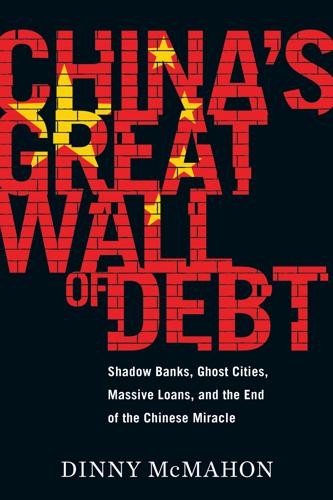
China's Great Wall of Debt: Shadow Banks, Ghost Cities, Massive Loans, and the End of the Chinese Miracle
by
Dinny McMahon
Published 13 Mar 2018
That fact is compounded by an opaque political system steeped in a culture of secrecy; a fast-changing economy that operates in ways radically different from our own; unreliable official data and statistics; and a unique and complex set of incentives that influence the economic decisions of individuals, companies, and the myriad branches of the state. I still feel like the proverbial blind man, and I’m well aware of the imperfection of this book. But when the subprime mortgage crisis hit the United States, people scrambled to make sense of how and why things had gone so wrong when they had seemed so good. As China’s economic woes deepen, people will be looking for similar answers, but they will be harder to find. After ten years during which I tried to make sense of the absurdities of an economy that seemed to keep succeeding in spite of itself, this is my attempt to explain why it’s now unraveling—and why this fact bodes so poorly for the rest of the world. 1 The Black Box HUANG KUN’S FACE no longer has the chubbiness evident in older photos of him.
…
And the shopping strip that had sprung up around where the farmers had been housed seemed longer and busier than before. But the actual numbers told another story. Tieling was losing people. At the end of 2012, Tieling’s combined cities were home to 441,000 people. Two years later, that number was down to 438,000. The city had planned to add 60,000 by 2010, and 200,000 by 2020. Our Subprime Mortgage Crisis The legacy of Tieling’s city-building experiment isn’t simply empty buildings. Regardless of how many people move in or leave, the sheer scale of investment that went into creating New Tieling is such that local authorities will likely be crippled by this financial burden for years to come.
…
According to researchers from the University of Pennsylvania and Peking University, in the decade between 2003 and 2013, China’s biggest, most affluent cities—first-tier cities like Beijing and Shanghai—experienced annual real-price growth of 13.1%; second-tier cities—which include most provincial capitals—grew by 10.5%; and the third tier by 7.9%. In comparison, in the lead-up to the subprime mortgage crisis, U.S. housing prices grew 7.1% on average annually in the four years prior to the market’s peak, in 2006. Consequently, real estate has been a magnet for anyone with money to invest. By 2010, so many state firms had become involved in developing real estate that the central government issued an edict telling them to divest their property arms and to focus more on their core businesses.
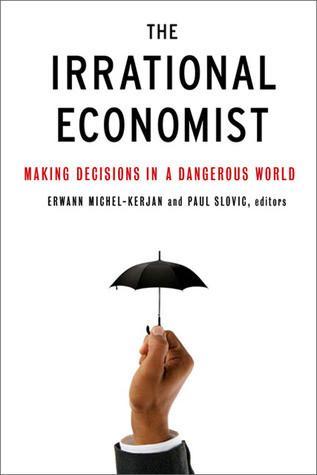
The Irrational Economist: Making Decisions in a Dangerous World
by
Erwann Michel-Kerjan
and
Paul Slovic
Published 5 Jan 2010
Thus, as we now move into a period of unprecedented fiscal challenge, it may be a particularly good time to take up disaster policy anew. 19 Catastrophe Insurance and Regulatory Reform After the Subprime Mortgage Crisis DWIGHT M. JAFFEE INTRODUCTION The U.S. federal government and individual states now actively participate in providing catastrophe insurance for all major natural disasters (earthquakes, hurricanes, and floods) as well as terrorism. At this time, the subprime mortgage crisis is also creating catastrophic effects in U.S. loan markets and associated goods markets that clearly require governmental intervention. The experience with catastrophe insurance markets is useful for re-regulating loan markets facing severe distress because originating risky loans with highly correlated loss patterns is tantamount to writing catastrophe insurance.
…
RE-REGULATING LOAN MARKETS IN THE AFTERMATH OF THE SUBPRIME CRISIS I now apply the lessons learned from the long U.S. experience with catastrophes and governmental catastrophe insurance to the issue of regulatory reform in the aftermath of the subprime mortgage crisis. It is important to recognize in this context that making or investing in risky loans with possibly highly correlated losses is tantamount to providing catastrophe insurance. Indeed, the subprime mortgage crisis has created a set of conditions that strongly echoes this country’s experience following the occurrence of major natural disasters and the 9/11 terrorist attacks:7 • Private insurance/loan markets have systematically failed
…
In addition, the available insurance is often not purchased and cost-effective mitigation investments are often ignored.1 As an example of a specific failure, recall that the World Trade Center was the focus of a serious terrorist attack eight years before the fateful attacks of September 11, 2001, and yet few precautions were instituted to stop a new attack or to mitigate its effects. In the same fashion, few precautions were taken to avoid or mitigate the effects of the subprime mortgage crisis. A clear warning sign was the bubble in U.S. housing prices, with home prices far exceeding any normal criterion of affordability for many of the borrowing households. Anticipation of further house price increases maintained the bubble for a while, but a crash was inevitable. Nevertheless, borrowers, lenders, investors, rating agencies, and government agencies either participated actively or watched with benign neglect as the bubble expanded.
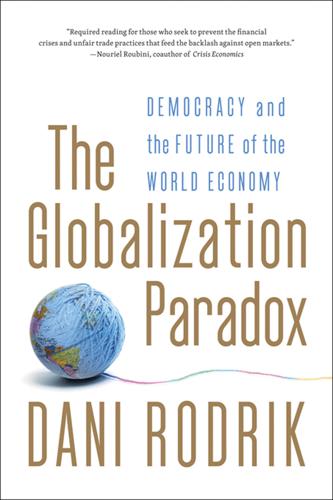
The Globalization Paradox: Democracy and the Future of the World Economy
by
Dani Rodrik
Published 23 Dec 2010
The better performing countries—such as China—were not the countries receiving capital inflows but the ones that were lending to rich nations. Those who relied on international finance tended to do poorly. Our article tried to explain why unleashing global finance had not delivered the goods for the developing nations. No sooner had we sent the article to the printer than the subprime mortgage crisis broke out and enveloped the United States. The housing bubble burst, prices of mortgage-backed assets collapsed, credit markets dried up, and within months Wall Street firms had committed collective suicide. The government had to step in, first in the United States and then in other advanced economies, with massive bailouts and takeovers of financial institutions.
…
The Asian financial crisis was followed by reams of analysis which in the end all boiled down to this: it is dangerous for a government to try to hold on to the value of its currency when financial capital is free to move in and out of a country. You could not have been an economist in good standing and not have known this, well before the Thai baht took its plunge in August 1997. The subprime mortgage crisis has also generated a large literature, and in view of its magnitude and momentous implications, surely much more will be written. But some of the key conclusions are not hard to foresee: markets are prone to bubbles, unregulated leverage creates systemic risk, lack of transparency undermines confidence, and early intervention is crucial when financial markets are going belly-up.
…
It will be quite some time before any policy maker can be persuaded that financial innovation is an overwhelming force for good, that financial markets are best policed through self-regulation, or that governments can expect to let large financial institutions pay for their own mistakes. We need a new narrative to shape the next stage of globalization. The more thoughtful that new narrative, the healthier our economies will be. Global finance is not the only area that has run out of convincing story lines. In July 2008, as the subprime mortgage crisis was brewing, global negotiations aimed at reducing barriers to international trade collapsed amid much acrimony and finger-pointing. These talks, organized under the auspices of the World Trade Organization (WTO) and dubbed the “Doha Round,” had been ongoing since 2001. For many anti-globalization groups, they had come to symbolize exploitation by multinational corporations of labor, poor farmers, and the environment.
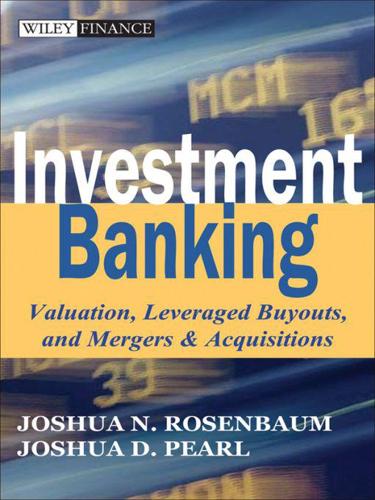
Investment Banking: Valuation, Leveraged Buyouts, and Mergers and Acquisitions
by
Joshua Rosenbaum
,
Joshua Pearl
and
Joseph R. Perella
Published 18 May 2009
Investment Banking: Valuation, Leveraged Buyouts, and Mergers & Acquisitions is a highly accessible and authoritative book written by investment bankers that explains how to perform the valuation work at the core of the financial world. This book fills a noticeable gap in contemporary finance literature, which tends to focus on theory rather than practical application. In the aftermath of the subprime mortgage crisis and ensuing credit crunch, the world of finance is returning to the fundamentals of valuation and critical due diligence for mergers & acquisitions (M&A), capital markets, and investment opportunities. This involves the use of more realistic assumptions governing approach to risk as well as a wide range of valuation drivers, such as expected financial performance, discount rates, multiples, leverage levels, and financing terms.
…
Subordinated includes senior and junior subordinated debt. Equity includes HoldCo debt/seller notes, preferred stock, common stock, and rolled equity. Other is cash and any other unclassified sources. However, beginning in the second half of 2007, credit market conditions deteriorated dramatically stemming from the subprime mortgage crisis. As shown in Exhibit 4.11, the average LBO leverage level decreased from 6.1x in 2007 to 5.0x in 2008. Correspondingly, the average LBO’s percentage of contributed equity increased from 31% to 39% during the same time period (see Exhibit 4.12). EXHIBIT 4.12 Average Sources of LBO Proceeds 1999 - 2008 Source: Standard & Poor’s Leveraged Commentary & Data Group Note: Contributed equity includes HoldCo debt/seller notes, preferred stock, and common stock.
…
See financial sponsors spreading comparable companies precedent transactions springing financial covenant standalone Standard & Poor’s (S&P) Standard & Poor’s Leveraged Commentary & Data Group Standard Industrial Classification (SIC) system standstill agreement stapled financing state law steady state stock-for-stock transaction stock options stock price. See share price stock sale transaction straight-line depreciation strategic alternatives strategic buyers strategic fit strike price. See exercise price structural protections structural subordination stub period subordination provisions subprime mortgage crisis sub-sector sum of the parts super-priority suppliers syndication synergies systematic risk T tangible assets tangible value target management targeted auction advantages and disadvantages tax deductibility tax expense projection of tax regime taxable event T-bills T-bonds teaser sample tender premium tender offer tenor.
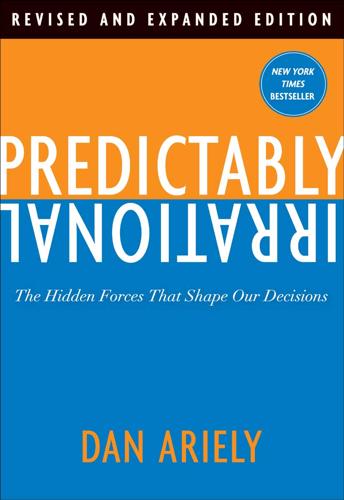
Predictably Irrational, Revised and Expanded Edition: The Hidden Forces That Shape Our Decisions
by
Dan Ariely
Published 19 Feb 2007
Why did they take my wonderful placebo away? Thoughts about the Subprime Mortgage Crisis and Its Consequences For a long time, economists have maintained that human behavior and the functioning of our institutions are best described by the rational economic model, which basically holds that man is self-interested, calculating, and able to perfectly weigh the costs and benefits in every decision in order to optimize the outcome. But in the wake of a number of financial crises, from the dot-com implosion of 2000 to the subprime mortgage crisis of 2008 and the financial meltdown that followed, we were rudely awakened to the reality that psychology and irrational behavior play a much larger role in the economy’s functioning than rational economists (and the rest of us) had been willing to admit.
…
Predictably Irrational Revised and Expanded Edition The Hidden Forces That Shape Our Decisions Dan Ariely To my mentors, colleagues, and students— who make research exciting Contents A Note to Readers Introduction How an Injury Led Me to Irrationality and to the Research Described Here Chapter 1 The Truth about Relativity Why Everything Is Relative—Even When It Shouldn’t Be Chapter 2 The Fallacy of Supply and Demand Why the Price of Pearls—and Everything Else—Is Up in the Air Chapter 3 The Cost of Zero Cost Why We Often Pay Too Much When We Pay Nothing Chapter 4 The Cost of Social Norms Why We Are Happy to Do Things, but Not When We Are Paid to Do Them Chapter 5 The Influence of Arousal Why Hot Is Much Hotter Than We Realize Chapter 6 The Problem of Procrastination and Self-Control Why We Can’t Make Ourselves Do What We Want to Do Chapter 7 The High Price of Ownership Why We Overvalue What We Have Chapter 8 Keeping Doors Open Why Options Distract Us from Our Main Objective Chapter 9 The Effect of Expectations Why the Mind Gets What It Expects Chapter 10 The Power of Price Why a 50-Cent Aspirin Can Do What a Penny Aspirin Can’t Chapter 11 The Context of Our Character, Part I Why We Are Dishonest, and What We Can Do about It Chapter 12 The Context of Our Character, Part II Why Dealing with Cash Makes Us More Honest Chapter 13 Beer and Free Lunches What Is Behavioral Economics, and Where Are the Free Lunches? Bonus Material Added for the Revised and Expanded Edition Reflections and Anecdotes about Some of the Chapters Thoughts about the Subprime Mortgage Crisis and Its Consequences Thanks List of Collaborators Notes Bibliography and Additional Readings Searchable Terms About the Author Credits Copyright About the Publisher A Note to Readers Dear readers, friends, and social science enthusiasts, Welcome to the revised and expanded edition of Predictably Irrational.
…
But if she’s like other people, Didi will use her maximum ability to pay as the starting point for figuring out what mortgage and house to get, and she’ll end up paying three thousand dollars a month for a much bigger, fancier home. She will not have any more flexibility, but she will be much more exposed to the housing market.” I don’t think Dave was very impressed with my arguments. But after the subprime mortgage crisis hit, I had the opportunity to look at some data on interest-only mortgages, and it did appear that instead of providing financial flexibility, all that they achieved was to stretch borrowing and put borrowers at higher risk in a fickle housing market. FROM MY PERSPECTIVE, one of the main failures of the mortgage market was that the bankers didn’t even consider the possibility that people cannot compute the right amount to borrow.
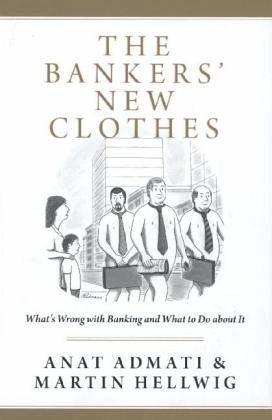
The Bankers' New Clothes: What's Wrong With Banking and What to Do About It
by
Anat Admati
and
Martin Hellwig
Published 15 Feb 2013
This caused many countries, including the United States, Finland, Japan, Norway, Sweden, and Switzerland, to have severe banking crises, all due to losses on real estate and business loans from the preceding boom.38 Boom-and-bust developments in real estate lending again were central to the U.S. subprime mortgage crisis in 2007, the Irish crisis of 2010, and the Spanish crisis of 2012. In the 1980s in Latin America and again since 2010 in Europe, banks have found that even governments can have problems paying their debts if they cannot print the money they owe. In Latin America in the 1980s, support for debtor countries from the IMF got most of the banks off the hook.
…
Policy Research Working Paper 5473. World Bank, Washington, DC. De Mooij, Ruud A. 2011. “Tax Biases to Debt Finance: Assessing the Problem, Finding Solutions.” IMF staff discussion note. International Monetary Fund, Washington, DC. May 3. Demyanyk, Yuliya, and Otto Van Hemert. 2009. “Understanding the Subprime Mortgage Crisis.” Review of Financial Studies 24 (6): 1848–1880. Dermine, Jean. 1990. European Banking in the 1990s. Oxford, England: Blackwell. Dewatripont, Mathias, and Jean Tirole. 1994. The Prudential Regulation of Banks. Cambridge, MA: MIT Press. ———. “Macroeconomic Shocks and Banking Regulation.”
…
See concentration Consumer Financial Protection Bureau, U.S., 249n13 contagion, 61–65; in asset price declines, 63–65, 257n16; in bank defaults, 62–63; in bank failures, 74–75, 78; in banking crises, 65; in bank runs, 52 (See also runs); capital regulation’s impact on, 95; deleveraging and, 64; in financial crisis of 2007-2009, 60–66; in home foreclosures and prices, 245n10; information contagion, 269n24; interconnectedness and, 61, 66, 161, 219; in LTCM crisis of 1998, 72, 258n20, 261n45; in money market fund runs, 62–63; simplest form of, 61–62; in solvency problems, 63; in subprime mortgage crisis, 60–61 contingent convertible bonds (co cos), 187–88; as alternative to equity, 187–88, 316n83; definition of, 187; problems with approach, 188, 316n81; types of triggers for, 316n80 contracts. See specific types convenient narratives, 209–14; liquidity in, 209–12, 330nn12–13, 330n18; reasons for success of, 213–14; solvency in, 211–12 Copeland, Adam, 238n46 core capital, 176, 315n79 Cornford, Francis, 3, 169, 171, 231n11, 303n10 corn subsidies, 198 corporate borrowing: in absence of guarantees, 140–42; alternatives to, 18, 27; in balance sheets, 27, 27f; and bankruptcy, 26, 140–41; costs of, 105, 140–42; creditor standards for, 30, 242n19; default risk in, 105; international differences in, 30, 234n26; limited liability for, 26; nonfinancial versus bank corporations, 7–8, 101, 140; problems caused by burden of, 34–35, 140–42; risk magnified in, 26–31; in taxes, 112, 139–40, 188, 226–27; variation in rates of, 30, 140 corporate equity, 27–30; cost of, 105–7; definition of, 241n12; financial markets as source of, 18, 27–29, 241nn14–16, 246n17, 249n14; increase in, and return on equity, 119; internal growth as source of, 29–30; of public corporations, 241n12; retained earnings as source of, 29, 173; risks of, 101; taxation of, 140, 188 corporate governance: culture of ROE in, 125–28, 284n29; incentives and, 277n13; in public companies, 241n10; regulation of, 127–28, 224, 227; shareholders and, 277n13, 305n24 corporate shareholders, 26–29, 105–7; ban on cash payouts to, 172–76, 182, 189, 223; compared to business owners, 105; conflicts of interest of, 126–27; dilution of, 28, 175, 306n29; dividends paid to (See dividends); governance issues and, 277n13, 305n24; impact of new shares on existing, 28, 175, 182, 241nn14–16, 246n17, 306n29; leverage of, 108; return on equity for (See return on equity); rights offering to, 175; of unlimited-liability banks, 30–31.
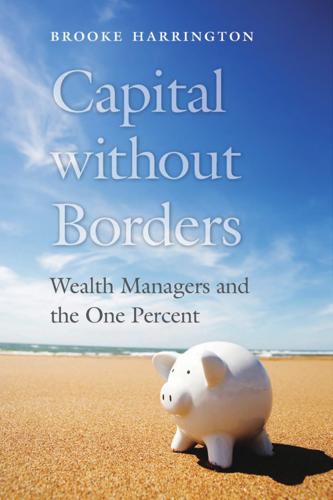
Capital Without Borders
by
Brooke Harrington
Published 11 Sep 2016
See also dynastic wealth; inheritance family foundations, 151 family offices, 72–73 Family Wealth: Keeping It in the Family (Hughes), 250–51 fiduciary responsibility: as absent in bankers, 63; duty of care, 45–46, 87; fiduciary capitalism, 272; gendering of fiduciary role, 64–65; ideology of moral leadership supplied by fiduciary role, 249–50; laws governing, 44–46, 315n38, 315n39; patriarchal authority of fiduciaries, 86; private fiduciaries, 252; spreads with expansion of British Empire, 253–54; structural expansion of fiduciary role, 250; in trusts, 173; of wealth managers, 23, 63, 67–68, 76, 79, 82–84 finance: complexity of international financial markets, 272; continuing crises in, 298; defined, 6; deregulation of, 126; dirty work of, 132–33; divorce financial analysis, 162, 331n101; each jurisdiction creates its own legal system for, 237; fiduciary responsibility absent in, 82; as global, 56–57, 60, 128, 253–59; lack of organization at international level, 235; little infrastructure needed for, 255; long-term relationships with clients in financial services, 320n1; payment and privilege in, 59–67; professional innovation in, 279; wealth management as at core of, 6. See also bankers; financial (subprime mortgage) crisis of 2008; offshore finance Financial Action Task Force, 158 financial (subprime mortgage) crisis of 2008: conflict over tax avoidance after, 239; Goldman Sachs in, 63; inequality of subsequent recovery, 201, 211–13; interest in 1 percent renewed by, 195; wealth management in, 19; the wealthy as able to buy when everyone else was selling, 211, 214; world financial crisis nearly destroyed by, 295 financialization, 126, 253, 283, 287, 288 flee clauses, 175, 176, 177 Forbes magazine: Forbes billionaire class, 126; Forbes 400, 195–96, 201, 213–14; on Pritzker family, 13 foundations, 177–81; beneficiaries on managing council, 179; control as characteristic of, 151–52; corporations compared with, 180, 186–87; in defining bounds of family, 277; downsides of, 180–81; in economic inequality, 275; family, 151; in financial architecture created by wealth managers, 6, 271; in Latin America, 178; legal status as persons, 179; modifying to increase their appeal, 185; in Panama, 148, 149, 185; perpetual, 176, 179, 187; privacy and, 152, 153, 180; Roman law origins of, 178; salaries of officers of, 152; for tax avoidance, 150–53; tax risks for, 178, 180, 186; transaction costs of, 180; trusts compared with, 152, 178–80, 186–87.
…
See also TEP (Trust and Estate Planning) certification Steve (Hong Kong–based wealth manager), 139, 257–58, 299–300 stewardship, 83 Stiglitz, Joseph, 230 stocks: British trustees granted power to invest in, 49; buying up after financial crisis of 2008, 211, 214; diversified portfolios, 211; full personal liability for losses to trust and investment in, 49; wealth managers had to become knowledgeable about, 288 subprime mortgage crisis. See financial (subprime mortgage) crisis of 2008 succession planning: for concentrating wealth within families, 215–17, 231; control of, 7; cultural barriers to, 117–18; elites understand, 97. See also inheritance Survey of Consumer Finances, 195 Switzerland: African and Russian wealth held in, 203; client data stolen from, 240; detachment from international treaties, 256; as global center of offshore finance, 106, 129; interviews for this study in, 32; loses its ability to protect assets, 142–43; Nigerian investment in, 259; percentage of offshore wealth held by, 130; Rybolovlev divorce case in, 163; seen as specializing in theft, 296 taboos, 98, 117–18, 120 Tasker, George, 54 tax avoidance: benefits accrue to embodied ancestral legacy, 215–16; Cayman Islands corporations for, 145; citizenship renunciations for, 248–49; colonies for, 254–55; in concentration of wealth, 194; as contentious public issue, 153; creative compliance and, 299, 301, 303; democracy threatened by, 220; economic impact of, 217–21; in economic inequality, 194, 207; exchange funds for, 206; for family businesses, 168, 171; in financial architecture, 7; as increasing, 299; lost revenues due to, 12, 18, 21, 219–20; medieval, 37, 39, 42, 43; moving assets for, 8; as multifaceted and global, 53; Muslim vaqf developed for, 112; no-tax jurisdictions, 128; offshore financial centers for, 125, 128, 133, 134, 135, 136, 174–75, 219; opinion letters for, 210; political instability and concern with, 141; seen as theft, 293; Seoul Declaration sanctions on, 12–13; special privileges of the rich in, 275; states attempt to crack down on, 239–41, 248–49; states relinquish their power to tax effectively, 238–39; STEP on, 225–30; strategies in countries with functional government and rule of law, 150–54; tax evasion distinguished from, 150; in trust-corporation configuration, 9; trusts for, 125, 128, 150–51, 153–54, 155, 173; wealth managers facilitate, 11, 12, 15, 24, 75, 76.
…
But capitalism, as Schumpeter observed, depends on change rather than stability.68 As early as the Enlightenment, recognition of the need for wealth to circulate freely in order for markets to develop created opposition to trusts, entail, and other “market-independent form[s] of allocation of capital.”69 With the growth of global commerce through the nineteenth century, philosophers such as John Stuart Mill noted that “the ‘dead hand’ of the past had hampered the growth of a free economy.”70 Such critiques continue into the present day with the movement by wealthy individuals such as Warren Buffett to ensure that inheritance taxation continues, so that at least some family wealth gets redistributed into the economy.71 Finally, while their intent may be conservative, the methods wealth managers have innovated to achieve stability in their clients’ fortunes can have a profoundly disruptive impact on markets. For example, many of the financial and legal tools they refined to protect clients’ assets also formed the organizational structure of the subprime mortgage crisis. This is particularly clear in the case of “special-purpose vehicles,” which are like the fireproof safes of offshore finance: asset-holding structures designed for the sole purpose of insulating their contents from risk. Put a corporate subsidiary into a special-purpose vehicle, and it is protected from bankruptcy, creditors, and litigants.
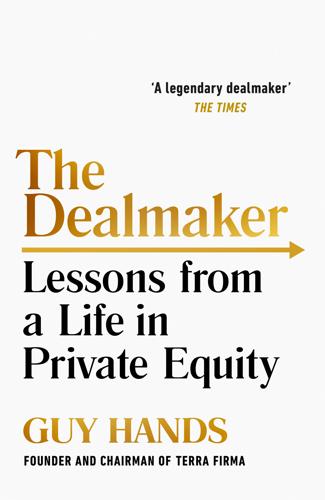
The Dealmaker: Lessons From a Life in Private Equity
by
Guy Hands
Published 4 Nov 2021
A continent away, however, something was happening that would have rung alarm bells had any of us realised what it presaged. In April, New Century – a US real estate investment trust specialising in securitisation – had filed for Chapter 11 bankruptcy protection. It was the first collapse in what would become the subprime mortgage crisis and would eventually lead to the great credit crash of 2008. As the deadline for the bid approached, I decided to seek advice from Michael Klein. I had some concerns about the profit warnings issued by EMI in early 2007 and wanted to know whether Citi still believed EMI to be a good investment.
…
While my preference was to reach some sort of compromise with Citi to allow the company to continue to operate under our control, I could only conclude that the IRM’s ambition was to take EMI from me as soon as it could. Meanwhile, Citi were faring badly. Chuck Prince left in November as the bank announced $18 billion in write-downs – one of the biggest casualties of the subprime mortgage crisis. There was every indication that 2008 would be worse. By now banks that had gone under included Lehman Brothers and Washington Mutual. Citi would require the biggest bailout of any American bank as it teetered on the brink. US taxpayers pumped $45 billion into the business, most of which converted into a 34 per cent stake.
…
A., 17 roast potatoes, 45, 295 Rogers, Kenny, 115 Rolling Stones, 172, 175, 205 Rolls-Royce, xi, xv, 7 Roppongi, Tokyo, 136 ROSCOs, 108 Royal Bank of Scotland, 110, 268, 269, 292 Royal Television Society, 198 RTR, 276 Rubin, Robert ‘Bob’, 84 Rudd, Nigel, 166 Rudebox (Williams), 197, 211 Ruegg, Camille, 9 Ruohonen, Marina, 313 Russia, xii–xiii, 125, 158–60 Sade, 169 Sainsbury’s, 266, 284 Sakamaki, Hideo, 124 Saks Fifth Avenue, 81–3 Salisbury, Southern Rhodesia, 4, 5 Samuelson, Paul, 34 ‘Santa Claus Is Comin’ to Town’ (Coots and Gillespie), 181 Savoy Grill, London, 162 Scenario, Contingency and Planning Committee, 308 Sceti, Elio Leoni, 223 Schroders, 172 Schwarzman, Stephen, 163 ScottishPower, 144 securitisation EMI, 169–70, 176, 178–9, 244 Goldman Sachs, 80–81, 83–6, 98, 104, 113, 120, 240, 313 Nomura, 91–2, 104, 109, 110, 125, 129, 313 subprime mortgage crisis (2007–10), 181 SemGroup, 215 Seoul, South Korea, 275 September 11 attacks (2001), 126, 139 Serbia, 196 Sevenoaks, Kent, 26–33, 35, 38, 47, 87, 139, 278 Sex Pistols, xi Shaka Zulu, 17–18, 203 Sheinberg, Eric, 67, 117 Sheppard, Allen, Baron, 100–101, 121 Shibata, Takumi, 93, 96, 138 Shinjuku, Tokyo, 136 Shoreditch, London, 105 Singapore, 76, 222 Singapore Airlines, 156 Sleeper (1973 film), 48 Slough, Judith, 47 ‘Smells Like Teen Spirit’ (Nirvana), 181 Smith, Ian, 4 Soames, Rupert, 53 socialism, 67 sokaiya, 124 solar power, 276 ‘Something Better Change’ (The Stranglers), 63 ‘Somewhere Over the Rainbow’ (Garland), 181 Sony, 131, 172, 231–2 South Africa, 3–4, 5, 6, 8, 17, 25, 254 South Korea, 275 South Sea Bubble (1720), 16 Southern Cross, 268–9 Southern Rhodesia (1923–65), 4 Soviet Union (1922–91), 48 Spain, 9, 249 Spitzer, Eliot, 241 Spotify, 203 Spring Inn, 107 Springer, Gerald ‘Jerry’, 321 Stagecoach, 144 Standard Chartered Bank, 306 Starr, Ringo, 208 Stepstone, 275 Steward, Martin, 198 Stewart, Quentin, 190, 199 Stokes, Iain, 308 Stone, Joss, 207 ‘Story, the’, 3 Stranglers, The, 43, 63 stress, 296–8, 306 strikes, 50 stroke (2018), 289–92, 317 Style Council, 169 subprime mortgage crisis (2007–10), 181, 186, 188, 193–4, 215 ‘Summertime Blues’ (Cochran), 21 Super Bowl, 207 Support Capital, 283 sushi, 98, 111, 127–8 Sweden, 264–6 Sydney, New South Wales, 189–90 synaesthesia, 121 Tabuchi, Setsuya, 92 Taiwan, 275 Talika, 309, 310–11 Tank & Rast, 151–4, 264–5 tax, 69–70, 137, 138, 225, 247 technology 121 telex machines, 68, 69, 70 Tencent, 232 Terra Firma, xiii, 112, 120, 143–90, 193–228, 231–58, 262–85, 295–319 Alliance Boots bid, 164–6, 175, 176, 180, 183 Analyst Programme, 308 Annington Homes, 278, 279–81, 300 AWAS, 154–60, 276, 278 Citigroup litigation (2009–16), 232–58 Consolidated Pastoral Company (CPC), 276, 299 Covid-19 pandemic (2019–21), 305–19 EMI, 166, 169–90, 193–212, 216–28, 231–2, 267–8, 274, 284, 298 EverPower, 276, 285 Food Folk, 283, 300, 309 Four Seasons Health Care, 268–70, 276, 281, 284, 299 Fund I, 149 Fund II, 149–50, 154, 160, 172 Fund III, 161, 172, 267, 268, 274, 275, 276, 283, 284, 298 Fund VI, 273–7, 283 fundraising, 145–50 Géczy appointment (2016), 266–7 General Partners, 190, 233, 234, 269–70, 308 hiring, 150–51 InterContinental bid, 182, 186 Investment Advisory Committee (IAC), 179–80 Man Group bid, 182, 186 McDonald’s, 264–6, 278, 283, 289, 290, 309–10 Naga, 283, 310–11 no regret decisions, 307–8 Nomura and, 225 Odeon Cinemas, 278 Parmaco, 296, 300, 311–13 Project Ford, 273 psychometric/aptitude tests, 313 RTR, 276 Scenario, Contingency and Planning Committee, 308 Support Capital, 283 Talika, 309, 310–11 Tank & Rast, 151–4 tax and, 225–6, 247 Thames Water bid, 175, 176 Welcome Hotels, 283, 300, 302, 305 Wyevale Garden Centres, 270–73, 276, 281–2, 284–5, 299 Tesco, 173, 266 Thames Water, 175, 176 Thatcher, Margaret, 50–53 ‘The Fool on the Hill’ (Beatles, The), 1 Thorley, Giles, 106 Three Musketeers, 157–8 Three-Day Week (1974), 51 Till Death Us Do Part (TV series), 50 Time Out, 36 Toilers of the Sea, The (Hugo), 325 Tokyo, Japan, 72–3, 84, 127, 136, 139, 166, 189, 275 Tombstones, 81 Toronto, Ontario, 146–8 Tory Reform Group, 54, 59 Toys ‘R’ Us, 273 transient ischaemic attack, 291 travel and entertainment (T&E), 73, 97 Treasury, 186 tree planting, 225, 263 triple play, 174 Troubled Asset Relief Program, 222 ‘truck driver’ nickname, 68 Trump, Donald, 285 Tsukiji fish market, Tokyo, 166 Tuckman, Bruce, 95–6, 108, 113, 124 Tumbling Dice, 175 tuna, 166 Tunbridge Wells, Kent, 33, 38 ‘Turning Japanese’ (The Vapors), 89 Tuscany, Italy, 262 type 2 diabetes, 32, 146, 255, 257, 291–2, 294, 296, 306 Ultrastar, 169 ‘Under Toad’, 19, 36, 254, 325 Unique Pub Company, 123 United Airlines, 79 United Kingdom Beast from the East (2018), 284 Big Bang (1986), 77 Brexit (2016–20), 319 climate, 282 Financial Conduct Authority (FCA), 274 general election (1979), 50–53 music industry, 172 taxation in, 69–70, 137, 138, 225–6 United States litigation in, 235, 241 presidential election (2000), 248 Proposition 8 (2008), 248 SEC v.
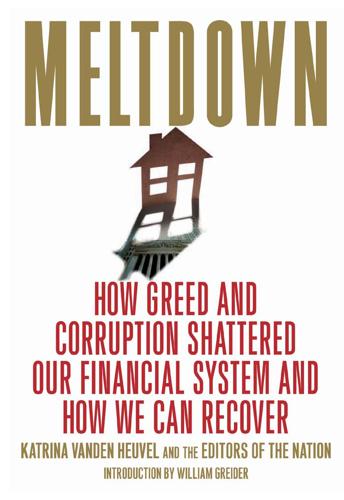
Meltdown: How Greed and Corruption Shattered Our Financial System and How We Can Recover
by
Katrina Vanden Heuvel
and
William Greider
Published 9 Jan 2009
And while they consider bailing out financial institutions suffering from the subprime scandal, or homeowners fighting foreclosure, they should consider taking the preventive measure of funding civil legal aid programs to fight predatory lenders. Youth Surviving Subprime A L L I S O N K I L K E N N Y March 17, 2008 When i heard about the subprime mortgage crisis,it sounded eerily similar to the shady credit card lending practices found on most college campuses. I imagined yet another financial bubble floating down from Wall Street, filled with the gelatinous slime of adjustable interest rates; one that would inevitably pop somewhere over Poor People, U.S.A., blanketing the unsuspecting citizens below.
…
The government’s big, shiny solution comes in the form of “Project Lifeline,” a program that asks the mortgage lenders to (pretty, pretty please) wait 30 days to foreclose on houses. Really? This is the best we can do? In a great country like America, no con artist, even one who happens to be a banker, should have the right to trick citizens into a scheme like predatory lending. Thirty days’ notice isn’t fair. In the case of the subprime mortgage crisis, the government must stop protecting the banks and Wall Street and start protecting American citizens. Is This the Big One? J E F F FA U X April 14, 2008 For more than a decade,we Americans have been living on an economic San Andreas fault—a foundation of frac-turing competitiveness covered by unsustainable consumer spending with money borrowed from foreigners.
…
This page intentionally left blank Part Four The Road to Recovery ĭ ĭ ĭ This page intentionally left blank How to Fix Our Broken Economy J E F F R E Y M A D R I C K October 22, 2007 The american economyis broken.And it’s not likely that the Democrats, even if they do as well as expected in the 2008 elections, are going to fix it. Of course, there’s no chance that the Republicans will either, wedded as they are to endless tax cuts. The experience of the past decade makes clear the need for a sharply new way of thinking about the economy. The subprime mortgage crisis, although dangerous, is not the issue. It’s not even the rising prospect of recession and lost jobs. The real problem is that even when the financial times have seemed to be healthy, the economy was not. Since the 2001 recession gross domestic product is up, profits are at record levels and unemployment is low—but wages, capital investment and, now, productivity are weak.
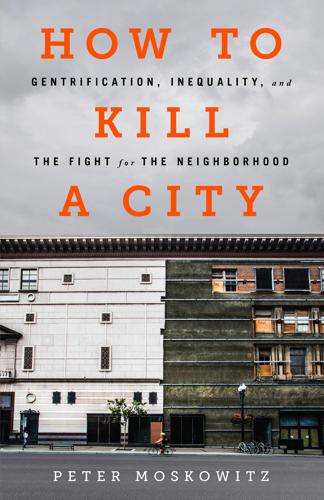
How to Kill a City: The Real Story of Gentrification
by
Peter Moskowitz
Published 7 Mar 2017
And because Detroit charges some of the highest household water rates in the country (about $70 a month on average, compared to the national average of $40), nearly a quarter of the population is behind on their water bill. In 2014, the city began shutting off water to those residents, leaving thousands without access to fresh water. Experts from the United Nations called the move a violation of human rights. Detroit, like everywhere else in America, was also hit by the subprime mortgage crisis in the 2000s, only much, much harder. Sixty-eight percent of all mortgages to Detroiters in 2005 were subprime, compared with 24 percent nationwide. Gilbert’s Quicken Loans made some of those loans; others were made by the same banks that demanded Detroit pay them back by slashing city employee pensions during the city’s bankruptcy.
…
See also New York City author’s experience of, 3, 164 challenges to gentrification in, 186–187, 206–208 deindustrialization and, 38, 189 demographics of, 198 evictions in, 183 gentrification of, 4, 8, 31–32, 36, 68, 174, 176–180, 198 LGBT community and, 33 redevelopment of, 174, 180 rezoning and, 179 Brooklyn Anti-Gentrification Network, 206–207 Brooks, David, 26, 66–67 Brownstone Revival Committee, 31–32 Bryant, Disa, 102 Bush, Barbara, 66 Bushwick (Brooklyn), 182–184, 194, 215 business improvement districts (BID), 171–172 Bywater (New Orleans), 6, 16, 43, 45, 46–47, 210 Campanella, Richard, 16, 28 Campos, David, 130 Capitol Park (Detroit), 73–74 Carrera, Miguel, 134 Carrollton (New Orleans), 16 Castro (San Francisco), 128, 159 Central Business District (New Orleans), 16 Central City (New Orleans), 16, 20 charter schools, 27, 49–52 Chelsea (New York), 169–170, 194 Chicago, IL, 42 Chinatown (New York), 176 Chinatown (San Francisco), 131 Christopher Street (New York), 1–2, 166–167 Citizens Committee for Modern Zoning, 189–190 city-as-growth-machine philosophy, 137–141, 188, 192, 203–204 Clay, Phillip, 6, 32–35 Cleveland, OH, 33 Clinton, Hillary, 214 Cobo, Albert, 100–101, 110, 115 Cobo Center (Detroit), 100–101 Columbus, OH, 42 Combs, Sandi, 103–104 community board meetings, 198–200, 211 Concord, CA, 148–150 Conquistadors (business group), 85 Cooley, Phil, 85–87, 93 Corktown (Detroit), 7, 85, 93 Cornwell, Robert, 187 Create: Detroit conference, 78–79 “creative class,” 79–82, 93, 96 Cullen, Matt, 78 Cuomo, Andrew, 168 Dearborn, MI, 109 de-gentrification, 217–218 de-industrialization in New York, 37–38, 189–191, 195 Delany, Samuel R., 210, 215–216 Delano, Frederick, 188 Denton, Nancy, 106–107 Department of Transportation, 42 Detroit bankruptcy of, 7, 77, 83, 87, 96, 99, 192 business startups in, 73–74, 84–85 as “closed loop,” 83, 86 “creative class” and, 79–82, 93 credit ratings of, 42 decline of manufacturing in, 80, 115 demographics of, 78–79, 93, 95, 99, 102 evictions in, 76, 91–92, 102–104, 234 gentrification in, 7, 33, 40, 68, 73–74, 83, 86, 89–90, 91, 95–96, 116 map of, 70 “new Detroit,” 74–77, 83–87, 96, 98 poverty in, 99–100, 118–119 private security and, 94 publicly owned land in, 211 public subsidies to private business in, 96–98 public transportation in, 83, 86–87, 88, 94, 96, 118 racial segregation in housing, 95, 101, 107–110, 115 redevelopment of downtown areas, 7, 72–76, 78, 81, 93–94, 97, 118 rent gap theory and, 77–78 shrinking of municipal boundaries, 83 subprime mortgage crisis in, 99–102 tax revenue and, 41, 92–93, 100–102 Detroit Creative Corridor (DC3), 84 Detroit Eviction Defense, 91, 102–103 Detroit Property Exchange, 103 Detroit Riverfront Conservancy, 86, 98 Dimon, Jamie, 116 dissimilarity index, 107 Dolores Park (San Francisco), 127 East New York, NY, 179, 190, 200, 212–213 Ellis Act, 130–131 Empire Mayonnaise, 36 Engels, Friedrich, 140, 154 Essex Crossing, 176 evictions, 4, 143.
…
Thomas neighborhood/housing projects (New Orleans), 18–20, 29–30, 52–54, 63 San Francisco, CA cost of housing in, 127, 132–133, 151, 214 demographics of, 126, 131, 151 displacement of poorer residents, 8, 126, 129, 131–133, 151 evictions in, 130–132, 134, 149 gentrification in, 8, 40, 68, 131, 137 LGBT community in, 33, 128 loss of culture in, 159 map of, 122 public housing in, 143 racial segregation in, 107 tax revenue and, 41 tech industry and, 8, 133–134, 137–138, 205 tech workers and, 127–128, 133 use vs. exchange values in, 143 Schulman, Sarah, 136, 168, 177, 209, 216–218 Section 8 housing vouchers, 28, 76, 144–145, 151 Sharkey, Patrick, 115–116 Shelnutt, Finis, 53 Sherman, Rachel, 215 “shock doctrine capitalism,” 26, 191 Sigur, Dennis, 59–60 single-room occupancy (SRO) housing, 135 Smith, Lula, 102 Smith, Neil, 9, 34, 36, 37–40, 105–106 SoHo (New York), 172–173, 190–191 Solnit, Rebecca, 130, 133, 141 South Bronx, NY, 193–194 Spitzer, Eliot, 208 Starr, Roger, 193 St. Louis, 113–114 St. Marks Place (New York), 172 Stockholm, Sweden, 142–143 subprime mortgage crisis, 99–102 suburbs, 8, 37, 147, 150–159, 205 activism and, 151 anti-communism and, 154–155 Concord, CA, 148–150 exclusion of minorities from, 95, 109, 114–115, 154–155 exodus of poor people to, 8, 102, 126, 131, 143, 145, 147, 150–153 gentrification and, 117, 147, 151 government subsidization of, 39, 113–115, 117, 157–158 highway system and, 157–158 history of, 153–157 home ownership and, 153–154 Levittown, 154 manufacturing in, 115 movement of gentrifiers from, 22, 33, 35–37, 74, 88, 158–159, 209 profit potential of, 37, 39, 105, 147 public transportation and, 150, 152, 154, 159 selling of suburban culture, 155–157 Talbot, Joe, 125–129, 163 tax incentives, 158, 207 in Detroit, 88, 94, 97, 117 gentrification and, 6, 23 in New Orleans, 60, 62 in New York, 168, 173, 205 in San Francisco, 41, 128, 133–134, 137–138 tax rates, 100, 213 television, 156–157 tenants’ activism, 53–54, 182–187, 215 Thomas, Oliver, 53 Tompkins Square Park (New York), 175–176 Tremé (New Orleans), 16, 47 Tugwell, Rexford, 153 Turner, Nat, 28 unions.
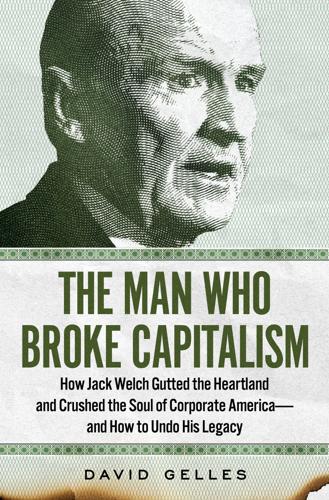
The Man Who Broke Capitalism: How Jack Welch Gutted the Heartland and Crushed the Soul of Corporate America—and How to Undo His Legacy
by
David Gelles
Published 30 May 2022
Under GE’s ownership, WMC became one of the biggest subprime lenders in the country over the next two years, originating about $65 billion in loans to tens of thousands of unqualified homebuyers. And by 2007, all those bad bets were catching up with the economy. Borrowers were defaulting, triggering a massive subprime mortgage crisis and leaving GE—a company most people still thought of as the reliable producer of refrigerators and light bulbs—dangerously exposed. That summer, WMC reported a $1 billion loss. GE scrambled to stanch the bleeding, winding down positions, firing most of the staff, and agreeing to sell WMC for a steep discount.
…
Thanks to a new multiyear contract and what the board called a “Leadership Performance Share Award,” he was in line to receive GE stock that could be worth as much as $233 million. As GE struggled to survive the pandemic, it was also forced to confront unsavory episodes from its past. In 2019, GE finally agreed to settle with the Justice Department for its dealings during the subprime mortgage crisis and pay a fine of $1.5 billion. “We are pleased to put this matter behind us,” the company said in a statement. A decade had passed, and the bad loans issued by WMC, which were then bundled into mortgage-backed securities that poisoned the entire financial system, were still haunting the company.
…
Boone, 57 Pierson, Ed, 156 Pigou, Arthur Cecil, 167–68 Pizzagate, 160 Plank, Kevin, 182 Polaris, 77, 84–85, 107, 116 Polman, Paul, 139–40, 203–7, 211, 217, 220 Powell, Lewis, 36–37, 39 private equity firms: dealmaking by, 2, 51, 54, 57, 70, 105, 110–11, 142, 175–82, 185, 213–14 stakeholder capitalism and, 213–14 Procter & Gamble, 102, 204 profit maximization, see shareholder capitalism Pruitt, Scott, 198–99 public benefit corporations, 212–13 QAnon, 160 Qatar Airways, 130 Rather, Dan, 131 RCA: GE acquisition, 51–54, 56, 57, 95, 152, 175, 176 GE sell-off of, 51–52, 152 RCA Records, 51 Reagan, Ronald, 7, 15–16, 24, 38–39, 47, 51, 65, 95, 196 Reaganomics, 15–16, 93 Real-Life MBA, The (Welch and Welch), 131 Regan, Donald, 39 REI, 215–16 Republican Party, 12, 156–60, 196–200 Restaurant Brands International, 179 Reuters, JW as contributor, 11, 131 Ries, Eric, 139 RJR Nabisco, 57, 70 Robertson, Pat, 134 Rocheleau, Dennis, 44, 56 Rockefeller, John D., 184 Rogers, Tom, 60, 62 Rohatyn, Felix, 51, 95 Roker, Al, 135 Rose, Charlie, 131 Rubbermaid, 77 SABMiller, 178 Sanchez, Lauren, 174 Sanders, Bernie, 162–63 Sarbanes-Oxley Act (2002), 126 Saudi Aramco, 135 Saudi Basic Industries, 137 scandals inside GE, 92–93 Hudson River PCB pollution, 93, 139, 168 Justice Department subprime mortgage investigation, 165, 225 JW divorce and remarriage, 117–20, 174 Kidder Peabody trading schemes, 54–55 pension fund shortfall, 162 SEC accounting fraud suits and settlements, 126, 147–48, 225 SEC long-term-care shortfall investigation and settlement, 164–65 Schrager, James, 107 Schulman, Dan, 207–11, 220 Schwab, Klaus, 211–12 Scott, MacKenzie, 174 Scott Paper, 71 Seamless, 170 Sears, 165 Securities Act of 1933, 65 Security Capital Group, 137 September 11 terrorist attacks (2001), 7, 82, 113–15, 117, 136–37, 138, 228 Seventh Generation, 212 Shad, John, 39 shareholder capitalism: activism for, 149–52 broad acceptance of, 93–95 Business Roundtable and, 37, 93, 214, 223–24 Covid-19 pandemic and, 221–26 critiques of, 70, 72–73, 84–85, 92–97 Friedman doctrine and, 3–4, 6–7, 35–40, 93–94, 229 GE as the most valuable company on earth, 3, 4–8, 20, 34, 50–51, 58, 68, 79, 90, 113, 137, 162, 195, 226 Golden Age of Capitalism vs., 222, 229 impact in corporate America, 8–13, 175–85, 229 JW denunciation of, 151–52 in JW vision for GE, 2–3, 4–8, 20, 33–35, 52, 68, 151–52 stakeholder capitalism vs., 36, 37, 151–52, 203–20, 231 Welchism and, 8–9, see also Welchism Sharer, Kevin, 106 Sheffer, Gary, 39–40 Siegel, Marty, 54–55 60 Minutes (CBS TV program), 42, 131 Six Sigma, 101, 112–13, 127 Skilling, Jeffrey, 124 Sloan, Alfred, 25 Smith, Greg, 190 Smith, Kyle, 89 Sonnenfeld, Jeffrey, 164 Sorscher, Stan, 89 Southwest Airlines, 190 S&P Dow Jones Indices, 165 Spencer Stuart, 78 Spitzer, Eliot, 109–10, 125–26 Sprint, 169 SPX, 77, 105 stack ranking: Amazon and, 171–74 at Ford, 171 at Microsoft, 171 by 3G Capital, 179 at 3M, 112, 171 Vitality Curve at GE, 4, 44–45, 96–97, 152, 171, 172, 174 at WeWork, 171 stagflation, 18, 25, 33 stakeholder capitalism, 203–20, 231 activism and, 149–52 B Corp movement / public benefit corporations in, 212–13 at BlackRock, 213–14 Business Roundtable and, 26, 214, 222–24 at Chrysler, 216 at Delta Air Lines, 215 employee board representation, 216–17 employee compensation, 207–11, 215–16, 220 executive compensation in, 217–18, 219–20 GE as once-model corporate citizen, 4, 16, 20, 21–26, 42–43, 74, 165 long-term view in, 217–18 minimum wage and, 93, 183, 209, 215, 218, 223 nature of, 12–13 need for, 12–13 at PayPal, 207–11, 215, 220 at REI, 215–16 shareholder capitalism vs., 36, 37, 151–52, 203–20, 231 strengthening antitrust policies, 219 sustainability and good governance in, 205–7 taxation in, 23, 218–19 at Unilever, 203–7, 211, 217, 220 upskilling workers, 216 World Economic Forum and, 211–12 see also Golden Age of Capitalism Stanley, Frederick T., 80 Stanley Works, 77, 83–84, 110 Starbucks, 170 Stephanopoulos, George, 157 Stephenson, Randall, 175 Stiglitz, Joseph, 132 stock buybacks, see financialization (generally); financialization at GE stock market performance, see shareholder capitalism Stone, Roger, 196 Stonecipher, Harry, 87–90, 127, 128–29, 187, 191, 194 Stumo, Michael, 194 Stumo, Samya, 194 subprime mortgage crisis, 8, 137–38, 141–45, 148–49, 150, 165, 225 Success magazine, 91, 132 Summers, Larry, 93–94 Sunbeam Products, 71–72 Sundstrand, 87 Swope, Gerard, 22–23, 43 Symantec, 77, 105–6 Taco Bell, 170 TaskRabbit, 170 taxation: “active financing” exception, 62–63 corporate headquarters in Bermuda, 81–82 decline in U.S. corporate taxes, 63 in GE dealmaking, 51, 61, 62–63 in stakeholder capitalism, 23, 218–19 tax breaks for corporate expansion / relocations, 88–89, 173, 219 tax reduction efforts, 10, 63, 81–82, 88–89, 162, 185, 200–201 Trump and, 200–201 terrorist attacks (September 11, 2001), 7, 82, 113–15, 117, 136–37, 138, 228 Tester, Jon, 190 30 Rock (NBC TV program), 139–40 Thomson, 52, 82–84 3G Capital, 177–82, 206–7 3M, 9, 77, 107, 111–13, 127, 171 Tichy, Noel, 77 Tiller, Tom, 84–85, 107, 116 Time Warner, 175–76 Tim Hortons, 179 TiVo, 60, 62, 77 Today (NBC TV program), 117, 135, 195 Todd, Chuck, 160 “total war,” 34 Trani, John, 83–84, 110 Trump, Donald: The Apprentice (NBC TV program), 121, 134–35, 195 business advisory councils, 199–200 Charlottesville, Virginia white nationalist violence (2017), 199–200 conspiracy theories, 158, 160 JW and, 12, 59, 90–91, 121, 134–35, 158, 194–201, 221 presidency, 12, 166, 169, 188, 197–200, 214 Trump International Hotel and Tower, 7, 59, 119, 121, 195 Tungsram, 83 Tyco International, 124–25 Uber, 170, 226 Under Armour, 182 Unilever, 139–40, 203–7, 211, 217, 220 unions: at Boeing, 88, 89, 128–30 at Chrysler, 216 decline of, 46–47, 49–50 employee compensation and, 46–47, 49 JW opposition to, 11, 46–47, 132 United Auto Workers, 216 United Financial Corporation of California, 66–67 U.S.
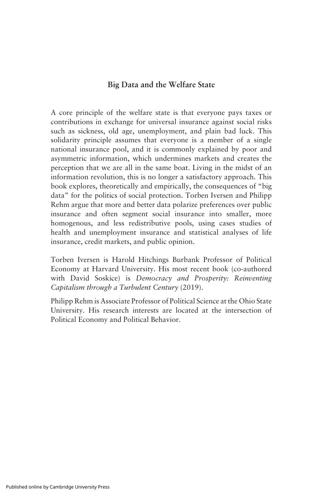
Big Data and the Welfare State: How the Information Revolution Threatens Social Solidarity
by
Torben Iversen
and
Philipp Rehm
Published 18 May 2022
Moreover, the GSEs tightened the underwriting guidelines for conforming mortgages that lenders had to adhere to8 and increased their quality controls in various ways. These changes were rolled out starting in early 2008, and the beginning of that year therefore serves as a break after which lenders had strong incentives to use more information to accurately assess mortgage applications. From the perspective of our theoretical framework, the subprime mortgage crisis is a discontinuity, at which the effort lenders expend and the amount of information they use to assess mortgage quality sharply increased. Again, the trigger for lenders to acquire more information was regulatory reforms, put-backs in particular, that raised the costs of not accurately identifying default risks.
…
Moreover, the GSEs tightened the underwriting guidelines for conforming mortgages that lenders had to adhere to8 and increased their quality controls in various ways. These changes were rolled out starting in early 2008, and the beginning of that year therefore serves as a break after which lenders had strong incentives to use more information to accurately assess mortgage applications. From the perspective of our theoretical framework, the subprime mortgage crisis is a discontinuity, at which the effort lenders expend and the amount of information they use to assess mortgage quality sharply increased. Again, the trigger for lenders to acquire more information was regulatory reforms, put-backs in particular, that raised the costs of not accurately identifying default risks.
…
Moreover, the GSEs tightened the underwriting guidelines for conforming mortgages that lenders had to adhere to8 and increased their quality controls in various ways. These changes were rolled out starting in early 2008, and the beginning of that year therefore serves as a break after which lenders had strong incentives to use more information to accurately assess mortgage applications. From the perspective of our theoretical framework, the subprime mortgage crisis is a discontinuity, at which the effort lenders expend and the amount of information they use to assess mortgage quality sharply increased. Again, the trigger for lenders to acquire more information was regulatory reforms, put-backs in particular, that raised the costs of not accurately identifying default risks.
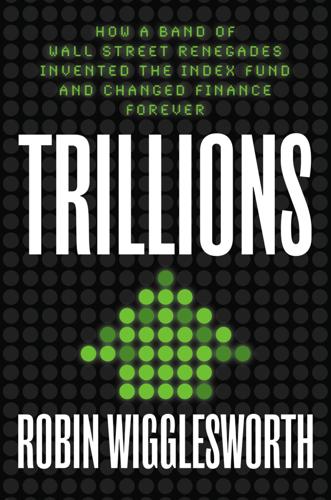
Trillions: How a Band of Wall Street Renegades Invented the Index Fund and Changed Finance Forever
by
Robin Wigglesworth
Published 11 Oct 2021
“So you have a huge group of people making—I put the estimate as $140 billion a year—that, in aggregate, are and can only accomplish what somebody can do in ten minutes a year by themselves.” Seides was somewhat sympathetic to Buffett’s point that many professional money managers in practice do a poor job, but the proposed bet just looked dumb to him. As CNBC was trumpeting in his office that summer morning, the subprime mortgage crisis had just begun to rumble, and Seides thought that things would get worse before they got better. The hedge fund industry’s freewheeling buccaneers looked like they would be far more adept at navigating the coming storm. After all, hedge funds can profit from markets moving both up and down, and invest in far more than just the S&P 500 index of US stocks that Buffett had offered up to fight in his corner.
…
It was a startling success story that attracted envy across Wall Street—nowhere more so than at an ambitious, gung-ho New York investment group called BlackRock. Chapter 13 LARRY’S GAMBIT ON APRIL 16, 2009, ROB KAPITO went to the newly built Yankee Stadium, where the pride of New York was taking on the Cleveland Indians. The economy was in shambles, after the US subprime mortgage crisis triggered a near-fatal heart attack for the global financial system, and many Wall Streeters were desperate for any fleeting distractions. But the balding former bond trader was not there to watch a game of baseball. Kapito was on a secret mission that would not only transform the fortunes of his employer, BlackRock, but change the face of the financial industry.
…
See SampP 500 Stanford University, 68, 185, 187, 188 Starbucks, 238 State Farm Insurance, 145 State Street, 122, 190, 234, 283 ETFs, 175–76, 200–201, 246, 256, 263–64 “Giant Three” scenario, 297–99 SPDRs, 240, 267 WFNIA and, 191 State Street Research (SSR), 216 Stiglitz, Joseph, 28, 280 stochastic movements, 25 stock market crash of 1974, 75, 82, 84 Stocks, Bonds, Bills, and Inflation (Ibbotson), 64, 144 stock splits, 30, 146 Stoneman Douglas High School shooting, 285–87 Stonk meme of 2021, 51 Stulz, René, 254 subprime mortgage crisis, 3, 203, 220–21 Sushko, Vladyslav, 260 sustainability-focused ETFs, 291–92 Swensen, David, 2 Tanger Factory Outlet Centers, 263–64 Taraporevala, Cyrus, 283 Tax Cuts and Jobs Act of 2017, 246 Taylor, Martin, 192 Tecu, Isabel, 295 Tesla, 251–52, 254 thematic ETFs, 241–42, 246 Theory of Investment Value, The (Williams), 40 Theory of Speculation (Bachelier), 21–25, 48 Thiel, Peter, 266 Thiel Macro, 266 Thompson, Hunter S., 56 Thorndike, Doran, Paine & Lewis (TDP&L), 94–102 Thorndike, Nicholas, 94–96, 102, 116–17, 118, 131, 133 three-factor model, 155–56, 159–60 Timken Company, 150n Tint, Lawrence, 189 Titman, Sheridan, 154 Tobin, James, 28 Top Glove, 238 Toronto Stock Exchange (TSE), 179 Treynor, Jack, 45, 70 Trillions (podcast), 17 T.
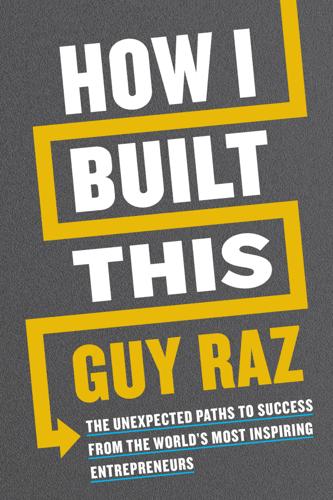
How I Built This: The Unexpected Paths to Success From the World's Most Inspiring Entrepreneurs
by
Guy Raz
Published 14 Sep 2020
In many ways, you could argue that they helped finance the building of America into the strongest, wealthiest nation the world has ever known, that there was a real purpose behind the services they offered. During the real estate bubble of the early 2000s, however, both firms struggled in vain to resist the pull of mortgage-backed securities on the secondary market—a market so choked with greed that commentators in the aftermath of the subprime mortgage crisis took to calling it a casino because they could find no other purpose for it. The participants acted more like gamblers than investors or money managers—taking bigger risks in search of bigger paydays, regardless of what it took to place those bets, which in this case meant getting lenders to increase the number of mortgages they granted to increasingly uncreditworthy borrowers, just so they had more chips to play with.
…
They had helped hundreds of companies and made thousands of millionaires. Yet neither of these venerable firms, in the end, could survive their own greed. The Beatles told us that money can’t buy you love. Rousseau taught us that money doesn’t buy you happiness. The Bible warns us that the love of money is the root of all evil. And these casualties of the subprime mortgage crisis showed us that money can’t be the primary motivating force behind our businesses. A company that is successful and resilient and that acts as a force for good in the world long after you’re gone has a larger purpose—a mission—at its center. One that you, as founder, are responsible for identifying and articulating from the very beginning, then guarding during times of plenty and leaning on during times of difficulty.
…
See crisis management Chaparral Energy, 167 Charney, Dov, 206–8, 263 chauvinism, 150, 194 Chesky, Brian, 53–61, 71, 142 Chesney, Kenny, xi Chez Panisse, 209–11 Chicken Salad Chick, ix–xii Chicken Salad Chick Foundation, xi Chipotle, 78 Chouinard, Yvon, 260–64 Christensen, Clayton, 14 Clif Bar company culture, 263 competition, 99–100 iterations, 88–92 marketing, 122 offer to sell and growth, 245–47 Cobain, Kurt, xii co-founders, 42–50 of Bumble, 67–68 customer service and, 52 divorce and, 228–31, 257 examples of, 43–44, 48–49 history of, 49 importance of, 42–43 Method development, 44–47 Shopify, 108–9 skill sets, 44 storytelling, 65 tension between, 222–31 Cohen, Ben, 33, 40, 106, 112 Commodore, 217 communication money and, 75–76 signal-to-noise ratio, 126 storytelling, 63–73 tension and, 222–31 See also building buzz Compaq Computer, 267 Computer Dealer (magazine), 218 Conagra, 247, 252 Condé Nast, 226 Conway, Ron, 61 copyright and intellectual property, 159–68 Cosby Show, The, 4, 6 Crate & Barrel, 77 Crawford, Kit, 263 credit card use Airbnb and, 58, 59 Angie’s BOOMCHICKAPOP, 248, 250–51 FUBU and, 29 general, among founders, 23, 53, 61 Method and, 52 online shopping, 107 See also bootstrapping Crest Whitestrips, 63 crisis management, 169–79 divorce, 228–31 of financial nature, 193–94 identity crisis, 239–42 James Burke on, 170–72 Jeni Britton Bauer on, 172–76 lack of, 176–79 partnership tension, 222–28 crowdfunding, 81 crowdsourcing, 123 crucible phase, 137–46 Airbnb example, 143–44 author on, 144–45 defined, 137–38 Drinkworks, 196–97 Jeni’s Splendid Ice Creams, 173 Stonyfield Farm, 139–43 Cuban, Mark, 29 culture, of a business, 203–13 employees and, 208–10 identity crisis, 235–38, 240–41 kindness, 253–64 leaders’ role in, 222–23, 236–37 under a monarch CEO, 205–8 Reed Hastings on, 203–5 values and, 210–13 culture deck, the, 203 customer loyalty customer service and, 52 Glitch, 187 Hangover, The (film), 128 Jeni’s Splendid Ice Creams, 172–76 The Knot, 131 storytelling, 65 Warby Parker, 256 Wells Fargo, 215–16 See also word of mouth D Darwin, Charles, 180 delegation, 204–5 Dell, Michael, 18–21 Dell Computer Corporation, 21 Democratic National Convention (DNC), 2008, 56–57, 122, 142 Dermalogica, 186 Dippin’ Dots, 162–68 Disney, Walt, 136 divorce, 228–31, 257 DNC (Democratic National Convention), 2008, 56–57, 122, 142 DocuSign, 215 Doerr, John, 208 Dots of Fun, 164 Drinkworks, 196–97 Dropbox, 111 Drybar, 131–32, 134 Dual Cyclone (vacuum), 161 Dunn, Andy on company identity, 239–42 education, 270 on partnership tension, 226–27, 228, 230 on self-knowledge, 233–38 Dyson, James, 159–62 E economy AOL and Time Warner merger, 239 Bonobos, 237 Dippin’ Dots, 165–66 Five Guys, 128–29 panic of 1855, 215–16 Stonyfield Farm, 140 subprime mortgage crisis, 193–94 2008 financial crisis, 269 Ecover, 224 Edmonds, Kenny “Babyface”, 112 Eileen Fisher (brand), 257–58 Eldredge, Niles, 180 Ells, Steve, 78 employees company culture, 208–9 empowering, 260–64 kindness, 256–57 partnership tensions, 230 rewarding, 251–52, 258–59 storytelling, 65 talent, attracting, 208–9, 253–64 tensions among, 235–38 values and, 210, 212–13 entrepreneurship co-founders, 42–50 definition and call of, 1–2 demands of, xii–xiii kindness and, 253–55 learning the ropes of, 21 luck vs. hard work, 265–72 managing risk in, 23–24 money challenges and, 82–83 money vs. control, 243–52 origin of word, 22 product iterations, 84–93 research and, 32–33 self-doubt in, 156–57 success, fear of, 191–92 transition into, 27–31 See also funding the business; leadership EO Products, 228–29 Erickson, Gary brand building, 122 employee kindness and, 263 iterative process, 88–92 niche market of, 99–100 on selling vs. staying, 245–47 mentioned, xiv evolution, 180 Exploding Kittens (card game), 81 F Fab, 193 failure AOL and Time Warner merger, 239 Bloq, 224 in dating, 68 fear of, xvi, 95 Firestone ATX tires, 176–77 Gary Erickson on, 92 of identity, 234 mitigating, 30 pivoting from, 186 purpose and value, 192 fallback plans, 29–30 Fallon, Jimmy, 196, 254 Fallows, James, 13, 17 familiarity vs. fear, 13–14, 18–19 Fargo, William, 215–16 Fault in Our Stars, The (Green), 181 FBI, 171 FDA, 171 fear culture, of a business, 236 vs. danger, 13–14 of failure, xiii, xvi, 95 feedback and customer reviews, 90 risk taking and, 1–2, 16, 20 of success, 191–92 feedback and customer reviews, 88–93 Financial Times, 207 Finkelstein, Sydney, 207 Firestone ATX tires, 176–79 Fischer, Mark and Scott, 167 Fisher, Eileen, 257–58, 262 Five Guys, 128–30, 134–36 5-hour Energy, 100–103 five Ps, 224 Fleiss, Jennifer, 149, 195 Flickr, 187 Flynn, Erin Morrison, 223, 228 Foley, John, 270 Forbes, 65 Ford Explorers, 176–79 Fortune, 171, 185 founders.
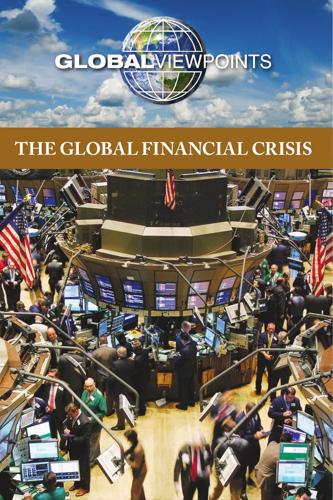
Global Financial Crisis
by
Noah Berlatsky
Published 19 Feb 2010
In the United States, the Financial Crisis Creates Tent Cities and Homelessness Kathy Sanborn There is a major increase in homelessness and in tent cities across the United States. This is directly related to the joblessness and economic distress caused by the financial crisis. 74 2. Canada Will Not Suffer a Subprime Mortgage Crisis Jonathan Kay 80 Canada had fewer bad mortgages and better lending standards than the United States. As a result, it did not have a housing bubble, and it should avoid the mortgage meltdown that happened in the United States. 3. Australia’s Economy Remains Bound Up with That of the United States Sean Carmody 85 Before the crisis, some commentators had argued that Australia’s economy had decoupled, or separated from that of the United States and the developed world.
…
At least 10–15% of homeless individuals are the “new poor,” or those who have recently lost their jobs and homes. We can be certain that if the economy doesn’t improve soon, there will be more of the new poor pitching their tents in shantytowns across America—maybe in your neighborhood. 79 2 Viewpoint Canada Will Not Suffer a Subprime Mortgage Crisis Jonathan Kay Jonathan Kay is a writer for Canada’s National Post and has also written for Harper’s, the New York Times, and other publications. In the following viewpoint, Kay argues that Canada will not suffer a financial meltdown such as the one in the United States. Kay notes that, unlike America, Canadians did not build up high levels of debt and did not experience a housing bubble.
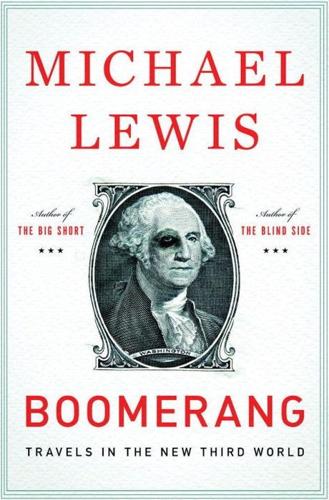
Boomerang: Travels in the New Third World
by
Michael Lewis
Published 2 Oct 2011
You’re the world’s foremost expert on sovereign balance sheets. You are the go-to guy for sovereign trouble. You taught at Princeton with Ben Bernanke. You introduced Larry Summers to his second wife. If you don’t know this, who does?’ I thought, Holy shit, who is paying attention?” Thus his new investment thesis: the subprime mortgage crisis was more symptom than cause. The deeper social and economic problems that gave rise to it remained. The moment that investors woke up to this reality, they would cease to think of big Western governments as essentially risk-free and demand higher rates of interest to lend to them. When the interest rates on their borrowing rose, these governments would plunge further into debt, leading to further rises in the interest rates they were charged to borrow.
…
Then the financial world began to change again—and very much as Kyle Bass had imagined it might. Entire countries started to go bust. What appeared at first to be a story chiefly about Wall Street became a story that involved every country that came into meaningful contact with Wall Street. I wrote the book about the U.S. subprime mortgage crisis and the people who had made a fortune from it, but began to travel to these other places, just to see what was up. But I traveled with a nagging question: how did a hedge fund manager in Dallas even think to imagine these strange events? Two and a half years later, in the summer of 2011, I returned to Dallas to ask Kyle Bass that question.
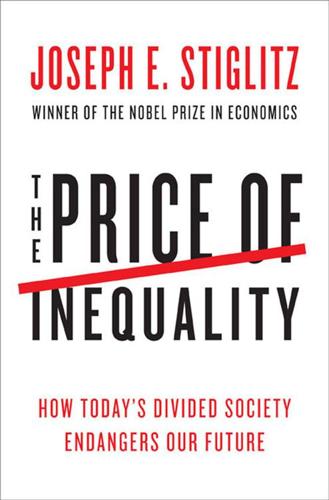
The Price of Inequality: How Today's Divided Society Endangers Our Future
by
Joseph E. Stiglitz
Published 10 Jun 2012
But we noted, too, that the crisis had cast doubt on this theory.76 Those who perfected the new skills of predatory lending, who helped create derivatives, described by the billionaire Warren Buffett as “financial weapons of mass destruction,” or who devised the reckless new mortgages that brought about the subprime mortgage crisis walked away with millions, sometimes hundreds of millions, of dollars.77 But even before that, it was clear that the link between pay and societal contribution was, at best, weak. As we noted earlier, the great scientists who have made discoveries that provided the basis of our modern society have typically reaped for themselves no more than a small fraction of what they have contributed, and received a mere pittance compared with the rewards reaped by the financial wizards who brought the world to the brink of ruin.
…
And yet the interest rate charged to students was incommensurate with these risks: the banks have used the student loan programs (especially those with government guarantees) as an easy source of money—so much so that when the government finally scaled down the program in 2010, the government and the students could, between them, pocket tens of billions of dollars that previously had gone to the banks.25 America sets the pattern Usury (charging exorbitant interest rates),26 of course, is not limited to the United States. In fact, around the world the poor are sinking in debt as a result of the spread of the same rogue capitalism. India had its own version of a subprime mortgage crisis: the hugely successful microcredit schemes that have provided credit to poor farmers and transformed their lives turned ugly once the profit motive was introduced. Initially developed by Muhammad Yunus of the Grameen Bank and Sir Fazle Hasan Abed of BRAC in Bangladesh, microcredit schemes transformed millions of lives by giving the poorest, who had never banked, access to small loans.
…
In India the banks seized upon the new opportunities, realizing that poor Indian families would pay high interest rates for loans not just to improve livelihoods but to pay for medicines for sick parents or to finance a wedding for a daughter.28 They could cloak these loans in a mantle of civic virtue, describing them as “microcredit,” as if they were the same thing that Grameen and BRAC were doing in neighboring Bangladesh—until a wave of suicides from farmers overburdened with debt called attention to the fact that they were not the same. THE MORTGAGE CRISIS AND THE ADMINISTRATION OF THE RULE OF LAW When the subprime mortgage crisis finally broke wide open, precipitating the Great Recession of 2008, the country’s response to the ensuing flood of foreclosures provided a test of America”s “rule of law.” At the core of property rights and consumer protection are strong procedural safeguards (such as record keeping) to protect those who enter into contracts.
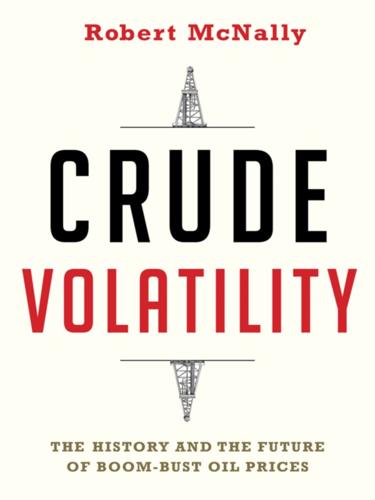
Crude Volatility: The History and the Future of Boom-Bust Oil Prices
by
Robert McNally
Published 17 Jan 2017
The collapse of the U.S. securities firm Bear Stearns in March 2008 intensified concerns about a financial crisis, and September brought more foreboding signs as Washington was forced to seize the government-sponsored housing lenders Fannie Mae and Freddie Mac.92 On September 14, 2008, the U.S. subprime mortgage crisis erupted into a global financial emergency when Lehman Brothers—the fourth-largest investment bank in the country—declared bankruptcy. Like many other financial institutions, Lehman held enormous amounts of low quality household debt securities. Its failure prompted contagion risk and a widespread collapse in market confidence.
…
Abbot, “Saudis Willing,” 1, 5. 88. Dinnick, “Saudis Will Increase Oil Output.” 89. Abbot, “Saudis Willing,” 1, 5. 90. Editorial, “The Saudi Spigot,” Washington Post. 91. Front Month WTI Crude Futures Prices, Bloomberg. 92. “U.S. Seizes Control of Mortgage Giants,” Washington Post. 93. Duca, “Subprime Mortgage Crisis.” 94. Custom Table Builder, Short-Term Energy Outlook, EIA 95. “Crude Oil Prices See Year of Boom and Bust,” Middle East Economic Survey. 96. Krauss, “Where is Oil Going Next?” New York Times, January 14, 2009. 97. IEA, Impact of High Oil Prices, 60. 10. OIL’S THIRD BOOM–BUST ERA: 2009–?
…
Bank for International Settlements. March 18, 2015. http://www.bis.org/publ/qtrpdf/r_qt1503f.htm. Dombey, Daniel, and Javier Blas. “Naimi Tightlipped on Bush Oil Appeal.” Financial Times, January 16, 2008. Downey, Morgan. Oil 101. New York: Wooden Table Press LLC, 2009. Duca, John V. “Subprime Mortgage Crisis.” Federal Reserve History, http://www.federalreservehistory.org/Events/DetailView/55. Eaton, Jonathan, and Zvi Eckstein. “The U.S. Strategic Petroleum Reserve: An Analytic Framework.” In The Structure and Evolution of Recent U.S. Trade Policy, edited by Robert E. Baldwin and Anne O. Krueger, 237–76.

Naked City: The Death and Life of Authentic Urban Places
by
Sharon Zukin
Published 1 Dec 2009
In one of the most important contemporary projects in New York, the rebuilding of the World Trade Center site, a state agency, the Lower Manhattan Development Corporation, controls the process without a public vote or even a deciding voice for the local community board. The largest contemporary redevelopment project in Brooklyn, Atlantic Yards, on a site Robert Moses picked for urban renewal many years earlier, stirred a lot of public protest but was derailed only by the collapse of financial markets in the subprime mortgage crisis.32 The major difference between Moses’s time and ours lies in a shift from the ideal of the modern city to that of the authentic city. To the extent that the city planning commissioners honor Jane Jacobs’s vision, they say, “If you allow the character of a neighborhood to be eroded, the people who live in that neighborhood will leave the city.”33 Whose character, though, is most authentic?
…
Like landlords, potential homebuyers, white or black, could not get loans to finance the extensive renovations old houses in Harlem required. When they did get loans, often by putting up their homes as collateral, they faced high interest rates and the risk of foreclosure, very much like in the later subprime mortgage crisis. Neither was it possible, even if developers had wanted, to build the same kinds of apartment houses above retail stores that filled the Upper East and Upper West Sides, for much of Harlem was zoned for the “towers in the park” design of high-rise public housing projects. Most important, there was not yet an affluent black middle class, a potentially significant agent of change that would be attracted to Harlem’s stately townhouses and cultural authenticity and could anchor gentrification.
…
If developers can make more money and have less political interference by building ranch homes in the suburbs, they’ll do so, but when that becomes too difficult or costly, they’ll switch to building loft apartments downtown. Concerted, for-profit development strategies were intensified by the overexpansion of global financial markets that began in the 1980s. The Asian economic crisis of 1997 and the subprime mortgage crisis of 2008 showed that this kind of financial homogenization can bring disaster, and the movement of private investment capital into New York City housing markets at that time inflicted unexpected pain. During the 1990s and the following decade private equity funds did not just target penthouse apartments and “trophy” buildings in Manhattan, pressing prices of less costly apartments to rise, but also purchased low-rent apartment houses in Brooklyn, the Bronx, and Queens.

Freedom Without Borders
by
Hoyt L. Barber
Published 23 Feb 2012
If interested, ask your coin or precious metals dealer about the 1/10-ounce $5 American Gold Eagle. In late 2010, these coins were available for $143 each, but you know that price won’t hold for long. Some experts and rich investors have speculated on where gold prices may be headed. John Paulson, a hedge fund tycoon, foresaw the subprime mortgage crisis coming long before anyone knew there was a problem with them. Betting against them, he made a fortune. Right now, he and other sharp-eyed investors are wagering that gold will rise a lot, if not skyrocket. Former Treasury Secretary Henry Paulson feels that the metal—based on current fundamentals and quoting at a moment recently when gold was $1,300 an ounce—could easily reach $2,400 an ounce and possibly go as high as $4,000 an ounce by 2013.
…
See also International real estate Real Estate Equity Investment Strategy (REEIS), 101–2 Recessions, 36, 45 Reciprocal enforcement, 26 Reference letters, 52 Refinancing real estate, 100 Registered agents, 21, 24 Register of Trusts, 27 Repatriation, 3, 83 Residency status, 6, 12, 13, 18 Retirement accounts, 89 Revocable beneficiary, 85 Secondary mining companies, 66–67 Segregated metal, 74 174 Index Silver: bonds, 59; bullion, 46, 72–73; gold-silver ratio, 71; stocks, 71 Singapore, 80 Small Business Investor Visa, 116 Social Security, 39–40, 104 Soft-money cycle, 54, 56 Soros, George, 38 Sovereign investing: global financial crisis, 37–40; overview, 35; personal monetary policy, 43– 48; and recessions, 36; and stimulus plan, 36–37; trends, 40–43 Spain, 123 Stable currencies, 43–44 Stimulus plan, 36–37 St. Kitts, 14–16, 123–24 Stocks: blue chip, 59–60; commodity, 61; crisis-investing, 60–61; defense stocks, 47; energy stocks, 47; global opportunity, 60; gold, 65–66; income, 47, 60; market trends, 41–42; mining, 73–74; silver, 71; in Switzerland, 61–62 St. Vincent, 8, 10, 130 Subprime mortgage crisis, 65 Sugar Industry Diversification Foundation (SIDF), 15–16 Suspicious Activity Report (SAR), 137 Switzerland: annuities, 84–89; bank secrecy in, 64, 80–82, 132; brokerage firms, 51; citizenship, 17; financial-related insurance products, 2, 3; investment management in, 82; life insurance, 89–90; portfolio bond, 82–84; real estate investments in, 62; stocks from, 61–62; tax havens in, 8, 10, 23; weather in, 95 Tax audits, 137–38 Taxes/taxation: in Argentina, 109; of assets, 5; avoiding, 4–5, 7–8, 94–95; beneficiary, 5; doubletaxation treaty, 109; legislation, 135–36; loopholes, 12–14; and recessions, 36, 44; reporting requirements, 133–34; special exemptions, 7; worldwide income tax, 4, 6 Tax havens: in Argentina, 109–10; and bank secrecy laws, 130; in Belize, 110; in Brazil, 110; in Costa Rica, 111; in Ecuador, 110; “flags-of-convenience,” 32; in France, 112; fraudulent transfers, 139–40; general information on, 118–24; “Green List,” 8; in Ireland, 112–13; in Italy, 113–14; in Mexico, 114–15; in Nicaragua, 115–16; and OECD, 8, 23, 50, 81, 117, 127–28; offshore, 2; overview, 108–9; in Panama, 116–17; and “pentapus,” 134–35; and Qualified Intermediaries, 130–33.
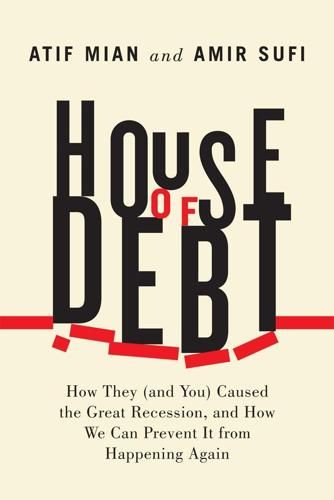
House of Debt: How They (And You) Caused the Great Recession, and How We Can Prevent It From Happening Again
by
Atif Mian
and
Amir Sufi
Published 11 May 2014
Adam Ashcraft, Paul Goldsmith-Pinkham, and James Vickery, “MBS Ratings and the Mortgage Credit Boom,” Federal Reserve Bank of New York Staff Report #449, May 2010. 16. Piskorski, Seru, and Witkin, “Asset Quality Misrepresentation.” 17. Yuliya Demyanyk and Otto Van Hemert, “Understanding the Subprime Mortgage Crisis,” Review of Financial Studies 24 (2011): 1848–80. 18. This estimate is based on the ABX index that tracks the value of mortgage-backed securities with mortgage originated in 2007. Chapter Eight 1. Daniel Altman, “Charles P. Kindleberger, 92, Global Economist, Is Dead,” New York Times, July 9, 2003. 2.
…
Sumit Agarwal, Gene Amromin, Itzhak Ben-David, Souphala Chomsisengphet, Tomasz Piskorski, and Amit Seru, “Policy Intervention in Debt Renegotiation: Evidence from the Home Affordable Modification Program” (working paper, University of Chicago Booth School of Business, 2012). 13. Tomasz Piskorski, Amit Seru, and Vikrant Vig, “Securitization and Distressed Loan Renegotiation: Evidence from the Subprime Mortgage Crisis,” Journal of Financial Economics 97 (2010): 369–97. 14. Sumit Agarwal, Gene Amromin, Itzhak Ben-David, Souphala Chomsisengphet, and Douglas Evanoff, “Market-Based Loss Mitigation Practices for Troubled Mortgages Following the Financial Crisis,” (working paper, SSRN, October 2010). 15.
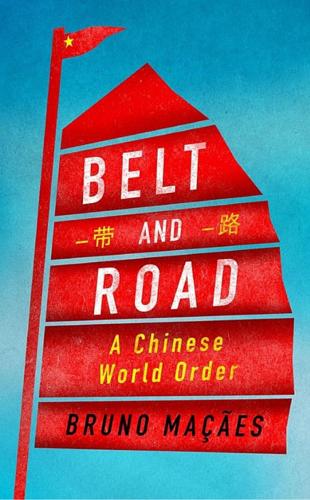
Belt and Road: A Chinese World Order
by
Bruno Maçães
Published 1 Feb 2019
INDEX Abbasi, Zafar Mahmood, 126 Abe, Shinzo, 118, 137 Addis Ababa, Ethiopia, 68 Aden Gulf, 72 Adil, Umer, 60 Advancing the Development of the One Belt, One Road Leading Group, 39 aerospace, 88, 103 Afghanistan, 53, 107, 127, 128, 129, 135, 172 Africa, 3, 8, 25, 44, 124, 163 Djibouti, 4, 12, 46, 63, 67–8, 101, 117 Ethiopia, 46, 68, 154, 170, 186 manufacturing, 68, 77 Maritime Silk Road, 23, 26, 45, 62 oil, 64 Partnership for Quality Infrastructure, 138 piracy, 72 telecommunications, 101, 170–71 aging population, 75 Agricultural Bank of China, 48 agriculture, 11, 61, 76, 99–100, 103 Ahmedabad, Gujarat, 138 aircraft, 81, 91, 103 Akto, Xinjiang, 60 Aktogay, East Kazakhstan, 103 Alibaba, 44 Allison, Graham, 7–8 Alps, 189 aluminum, 17, 20, 88 Andalusia, Spain, 189 Andijan, Uzbekistan, 54 anti-dumping, 92, 113 Antwerp, Flanders, 65 Apollo program, 9 aquaculture, 71 Arabian Sea, 72, 106 Arctic, 4, 62, 66, 188 artificial intelligence (AI), 44, 75, 88 Arunachal Pradesh, India, 111 Asian Development Bank, 45, 137 Asian Financial Forum, 49 Asian Infrastructure Investment Bank, 48 Association of Southeast Asian Nations (ASEAN), 122 Astana International Exchange, 56 Astana, Kazakhstan, 25–6, 39, 56, 58 asteroids, 187 Athens, 8 Atlantic Ocean, 3, 115, 119, 138, 139 Atushi, Xinjiang, 60 Australia, 5, 12, 25, 119, 121, 122, 132–3, 135 automated vehicles, 88, 90, 186, 187, 190 automobile industry, 74, 81, 86, 90–91, 97, 104 Autor, David, 177 aviation, 81, 91, 103 Azad Jammu and Kashmir (AJK), 60 Azerbaijan, 186 Badakhshan, Afghanistan, 128 Baidu, 188 Baldwin, Richard, 74, 80 Balkans, 8, 12, 140 Balochistan, Pakistan, 60, 105 Gwadar port, 46, 59, 61–2, 63, 64, 99–100, 101, 105–7, 117 separatism and terrorism, 106, 127, 128 Baltic Sea, 51 Bangkok, Thailand, 65, 136–7 Bangladesh, 48, 53, 64, 109, 134, 136, 138, 150, 189 Bangladesh-China-India-Myanmar Economic Corridor (BCIM-EC), 52, 62 Bank of China, 48 banking, 46–51 bargaining theory, 152–3 Bay of Bengal, 22, 64, 72, 119 Beijing, China, 20, 28, 48, 126, 165 Beijing University, 183, 188 Belgium, 56, 65 Belgrade, Serbia, 143 Belt, see Silk Road Economic Belt Belt and Road Advancing the Development of the One Belt, One Road Leading Group, 39 backlash against, 12, 108, 121–4, 130–46, 155 bridges, 40, 54, 156, 173, 186 Buddhism, 112 cities, 11, 43, 44, 48, 149–52, 187–8 ‘community of shared destiny’, 26–9, 33, 36, 43, 45, 170 connectivity (wu tong), 42, 43, 52–3, 127, 158, 167 currency integration, 26 data, 44 debt, 12, 46, 47, 108, 109, 124, 126, 130, 132, 153–62 digital infrastructure, 43–4, 59, 86 e-commerce, 44, 59 economic corridors, 2, 11, 51–4, 55, 62 economic policy coordination, 28 energy, 11, 17, 19, 20–23, 40, 46, 48, 49, 52, 61, 64, 86, 92, 188 financing, 11, 36, 46–51, 54, 108–9, 124, 126, 130, 132, 138, 141, 153–64 Forum for International Cooperation (2017), 12, 108, 143, 152 impatience, 152–3 inauguration (2013), 11, 17, 23 industrial capacity cooperation, 85–8 industrial parks, 10, 43, 55, 61, 67, 99, 102 infrastructure, see infrastructure internal discontent, 163 international court, 28, 190 loans, 11, 36, 46–7, 54, 108–9, 124, 126, 130, 132, 138, 141, 153–62, 163 maps, 2–6, 24, 41, 64, 69 Maritime Silk Road, 24, 26, 28, 39, 41 market integration, 41 military bases, 12, 67, 71, 72, 101, 117, 126–7 overcapacity, 19 ports, see ports railways, 9–10, 11, 12, 18, 43, 46, 52, 53–4, 68, 86, 122, 130 roads, 9, 19, 40, 43, 52, 54 security, 127–9 Silk Road, 2, 9–10, 23–6, 45, 82, 138 Silk Road Economic Belt, 24, 25–6, 28, 39, 51–62, 83 success, definition of, 164, 174 telecommunications, 43–4, 52, 86, 101, 170–71 timeline, 10 TIR Convention, 55 transnational industrial policy, 81, 84 transport infrastructure, 9–10, 11, 18, 19, 25, 26, 40, 48, 49, 53–4, 83 urban development, 11, 43, 44, 48, 149–52 Vision and Actions document (2015), 40, 41, 45, 49, 50, 52, 62, 67, 78 Vision for Maritime Cooperation (2017), 62 Bering Strait, 66 Bharatiya Janata Party (BJP), 110 Bhat, Vinayak, 107 Bhutan, 107–8 big data, 44 Bishkek, Kyrgyzstan, 127 Blackwater, 128 blue economic passage, 62 Boao Forum for Asia (2015), 27, 32 Brahmaputra river, 136 Brazil, 174 Brewster, David, 63 BRIC (Brazil, Russia, India and China), 19, 174 bridges, 40, 54, 156, 173, 186 British Broadcasting Corporation (BBC), 188 Budapest, Hungary, 143 Buddhism, 111–12 Bush, George Walker, 169 California, United States, 64 Cambodia, 52, 54, 70, 129, 132, 155 Cameroon, 68, 187 Canada, 136 car industry, see automobile industry Caribbean, 25 Carr, Robert ‘Bob’, 122 Cartagena, Spain, 92 Caspian Sea, 186 Caucasus, 20, 129 CDMA (code-division multiple access), 89 cement, 17, 49–50, 83 Center for Strategic and International Studies, 19, 123 center of gravity, 115 Central African Republic, 186 Central Asia, 9, 20, 25, 51, 52, 82–3, 188 energy, 22, 106 Eurasian Economic Union (EEU), 57–9 India, trade with, 107 industrial capacity cooperation, 104 Islamism, 127 Russia, relations with, 57–9, 129, 133 steel industry, 82–3 terrorism, 127 textile industry, 101 transport infrastructure, 9, 54 Central Huijin Investment, 49, 50 Central Military Commission, 166 century of humiliation (1839–1949), 165, 186 Chabahar, Sistan-Baluchistan, 106–7 Chalay Thay Saath, 60 Chao Phraya River, 65 ChemChina, 48 Chengdu Economic Daily, 129 China Abbasi’s visit (2018), 126 Academy of Information and Communications Technology, 44 aging population, 75 Banking and Insurance Regulatory Commission, 50 Bishkek Embassy bombing (2016), 127 Boao Forum for Asia (2015), 27, 32 Buddhism, 111–12 century of humiliation (1839–1949), 165, 186 Doklam plateau dispute, 107–8, 113 energy, see energy EU-China summit (2015), 138 five-year plan (2016–20), 41 Food and Drug Administration, 114 Foreign Policy Center of the Central Party School, 7 Gants Mod crossing closure (2016), 36 General Navigation Office, 69 ‘Going Out’ strategy, 86 Guangxi Nonferrous Metals Group bankruptcy (2016), 16 Guiding Opinion on Promoting International Industrial Capacity (2015), 86 Guiding Opinion on Standardizing the Direction of Overseas Investment (2017), 86 incremental approach, 7 Indian Dilemma, 21 Institute of International Studies, 92 International Trust and Investment Corporation, 132 Investment Corporation, 48 keeping a low profile (tao guang yang hui), 15, 18, 32 labour shortages, 75 Macron’s visit (2018), 146–7 Made in China 2025 strategy, 85, 87, 90–92, 93 Malacca Dilemma, 21–2, 64, 131 Merchants, 68–9 middle-income trap, 75–7, 85 migrant workers, 75 military, 12, 13, 59, 67, 71, 72, 101, 117, 126–7 minimum wage, 75 Ministry of Commerce, 21, 40, 93 Ministry of Communications, 69 Ministry of Finance, 49 Ministry of Foreign Affairs, 40 Ministry of Industry and Information Technology, 19 Ministry of Transportation, 14 Modi–Xi summit (2018), 135 National Bureau of Statistics, 75 National Congress, 28, 29, 44, 165, 181 National Cybersecurity Work Conference (2018), 84 National Development and Reform Commission, 40, 98 National Health Commission, 114 Opium War, First (1839–1842), 165 overcapacity, 16, 19–20, 88 Overseas Chinese Affairs Office, 19 Overseas Investment Industrial Guiding Policy, 86 People’s Navigation Company, 69 Ports-Park-City model, 67 presidential term limits repeal (2018), 164, 174 real estate market, 16, 75 reform and opening up, 13–15, 73 renminbi, 22–3, 159 responsible stakeholder, 169 shipbuilding, 14, 17 soft power, 111, 170 Soviet Union, relations with, 13, 14, 15 State Administration of Foreign Exchange, 48 State Council, 19, 39, 40, 49, 66, 86 state-owned companies, 42, 153, 160–61, 189 steel industry, 16–17, 18, 20, 82–4, 86, 88 striving for achievement, 18 Swaraj’s visit (2018), 135 Taiwan, relations with, 14, 26, 142 technology transfers, 85–92, 97, 177–8 Thucydides’ trap, 8 Tianxia, 26–7, 29, 31–5, 78, 79, 192–3 TIR Convention, 55 Trump’s visit (2017), 124 ‘two heads abroad’ (liangtou zai haiwai), 17 United States, relations with, see Sino–US relations Working Conference on Neighborhood Policy (2013), 17–18 China Construction Bank, 48 China Development Bank, 16, 48, 49, 97, 98, 99, 103, 160 China Export & Credit Insurance Corp, 104 China Export-Import Bank, 46, 47, 48, 49, 103, 154 China Fantasy, The (Mann), 177 China Global Television Network, 188 China Nonferrous Metals Industry Group, 103 China Three Gorges Corp, 48 China-Indian Ocean-Africa-Mediterranean Sea Blue Economic Passage, 62 China-Indochina Peninsula Economic Corridor, 51, 52, 54, 62 China-Oceania-South Pacific, 62 China-Pakistan Economic Corridor (CPEC), 52, 59, 60, 62, 105–7, 108 Chinese Communist Party Advancing the Development of the One Belt, One Road Leading Group, 39 and Australia, 133 Constitution, 41, 164 founding of (1921), 165 National Congress, 18th (2012), 28 National Congress, 19th (2017), 29, 44, 165, 181 and New Zealand, 132 Politburo, 39, 40, 165 reform and opening up, 13–15 and steel industry, 16 Third Plenum of the 18th Party Central Committee (2013), 39 Chongyang Institute for Financial Studies, 106 Christianity, 128 Churchill, Winston, 183 cities, 11, 43, 44, 48, 149–52, 187–8 climate change, 4, 66, 85, 171 Clinton, William ‘Bill’, 177 cloud computing, 44 CloudWalk Technology, 44 Club Med, 189 CNN, 188 cobalt, 81, 104 Cold War, 2, 14, 21–2, 36, 40, 125, 171 Colombo, Sri Lanka, 156, 162 colonialism, 120, 162 ‘community of shared destiny’, 26–9, 33, 36, 43, 45, 135, 170 Confucianism, 31, 34 Congo, Democratic Republic of, 81, 104 connectivity, 42, 43, 52–3, 109, 122, 127, 146, 158, 167 Connectivity Platform, 139 construction, 18, 75, 86, 98 convergence, 4, 14, 166, 167, 169, 174, 177 copper, 103, 104 corridors, see economic corridors corruption, 133, 155–6, 158, 187 cosmopolitan neighborhoods, 4 Country Garden, 151 Cowboys and Indians, 188 cultural exchanges, 42, 43, 56–7 currency, 22–3, 26, 159–60 customs cooperation, 55, 57, 59, 63 Cyprus, 140 Dalai Lama, 36, 112 Dalian, Liaoning, 55, 93 Daming Palace, Xi’an, 147 Dangal, 111 data, 44 Davidson, Phillip, 125–6 Davos, Switzerland, 168 Dawn of Eurasia, The (Maçães), 185, 191 Dawood, Abdul Razak, 158 debt, 12, 16, 46, 47, 108, 109, 124, 126, 130, 132, 153–62 democracy, 125, 133, 166, 171, 172, 174, 175, 176, 181–3 Democratic Republic of Congo, 81, 104 Deng Xiaoping, 13–15, 18, 31, 32, 69, 73, 183 Diaoyu Islands, 187 digital infrastructure, 43–4 division of labor, 53, 78, 79, 80 Djibouti, 4, 12, 46, 63, 67–8, 101, 117, 186 Doklam plateau, 107–8, 113 Doraleh, Djibouti, 63, 67–8 DP World, 68 dry ports, 57 Dubai, UAE, 62, 68, 160 Dudher Zinc project, 127 Duterte, Rodrigo, 156 DVD (digital versatile disc), 89 e-commerce, 44, 59 East China Sea, 118 economic corridors, 2, 11, 51–4, 55 economic nationalism, 102 economic policy coordination, 28 Economist, The, 190 Egypt, 101 electric cars, 81, 104 electricity, 40, 46, 49, 52, 61, 98, 156, 188 end of history, 36 energy, 4, 11, 17, 19, 20–23, 48, 49, 82, 86, 92, 188 electricity, 40, 46, 49, 52, 61, 98, 156, 188 gas, 21, 22, 40, 52, 64, 72, 106 hydropower, 48 oil, 21, 22, 23, 40, 52, 64, 72, 106 renewable, 21, 187, 188 English language, 111, 188 Enhanced Mobile Broadband coding scheme, 89 Enlightenment, 193 environmental sustainability, 75 Erenhot, Inner Mongolia, 55 Ethiopia, 46, 68, 154, 170, 186 Eurasia, 1–5, 11, 20, 26, 45, 52, 57, 63, 120, 121, 138 Eurasian Economic Union (EEU), 57–9 Eurasian Resources Group, 103 European Commission, 143, 145 European empires, 120–21 European Union (EU), 5, 29, 57, 58, 138–47, 159, 176, 179 and Belt and Road, 10, 12, 30, 138–47 Connecting Europe and Asia strategy (2018), 145–6 and Djibouti, 67 economic policy coordination, 28 5G mobile networks, 43 immigration, 187 steel industry, 17 tariffs, 83 technology transfers, 87–8, 178 transnational framework, 81 Turkey, relations with, 4 Export-Import Bank of China, 46, 47, 48, 49, 103, 154 exports, 15, 17, 19, 79 Facebook, 188 facial recognition, 44, 190 fashion industry, 101 fate, 34 Fergana Valley, 54 fertilizers, 19 fibre-optic connectivity, 101 fifth generation (5G) mobile networks, 43–4, 89 finance, 11, 36, 46–51, 54, 126, 138, 141, 153–64 Financial Times, 10, 63, 143, 154, 157, 158, 159 five-year plan (2016–20), 41 Folding Beijing (Hao), 150 food imports, 76 foreign direct investment, 46, 144–6 foreign exchange, 16, 94, 153 Forest City, Johor, 149–51, 155 France, 11, 96, 129, 141, 144, 146–7, 189 free and open order, 125 free-trade zones, 11, 42, 55–6, 71 freedoms of speech, 172, 189 French Foreign Legion, 129 French, Howard, 13 Frontier Services Group, 128–9 Fu Chen, 129 Fu Ying, 140 Fukuyama, Francis, 184–5 Gabon, 96 Gabriel, Sigmar, 142 Gang of Four, 14 Gants Mod crossing closure (2016), 36 gas, 21, 22, 40, 52, 64, 72, 106 General Navigation Office, 69 generic drugs, 114 Genghis Khan, 2, 25 Georgia, 58 Germany, 11, 65, 80, 87–8, 90, 100, 141–2, 144, 189 ghost ships, 186 Gibraltar, 92 Gilgit-Baltistan, Pakistan, 54, 60, 108 Gland Pharma, 113 glass, 17, 83 Global Energy Interconnection, 188 global financial crisis (2008), 16–17, 85, 161, 178 Global Infrastructure Center, 190 Global Times, 67, 109, 131 global value chain revolution, 74 global warming, 4, 66, 85 globalization, 19, 28, 66, 78, 102, 124, 144, 168, 174, 192 ‘Going Out’ strategy, 86 good governance, 183–4 Google, 152, 188 Goubet, Djibouti, 67 government procurement, 12, 59 Grand Palace, Bangkok, 65 Grand Trunk Road, 53 Greece, 30, 31, 65, 140, 141, 142 GSM (Global System for Mobile communications), 89 Guangdong, China, 28, 75, 151 Guangxi Beibu Gulf International Port Group, 67 Guangxi Nonferrous Metals Group, 16 Guiding Opinion on Promoting International Industrial Capacity (2015), 86 Guiding Opinion on Standardizing the Direction of Overseas Investment (2017), 86 Guo Chu, 33 Gwadar, Balochistan, 46, 59, 61–2, 63, 64, 99–100, 101, 105–7, 117 Hainan, China, 71 Hambantota, Sri Lanka, 46–7, 63, 64, 68, 117, 162 Hamburg, Germany, 65 Hamilton, Clive, 133 Han Empire (206 BC–220 AD), 25 Hao Jingfang, 150 ‘harmonious world’, 33, 36 Havelian, Khyber Pakhtunkhwa, 54 He Yafei, 19, 168 heavy industry, 75, 82 Hebei, China, 83 Heilongjiang, China, 55 Hesteel, 83 high-speed railways, 18, 53–4, 83, 89, 98, 122, 130, 137, 138, 143, 186–7 highways, see roads Hillman, Jonathan, 8 Hobbes, Thomas, 27 Holslag, Jonathan, 189 Hong Kong, 49, 103 Hongshi Holding Group, 49 Horgos, Xinjiang, 55, 55–6, 57 Horn of Africa, 3 Hu Huaibang, 49, 97 Hu Jintao, 21, 33, 70 Hu Xiaolian, 154 Huang Libin, 19 Huangyan Island, 187 Huawei, 89–90, 101, 171 Hub, Balochistan, 127 hukou (household registration), 76 human rights, 141–2, 170, 171, 189 Hun Sen, 155 Hungary, 30, 140, 141, 142, 143, 144 Huntington, Samuel, 184 Hussain, Chaudhry Fawad, 157 hydropower, 48 Ibrahim Ismail, Sultan of Johor, 151 immigration, 187 impatience, 152–3 imports, 17, 19, 22, 79–84 India and the Indian Ocean (Panikkar), 118 India, 3, 5, 64, 105–25, 134–6, 174, 179 Bangladesh Liberation War (1971), 109 and Belt and Road, 11, 12, 52, 72, 105–15, 130, 133 Belt and Road Forum for International Cooperation (2017), 12, 108 British Raj (1858–1947), 107 Buddhism, 111–12 cosmopolitan neighborhoods, 4 cultural mission to China (1952), 113 Doklam plateau dispute, 107–8, 113 economic autarchy, 110, 117 free and open order, 125 Grand Trunk Road, 53 imports, 113–14 and Indian Ocean, 3, 116–19 Indo-Pacific, 116–23, 125 Japan, relations with, 118 Kashmir dispute, 108–9, 117 Malabar naval exercises (2018), 135 and maritime hegemony, 72 migrant workers, 150 military bases, 3, 131 Modi–Xi summit (2018), 135 Mumbai-Ahmedabad high-speed railway, 138 nuclear tests (1998), 109 Pakistan, relations with, 105–7, 108–9, 117, 134 pharmaceuticals, 113, 114 Quadrilateral Security Dialogue, 121–2 Research and Analysis Wing (R&AW), 105–6 and Sabang Island, 131 Siliguri Corridor, 107–8 Southeast Asia, 113, 117–18 Swaraj’s visit to China (2018), 135 Tibet, relations with, 111–12, 117, 136 United States, relations with, 119, 121–2, 134, 135 Indian Dilemma, 21 Indian Ocean, 3, 8, 9, 26, 51, 62, 63, 66, 68, 71–2, 116–19 Indo-Pacific, 116–23, 125, 126 and Japan, 4 Kra Isthmus canal proposal, 65, 186 meticulous selection, 72 Myanmar oil and gas pipeline, 64, 72 oil, 21, 64 and Pakistan, 59, 61, 64 individualism, 27, 189 Indo-Pacific, 116–23, 125, 126 Indo-Pacific Business Forum, 122 Indo-Pacific Command, US, 126 Indochina, 51, 52, 54, 62 Indonesia, 2, 5, 18, 26, 39, 48, 83, 117, 131 Industrial and Commercial Bank of China, 48, 49, 103 industrial capacity cooperation, 85–8, 98, 102–4 industrial internet, 44 industrial parks, 10, 43, 55, 61, 67, 99, 102 Industrial Revolution, 84 information technology, 43–4, 74, 81, 86, 90, 94, 111, 170–71, 190 infrastructure, 3, 23, 26, 30, 40–45, 48, 50, 55, 58, 63, 86, 88, 124, 139, 141, 162, 167, 186 Afghanistan, 135 communications, 81, 118 digital, 43–4 European Union, 10, 141, 145 India, 64, 118, 135 Japan, 4, 136–8 Maritime Silk Road, 66, 67 Mediterranean, 65 Pakistan, 54, 62, 99, 105 Quadrilateral Security Dialogue, 121–2 Southeast Asia, 18–19, 70, 117, 130, 132 steel industry, 18 transportation, see transportation value chains, 96 Xinjiang, 20, 54 Inner Mongolia, China, 55 innovation, 76 Institute for International Finance, 153 intellectual property, 59, 88–9, 91, 97, 180, 190 international courts, 28, 190 international industrial capacity cooperation, 85–8, 98, 102–4 International Monetary Fund (IMF), 15, 156–7, 158–9, 172 Internet, 43–4, 86, 170–71 internet of things, 90, 94 Iran, 4, 22, 105–6 Iraq, 24 Irkeshtam, Xinjiang, 55 iron, 17 Islamabad, Pakistan, 60, 99, 101, 127, 157 Islamic State, 128 Islamism, 127–9 Istanbul, Turkey, 4, 24, 65 Italy, 48, 65, 140, 189 Izumi, Hiroto, 137 Jadhav, Kulbhushan, 105–6 Jakarta, Indonesia, 2, 5, 26, 39 Japan, 1, 5, 22, 123, 133, 136–8, 145, 165, 166, 169, 189 Buddhism, 111 Cold War, 21–2 India, relations with, 118 Indian Ocean, 4 infrastructure development, 4, 136–8 Quadrilateral Security Dialogue, 121–2 Second World War (1937–45), 119, 165 Javaid, Nadeem, 46 Jiang Qing, 14 Jiang Shigong, 183–4 Jiang Zemin, 15 Jiangsu Delong, 83 Jin Qi, 98 Jinnah Town, Quetta, 128 Johor, Malaysia, 149–51 Joint Statement on Cooperation on EEU and Silk Road Projects (2015), 57–8 joint ventures, 97 Journey to the West, 186, 188 Juncker, Jean-Claude, 138 Kaeser, Joe 170 Karachi, Sindh, 59, 100, 105, 106, 127 Karakoram Highway, 54, 60, 64 Kashgar, Xinjiang, 54, 59, 60, 64, 101 Kashmir, 60, 108–9, 117 Katanga, Democratic Republic of Congo, 104 Kaz Minerals 103 Kazakhstan, 8, 55–9, 129, 189 Astana International Exchange, 56 China–EEU free-trade agreement signing (2018), 58 and Eurasian Economic Union, 57 gateway to Europe, 56 Horgos International Cooperation Center, 55–6 industrial capacity cooperation, 103–4 railways, 54 Xi’s speech (2013), 23, 25–6, 39 Kazakhstan Aluminum, 103 keeping a low profile (tao guang yang hui), 15, 18, 32 Kenya, 101, 138, 171 Khan, Imran, 157–8 Khawar, Hasaan, 53 Khunjerab Pass, 101 Khyber Pakhtunkhwa, Pakistan, 54, 60, 100 Kizilsu Kirghiz, Xinjiang, 60 knowledge, 74, 76, 87 Kolkata, West Bengal, 64 Kortunov, Andrey, 135 kowtow, 35 Kra Isthmus, Thailand, 65, 186 Kuala Linggi Port, Malacca, 63 Kuala Lumpur, Malaysia, 130 Kuantan, Pahang, 63, 67 Kudaibergen, Dimash, 57 Kunming, Yunnan, 188 Kyaukpyu, Rakhine, 63, 64, 132, 154 Kyrgyzstan, 53, 54, 55, 103, 127 labor costs, 74, 83, 85, 99 labor shortages, 75 Lagarde, Christine, 158–9 Lahore, Punjab, 100, 157 Laos, 50, 52, 54, 129, 132 Latin America, 25, 187, 188 Leifeld Metal Spinning AG, 88 Lenin, Vladimir, 6, 78 Lenovo, 89–90 Li Hongzhang, 69 Li Keqiang, 44 Li Ruogu, 47 Liaoning, China, 55 liberal values, 123, 125, 133, 170 liberal world order, 141, 144, 167–86, 190, 192 Lighthizer, Robert, 91 lignite, 61 liquefied natural gas (LNG), 48, 66 Lisbon, Portugal, 2, 5 lithium-ion batteries, 81 Liu Chuanzhi, 89–90 Liu He, 92 loans, 11, 36, 46–7, 54, 108–9, 124, 126, 130, 132, 138, 141, 153–63, 190 London, England, 65, 160 Lord of the Rings, The (Tolkien), 1 Lou Jiwei, 76 Luo Jianbo, 7 Machiavelli, Niccolò, 31–4 machinery, 81, 90, 98, 156 Mackinder, Halford, 120 Macron, Emmanuel, 146–7 Made in China 2025 strategy, 85, 87, 90–92, 93 Mahan, Alfred, 120 Mahathir Mohamad, 130–31, 151, 155 Malabar naval exercises (2018), 135 Malacca, Malaysia, 3, 63 Malacca Strait, 21–2, 64, 65, 72, 117, 131 Malay Mail, 155 Malaysia, 3, 70, 117, 130–31, 154 debt, 154 Forest City, 149–51, 155 high-speed railways, 54, 130 Mahathir government (2018–), 130–31, 151, 155 1Malaysia Development Berhad scandal (2015–), 155 ports, 63, 67 Maldives, 134, 155 Mali, 129 Malik, Ashok, 109 Malta, 140 Mandarin, 107, 149, 188 Manila, Philippines, 122 Mann, James, 177 manufacturing, 11, 19, 68, 77, 85, 99 outsourcing, 68, 99 value chains, 3, 43, 64, 73–4, 79–82, 84–5, 94–104, 141 Manzhouli, Inner Mongolia, 55 Mao Zedong, 13–14, 31, 183 maps, 2–6, 24, 41, 64, 69 Maritime Silk Road, 24, 26, 28, 39, 41, 53, 62–72, 117 market integration, 41 Mars, 187 Marshall Plan, 40 Marx, Karl, 6 Marxism, 78 Massachusetts Institute of Technology (MIT), 177 Matarbari port, Bangladesh, 138 matchmaking services, 11 Mattis, James, 124 McMahon Line, 111 Mediterranean Sea, 4, 51, 62, 65, 119 Mei Xinyu, 21 Mekong Delta, 8 mergers and acquisitions, 42 Merkel, Angela, 88, 141, 144 meticulous selection, 72 Middle East, 4, 6, 22, 64, 120, 129, 163, 171 middle-income trap, 75–7, 85 migrant workers, 75 Milanovic, Branko, 173 military, 3, 12, 67, 71, 72, 101, 117, 126–7 Ming Empire (1368–1644), 163 Ming Hao, 30 minimum wage, 75 Ministry of Commerce, 21, 40, 93 Ministry of Communications, 69 Ministry of Finance, 49 Ministry of Foreign Affairs, 40 Ministry of Industry and Information Technology, 19 Ministry of Transportation, 14 Minmetals International Trust Co, 16 mobile payments, 193 Modi, Narendra, 106, 135–6 Mohan, Raja, 3, 121 Mombasa, Kenya, 138 Mongol Empire (1206–1368), 2, 25 Mongolia, 8, 36, 52, 55, 111 Moon, 187 Moraes, Frank, 112–13 Moscow, Russia, 4 Most Favored Nation status, 15 Mozambique, 138 multinationals, 74, 88–9 multipolar world system, 179 Mumbai, Maharashtra, 4, 105, 138 Myanmar, 52, 54, 63, 64, 72, 129, 132, 138, 154 Nacala, Nampula, 138 narcotics trade, 127 Nathan, Andrew, 159 National Aeronautics and Space Administration (NASA), 9 National Bureau of Statistics, 75 National Congress 18th (2012), 28 19th (2017), 29 National Cybersecurity Work Conference (2018), 84 National Development and Reform Commission, 40, 98 National Health Commission, 114 National League for Democracy, Myanmar, 132 National Museum of China, Beijing, 165, 166 National Party of New Zealand, 132 National People’s Congress, 44 National Rescue Party of Cambodia, 155 Nazarbayev University, 25–6 Nehru, Jawaharlal, 113 Nepal, 134, 135, 150 Netherlands, 56, 65 New Zealand, 132–3 Nigeria, 68 Ning Jizhe, 137 Nordin, Astrid, 42 Northern Sea Route, 66 Northwest Passage, 66 NPK fertilizer, 99 nuclear power/weapons, 21, 83, 88, 109, 166, 187 oil, 21, 22, 23, 40, 52, 64, 72, 106 1Malaysia Development Berhad scandal (2015–), 155 One China policy, 142 Open Times, 183 Opium War, First (1839–1842), 165 Organisation for Economic Co-operation and Development (OECD), 79 Osh, Kyrgyzstan, 54 overcapacity, 16, 19–20, 88 Overseas Chinese Affairs Office, 19 Overseas Investment Industrial Guiding Policy, 86 Pacific Command, US, 125–6 Pacific Journal, 71 Pacific Ocean, 3, 5, 9, 26, 45, 62, 116, 117, 125–6, 139 Indo-Pacific, 116–23, 125, 126 Pakistan, 12, 20, 46, 48, 52, 59–62, 64, 98–102, 105, 126–9, 133–4, 155, 156–8 Abbasi’s Beijing visit (2018), 126 agriculture, 99–100 balance of payments crisis, 156–8 Economic Corridor, 52, 59, 60, 62, 105, 108, 156–8 electricity production, 61 fibre-optic connectivity, 101 gateway to the Indian Ocean, 59 Grand Trunk Road, 53 Gwadar port, 46, 59, 61–2, 63, 64, 99–100, 101, 105–7, 117 hydropower, 48 IMF loans, 156–7 India, relations with, 105–7, 108–9, 117, 134 investment, 48 Jadhav arrest (2016), 105–6 Karakoram Highway, 54, 60, 64 Kashmir dispute, 108–9 loans, 46, 54, 156–8 manufacturing, 99 safe city project, 101 Tehreek-e-Insaf, 157–8 television, 101 terrorism, 106, 127–8, 135 textiles, 100 Thar desert, 61 value chains, 98–102 Pakistan-East Africa Cable Express, 101 Pandjaitan, Luhut, 131 Panikkar, Kavalam Madhava, 118 Pantucci, Raffaello, 134 Partnership for Quality Infrastructure, 137–8 patents, 88–9, 190 Pavlodar, Kazakhstan, 103 Peak Pegasus, 93 Pearl River Delta, China, 152 Peking University, 183, 188 Penang, Malaysia, 63 People’s Daily, 57 People’s Liberation Army (PLA), 32, 169 People’s Navigation Company, 69 Pericles, 8 Persian Gulf, 51, 64, 72 Peshawar, Khyber Pakhtunkhwa, 100 petcoke, 103 Petrochina, 103 pharmaceuticals, 113, 114 Phaya Thai Station, Bangkok, 137 Philippines, 19, 70, 117, 122, 156 philosophy, 40, 183 Phnom Penh, Cambodia, 70 phosphate, 19 piracy, 72 Piraeus, Greece, 65 Pirelli, 48 Plato, 150 Poland, 58, 140 Polar Silk Road, 66 Politburo, 39, 40, 165 political correctness, 182 Polo, Marco, 2, 10 Polonnaruwa, Sri Lanka, 156 Pompeo, Michael, 122–3, 157 ports, 9, 10, 12, 19, 36, 40, 46–7, 57, 63–5, 67–9, 96 Chabahar, Iran, 106–7 Doraleh, Djibouti, 63, 67–8 Gwadar, Pakistan, 46, 59, 61–2, 63, 64, 99–100, 101, 117 Hambantota, Sri Lanka, 46–7, 63, 64, 68, 117, 162 Kuala Linggi, Malaysia, 63 Kuantan, Malaysia, 63, 67 Kyaukpyu, Myanmar, 63, 64, 132, 154 Mediterranean, 65 Mombasa, Kenya, 138 Nacala, Mozambique, 138 Penang, Malaysia, 63 Ports-Park-City model, 67 Portugal, 2, 3, 5, 140, 163 power, see energy Prince, Erik, 128–9 property bubbles, 75 protectionism, 102, 114 public procurement, 12, 59 Punjab, Pakistan, 60, 99, 100, 157 Putin, Vladimir, 3, 57 Pyrenees, 189 Qing Empire (1636–1912), 107, 178 Quadrilateral Security Dialogue, 121–2 Qualcomm, 89 Quetta, Balochistan, 128 Raikot, Gilgit-Baltistan, 54 railways, 9–10, 11, 12, 18, 43, 52, 53–4, 57, 68, 83, 86, 89, 98, 100, 135 Addis Ababa–Djibouti, 46, 68 Bangkok–Chiang Mai, 137 Belgrade–Budapest, 143 Djibouti–Yaoundé, 68, 186–7 Islamabad–Gwadar, 60 Kashgar–Andijan, 54 Kuala Lumpur–Singapore, 130 Lahore overhead, 157 Mumbai–Ahmedabad, 138 United States, 122 Yunnan–Southeast Asia, 54 Rawat, Bipin, 108 RB Eden, 92 real estate market, 16, 75 reciprocity, 178–80 Red Sea, 72 reform and opening up, 13–15, 73 Ren Zhengfei, 90 Renaissance, 7 renewable energy, 21, 187, 188 Renmin University, 106 renminbi, 22–3, 159 Rennie, David, 190 Republic (Plato), 150 Research and Analysis Wing (R&AW), 105–6 responsible stakeholder, 169 Rio Tinto, 36 Road Towards Renewal exhibition (2012), 165 Road, see Maritime Silk Road roads, 9, 19, 40, 43, 52, 54, 55, 57, 67, 107–8 robotics, 75, 88, 90 Rogin, Josh, 122 Rolland, Nadège, 188, 190 Ross, Wilbur, 92 Rotterdam, South Holland, 65 Ruan Zongze, 92 rule of law, 28, 109, 111, 183–4 Russia, 5, 51, 52, 55, 133, 134, 139, 174, 175–6, 180, 181 and Central Asia, 57–9, 129, 133 energy, 22, 23 Eurasian Economic Union, 57–9 Eurasianism, 3–4 Joint Statement on Cooperation on EEU and Silk Road Projects (2015), 57–8 Pacific Fleet, 118 and renminbi internationalization, 23 Soviet era, see under Soviet Union steel industry, 82 Ukraine crisis (2013–), 176 Western values, rejection of, 175, 180, 181 Yamal LNG project, 48, 66 Sabang, Indonesia, 131 safe cities, 101, 171 salt, 67, 71 San Francisco, California, 151–2 Saravan, Sistan-Baluchistan, 105 Sargsyan, Tigran, 59 Sassanian Empire (224–651), 4 satellites, 187 second unbundling, 74 Second World War (1939–45), 165 self-driving vehicles, 88, 90, 186, 187, 190 Serbia, 83, 143 Set Aung, U, 132 Shandong University, 163 Shanghai, China, 2, 20, 92 Shanghai Cooperation Organization, 136 Shanghai Fosun Pharmaceutical, 113 Shanghai Pudong Development Bank, 16 Shanghai Stock Exchange, 50, 56, 103 Sharif, Nawaz, 133–4 sharp power, 170 sheet glass, 17, 83 Shenwan Hongyuan Securities, 16 Shenzhen, Guangdong, 28, 151 shipbuilding, 14, 17, 81, 186 Sichuan, China, 149 Siemens, 170 silicon dioxide, 103 Siliguri Corridor, India, 107–8 Silk Road, 2, 9–10, 23–6, 45, 53, 82, 138 Silk Road Economic Belt, 24, 25–6, 28, 39, 51–62, 83 Silk Road Fund, 48, 56, 98 silk, 23–4 Sindh, Pakistan, 59, 60, 99, 100, 101, 105, 106, 127 Singapore, 54, 77, 92, 119, 130, 150, 151, 160 Sino–Myanmar oil and gas pipeline, 64, 72 Sino–US relations, 116, 119, 121–6, 136, 179–80 and Belt and Road, 5–6, 11, 12, 15, 72, 121–4, 130, 136, 168 and Cold War, 14 and foreign exchange reserves, 16 and Indo-Pacific, 116, 119, 121–3, 125, 126 and Kra Isthmus canal proposal, 65 and Malacca Dilemma, 21–2, 64 and maritime hegemony, 70, 72 and Most Favored Nation status, 15 and Pakistan, 157 and reciprocity, 179–80 and reform and opening up, 14–15 and renminbi internationalization, 23 and South China Sea, 70 and steel, 17 Strategic and Economic Dialogue, 39 and Taiwan, 14 and tariffs, 83, 90–94 and technology transfers, 90–92, 178 Thucydides’ trap, 8 and trade deficit, 90, 92 trade war, 92–4, 173 war, potential for, 5, 8, 13, 14 Yangtze River patrols (1854–1937), 165 and ZTE, 94 Sirisena, Maithripala, 155–6 Sistan-Baluchistan, Iran, 105, 106–7 SLJ900/32, 54 Small, Andrew, 59, 158 smart cities, 44, 151–2 Smederevo, Serbia, 83 soft power, 111, 170 solar power, 187, 188 Somalia, 72 Somersault Cloud, 186 sorghum, 92 South Africa, 101 South America, 25, 187, 188 South China Sea, 21, 62, 65, 69–71, 118, 142, 170, 179 South Korea, 1, 77, 96, 97, 128 South Sudan, 186 Southeast Asia, 6, 8, 12, 18, 100, 131–2, 189 Buddhism, 111 China-Indochina Peninsula Economic Corridor, 51, 52, 54, 62 Indo–Chinese relations, 113, 117–18 Kra Isthmus canal proposal, 65, 186 Maritime Silk Road, 26 phosphate market, 19 South China Sea dispute, 21, 69–71, 142, 170, 179 textile industry, 100 Soviet Union, 1, 13, 14, 15, 21–2, 57, 104 soybeans, 90, 93 space travel, 187 Spain, 92, 140, 189 Sparta, 8 Sri Lanka, 12, 46–7, 63, 64, 68, 89, 117, 134, 155–6, 162 Hambantota port, 46–7, 63, 64, 68, 117, 162 Sirisena’s grant announcement (2018), 156 standards, 89–90 State Administration of Foreign Exchange, 48 State Council, 19, 39, 40, 49, 66, 86 state-owned companies, 42, 153, 160–61, 189 steamships, 69 steel industry, 16–17, 18, 20, 67, 82–4, 86, 88 striving for achievement, 18 Stuenkel, Oliver, 167 subprime mortgage crisis (2007–10), 153 Suez Canal, 3, 66, 68, 72, 119 Suifenhe Port, Heilongjiang, 55 Sukkur, Sindh, 99, 101 Sulawesi, Indonesia, 83 Sumatra, Indonesia, 3 Sun Pharmaceuticals, 114 Sun Wenguang, 163 Surkov, Vladislav, 3–4 surveillance, 44, 101, 171, 187, 190 Suvarnabhumi Airport, Bangkok, 137 Swamy, Subramanian, 110 Swaraj, Sushma, 135 Switzerland, 160, 168 Syria, 24 Tadjoura gulf, Djibouti, 67 taikonauts, 187 Taiwan, 14, 142 Tajikistan, 48, 127 Tanjung Pelepas Johor, 150 Tanzania, 138 tao guang yang hui, 15, 18, 32 Taoism, 11, 51 tariffs, 17, 56, 58, 79, 82, 83, 179 Tawang Monastery, Arunachal Pradesh, 111 tax holidays, 61 TBM Slurry, 54 technology transfers, 85–92, 97, 118, 177–8 Tehreek-e-Insaf, 157–8 telecommunications, 43–4, 52, 86, 89–90, 98, 101, 170–71 television, 101 terrorism, 106, 127–9, 135, 171 Texas, United States, 92 textiles, 86, 100–101 Thailand, 18, 54, 65, 83, 89, 129, 132, 136–7, 186 Thakot, Khyber Pakhtunkhwa, 54 Thar desert, 61 Thein Sein, 132 Thilawa special economic zone, Myanmar, 138 throw-money diplomacy, 163 Thucydides’ trap, 8 Tianjin, China, 129 Tianxia, 26–7, 29, 31–5, 78, 79, 192–3 Tibet, 36, 111–12, 117, 136, 189 Tibetan Academy of Buddhism, 112 Tillerson, Rex, 11, 123, 125 timber, 96 Times of India, 109 Tinbergen, Jan, 20 TIR (Transports Internationaux Routiers) Convention, 55 titanium dioxide, 103 Tokyo, Japan, 137 Tolkien, John Ronald Reuel, 1 tourism, 10, 11, 61, 71 trade wars, 92–4, 113–14, 173 trains, 9–10, 11, 12, 18, 43, 46 Trans-Siberian railway, 10 Transatlantic trade, 3, 139 transnational industrial policy, 81, 84 Transpacific trade, 3, 139 transparency, 12, 28, 109, 143, 144, 146, 157, 173, 193 Transpolar Route, 66 transportation, 9–10, 19, 25–6, 48–9, 52–4, 63–4, 81–3, 99, 103, 104, 118, 143, 162, 186 maritime, 63 railways, see railways roads, 9, 19, 40, 43, 52, 54, 55, 57, 67, 107–8 tributary system, 34–5 Trieste, Italy, 65 Trump, Donald, 83, 91, 93, 122, 124, 167, 179 Tsinghua University, 76, 163 Tsingshan Group Holdings, 83 Tumshuq, Xinjiang, 60 Turkey, 4, 24, 65, 82 Turkmenistan, 186 Twitter, 188 ‘two heads abroad’ (liangtou zai haiwai), 17 Ukraine, 11, 82, 176 United Arab Emirates, 62, 68, 160 United Kingdom, 2, 3, 17, 43, 65, 107, 112, 160, 165, 189, 193 United Nations, 29, 55, 72, 142, 172 United States, 1–2, 5–7, 8, 11, 12, 121–6, 161, 166–9, 176, 185–6 Apollo program, 9 Bush administration (2001–9), 169 Camp Lemonnier Djibouti, 68 China, relations with, see Sino–US relations Clinton administration (1992–2001), 177 Cold War, 14 immigration, 187 India, relations with, 119, 121–2, 134, 135 industrial output per person, 193 and International Monetary Fund (IMF), 157 Marshall Plan, 40 midterm elections (2018), 12–13 National Defense Strategy (2018), 116 National Security Strategy (2017), 179–80 Pacific Command, 125–6 Quadrilateral Security Dialogue, 121–2 Senate Armed Services Committee, 124 State Department, 123–4 steel industry, 17 subprime mortgage crisis (2007–10), 153 Taiwan, relations with, 14 Trump administration (2017–), 83, 90–94, 122–4, 167, 179 universal values, 175, 181, 184 Urdu, 128 Urumqi, Xinjiang, 20, 101, 188 Uyghurs, 20 Uzbekistan, 53, 54, 129 value chains, 3, 43, 64, 73–4, 79–82, 84–5, 94–104, 141 vanadium pentoxide, 103 Venice, Veneto, 65 Vietnam, 19, 54, 70, 100, 117, 132 Vision and Actions document (2015), 40, 41, 45, 49, 50, 52, 67, 78 Vision for Maritime Cooperation (2017), 62 Vladivostok, Primorsky Krai, 118 Wakhan corridor, Afghanistan, 128 Wallerstein, Immanuel, 78 Wang Changyu, 112 Wang Huning, 40 Wang Jisi, 31, 76 Wang Yang, 39 Wang Yi, 40, 60, 123 Wang Yingyao, 50–51 Wang Yiwei, 26 Wang Zhaoxing, 50 Warsaw, Poland, 140 Washington Post, 122 Wei Fenghe, 126 Weibo, 188 Weissmann, Mikael, 42 Wenzhou, Zhejiang, 83 West Asia corridor, 51, 52 West Germany (1949–90), 22, 166 Western world, 5, 30, 31, 165–86, 190–93 Asia-Pacific region, 13 Cold War, 1, 2 cultural imperialism, 28 democracy, 125, 133, 166, 171, 172, 174, 176, 181–3 end of history, 36 global financial crisis (2008), 16–17, 161 individualism, 27, 189 liberal world order, 141, 144, 167–86, 190, 192 Machiavellianism, 31–4 market economies, 16 Marxism, 78 polis, 31 rule of law, 183 rules-based order, 11, 35, 179 separation of powers, 182 soft power, 111 standards, 89 technology, 15, 87, 177–8 telecommunications, 101 and Tianxia, 30–34, 78, 192 value chains, 95, 96, 100, 104 values, 123, 125, 133, 167, 175, 177–8 white elephants, 51 Wickremesinghe, Ranil, 47 win-win, 27–8, 33, 37 wind power, 188 Witness to an Era (Moraes), 113 Working Conference on Neighborhood Policy (2013), 17–18 World Bank, 15, 172 World Economic Forum, 168 World Trade Organization, 170, 177 world-systems theory, 78 Wright, Thomas, 174 Xi Jinping, 11, 183 Astana speech (2013), 23, 25–6, 39 Belt and Road Forum for International Cooperation (2017), 152 Boao Forum for Asia speech (2015), 27, 32 and Constitution, 164 Davos speech (2017), 168 Duterte, relationship with, 156 Jakarta speech (2013), 23, 26, 39 Joint Statement on Cooperation on EEU and Silk Road Projects (2015), 57 London visit (2015), 43 Mahathir’s letter (2018), 130–31 Modi, summit with (2018), 135 National Congress, 19th (2017), 29, 181 National Cybersecurity Work Conference (2018), 84 presidential term limits repeal (2018), 164, 174 Road Towards Renewal exhibition (2012), 165 Sirisena, grant to (2018), 156 and state-owned companies, 42, 153 Sun Wenguang’s letter (2018), 163 telecommunications, 43 Trump’s visit (2017), 124 and value chains, 94 Wang Huning, relationship with, 40 and Western democracy, 166, 181 Working Conference on Neighborhood Policy (2013), 17–18 Xi’an, Shaanxi, 24, 28, 147, 188 Xinhua, 24, 41, 64 Xinjiang, 20, 54, 55, 56, 59, 60, 100–101, 128–9, 188, 189 Xiong Guangkai, 32 Xu Jin, 33 Xu Zhangrun, 163–4 Yamal LNG project, 48, 66 Yang Jian, 132 Yang Jiechi, 39, 171 Yang Jing, 40 Yangtze River, 165 Yao Yunzhu, 169–70 Ye Peijian, 187 yuan, see renminbi Yunnan, China, 54, 129, 149, 188 Zeng Jinghan, 181 zero-sum, 27 Zhang Gaoli, 39 Zhang Qian, 25 Zhang Weiwei, 182–3, 184 Zhao Tingyang, 27 Zheng He, 162–3 Zhi Zhenfeng, 84 Zimbabwe, 12, 44 Zoellick, Robert, 169 ZTE, 94, 170–71 Zurich, Switzerland, 160 First published in the United Kingdom in 2018 by C.
…
INDEX Abbasi, Zafar Mahmood, 126 Abe, Shinzo, 118, 137 Addis Ababa, Ethiopia, 68 Aden Gulf, 72 Adil, Umer, 60 Advancing the Development of the One Belt, One Road Leading Group, 39 aerospace, 88, 103 Afghanistan, 53, 107, 127, 128, 129, 135, 172 Africa, 3, 8, 25, 44, 124, 163 Djibouti, 4, 12, 46, 63, 67–8, 101, 117 Ethiopia, 46, 68, 154, 170, 186 manufacturing, 68, 77 Maritime Silk Road, 23, 26, 45, 62 oil, 64 Partnership for Quality Infrastructure, 138 piracy, 72 telecommunications, 101, 170–71 aging population, 75 Agricultural Bank of China, 48 agriculture, 11, 61, 76, 99–100, 103 Ahmedabad, Gujarat, 138 aircraft, 81, 91, 103 Akto, Xinjiang, 60 Aktogay, East Kazakhstan, 103 Alibaba, 44 Allison, Graham, 7–8 Alps, 189 aluminum, 17, 20, 88 Andalusia, Spain, 189 Andijan, Uzbekistan, 54 anti-dumping, 92, 113 Antwerp, Flanders, 65 Apollo program, 9 aquaculture, 71 Arabian Sea, 72, 106 Arctic, 4, 62, 66, 188 artificial intelligence (AI), 44, 75, 88 Arunachal Pradesh, India, 111 Asian Development Bank, 45, 137 Asian Financial Forum, 49 Asian Infrastructure Investment Bank, 48 Association of Southeast Asian Nations (ASEAN), 122 Astana International Exchange, 56 Astana, Kazakhstan, 25–6, 39, 56, 58 asteroids, 187 Athens, 8 Atlantic Ocean, 3, 115, 119, 138, 139 Atushi, Xinjiang, 60 Australia, 5, 12, 25, 119, 121, 122, 132–3, 135 automated vehicles, 88, 90, 186, 187, 190 automobile industry, 74, 81, 86, 90–91, 97, 104 Autor, David, 177 aviation, 81, 91, 103 Azad Jammu and Kashmir (AJK), 60 Azerbaijan, 186 Badakhshan, Afghanistan, 128 Baidu, 188 Baldwin, Richard, 74, 80 Balkans, 8, 12, 140 Balochistan, Pakistan, 60, 105 Gwadar port, 46, 59, 61–2, 63, 64, 99–100, 101, 105–7, 117 separatism and terrorism, 106, 127, 128 Baltic Sea, 51 Bangkok, Thailand, 65, 136–7 Bangladesh, 48, 53, 64, 109, 134, 136, 138, 150, 189 Bangladesh-China-India-Myanmar Economic Corridor (BCIM-EC), 52, 62 Bank of China, 48 banking, 46–51 bargaining theory, 152–3 Bay of Bengal, 22, 64, 72, 119 Beijing, China, 20, 28, 48, 126, 165 Beijing University, 183, 188 Belgium, 56, 65 Belgrade, Serbia, 143 Belt, see Silk Road Economic Belt Belt and Road Advancing the Development of the One Belt, One Road Leading Group, 39 backlash against, 12, 108, 121–4, 130–46, 155 bridges, 40, 54, 156, 173, 186 Buddhism, 112 cities, 11, 43, 44, 48, 149–52, 187–8 ‘community of shared destiny’, 26–9, 33, 36, 43, 45, 170 connectivity (wu tong), 42, 43, 52–3, 127, 158, 167 currency integration, 26 data, 44 debt, 12, 46, 47, 108, 109, 124, 126, 130, 132, 153–62 digital infrastructure, 43–4, 59, 86 e-commerce, 44, 59 economic corridors, 2, 11, 51–4, 55, 62 economic policy coordination, 28 energy, 11, 17, 19, 20–23, 40, 46, 48, 49, 52, 61, 64, 86, 92, 188 financing, 11, 36, 46–51, 54, 108–9, 124, 126, 130, 132, 138, 141, 153–64 Forum for International Cooperation (2017), 12, 108, 143, 152 impatience, 152–3 inauguration (2013), 11, 17, 23 industrial capacity cooperation, 85–8 industrial parks, 10, 43, 55, 61, 67, 99, 102 infrastructure, see infrastructure internal discontent, 163 international court, 28, 190 loans, 11, 36, 46–7, 54, 108–9, 124, 126, 130, 132, 138, 141, 153–62, 163 maps, 2–6, 24, 41, 64, 69 Maritime Silk Road, 24, 26, 28, 39, 41 market integration, 41 military bases, 12, 67, 71, 72, 101, 117, 126–7 overcapacity, 19 ports, see ports railways, 9–10, 11, 12, 18, 43, 46, 52, 53–4, 68, 86, 122, 130 roads, 9, 19, 40, 43, 52, 54 security, 127–9 Silk Road, 2, 9–10, 23–6, 45, 82, 138 Silk Road Economic Belt, 24, 25–6, 28, 39, 51–62, 83 success, definition of, 164, 174 telecommunications, 43–4, 52, 86, 101, 170–71 timeline, 10 TIR Convention, 55 transnational industrial policy, 81, 84 transport infrastructure, 9–10, 11, 18, 19, 25, 26, 40, 48, 49, 53–4, 83 urban development, 11, 43, 44, 48, 149–52 Vision and Actions document (2015), 40, 41, 45, 49, 50, 52, 62, 67, 78 Vision for Maritime Cooperation (2017), 62 Bering Strait, 66 Bharatiya Janata Party (BJP), 110 Bhat, Vinayak, 107 Bhutan, 107–8 big data, 44 Bishkek, Kyrgyzstan, 127 Blackwater, 128 blue economic passage, 62 Boao Forum for Asia (2015), 27, 32 Brahmaputra river, 136 Brazil, 174 Brewster, David, 63 BRIC (Brazil, Russia, India and China), 19, 174 bridges, 40, 54, 156, 173, 186 British Broadcasting Corporation (BBC), 188 Budapest, Hungary, 143 Buddhism, 111–12 Bush, George Walker, 169 California, United States, 64 Cambodia, 52, 54, 70, 129, 132, 155 Cameroon, 68, 187 Canada, 136 car industry, see automobile industry Caribbean, 25 Carr, Robert ‘Bob’, 122 Cartagena, Spain, 92 Caspian Sea, 186 Caucasus, 20, 129 CDMA (code-division multiple access), 89 cement, 17, 49–50, 83 Center for Strategic and International Studies, 19, 123 center of gravity, 115 Central African Republic, 186 Central Asia, 9, 20, 25, 51, 52, 82–3, 188 energy, 22, 106 Eurasian Economic Union (EEU), 57–9 India, trade with, 107 industrial capacity cooperation, 104 Islamism, 127 Russia, relations with, 57–9, 129, 133 steel industry, 82–3 terrorism, 127 textile industry, 101 transport infrastructure, 9, 54 Central Huijin Investment, 49, 50 Central Military Commission, 166 century of humiliation (1839–1949), 165, 186 Chabahar, Sistan-Baluchistan, 106–7 Chalay Thay Saath, 60 Chao Phraya River, 65 ChemChina, 48 Chengdu Economic Daily, 129 China Abbasi’s visit (2018), 126 Academy of Information and Communications Technology, 44 aging population, 75 Banking and Insurance Regulatory Commission, 50 Bishkek Embassy bombing (2016), 127 Boao Forum for Asia (2015), 27, 32 Buddhism, 111–12 century of humiliation (1839–1949), 165, 186 Doklam plateau dispute, 107–8, 113 energy, see energy EU-China summit (2015), 138 five-year plan (2016–20), 41 Food and Drug Administration, 114 Foreign Policy Center of the Central Party School, 7 Gants Mod crossing closure (2016), 36 General Navigation Office, 69 ‘Going Out’ strategy, 86 Guangxi Nonferrous Metals Group bankruptcy (2016), 16 Guiding Opinion on Promoting International Industrial Capacity (2015), 86 Guiding Opinion on Standardizing the Direction of Overseas Investment (2017), 86 incremental approach, 7 Indian Dilemma, 21 Institute of International Studies, 92 International Trust and Investment Corporation, 132 Investment Corporation, 48 keeping a low profile (tao guang yang hui), 15, 18, 32 labour shortages, 75 Macron’s visit (2018), 146–7 Made in China 2025 strategy, 85, 87, 90–92, 93 Malacca Dilemma, 21–2, 64, 131 Merchants, 68–9 middle-income trap, 75–7, 85 migrant workers, 75 military, 12, 13, 59, 67, 71, 72, 101, 117, 126–7 minimum wage, 75 Ministry of Commerce, 21, 40, 93 Ministry of Communications, 69 Ministry of Finance, 49 Ministry of Foreign Affairs, 40 Ministry of Industry and Information Technology, 19 Ministry of Transportation, 14 Modi–Xi summit (2018), 135 National Bureau of Statistics, 75 National Congress, 28, 29, 44, 165, 181 National Cybersecurity Work Conference (2018), 84 National Development and Reform Commission, 40, 98 National Health Commission, 114 Opium War, First (1839–1842), 165 overcapacity, 16, 19–20, 88 Overseas Chinese Affairs Office, 19 Overseas Investment Industrial Guiding Policy, 86 People’s Navigation Company, 69 Ports-Park-City model, 67 presidential term limits repeal (2018), 164, 174 real estate market, 16, 75 reform and opening up, 13–15, 73 renminbi, 22–3, 159 responsible stakeholder, 169 shipbuilding, 14, 17 soft power, 111, 170 Soviet Union, relations with, 13, 14, 15 State Administration of Foreign Exchange, 48 State Council, 19, 39, 40, 49, 66, 86 state-owned companies, 42, 153, 160–61, 189 steel industry, 16–17, 18, 20, 82–4, 86, 88 striving for achievement, 18 Swaraj’s visit (2018), 135 Taiwan, relations with, 14, 26, 142 technology transfers, 85–92, 97, 177–8 Thucydides’ trap, 8 Tianxia, 26–7, 29, 31–5, 78, 79, 192–3 TIR Convention, 55 Trump’s visit (2017), 124 ‘two heads abroad’ (liangtou zai haiwai), 17 United States, relations with, see Sino–US relations Working Conference on Neighborhood Policy (2013), 17–18 China Construction Bank, 48 China Development Bank, 16, 48, 49, 97, 98, 99, 103, 160 China Export & Credit Insurance Corp, 104 China Export-Import Bank, 46, 47, 48, 49, 103, 154 China Fantasy, The (Mann), 177 China Global Television Network, 188 China Nonferrous Metals Industry Group, 103 China Three Gorges Corp, 48 China-Indian Ocean-Africa-Mediterranean Sea Blue Economic Passage, 62 China-Indochina Peninsula Economic Corridor, 51, 52, 54, 62 China-Oceania-South Pacific, 62 China-Pakistan Economic Corridor (CPEC), 52, 59, 60, 62, 105–7, 108 Chinese Communist Party Advancing the Development of the One Belt, One Road Leading Group, 39 and Australia, 133 Constitution, 41, 164 founding of (1921), 165 National Congress, 18th (2012), 28 National Congress, 19th (2017), 29, 44, 165, 181 and New Zealand, 132 Politburo, 39, 40, 165 reform and opening up, 13–15 and steel industry, 16 Third Plenum of the 18th Party Central Committee (2013), 39 Chongyang Institute for Financial Studies, 106 Christianity, 128 Churchill, Winston, 183 cities, 11, 43, 44, 48, 149–52, 187–8 climate change, 4, 66, 85, 171 Clinton, William ‘Bill’, 177 cloud computing, 44 CloudWalk Technology, 44 Club Med, 189 CNN, 188 cobalt, 81, 104 Cold War, 2, 14, 21–2, 36, 40, 125, 171 Colombo, Sri Lanka, 156, 162 colonialism, 120, 162 ‘community of shared destiny’, 26–9, 33, 36, 43, 45, 135, 170 Confucianism, 31, 34 Congo, Democratic Republic of, 81, 104 connectivity, 42, 43, 52–3, 109, 122, 127, 146, 158, 167 Connectivity Platform, 139 construction, 18, 75, 86, 98 convergence, 4, 14, 166, 167, 169, 174, 177 copper, 103, 104 corridors, see economic corridors corruption, 133, 155–6, 158, 187 cosmopolitan neighborhoods, 4 Country Garden, 151 Cowboys and Indians, 188 cultural exchanges, 42, 43, 56–7 currency, 22–3, 26, 159–60 customs cooperation, 55, 57, 59, 63 Cyprus, 140 Dalai Lama, 36, 112 Dalian, Liaoning, 55, 93 Daming Palace, Xi’an, 147 Dangal, 111 data, 44 Davidson, Phillip, 125–6 Davos, Switzerland, 168 Dawn of Eurasia, The (Maçães), 185, 191 Dawood, Abdul Razak, 158 debt, 12, 16, 46, 47, 108, 109, 124, 126, 130, 132, 153–62 democracy, 125, 133, 166, 171, 172, 174, 175, 176, 181–3 Democratic Republic of Congo, 81, 104 Deng Xiaoping, 13–15, 18, 31, 32, 69, 73, 183 Diaoyu Islands, 187 digital infrastructure, 43–4 division of labor, 53, 78, 79, 80 Djibouti, 4, 12, 46, 63, 67–8, 101, 117, 186 Doklam plateau, 107–8, 113 Doraleh, Djibouti, 63, 67–8 DP World, 68 dry ports, 57 Dubai, UAE, 62, 68, 160 Dudher Zinc project, 127 Duterte, Rodrigo, 156 DVD (digital versatile disc), 89 e-commerce, 44, 59 East China Sea, 118 economic corridors, 2, 11, 51–4, 55 economic nationalism, 102 economic policy coordination, 28 Economist, The, 190 Egypt, 101 electric cars, 81, 104 electricity, 40, 46, 49, 52, 61, 98, 156, 188 end of history, 36 energy, 4, 11, 17, 19, 20–23, 48, 49, 82, 86, 92, 188 electricity, 40, 46, 49, 52, 61, 98, 156, 188 gas, 21, 22, 40, 52, 64, 72, 106 hydropower, 48 oil, 21, 22, 23, 40, 52, 64, 72, 106 renewable, 21, 187, 188 English language, 111, 188 Enhanced Mobile Broadband coding scheme, 89 Enlightenment, 193 environmental sustainability, 75 Erenhot, Inner Mongolia, 55 Ethiopia, 46, 68, 154, 170, 186 Eurasia, 1–5, 11, 20, 26, 45, 52, 57, 63, 120, 121, 138 Eurasian Economic Union (EEU), 57–9 Eurasian Resources Group, 103 European Commission, 143, 145 European empires, 120–21 European Union (EU), 5, 29, 57, 58, 138–47, 159, 176, 179 and Belt and Road, 10, 12, 30, 138–47 Connecting Europe and Asia strategy (2018), 145–6 and Djibouti, 67 economic policy coordination, 28 5G mobile networks, 43 immigration, 187 steel industry, 17 tariffs, 83 technology transfers, 87–8, 178 transnational framework, 81 Turkey, relations with, 4 Export-Import Bank of China, 46, 47, 48, 49, 103, 154 exports, 15, 17, 19, 79 Facebook, 188 facial recognition, 44, 190 fashion industry, 101 fate, 34 Fergana Valley, 54 fertilizers, 19 fibre-optic connectivity, 101 fifth generation (5G) mobile networks, 43–4, 89 finance, 11, 36, 46–51, 54, 126, 138, 141, 153–64 Financial Times, 10, 63, 143, 154, 157, 158, 159 five-year plan (2016–20), 41 Folding Beijing (Hao), 150 food imports, 76 foreign direct investment, 46, 144–6 foreign exchange, 16, 94, 153 Forest City, Johor, 149–51, 155 France, 11, 96, 129, 141, 144, 146–7, 189 free and open order, 125 free-trade zones, 11, 42, 55–6, 71 freedoms of speech, 172, 189 French Foreign Legion, 129 French, Howard, 13 Frontier Services Group, 128–9 Fu Chen, 129 Fu Ying, 140 Fukuyama, Francis, 184–5 Gabon, 96 Gabriel, Sigmar, 142 Gang of Four, 14 Gants Mod crossing closure (2016), 36 gas, 21, 22, 40, 52, 64, 72, 106 General Navigation Office, 69 generic drugs, 114 Genghis Khan, 2, 25 Georgia, 58 Germany, 11, 65, 80, 87–8, 90, 100, 141–2, 144, 189 ghost ships, 186 Gibraltar, 92 Gilgit-Baltistan, Pakistan, 54, 60, 108 Gland Pharma, 113 glass, 17, 83 Global Energy Interconnection, 188 global financial crisis (2008), 16–17, 85, 161, 178 Global Infrastructure Center, 190 Global Times, 67, 109, 131 global value chain revolution, 74 global warming, 4, 66, 85 globalization, 19, 28, 66, 78, 102, 124, 144, 168, 174, 192 ‘Going Out’ strategy, 86 good governance, 183–4 Google, 152, 188 Goubet, Djibouti, 67 government procurement, 12, 59 Grand Palace, Bangkok, 65 Grand Trunk Road, 53 Greece, 30, 31, 65, 140, 141, 142 GSM (Global System for Mobile communications), 89 Guangdong, China, 28, 75, 151 Guangxi Beibu Gulf International Port Group, 67 Guangxi Nonferrous Metals Group, 16 Guiding Opinion on Promoting International Industrial Capacity (2015), 86 Guiding Opinion on Standardizing the Direction of Overseas Investment (2017), 86 Guo Chu, 33 Gwadar, Balochistan, 46, 59, 61–2, 63, 64, 99–100, 101, 105–7, 117 Hainan, China, 71 Hambantota, Sri Lanka, 46–7, 63, 64, 68, 117, 162 Hamburg, Germany, 65 Hamilton, Clive, 133 Han Empire (206 BC–220 AD), 25 Hao Jingfang, 150 ‘harmonious world’, 33, 36 Havelian, Khyber Pakhtunkhwa, 54 He Yafei, 19, 168 heavy industry, 75, 82 Hebei, China, 83 Heilongjiang, China, 55 Hesteel, 83 high-speed railways, 18, 53–4, 83, 89, 98, 122, 130, 137, 138, 143, 186–7 highways, see roads Hillman, Jonathan, 8 Hobbes, Thomas, 27 Holslag, Jonathan, 189 Hong Kong, 49, 103 Hongshi Holding Group, 49 Horgos, Xinjiang, 55, 55–6, 57 Horn of Africa, 3 Hu Huaibang, 49, 97 Hu Jintao, 21, 33, 70 Hu Xiaolian, 154 Huang Libin, 19 Huangyan Island, 187 Huawei, 89–90, 101, 171 Hub, Balochistan, 127 hukou (household registration), 76 human rights, 141–2, 170, 171, 189 Hun Sen, 155 Hungary, 30, 140, 141, 142, 143, 144 Huntington, Samuel, 184 Hussain, Chaudhry Fawad, 157 hydropower, 48 Ibrahim Ismail, Sultan of Johor, 151 immigration, 187 impatience, 152–3 imports, 17, 19, 22, 79–84 India and the Indian Ocean (Panikkar), 118 India, 3, 5, 64, 105–25, 134–6, 174, 179 Bangladesh Liberation War (1971), 109 and Belt and Road, 11, 12, 52, 72, 105–15, 130, 133 Belt and Road Forum for International Cooperation (2017), 12, 108 British Raj (1858–1947), 107 Buddhism, 111–12 cosmopolitan neighborhoods, 4 cultural mission to China (1952), 113 Doklam plateau dispute, 107–8, 113 economic autarchy, 110, 117 free and open order, 125 Grand Trunk Road, 53 imports, 113–14 and Indian Ocean, 3, 116–19 Indo-Pacific, 116–23, 125 Japan, relations with, 118 Kashmir dispute, 108–9, 117 Malabar naval exercises (2018), 135 and maritime hegemony, 72 migrant workers, 150 military bases, 3, 131 Modi–Xi summit (2018), 135 Mumbai-Ahmedabad high-speed railway, 138 nuclear tests (1998), 109 Pakistan, relations with, 105–7, 108–9, 117, 134 pharmaceuticals, 113, 114 Quadrilateral Security Dialogue, 121–2 Research and Analysis Wing (R&AW), 105–6 and Sabang Island, 131 Siliguri Corridor, 107–8 Southeast Asia, 113, 117–18 Swaraj’s visit to China (2018), 135 Tibet, relations with, 111–12, 117, 136 United States, relations with, 119, 121–2, 134, 135 Indian Dilemma, 21 Indian Ocean, 3, 8, 9, 26, 51, 62, 63, 66, 68, 71–2, 116–19 Indo-Pacific, 116–23, 125, 126 and Japan, 4 Kra Isthmus canal proposal, 65, 186 meticulous selection, 72 Myanmar oil and gas pipeline, 64, 72 oil, 21, 64 and Pakistan, 59, 61, 64 individualism, 27, 189 Indo-Pacific, 116–23, 125, 126 Indo-Pacific Business Forum, 122 Indo-Pacific Command, US, 126 Indochina, 51, 52, 54, 62 Indonesia, 2, 5, 18, 26, 39, 48, 83, 117, 131 Industrial and Commercial Bank of China, 48, 49, 103 industrial capacity cooperation, 85–8, 98, 102–4 industrial internet, 44 industrial parks, 10, 43, 55, 61, 67, 99, 102 Industrial Revolution, 84 information technology, 43–4, 74, 81, 86, 90, 94, 111, 170–71, 190 infrastructure, 3, 23, 26, 30, 40–45, 48, 50, 55, 58, 63, 86, 88, 124, 139, 141, 162, 167, 186 Afghanistan, 135 communications, 81, 118 digital, 43–4 European Union, 10, 141, 145 India, 64, 118, 135 Japan, 4, 136–8 Maritime Silk Road, 66, 67 Mediterranean, 65 Pakistan, 54, 62, 99, 105 Quadrilateral Security Dialogue, 121–2 Southeast Asia, 18–19, 70, 117, 130, 132 steel industry, 18 transportation, see transportation value chains, 96 Xinjiang, 20, 54 Inner Mongolia, China, 55 innovation, 76 Institute for International Finance, 153 intellectual property, 59, 88–9, 91, 97, 180, 190 international courts, 28, 190 international industrial capacity cooperation, 85–8, 98, 102–4 International Monetary Fund (IMF), 15, 156–7, 158–9, 172 Internet, 43–4, 86, 170–71 internet of things, 90, 94 Iran, 4, 22, 105–6 Iraq, 24 Irkeshtam, Xinjiang, 55 iron, 17 Islamabad, Pakistan, 60, 99, 101, 127, 157 Islamic State, 128 Islamism, 127–9 Istanbul, Turkey, 4, 24, 65 Italy, 48, 65, 140, 189 Izumi, Hiroto, 137 Jadhav, Kulbhushan, 105–6 Jakarta, Indonesia, 2, 5, 26, 39 Japan, 1, 5, 22, 123, 133, 136–8, 145, 165, 166, 169, 189 Buddhism, 111 Cold War, 21–2 India, relations with, 118 Indian Ocean, 4 infrastructure development, 4, 136–8 Quadrilateral Security Dialogue, 121–2 Second World War (1937–45), 119, 165 Javaid, Nadeem, 46 Jiang Qing, 14 Jiang Shigong, 183–4 Jiang Zemin, 15 Jiangsu Delong, 83 Jin Qi, 98 Jinnah Town, Quetta, 128 Johor, Malaysia, 149–51 Joint Statement on Cooperation on EEU and Silk Road Projects (2015), 57–8 joint ventures, 97 Journey to the West, 186, 188 Juncker, Jean-Claude, 138 Kaeser, Joe 170 Karachi, Sindh, 59, 100, 105, 106, 127 Karakoram Highway, 54, 60, 64 Kashgar, Xinjiang, 54, 59, 60, 64, 101 Kashmir, 60, 108–9, 117 Katanga, Democratic Republic of Congo, 104 Kaz Minerals 103 Kazakhstan, 8, 55–9, 129, 189 Astana International Exchange, 56 China–EEU free-trade agreement signing (2018), 58 and Eurasian Economic Union, 57 gateway to Europe, 56 Horgos International Cooperation Center, 55–6 industrial capacity cooperation, 103–4 railways, 54 Xi’s speech (2013), 23, 25–6, 39 Kazakhstan Aluminum, 103 keeping a low profile (tao guang yang hui), 15, 18, 32 Kenya, 101, 138, 171 Khan, Imran, 157–8 Khawar, Hasaan, 53 Khunjerab Pass, 101 Khyber Pakhtunkhwa, Pakistan, 54, 60, 100 Kizilsu Kirghiz, Xinjiang, 60 knowledge, 74, 76, 87 Kolkata, West Bengal, 64 Kortunov, Andrey, 135 kowtow, 35 Kra Isthmus, Thailand, 65, 186 Kuala Linggi Port, Malacca, 63 Kuala Lumpur, Malaysia, 130 Kuantan, Pahang, 63, 67 Kudaibergen, Dimash, 57 Kunming, Yunnan, 188 Kyaukpyu, Rakhine, 63, 64, 132, 154 Kyrgyzstan, 53, 54, 55, 103, 127 labor costs, 74, 83, 85, 99 labor shortages, 75 Lagarde, Christine, 158–9 Lahore, Punjab, 100, 157 Laos, 50, 52, 54, 129, 132 Latin America, 25, 187, 188 Leifeld Metal Spinning AG, 88 Lenin, Vladimir, 6, 78 Lenovo, 89–90 Li Hongzhang, 69 Li Keqiang, 44 Li Ruogu, 47 Liaoning, China, 55 liberal values, 123, 125, 133, 170 liberal world order, 141, 144, 167–86, 190, 192 Lighthizer, Robert, 91 lignite, 61 liquefied natural gas (LNG), 48, 66 Lisbon, Portugal, 2, 5 lithium-ion batteries, 81 Liu Chuanzhi, 89–90 Liu He, 92 loans, 11, 36, 46–7, 54, 108–9, 124, 126, 130, 132, 138, 141, 153–63, 190 London, England, 65, 160 Lord of the Rings, The (Tolkien), 1 Lou Jiwei, 76 Luo Jianbo, 7 Machiavelli, Niccolò, 31–4 machinery, 81, 90, 98, 156 Mackinder, Halford, 120 Macron, Emmanuel, 146–7 Made in China 2025 strategy, 85, 87, 90–92, 93 Mahan, Alfred, 120 Mahathir Mohamad, 130–31, 151, 155 Malabar naval exercises (2018), 135 Malacca, Malaysia, 3, 63 Malacca Strait, 21–2, 64, 65, 72, 117, 131 Malay Mail, 155 Malaysia, 3, 70, 117, 130–31, 154 debt, 154 Forest City, 149–51, 155 high-speed railways, 54, 130 Mahathir government (2018–), 130–31, 151, 155 1Malaysia Development Berhad scandal (2015–), 155 ports, 63, 67 Maldives, 134, 155 Mali, 129 Malik, Ashok, 109 Malta, 140 Mandarin, 107, 149, 188 Manila, Philippines, 122 Mann, James, 177 manufacturing, 11, 19, 68, 77, 85, 99 outsourcing, 68, 99 value chains, 3, 43, 64, 73–4, 79–82, 84–5, 94–104, 141 Manzhouli, Inner Mongolia, 55 Mao Zedong, 13–14, 31, 183 maps, 2–6, 24, 41, 64, 69 Maritime Silk Road, 24, 26, 28, 39, 41, 53, 62–72, 117 market integration, 41 Mars, 187 Marshall Plan, 40 Marx, Karl, 6 Marxism, 78 Massachusetts Institute of Technology (MIT), 177 Matarbari port, Bangladesh, 138 matchmaking services, 11 Mattis, James, 124 McMahon Line, 111 Mediterranean Sea, 4, 51, 62, 65, 119 Mei Xinyu, 21 Mekong Delta, 8 mergers and acquisitions, 42 Merkel, Angela, 88, 141, 144 meticulous selection, 72 Middle East, 4, 6, 22, 64, 120, 129, 163, 171 middle-income trap, 75–7, 85 migrant workers, 75 Milanovic, Branko, 173 military, 3, 12, 67, 71, 72, 101, 117, 126–7 Ming Empire (1368–1644), 163 Ming Hao, 30 minimum wage, 75 Ministry of Commerce, 21, 40, 93 Ministry of Communications, 69 Ministry of Finance, 49 Ministry of Foreign Affairs, 40 Ministry of Industry and Information Technology, 19 Ministry of Transportation, 14 Minmetals International Trust Co, 16 mobile payments, 193 Modi, Narendra, 106, 135–6 Mohan, Raja, 3, 121 Mombasa, Kenya, 138 Mongol Empire (1206–1368), 2, 25 Mongolia, 8, 36, 52, 55, 111 Moon, 187 Moraes, Frank, 112–13 Moscow, Russia, 4 Most Favored Nation status, 15 Mozambique, 138 multinationals, 74, 88–9 multipolar world system, 179 Mumbai, Maharashtra, 4, 105, 138 Myanmar, 52, 54, 63, 64, 72, 129, 132, 138, 154 Nacala, Nampula, 138 narcotics trade, 127 Nathan, Andrew, 159 National Aeronautics and Space Administration (NASA), 9 National Bureau of Statistics, 75 National Congress 18th (2012), 28 19th (2017), 29 National Cybersecurity Work Conference (2018), 84 National Development and Reform Commission, 40, 98 National Health Commission, 114 National League for Democracy, Myanmar, 132 National Museum of China, Beijing, 165, 166 National Party of New Zealand, 132 National People’s Congress, 44 National Rescue Party of Cambodia, 155 Nazarbayev University, 25–6 Nehru, Jawaharlal, 113 Nepal, 134, 135, 150 Netherlands, 56, 65 New Zealand, 132–3 Nigeria, 68 Ning Jizhe, 137 Nordin, Astrid, 42 Northern Sea Route, 66 Northwest Passage, 66 NPK fertilizer, 99 nuclear power/weapons, 21, 83, 88, 109, 166, 187 oil, 21, 22, 23, 40, 52, 64, 72, 106 1Malaysia Development Berhad scandal (2015–), 155 One China policy, 142 Open Times, 183 Opium War, First (1839–1842), 165 Organisation for Economic Co-operation and Development (OECD), 79 Osh, Kyrgyzstan, 54 overcapacity, 16, 19–20, 88 Overseas Chinese Affairs Office, 19 Overseas Investment Industrial Guiding Policy, 86 Pacific Command, US, 125–6 Pacific Journal, 71 Pacific Ocean, 3, 5, 9, 26, 45, 62, 116, 117, 125–6, 139 Indo-Pacific, 116–23, 125, 126 Pakistan, 12, 20, 46, 48, 52, 59–62, 64, 98–102, 105, 126–9, 133–4, 155, 156–8 Abbasi’s Beijing visit (2018), 126 agriculture, 99–100 balance of payments crisis, 156–8 Economic Corridor, 52, 59, 60, 62, 105, 108, 156–8 electricity production, 61 fibre-optic connectivity, 101 gateway to the Indian Ocean, 59 Grand Trunk Road, 53 Gwadar port, 46, 59, 61–2, 63, 64, 99–100, 101, 105–7, 117 hydropower, 48 IMF loans, 156–7 India, relations with, 105–7, 108–9, 117, 134 investment, 48 Jadhav arrest (2016), 105–6 Karakoram Highway, 54, 60, 64 Kashmir dispute, 108–9 loans, 46, 54, 156–8 manufacturing, 99 safe city project, 101 Tehreek-e-Insaf, 157–8 television, 101 terrorism, 106, 127–8, 135 textiles, 100 Thar desert, 61 value chains, 98–102 Pakistan-East Africa Cable Express, 101 Pandjaitan, Luhut, 131 Panikkar, Kavalam Madhava, 118 Pantucci, Raffaello, 134 Partnership for Quality Infrastructure, 137–8 patents, 88–9, 190 Pavlodar, Kazakhstan, 103 Peak Pegasus, 93 Pearl River Delta, China, 152 Peking University, 183, 188 Penang, Malaysia, 63 People’s Daily, 57 People’s Liberation Army (PLA), 32, 169 People’s Navigation Company, 69 Pericles, 8 Persian Gulf, 51, 64, 72 Peshawar, Khyber Pakhtunkhwa, 100 petcoke, 103 Petrochina, 103 pharmaceuticals, 113, 114 Phaya Thai Station, Bangkok, 137 Philippines, 19, 70, 117, 122, 156 philosophy, 40, 183 Phnom Penh, Cambodia, 70 phosphate, 19 piracy, 72 Piraeus, Greece, 65 Pirelli, 48 Plato, 150 Poland, 58, 140 Polar Silk Road, 66 Politburo, 39, 40, 165 political correctness, 182 Polo, Marco, 2, 10 Polonnaruwa, Sri Lanka, 156 Pompeo, Michael, 122–3, 157 ports, 9, 10, 12, 19, 36, 40, 46–7, 57, 63–5, 67–9, 96 Chabahar, Iran, 106–7 Doraleh, Djibouti, 63, 67–8 Gwadar, Pakistan, 46, 59, 61–2, 63, 64, 99–100, 101, 117 Hambantota, Sri Lanka, 46–7, 63, 64, 68, 117, 162 Kuala Linggi, Malaysia, 63 Kuantan, Malaysia, 63, 67 Kyaukpyu, Myanmar, 63, 64, 132, 154 Mediterranean, 65 Mombasa, Kenya, 138 Nacala, Mozambique, 138 Penang, Malaysia, 63 Ports-Park-City model, 67 Portugal, 2, 3, 5, 140, 163 power, see energy Prince, Erik, 128–9 property bubbles, 75 protectionism, 102, 114 public procurement, 12, 59 Punjab, Pakistan, 60, 99, 100, 157 Putin, Vladimir, 3, 57 Pyrenees, 189 Qing Empire (1636–1912), 107, 178 Quadrilateral Security Dialogue, 121–2 Qualcomm, 89 Quetta, Balochistan, 128 Raikot, Gilgit-Baltistan, 54 railways, 9–10, 11, 12, 18, 43, 52, 53–4, 57, 68, 83, 86, 89, 98, 100, 135 Addis Ababa–Djibouti, 46, 68 Bangkok–Chiang Mai, 137 Belgrade–Budapest, 143 Djibouti–Yaoundé, 68, 186–7 Islamabad–Gwadar, 60 Kashgar–Andijan, 54 Kuala Lumpur–Singapore, 130 Lahore overhead, 157 Mumbai–Ahmedabad, 138 United States, 122 Yunnan–Southeast Asia, 54 Rawat, Bipin, 108 RB Eden, 92 real estate market, 16, 75 reciprocity, 178–80 Red Sea, 72 reform and opening up, 13–15, 73 Ren Zhengfei, 90 Renaissance, 7 renewable energy, 21, 187, 188 Renmin University, 106 renminbi, 22–3, 159 Rennie, David, 190 Republic (Plato), 150 Research and Analysis Wing (R&AW), 105–6 responsible stakeholder, 169 Rio Tinto, 36 Road Towards Renewal exhibition (2012), 165 Road, see Maritime Silk Road roads, 9, 19, 40, 43, 52, 54, 55, 57, 67, 107–8 robotics, 75, 88, 90 Rogin, Josh, 122 Rolland, Nadège, 188, 190 Ross, Wilbur, 92 Rotterdam, South Holland, 65 Ruan Zongze, 92 rule of law, 28, 109, 111, 183–4 Russia, 5, 51, 52, 55, 133, 134, 139, 174, 175–6, 180, 181 and Central Asia, 57–9, 129, 133 energy, 22, 23 Eurasian Economic Union, 57–9 Eurasianism, 3–4 Joint Statement on Cooperation on EEU and Silk Road Projects (2015), 57–8 Pacific Fleet, 118 and renminbi internationalization, 23 Soviet era, see under Soviet Union steel industry, 82 Ukraine crisis (2013–), 176 Western values, rejection of, 175, 180, 181 Yamal LNG project, 48, 66 Sabang, Indonesia, 131 safe cities, 101, 171 salt, 67, 71 San Francisco, California, 151–2 Saravan, Sistan-Baluchistan, 105 Sargsyan, Tigran, 59 Sassanian Empire (224–651), 4 satellites, 187 second unbundling, 74 Second World War (1939–45), 165 self-driving vehicles, 88, 90, 186, 187, 190 Serbia, 83, 143 Set Aung, U, 132 Shandong University, 163 Shanghai, China, 2, 20, 92 Shanghai Cooperation Organization, 136 Shanghai Fosun Pharmaceutical, 113 Shanghai Pudong Development Bank, 16 Shanghai Stock Exchange, 50, 56, 103 Sharif, Nawaz, 133–4 sharp power, 170 sheet glass, 17, 83 Shenwan Hongyuan Securities, 16 Shenzhen, Guangdong, 28, 151 shipbuilding, 14, 17, 81, 186 Sichuan, China, 149 Siemens, 170 silicon dioxide, 103 Siliguri Corridor, India, 107–8 Silk Road, 2, 9–10, 23–6, 45, 53, 82, 138 Silk Road Economic Belt, 24, 25–6, 28, 39, 51–62, 83 Silk Road Fund, 48, 56, 98 silk, 23–4 Sindh, Pakistan, 59, 60, 99, 100, 101, 105, 106, 127 Singapore, 54, 77, 92, 119, 130, 150, 151, 160 Sino–Myanmar oil and gas pipeline, 64, 72 Sino–US relations, 116, 119, 121–6, 136, 179–80 and Belt and Road, 5–6, 11, 12, 15, 72, 121–4, 130, 136, 168 and Cold War, 14 and foreign exchange reserves, 16 and Indo-Pacific, 116, 119, 121–3, 125, 126 and Kra Isthmus canal proposal, 65 and Malacca Dilemma, 21–2, 64 and maritime hegemony, 70, 72 and Most Favored Nation status, 15 and Pakistan, 157 and reciprocity, 179–80 and reform and opening up, 14–15 and renminbi internationalization, 23 and South China Sea, 70 and steel, 17 Strategic and Economic Dialogue, 39 and Taiwan, 14 and tariffs, 83, 90–94 and technology transfers, 90–92, 178 Thucydides’ trap, 8 and trade deficit, 90, 92 trade war, 92–4, 173 war, potential for, 5, 8, 13, 14 Yangtze River patrols (1854–1937), 165 and ZTE, 94 Sirisena, Maithripala, 155–6 Sistan-Baluchistan, Iran, 105, 106–7 SLJ900/32, 54 Small, Andrew, 59, 158 smart cities, 44, 151–2 Smederevo, Serbia, 83 soft power, 111, 170 solar power, 187, 188 Somalia, 72 Somersault Cloud, 186 sorghum, 92 South Africa, 101 South America, 25, 187, 188 South China Sea, 21, 62, 65, 69–71, 118, 142, 170, 179 South Korea, 1, 77, 96, 97, 128 South Sudan, 186 Southeast Asia, 6, 8, 12, 18, 100, 131–2, 189 Buddhism, 111 China-Indochina Peninsula Economic Corridor, 51, 52, 54, 62 Indo–Chinese relations, 113, 117–18 Kra Isthmus canal proposal, 65, 186 Maritime Silk Road, 26 phosphate market, 19 South China Sea dispute, 21, 69–71, 142, 170, 179 textile industry, 100 Soviet Union, 1, 13, 14, 15, 21–2, 57, 104 soybeans, 90, 93 space travel, 187 Spain, 92, 140, 189 Sparta, 8 Sri Lanka, 12, 46–7, 63, 64, 68, 89, 117, 134, 155–6, 162 Hambantota port, 46–7, 63, 64, 68, 117, 162 Sirisena’s grant announcement (2018), 156 standards, 89–90 State Administration of Foreign Exchange, 48 State Council, 19, 39, 40, 49, 66, 86 state-owned companies, 42, 153, 160–61, 189 steamships, 69 steel industry, 16–17, 18, 20, 67, 82–4, 86, 88 striving for achievement, 18 Stuenkel, Oliver, 167 subprime mortgage crisis (2007–10), 153 Suez Canal, 3, 66, 68, 72, 119 Suifenhe Port, Heilongjiang, 55 Sukkur, Sindh, 99, 101 Sulawesi, Indonesia, 83 Sumatra, Indonesia, 3 Sun Pharmaceuticals, 114 Sun Wenguang, 163 Surkov, Vladislav, 3–4 surveillance, 44, 101, 171, 187, 190 Suvarnabhumi Airport, Bangkok, 137 Swamy, Subramanian, 110 Swaraj, Sushma, 135 Switzerland, 160, 168 Syria, 24 Tadjoura gulf, Djibouti, 67 taikonauts, 187 Taiwan, 14, 142 Tajikistan, 48, 127 Tanjung Pelepas Johor, 150 Tanzania, 138 tao guang yang hui, 15, 18, 32 Taoism, 11, 51 tariffs, 17, 56, 58, 79, 82, 83, 179 Tawang Monastery, Arunachal Pradesh, 111 tax holidays, 61 TBM Slurry, 54 technology transfers, 85–92, 97, 118, 177–8 Tehreek-e-Insaf, 157–8 telecommunications, 43–4, 52, 86, 89–90, 98, 101, 170–71 television, 101 terrorism, 106, 127–9, 135, 171 Texas, United States, 92 textiles, 86, 100–101 Thailand, 18, 54, 65, 83, 89, 129, 132, 136–7, 186 Thakot, Khyber Pakhtunkhwa, 54 Thar desert, 61 Thein Sein, 132 Thilawa special economic zone, Myanmar, 138 throw-money diplomacy, 163 Thucydides’ trap, 8 Tianjin, China, 129 Tianxia, 26–7, 29, 31–5, 78, 79, 192–3 Tibet, 36, 111–12, 117, 136, 189 Tibetan Academy of Buddhism, 112 Tillerson, Rex, 11, 123, 125 timber, 96 Times of India, 109 Tinbergen, Jan, 20 TIR (Transports Internationaux Routiers) Convention, 55 titanium dioxide, 103 Tokyo, Japan, 137 Tolkien, John Ronald Reuel, 1 tourism, 10, 11, 61, 71 trade wars, 92–4, 113–14, 173 trains, 9–10, 11, 12, 18, 43, 46 Trans-Siberian railway, 10 Transatlantic trade, 3, 139 transnational industrial policy, 81, 84 Transpacific trade, 3, 139 transparency, 12, 28, 109, 143, 144, 146, 157, 173, 193 Transpolar Route, 66 transportation, 9–10, 19, 25–6, 48–9, 52–4, 63–4, 81–3, 99, 103, 104, 118, 143, 162, 186 maritime, 63 railways, see railways roads, 9, 19, 40, 43, 52, 54, 55, 57, 67, 107–8 tributary system, 34–5 Trieste, Italy, 65 Trump, Donald, 83, 91, 93, 122, 124, 167, 179 Tsinghua University, 76, 163 Tsingshan Group Holdings, 83 Tumshuq, Xinjiang, 60 Turkey, 4, 24, 65, 82 Turkmenistan, 186 Twitter, 188 ‘two heads abroad’ (liangtou zai haiwai), 17 Ukraine, 11, 82, 176 United Arab Emirates, 62, 68, 160 United Kingdom, 2, 3, 17, 43, 65, 107, 112, 160, 165, 189, 193 United Nations, 29, 55, 72, 142, 172 United States, 1–2, 5–7, 8, 11, 12, 121–6, 161, 166–9, 176, 185–6 Apollo program, 9 Bush administration (2001–9), 169 Camp Lemonnier Djibouti, 68 China, relations with, see Sino–US relations Clinton administration (1992–2001), 177 Cold War, 14 immigration, 187 India, relations with, 119, 121–2, 134, 135 industrial output per person, 193 and International Monetary Fund (IMF), 157 Marshall Plan, 40 midterm elections (2018), 12–13 National Defense Strategy (2018), 116 National Security Strategy (2017), 179–80 Pacific Command, 125–6 Quadrilateral Security Dialogue, 121–2 Senate Armed Services Committee, 124 State Department, 123–4 steel industry, 17 subprime mortgage crisis (2007–10), 153 Taiwan, relations with, 14 Trump administration (2017–), 83, 90–94, 122–4, 167, 179 universal values, 175, 181, 184 Urdu, 128 Urumqi, Xinjiang, 20, 101, 188 Uyghurs, 20 Uzbekistan, 53, 54, 129 value chains, 3, 43, 64, 73–4, 79–82, 84–5, 94–104, 141 vanadium pentoxide, 103 Venice, Veneto, 65 Vietnam, 19, 54, 70, 100, 117, 132 Vision and Actions document (2015), 40, 41, 45, 49, 50, 52, 67, 78 Vision for Maritime Cooperation (2017), 62 Vladivostok, Primorsky Krai, 118 Wakhan corridor, Afghanistan, 128 Wallerstein, Immanuel, 78 Wang Changyu, 112 Wang Huning, 40 Wang Jisi, 31, 76 Wang Yang, 39 Wang Yi, 40, 60, 123 Wang Yingyao, 50–51 Wang Yiwei, 26 Wang Zhaoxing, 50 Warsaw, Poland, 140 Washington Post, 122 Wei Fenghe, 126 Weibo, 188 Weissmann, Mikael, 42 Wenzhou, Zhejiang, 83 West Asia corridor, 51, 52 West Germany (1949–90), 22, 166 Western world, 5, 30, 31, 165–86, 190–93 Asia-Pacific region, 13 Cold War, 1, 2 cultural imperialism, 28 democracy, 125, 133, 166, 171, 172, 174, 176, 181–3 end of history, 36 global financial crisis (2008), 16–17, 161 individualism, 27, 189 liberal world order, 141, 144, 167–86, 190, 192 Machiavellianism, 31–4 market economies, 16 Marxism, 78 polis, 31 rule of law, 183 rules-based order, 11, 35, 179 separation of powers, 182 soft power, 111 standards, 89 technology, 15, 87, 177–8 telecommunications, 101 and Tianxia, 30–34, 78, 192 value chains, 95, 96, 100, 104 values, 123, 125, 133, 167, 175, 177–8 white elephants, 51 Wickremesinghe, Ranil, 47 win-win, 27–8, 33, 37 wind power, 188 Witness to an Era (Moraes), 113 Working Conference on Neighborhood Policy (2013), 17–18 World Bank, 15, 172 World Economic Forum, 168 World Trade Organization, 170, 177 world-systems theory, 78 Wright, Thomas, 174 Xi Jinping, 11, 183 Astana speech (2013), 23, 25–6, 39 Belt and Road Forum for International Cooperation (2017), 152 Boao Forum for Asia speech (2015), 27, 32 and Constitution, 164 Davos speech (2017), 168 Duterte, relationship with, 156 Jakarta speech (2013), 23, 26, 39 Joint Statement on Cooperation on EEU and Silk Road Projects (2015), 57 London visit (2015), 43 Mahathir’s letter (2018), 130–31 Modi, summit with (2018), 135 National Congress, 19th (2017), 29, 181 National Cybersecurity Work Conference (2018), 84 presidential term limits repeal (2018), 164, 174 Road Towards Renewal exhibition (2012), 165 Sirisena, grant to (2018), 156 and state-owned companies, 42, 153 Sun Wenguang’s letter (2018), 163 telecommunications, 43 Trump’s visit (2017), 124 and value chains, 94 Wang Huning, relationship with, 40 and Western democracy, 166, 181 Working Conference on Neighborhood Policy (2013), 17–18 Xi’an, Shaanxi, 24, 28, 147, 188 Xinhua, 24, 41, 64 Xinjiang, 20, 54, 55, 56, 59, 60, 100–101, 128–9, 188, 189 Xiong Guangkai, 32 Xu Jin, 33 Xu Zhangrun, 163–4 Yamal LNG project, 48, 66 Yang Jian, 132 Yang Jiechi, 39, 171 Yang Jing, 40 Yangtze River, 165 Yao Yunzhu, 169–70 Ye Peijian, 187 yuan, see renminbi Yunnan, China, 54, 129, 149, 188 Zeng Jinghan, 181 zero-sum, 27 Zhang Gaoli, 39 Zhang Qian, 25 Zhang Weiwei, 182–3, 184 Zhao Tingyang, 27 Zheng He, 162–3 Zhi Zhenfeng, 84 Zimbabwe, 12, 44 Zoellick, Robert, 169 ZTE, 94, 170–71 Zurich, Switzerland, 160 First published in the United Kingdom in 2018 by C.

The Innovation Illusion: How So Little Is Created by So Many Working So Hard
by
Fredrik Erixon
and
Bjorn Weigel
Published 3 Oct 2016
Even if most of it was legal, or at least not illegal, a lot of it was proof enough that many financial firms had products so complex that no one really understood how they worked or what their consequences were for the stability of a firm, let alone the entire market. Everyone began to hunt for someone to blame. Just as in previous crises and scandals, such as the fall of Enron and WorldCom, legislators responded by changing laws and rules. The Dodd–Frank Wall Street Reform and Consumer Protection Act followed just a few years after the subprime mortgage crisis. In Europe, a few years after the crisis, European Union institutions prided themselves on having proposed more than “40 legislative and non-legislative measures to build new rules for the global financial system,” including prudential and consumer protection regulation.60 To be sure, every organization needs enforcement agents or compliance officers to defend rules and order.
…
(i)n17 savings aggregate (i) corporate (cash hoarding) (i), (ii), (iii), (iv), (v) retirement (i), (ii), (iii), (iv), (v), (vi), (vii) Schmidt, Eric (i) Schumpeter, Joseph (i), (ii), (iii), (iv) Schumpeterian innovation (i), (ii) “scientific civilization” thinking, and planning (i) scientific research (i) see also R&D; research Scrooge character (i) “second half of the chessboard” (Ray Kurzweil) (i) Second Machine Age, The (Brynjolfsson and McAfee) (i), (ii) Second World countries, and globalization (i) Seinfeld (TV series) Art Vandelay and “importer-exporter” conversation (i), (ii) “Art Vandelay logistics operation” (i) self-driving vehicles see driverless vehicles self-regulation (i) Sellers, Peter (i) Servan-Schreiber, Jean-Jacques, Le Défi américain (The American Challenge) (i) services and globalization (i) and market contestability (i), (ii) and second unbundling of production (i) see also online services “servicification” (or “servitization”) (i), (ii) SetPoint nerve stimulator (i) shale gas, and regulation in Europe (i) shareholders (i), (ii), (iii), (iv), (v), (vi), (vii) shares buybacks (i), (ii), (iii), (iv) share/stock structures (i) see also stock markets Shelley, Percy Bysshe, Prometheus Unbound (i) shipping containers (i) short-termism (i) Sidecar (i) SIFIs (systemically important financial institutions) (i) Silicon Valley (i), (ii), (iii) silo curse (i) Silvia, John (i) Simons, Bright (i) Simphal, Thibaud (i) Sinclair, Clive (i) Sinn, Hans-Werner, “bazaar economy” (i) size see corporate size skill deficiencies, and productivity (i) Skype (i), (ii) Slyngstad, Yngve (i) smartphones (i), (ii), (iii), (iv) Smith, Adam economy of specialization (i) labor and wealth (i) “man of system” (i) The Wealth of Nations (i), (ii) Smiths, The (rock band), “hang the DJ” lyric (i) social democratic vision (i) social regulation (i), (ii) socialism and bureaucracy (i) and community-generated content (i) corporate socialism (i), (ii) and Cybersyn project (i) and death of capitalism utopia (i) and labor vs. work (i) market socialism (i) and open source technology (i) socialist planning (i) and Swedish hybrid economy (i) Söderberg, Hjalmar (i) software technology, and regulation (i) Sombart, Werner (i) Sony (i), (ii), (iii), (iv), (v) sourdough production, history of (i) South Africa, taxi services and regulation (i) South Korea “Asian Tiger” (i) R&D spending (i) Sovereign Wealth Fund Institute (i) sovereign wealth funds (SWFs) (i), (ii), (iii) “Soviet–Harvard illusion” (Nassim Nicholas Taleb) (i) space flights, commercial (i) SpaceX (i) Spain biofuels regulation (i) and diffusion of innovations (i) and globalization (i) left-wing populism (i) lesser dependence on larger enterprises (i) pensions (i) public debt (i) taxi services and regulation (i) specialization and corporate control (i) and creative destruction (i) and deregulation (i) and firm boundaries (i), (ii), (iii), (iv), (v) and globalization (i), (ii), (iii), (iv), (v), (vi), (vii) and innovation (i), (ii), (iii), (iv) and organization (i) and sunk costs (i), (ii) vertical (i), (ii) speech codes, in universities (i) staff turnover rates, and economic dynamism (i) Stanford University (i), (ii) Star Trek (TV series) (i) start-ups (i), (ii), (iii), (iv), (v) Startup Genome Report (i) statistics see recorded data (national accounts) Statoil (i) Stein, Gertrude, “there is no there there” quote (i) Stern, Ariel Dora (i) stock markets changing role of (i) and corporate politics (i) post-financial crisis growth (i) and sovereign wealth funds (i) see also shareholders; shares stockholding periods (i), (ii), (iii) strategic management (i) strategic planning (i) strategy, and managerialism (i) Stratos pacemaker (i) subprime mortgage crisis (US) (i) see also financial crisis (2007) subsidies domestic companies (i) US firms (i) sunk costs (i), (ii), (iii), (iv) Sunstein, Cass (i) supply chains fragmentation of (i), (ii), (iii), (iv), (v), (vi), (vii) German-Central European supply chain (i), (ii) globalization of (i), (ii) and market concentration (i) marketization of (i) and multinationals (i) and Nokia (i) outsourcing of (i) and private standards (i) see also value chains Sweden corporate renewal levels (i) economic situation: 1970s–1980s (i); globalization and post-financial crisis (i) productivity and incomes (i) services and globalization (i) sourdough hotel (Stockholm) (i) state telecommunication monopoly and mobile technology (i) SWFs (sovereign wealth funds) (i), (ii), (iii) SWOT analyses (i) systemically important financial institutions (SIFIs) (i) Tabarrok, Alex (i) tablets (i), (ii) Taibbi, Matt, “Why Isn’t Wall Street in Jail?”
…
(i) Taleb, Nassim Nicholas, “Soviet–Harvard illusion” (The Black Swan) (i) tax havens (i) taxes and debt vs. equity financing (i), (ii) and labor (i) and policy uncertainty (i) in Sweden (i) taxi services and driverless cars debate (i) and regulation (i) tech entrepreneurs (i) tech incubators (i) technofeudal society (i) technological platforms, and regulation (i) technological singularity (i) technological unemployment (i), (ii) technology and capitalism (i) dystopian visions of (i) and economy (i), (ii), (iii) and employment (i) and French dirigisme (i) and innovation success (i), (ii), (iii), (iv) and “scientific civilization” thinking (i) technology angst vs. technology frustration (i) technology blitz theory (i), (ii), (iii), (iv) and vertical specialization (i) see also artificial intelligence; automation; diffusion; innovation; New Machine Age thesis; robotics/robots technostructure (i), (ii), (iii), (iv) telecommunications and deregulation (i) and globalization (i) and investment (i) see also Ericsson telephone (i), (ii) see also mobile phones/technology; smartphones Teles, Steven (i) Teller, Astro (i) 1066 and All That (Sellar and Yeatman) (i) Tesla (i) Texas, Special/Permanent School Fund (i) TFP (total factor productivity) growth (i), (ii), (iii) Thiel, Peter (i), (ii) Thomson, George (i) Tiberius (i) Time magazine, “The Committee to Save the World” (i) TNT, attempted acquisition of by UPS (i) total factor productivity (TFP) growth (i), (ii), (iii) Toynbee, Arnold (i), (ii) trade interfirm vs. intrafirm trade (i) see also global trade; mercantilism; protectionism transaction costs (i), (ii), (iii), (iv), (v), (vi) transmission costs (i), (ii), (iii) transparency Linaburg Maduell Transparency Index (LMTI) (i) and regulation (i), (ii) and sovereign wealth funds (i), (ii) Transparency International (i) “triple helix” models (i) “triple revolution” (i) trucking industry (US), shortages of drivers (i) Trump, Donald (i), (ii) Tufts Center for the Study of Drug Development (i), (ii) Tullock, Gordon (i) Twitter, and Nobel Peace Prize (i) Uber (i), (ii), (iii) unbundling of production first (i) second (i), (ii), (iii), (iv) uncertainty and compliance officers (i), (ii) and entrepreneurship (i) and financial regulation (i) and globalist worldview (i), (ii) market uncertainty (i), (ii) policy uncertainty (i), (ii) and probabilistic approach (i), (ii) and risk (i), (ii) and strategy (i) see also predictability; regulatory complexity/uncertainty; volatility unemployment and decoupling (productivity/wages) thesis (i) and Great Recession (i) and New Machine Age hype (i) and productivity (i) technological unemployment (i), (ii) see also labor unicorns (firms) (i) United Kingdom (UK) “boom and bust” and Gordon Brown (i) business investment: declining trend (i); as a proportion of GDP (i) corporate net lending (i), (ii) corporate profit margins (1948–2014) (i), (ii) dependence on larger enterprises (i) EU Leave campaign and older generation (i) exports to China (i) financialization of real economy (i) and globalization (i), (ii), (iii) income inequality and generations (i) “Independent Review of UK Economic Statistics” (Charles Bean) (i) London Stock Exchange and sovereign wealth funds (i) managerialism (i) Middle Ages economy (i) pension deficits (i) pensioners vs. working-age households incomes (i) productivity and incomes (i) productivity puzzle (i) R&D spending (i) retirement savings (i) United States (US) academia and speech codes (i) American Financial Stability Oversight Council (i) banks: and compliance officers (i); and financial regulations (i) Blue Ribbon Commission (i) Burning Man festival (Nevada) (i) capital expenditure (capex) (i)n39 car industry: driverless cars (i); and environment-related regulations (i); and lean production (i) Code of Federal Regulations (i) Consumer Protection Act (i) corporate cash hoarding (i) corporate net lending (i), (ii) corporate profit margins (1948–2014) (i), (ii) corporate renewal levels (i) corporate retained earnings figures (i) corporations’ decline (1980s) (i) debt vs. equity (i) diffusion of innovations (i) dockers and containerization (i) Dodd–Frank Act (i), (ii), (iii), (iv) Energy Policy and Conservation Act (EPCA) (i) Federal Register (i) Federal Reserve (i) financial governance (1990s) (i) financialization of real economy (i) firm entry-and-exit rates (i), (ii), (iii) Food and Drug Administration (FDA) (i), (ii), (iii) GDP figures (i), (ii) and globalization (i), (ii), (iii) high-tech sector (i) Inc 500 ranking (i) incomes: and benefits (i); inequality and generations (i); inequality and productivity (i); and productivity (i), (ii), (iii), (iv), (v) information and communications technology: hardware investment as share of GDP (i), (ii); intensity and productivity (i); sector (i), (ii) investment: business investment declining trend (i), (ii); corporate borrowing and low investment levels (i); corporate investment and shareholders (i), (ii); institutional investors (i); private investment (i) labor: ATMs and teller jobs (i); farming occupation statistics (i); job creation and destruction trends (i), (ii), (iii); labor market flexibility, low rates of (i); occupational licenses (i), (ii); staff turnover rates (i); truck drivers, shortages of (i) market concentration (1997–2012) (i), (ii) Memphis International Airport and FedEx hub (i) mergers and acquisitions (i) New York Stock Exchange (i), (ii), (iii), (iv), (v) North American Free Trade Agreement (i) Organization Man (i) pessimism and capitalist decline (i) policy uncertainty (i), (ii) productivity: downward trend (i), (ii), (iii); via foreign operations (i)n46; and ICT intensity (i); and income inequality (i); and incomes (i), (ii), (iii), (iv), (v); total factor productivity (TFP) growth (i), (ii)n11; and un/employment (i) profit margins (i) public debt (i) public pensions (i) R&D spending (i), (ii), (iii) regulation/deregulation: air cargo services deregulation (i); car industry and environment-related regulations (i); Code of Federal Regulations (i); compliance officers and Dodd–Frank rules (i); drone aircraft rules (i); green building codes (i); index of regulatory freedom (i), (ii); index of regulatory trade barriers (i), (ii); medical devices (i); taxi services (i), (ii) retirement savings (i) robots, fear of (i) Silicon Valley (i), (ii), (iii) start-ups and entrepreneurship (i), (ii) stock market crash and modern portfolio theory (i) subprime mortgage crisis (i) subsidies to firms (i) Texas Special/Permanent School Fund (i) trade: and big business (i); index of regulatory trade barriers (i), (ii) Wall Street (i), (ii), (iii), (iv) universities, and erosion of dissent (i) University of Chicago (i) University of Oxford, Future of Humanity Institute (i) UPS, attempted acquisition of TNT (i) urbanization, and diffusion of innovations (i) value vs. numbers (i) value innovation (i) value chains fragmentation of (i), (ii), (iii) and German corporations (i) globalization of (i), (ii) and market concentration (i) marketization of (i) and outsourcing of supply chains (i) “slicing up” of (i), (ii) and specialization (i), (ii) see also supply chains Van Reenen, John (i) Vanguard Group (i) Vernon, John A.
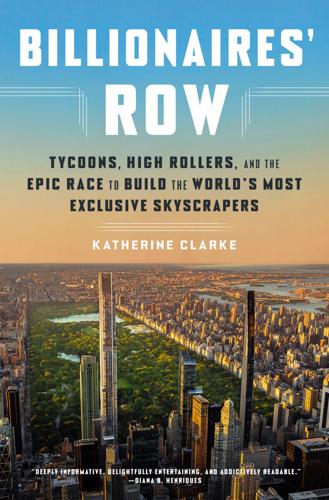
Billionaires' Row: Tycoons, High Rollers, and the Epic Race to Build the World's Most Exclusive Skyscrapers
by
Katherine Clarke
Published 13 Jun 2023
The deal, completed in just ten days at the height of what now appeared to have been a dizzyingly overheated pre-financial-crisis market, had dazzled the industry and cemented his reputation for having nerves of steel. Though some branded the deal as reckless, others saw it as the move of a visionary who, as in the case of the Apple cube, recognized opportunity where others did not. With the single deal, Macklowe had more than doubled the size of his real estate portfolio. However, as the subprime mortgage crisis spilled over into the commercial real estate world, Macklowe struggled to lock down a lender willing to refinance a short-term, high-interest, multi-billion-dollar bridge loan he had secured from his lenders, Fortress Investment Group and Deutsche Bank, to buy the Blackstone portfolio. And, to make matters worse, he had pledged the General Motors Building, among other properties, as collateral for more than $7 billion in debt used for the deal.
…
By the end of the year, real gross domestic product had fallen 4.3 percent from its peak in 2007, the largest decline in the postwar era, and the unemployment rate, which was 5 percent in December 2007, had reached 10 percent by October 2009. And compared to the free-wheeling days that precipitated the subprime mortgage crisis at the root of the financial crisis, home purchasing had gotten harder. The foreclosure crisis had precipitated broad changes across the nation’s housing markets and significantly altered underwriting standards for mortgages. Banks required larger down payments, had stricter income and asset tests, and applied far greater scrutiny to borrowers.
…
GO TO NOTE REFERENCE IN TEXT He had then taken great pleasure: Vicky Ward, The Liar’s Ball (New York: Wiley, 2014). GO TO NOTE REFERENCE IN TEXT In 2007, the developer had completed: Charles V. Bagli and Terry Pristin, “Harry Macklowe’s $6.4 Billion Bill,” New York Times, January 6, 2008. GO TO NOTE REFERENCE IN TEXT as the subprime mortgage crisis spilled over: Terry Pristin, “Developer’s Big Manhattan Move Faces a Time and Credit Squeeze,” New York Times, August 22, 2007. GO TO NOTE REFERENCE IN TEXT As the night crept into the early morning: Charles V. Bagli, “Macklowes Sell G.M. Building for $2.9 Billion,” New York Times, May 25, 2008.
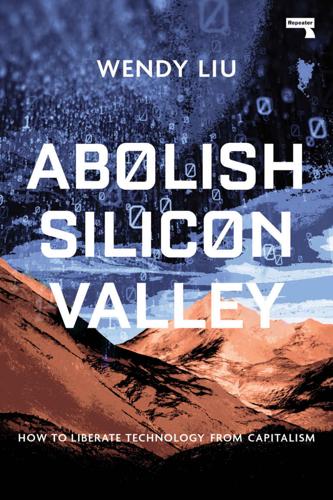
Abolish Silicon Valley: How to Liberate Technology From Capitalism
by
Wendy Liu
Published 22 Mar 2020
My discomfort with the tech-exacerbated inequality in San Francisco was starting to brush up against my latent belief in the goodness of the tech industry, and I didn’t know how to reconcile the two. Having started university not long after the 2008 financial crisis, my impression of Wall Street was that it was merely a clever form of grift. One of my algebra professors devoted an entire lecture to a mathematical derivation of the Gaussian copula’s role in the subprime mortgage crisis, interspersed with wry commentary on Wall Street greed. I saw the vast amounts of money flowing to that sector as illegitimate, with the recent financial crisis serving as proof. Tech wasn’t like that, though. Sure, there was a lot of money swimming around the industry, but everything was justified because the industry was doing good in the world.
…
It then floods into the tech sector, buoying up valuations beyond what can be sustained even by a market this irrational. When the bubble bursts in the form of the dot-com crash, leaving behind job losses and half-baked promises in its wake, the money simply sidles over to more promising ventures, like inflating real estate assets.3 And when that collapses in the form of the subprime mortgage crisis, the money slowly trickles back into tech, in thrall to a collective amnesia about the causes of the last bubble. That surely wasn’t the moribund gasp of a diseased economic system — it was simply too early. This time is different; this time the tech industry will be worthy of its valuations.
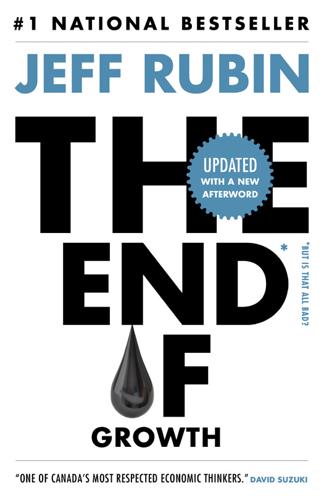
The End of Growth
by
Jeff Rubin
Published 2 Sep 2013
Without the giant bonuses that motivate bankers to take big gambles with other people’s money, maybe the world’s banks would go back to doing what they used to do, which was to prudently lend out depositors’ money to customers. Whatever shape it takes, the coming European banking crisis, following so closely on the heels of the subprime mortgage crisis, is about to push the pendulum back to ever greater government regulation of financial markets. WILL AMERICA DEFAULT? The financially strapped PIIGS aren’t the only countries at risk of default. If America’s annual budget deficit drops to $845 billion in 2013, as projected, it will be the first time in five years that the gap between tax revenue and spending has dipped below $1 trillion.
…
An epidemic of bank failures compelled Washington to pass the Glass-Steagall Act that I mentioned above, to erect barriers between deposit-taking institutions and investment banks. Under the act’s regulatory yoke, the United States enjoyed a remarkably stable financial system for the better part of five decades. That era ended with the push toward deregulation advocated by Reaganomics in the 1980s. The lack of oversight that led to the subprime mortgage crisis offers ample evidence that regulatory reform is long overdue. The last round of bailouts has also stoked pent-up public demand for change. If another round of bank failures leads to more public bailouts, no amount of campaign funding from investment banks will save politicians from the wrath of taxpayers who are still waiting to see any meaningful regulatory reforms for the industry.

Our Final Invention: Artificial Intelligence and the End of the Human Era
by
James Barrat
Published 30 Sep 2013
The subprime mortgage scandal that caused the worst global downturn since the Great Depression cost about $10 trillion globally, but around $4 trillion at home. The Enron scandal comes in at about $71 billion, while the Bernie Madoff fraud cost almost as much, at $64.8 billion. These numbers show that in dollar cost per incident, financial fraud competes with the most expensive terrorist act in history, and the subprime mortgage crisis dwarfs it. When researchers put advanced AI into the hands of businessmen, as they imminently will, these people will suddenly possess the most powerful technology ever conceived of. Some will use it to perpetrate fraud. I think the next cyberattack will consist of “friendly fire,” that is, it’ll originate at home, damage infrastructure, and kill Americans.
…
Searle, John self-awareness Self-Aware Systems self-improvement self-preservation September 11 attacks serial processing SETI (Search for Extraterrestrial Intelligence) Shostak, Seth Silicon Valley Singularitarians Singularity definitions of Kurzweil and technological Singularity Is Near, The (Kurzweil) Singularity Summit Singularity University Sir Groovy Siri 60 Minutes Skilling, Jeffrey Smart Action smart phones see also iPhone software complexity of malware see also programming solar energy space exploration “Speculations Concerning the First Ultraintelligent Machine” (Good) speech recognition SRI International stealth companies Sterrit, Roy Stibel, Jeff Stuxnet subprime mortgage crisis Symantec SyNAPSE Technological Risk (Lewis) technology journalism Terminator movies terrorism 9/11 attacks Thiel, Peter Thinking Machines, Inc. Three Mile Island tightly coupled systems Thrun, Sebastian transhumans transistors Traveller Trillion Credit Squadron Turing, Alan Turing machine Turing test Tversky, Amos two-minute problem 2001: A Space Odyssey Ulam, Stanislaw utility function Vassar, Michael Vicarious Systems Vinge, Vernor violence Virginia Tech Massacre Virtually You (Aboujaoude) voice recognition von Neumann, John Voss, Peter Wallach, Wendall Wall Street Warwick, Kevin Washington Post Watson weapons, see military Whitby, Blay “Why the Future Doesn’t Need Us” (Joy) Wired for Thought (Stibel) Wissner-Gross, Alexander D.
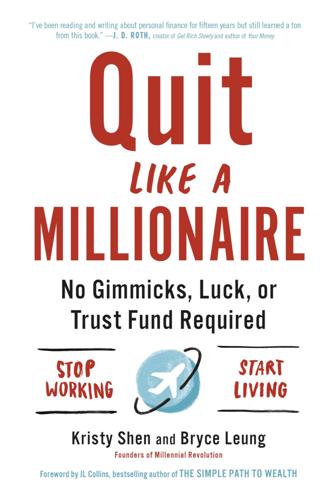
Quit Like a Millionaire: No Gimmicks, Luck, or Trust Fund Required
by
Kristy Shen
and
Bryce Leung
Published 8 Jul 2019
“Everything okay?” Bryce called from the front door, having just returned home from work. “No, everything is not fucking okay! Have you been paying attention to the stock market?!” The Dow had just plunged over three hundred points, the papers had been screaming about something called the “subprime mortgage crisis” that I didn’t understand, and most important, we were losing money—about 20 percent of our portfolio. (See appendix B for details of our exact numbers.) “So, it’s a down day.” Bryce shrugged. “It’ll be fine.” I grabbed a copy of the paper and shoved it in his face. “This is not just a down day!
…
L., 14 Steve and Elaine’s story, 264–65 stock market backup plans and, 210, 212 Bucket System and, 205, 207, 209, 209–10 Cash Cushion and Yield Shield, 174, 175–77, 180, 181 Control Theory, 215, 217 the crash of 2008, 112–19, 114, 114–15, 116, 118–19, 174, 176, 249, 273 4 Percent Rule and, 162–63 housing vs., 81, 85 oil crash (2015), 175, 203–4, 273 rich people and, 87 surviving a stock market crash, 100–120, 176, 195 taxes and, 137 stocks banks are robbing you, 90, 91, 92, 93 bonds vs., 101–5, 101–6 dividends, 123, 124, 137, 137, 178, 183–84, 184–86, 187 exchange-traded funds (ETFs) and, 108, 109 index investing vs., 93–95, 97–98, 98–99, 176 inflation and, 220 Investors (millionaires) and, 268, 271, 275 picking (Step 1 of Modern Portfolio Theory), 104–5, 104–6, 113, 120 preferred shares, 142, 143, 144, 180–81, 181, 182, 185, 187 taxes and, 138, 140, 142, 142, 143, 143, 144 See also capital gains StudentAid.ed.gov, 41 student debt, 39–43, 41, 44, 45 “subprime mortgage crisis,” 112 superfunds, 91 surviving a stock market crash, 100–120, 176, 195 Susan’s story, 50 Sutherland-Miller, Jennifer, 233, 240–41, 244, 245 SwapIt.com, 160 sweet potatoes, 7 swim, learning to, 49–50 Swiss Alps, 189, 192 switching careers and POT scores, 32, 259 tax brackets and contributing to retirement, 130–33, 130–34, 135 Tax Cuts and Jobs Act, 83 tax-deferred accounts, withdrawing from, 144–48, 145–48 taxes, never paying them again, 134, 136–55 Tax-Free Savings Account (TFSA), 129, 130–33, 205 tax optimization, 138–44, 140, 140–44, 142, 154–55 tax-reduction strategies, 121–35 tax shelter vs. tax deferment, 123–30, 124, 124–27, 130, 131, 134–37, 139–40, 140, 140–44, 146, 149, 154, 205 term life insurance, 223, 225 Thailand, 49, 59–60, 189, 191, 195, 197–98, 198–99, 211, 212, 264–65 third-culture kid (TCK), 242 this time it’s personal, 70–77, 71–72, 74, 76 time and money link, 35, 37, 159, 161, 165, 165–69, 167–68, 267, 270 time, scarcity of, and effect on focus, 11 time, using it wisely, and the best life, xii, 267 Todd, Benjamin, 27 Toronto, 69, 256–57 Toronto Stock Exchange (TSX), 100, 106, 110, 113, 185 tourist visas, 198, 199 toy bear, author’s story about, 8, 11 traditional IRAs, 126, 127, 128–30, 130–32, 131, 134, 135, 146, 146–48, 147, 205, 208, 229 TravelCards.CardRatings.com, 197 traveling backup plan, 210, 211–12, 216, 218, 221, 223 falling in love with travel, 66, 189–90, 273 frequent-flyer miles, 196–97, 202 school-age kids and, 233, 239–45 See also geographic arbitrage traveling the world, the cost of, 190, 191–94, 191–95, 201–2, 211, 219 travel insurance vs. expat insurance, 191, 197–98, 202 Trinity University Study, 162, 179, 216, 218 TSP, 125, 127, 134 “two-market problem,” 160 UK, 191, 191–92, 251 unexpected costs, 67, 76, 77 United States.
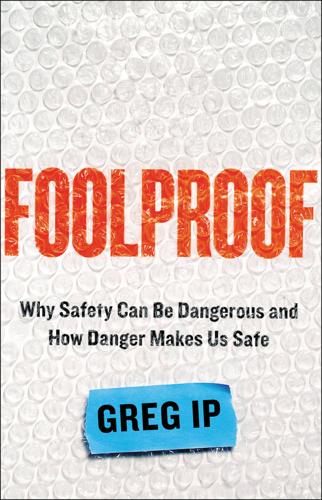
Foolproof: Why Safety Can Be Dangerous and How Danger Makes Us Safe
by
Greg Ip
Published 12 Oct 2015
Investigators were never able to pinpoint the original source of the E. coli although they found identical samples in wild pig and cattle feces in a pasture near where the spinach had been harvested. But while the outbreak was under way, the FDA, not knowing its origin, cast a wide net. The spinach recall was to food what the subprime mortgage crisis was to finance: a watershed event that prompted wholesale regulatory changes. There had been proposals stalled in Congress for years to require growers and processors throughout the food supply chain to take preventive steps against contamination and audit their suppliers to aid in tracing sources of contamination.
…
Deprez, “New York Businesses Get H1N1 Vaccine,” Bloomberg News, Nov. 2, 2009, http://www.businessweek.com/bwdaily/dnflash/content/nov2009/db2009112_606442.htm. 30 Goldman had advanced: Kurt Eichenwald, “The Day the Nation’s Cash Pipeline Almost Ran Dry,” New York Times, October 2, 1988. 31 Naturally, such a policy: This is based on an interview with a former Goldman Sachs official. 32 Goldman prepares: From the Goldman Sachs Group, Inc., Form 10-K Annual Report, for the fiscal year ended December 31, 2013, 95–96. 33 Goldman protected itself: This description of Goldman’s subprime mortgage activities and its role in creating and using the ABX index is drawn from the report by the United States Senate Permanent Subcommittee on Investigations, “Wall Street and the Financial Crisis: Anatomy of a Financial Collapse,” 400–406; Senate Subcommittee report, page 9. 34 Goldman’s demands were based: Serena Ng and Carrick Mollenkamp, “Goldman Details Its Valuations with AIG,” Wall Street Journal, August 1, 2010, accessed at http://www.wsj.com/news/articles/SB10001424052748703787904575403423902297954?mg=reno64-wsj. 35 In 2011, Nancy Wallace and Richard Stanton: This is based on an interview with Nancy Wallace and the paper she co-wrote with Richard Stanton, “The Bear’s Lair: Index Credit Default Swaps and the Subprime Mortgage Crisis,” Review of Financial Studies 24, no. 10 (2011): 3250–3280, available at http://faculty.haas.berkeley.edu/stanton/papers/pdf/indices.pdf. 36 it later claimed: Goldman Sachs Group, “Overview of Goldman Sachs’ Interaction with AIG and Goldman Sachs’ Approach to Risk Management,” available at http://www.goldmansachs.com/media-relations/in-the-news/archive/aig-summary.html. 37 But $170 million: “AIG External CDS Notional by Counterparty as of 9/15/08,” document submitted by Goldman Sachs to Chuck Grassley, available at http://www.grassley.senate.gov/sites/default/files/about/upload/Attachment-1.pdf. 38 After 9/11, its policy was canceled: Testimony of Chicago CFO Walter K.
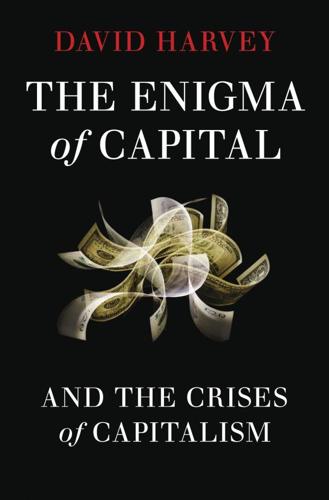
The Enigma of Capital: And the Crises of Capitalism
by
David Harvey
Published 1 Jan 2010
In January 2008, Wall Street bonuses added up to $32 billion, just a fraction less than the total in 2007. This was a remarkable reward for crashing the world’s financial system. The losses of those at the bottom of the social pyramid roughly matched the extraordinary gains of the financiers at the top. But by the autumn of 2008 the ‘subprime mortgage crisis’, as it came to be called, had led to the demise of all the major Wall Street investment banks, through change of status, forced mergers or bankruptcy. The day the investment bank Lehman Brothers went under – 15 September 2008 – was a defining moment. Global credit markets froze, as did most lending worldwide.
…
.: Limits to Growth 72 meat-based diets 73, 74 Medicare 28–9, 224 Mellon, Andrew 11, 98 mercantilism 206 merchant capitalists 40 mergers 49, 50 forced 261 Merrill Lynch 12 Merton, Robert 100 methane gas 73 Mexico debt crisis (1982) 10, 19 northern Miexico’s proximity to the US market 36 peso rescue 261 privatisation of telecommunications 29 and remittances 38 standard of living 10 Mexico City 243 microcredit schemes 145–6 microeconomics 237 microenterprises 145–6 microfinance schemes 145–6 Middle East, and oil issue 77, 170, 210 militarisation 170 ‘military-industrial complex’ 91 minorities: colonisation of urban neighbourhoods 247, 248 Mitterrand, François 198 modelling of markets 262 modernism 171 monarchy 249 monetarism 237 monetisation 244 money centralised money power 49–50, 52 a form of social power 43, 44 limitlessness of 43, 47 loss of confidence in the symbols/quality of money 114 universality of 106 monoculture 186 Monopolies Commission 52 monopolisation 43, 68, 95, 113, 116, 221 Monsanto 186 Montreal Protocol (1989) 76, 187 Morgan Stanley 19 Morishima, Michio 70 Morris, William 160 mortgages annual rate of change in US mortgage debt 7 mortgage finance for housing 170 mortgage-backed bonds futures 262 mortgage-backed securities 4, 262 secondary mortgage market 173, 174 securitisation of local 42 securitisation of mortgage debt 85 subprime 49, 174 Moses, Robert 169, 171, 177 MST (Brazil) 257 multiculturalism 131, 176, 231, 238, 258 Mumbai, India anti-Muslim riots (early 1990s) 247 redevelopment 178–9 municipal budgets 5 Museum of Modern Art, New York 21 Myrdal, Gunnar 196 N Nandigram, West Bengal 180 Napoleon III, Emperor 167, 168 national debt 48 National Economic Council (US) 11, 236 national-origin quotas 14 nationalisation 2, 4, 8, 224 nationalism 55–6, 143, 194, 204 NATO 203 natural gas 188 ‘natural limits’ 47 natural resources 30, 71 natural scarcity 72, 73, 78, 80, 83, 84, 121 nature and capital 88 ‘first nature’ 184 relation to 121, 122 ‘the revenge of nature’ 185 ‘second nature’ 184, 185, 187 as a social product 188 neocolonialism 208, 212 neoliberal counter-revolution 113 neoliberalism 10, 11, 19, 66, 131, 132, 141, 172, 175, 197, 208, 218, 224, 225, 233, 237, 243, 255 Nepal: communist rule in 226 Nevada, foreclosure wave in 1 New Deal 71 ‘new economy’ (1990s) 97 New Labour 45, 255 ‘new urbanism’ movement 175 New York City 11 September 2001 attacks 41 fiscal crisis (1975) 10, 172, 261 investment banks 19, 28 New York metropolitan region 169, 196 Nicaragua 189 Niger delta 251 non-governmental organisations (NGOs) 35, 253–4 non-interventionism 10 North Africa, French import of labour from 14 North America, settlement in 145 North American Free Trade Association (NAFTA) 200 Northern Ireland emergency 247 Northern Rock 2 Norway: Nordic cris (1992) 8 nuclear power 188 O Obama, Barack 11, 27, 34, 210 Obama administration 78, 121 O’Connor, Jim 77, 78 offshoring 131 Ogoni people 251 oil cheap 76–7 differential rent on oil wells 83 futures 83, 84 a non-renewable resource 82 ‘peak oil’ 38, 73, 78, 79, 80 prices 77–8, 80, 82–3, 261 and raw materials prices 6 rents 83 United States and 76–7, 79, 121, 170, 210, 261 OPEC (Organisation of Oil-Producing Countries) 83, 84 options markets currency 262 equity values 262 unregulated 99, 100 Orange County, California bankruptcy 100, 261 Organisation for Economic Cooperation and Development (OECD) 51 organisational change 98, 101 organisational forms 47, 101, 121, 127, 134, 238 Ottoman Empire 194 ‘over the counter’ trading 24, 25 overaccumulation crises 45 ozone hole 74 ozone layer 187 P Pakistan: US involvement 210 Palley, Thomas 236 Paris ‘the city of light’ 168 epicentre of 1968 confrontations 177, 243 Haussmann’s rebuilding of 49, 167–8, 169, 171, 176 municipal budget crashes (1868) 54 Paris Commune (1871) 168, 171, 176, 225, 243, 244 Partnoy, Frank: Ubfectious Greed 25 patents 221 patent laws 95 patriarchy 104 pensions pension funds 4, 5, 245 reneging on obligations 49 Péreire brothers 49, 54, 98, 174 pesticides 185, 186, 187 petty bourgeois 56 pharmaceutical sector 129, 245 philanthropy 44 Philippines: excessive urban development 8 Phillips, Kevin 206 Pinochet, General Augusto 15, 64 plant 58 Poland, lending to 19 political parties, radical 255–6 politics capitalist 76 class 62 co-revolutionary 241 commodified 219 depoliticised 219 energy 77 identity 131 labour organizing 255 left 255 transformative 207 pollution air 77 oceanic 74 rights 21 ‘Ponts et Chaussées’ organisation 92 Ponzi schemes 21, 114, 245, 246 pop music 245–6 Pope, Alexander 156 population growth 59, 72, 74, 121, 167 and capital accumulation 144–7 populism 55–6 portfolio insurance 262 poverty and capitalism 72 criminalisation and incarceration of the poor 15 feminisation of 15, 258 ‘Great Society’ anti-poverty programmes 32 Prague 243 prices commodity 37, 73 energy 78 food grain 79–80 land 8, 9, 182–3 oil 8, 28, 37–8, 77–8, 80, 82–3, 261 property 4, 182–3 raw material 37 reserve price 81–2 rising 73 share 7 primitive accumulation 58, 63–4, 108, 249 private consortia 50 private equity groups 50 private property and radical egalitarianism 233, 234 see also property markets; property rights; property values privatisation 10, 28, 29, 49, 251, 256, 257 pro-natal policies 59 production expansion of 112, 113 inadequate means of 47 investment in 114 liberating the concept 87 low-profit 29 offshore 16 production of urbanisation 87 reorganisation and relocation of 33 revolutionising of 89 surplus 45 technologies 101 productivity agreements 14, 60, 96 agricultural 119 cotton industry 67 gains 88, 89 Japan and West Germany 33 rising 96, 186 products development 95 innovation 95 new lines 94, 95 niches 94 profit squeeze 65, 66, 116 profitability constrains 30 falling 94, 131 of the financial sector 51 and wages 60 profits easy 15 excess 81, 90 falling 29, 72, 94, 116, 117 privatising 10 rates 70, 94, 101 realisation of 108 proletarianisation 60, 62 property markets crash in US and UK (1973–75) 8, 171–2, 261 overextension in 85 property market-led Nordic and Japanese bank crises 261 property-led crises (2007–10) 10, 261 real estate bubble 261 recession in UK (after 1987) 261 property rights 69, 81–2, 90, 122, 179, 198, 233, 244, 245 Property Share Price Index (UK) 7 property values 171, 181, 197, 248 prostitution 15 protectionism 31, 33, 43, 211 punctuated equilibrium theory of natural evolution 130 Putin, Vladimir 29, 80 Q Q’ing dynasty 194 quotas 16 R R&D (research and development) 92, 95–6 race issues 104 racism 61, 258 radical egalitarianism 230–34 railroads 42, 49, 191 Railwan, rise of (1970s) 35 rare earth metals 188 raw materials 6, 16, 37, 58, 77, 101, 113, 140, 144, 234 RBS 20 Reagan, Ronald 15, 64, 131, 141 Reagan-Thatcher counter revolution (early 1980s) 71 Reagan administration 1, 19 Reagan recession (1980–82) 60, 261 Real Estate Investment Trusts (US) 7 recession 1970s 171–2 language of 27 Reagan (1980–82) 60, 261 Red Brigade 254 reforestation 184 refrigeration 74 reinvestment 43, 45, 66–7, 110–12, 116 religious fundamentalism 203 religious issues 104 remittances 38, 140, 147 rentiers 40 rents differential rent 81, 82, 83 on intellectual property rights 221 land 182 monetisation of 48, 109 monopoly 51, 81–2, 83 oil 83 on patents 221 rising 181 reproduction schemas 70 Republican Party (US) 11, 141 reserve price 81 resource values 234 Ricardo, David 72, 94 risks, socialising 10 robbery 44 Robinson, Joan 238 robotisation 14, 136 Rockefeller, John D. 98 Rockefeller brothers 131 Rockefeller foundation 44, 186 Roman Empire 194 Roosevelt, Franklin D. 71 Rothschild family 98, 163 Royal Society 91, 156 royalties 40 Rubin, Robert 98 ‘rule of experts’ 99, 100–101 Russia bankruptcy (1998) 246, 261 capital flight crisis 261 defaults on its debt (1998) 6 oil and natural gas flow to Ukraine 68 oil production 6 oligarchs 29 see also Soviet Union S Saddam Hussein 210 Saint-Simon, Claude Henri de Rouvroy, Comte de 49 Saint-Simonians 87, 168 Salomon Brothers 24 Samuelson, Robert 235, 239 Sandino, Augusto 189 Sanford, Charles 98 satellites 156 savings 140 Scholes, Myron 100 Schumer, Charles 11 Schumpeter, Joseph 46 Seattle battle of (1999) 38, 227 general strike (1918) 243 software development in 195 Second World War 32, 168–70, 214 sectarianism 252 securitisation 17, 36, 42 Sejong, South Korea 124–6 service industries 41 sexism 61 sexual preferences issues 104, 131, 176 Shanghai Commune (1967) 243 shark hunting 73, 76 Shell Oil 79, 251 Shenzhen, China 36 shop floor organisers (shop stewards) 103 Silicon Valley 162, 195, 216 Singapore follows Japanese model 92 industrialisation 68 rise of (1970s) 35 slavery 144 domestic 15 slums 16, 151–2, 176, 178–9 small operators, dispossession of 50 Smith, Adam 90, 164 The Wealth of Nations 35 social democracy 255 ‘social democratic’ consensus (1960s) 64 social inequality 224 social relations 101, 102, 104, 105, 119, 121, 122, 123, 126, 127, 135–9, 152, 240 loss of 246 social security 224 social services 256 social struggles 193 social welfarism 255 socialism 136, 223, 228, 242, 249 compared with communism 224 solidarity economy 151, 254 Soros, George 44, 98, 221 Soros foundation 44 South Korea Asian Currency Crisis 261 excessive urban development 8 falling exports 6 follows Japanese model 92 rise of (1970s) 35 south-east Asia: crash of 1997–8 6, 8, 49, 246 Soviet Union in alliance with US against fascism 169 break-up of 208, 217, 227 collapse of communism 16 collectivisation of agriculture 250 ‘space race’ (1960s and 1970s) 156 see also Russia space domination of 156–8, 207 fixed spaces 190 ‘space race’ (1960s and 1970s) 156 Spain property-led crisis (2007–10) 5–6, 261 unemployment 6 spatial monopoly 164–5 special drawing rights 32, 34 special economic zones 36 special investment vehicles 36, 262 special purpose entities 262 speculation 52–3 speculative binges 52 speed-up 41, 42 stagflation 113 stagnation 116 Stalin, Joseph 136, 250 Standard Oil 98 state formation 196, 197, 202 state-corporate nexus 204 ‘space race’ (1960s and 1970s) 156 state-finance nexus 204, 205, 237, 256 blind belief in its corrective powers 55 ‘central nervous system’ for capital accumulation 54 characteristics of a feudal institution 55 and the current crisis 118 defined 48 failure of 56–7 forms of 55 fusion of state and financial powers 115 innovation in 85 international version of 51 overwhelmed by centralised credit power 52 pressure on 54 radical reconstruction of 131 role of 51 and state-corporate research nexus 97 suburbanisation 171 tilts to favour particular interests 56 statistical arbitrage strategies 262 steam engine, invention of 78, 89 Stiglitz, Joseph 45 stimulus packages 261 stock markets crash (1929) 211, 217 crashes (2001–02) 261 massive liquidity injections (1987) 236, 261 Stockton, California 2 ’structural adjustment’ programmes vii, 19, 261 subcontracting 131 subprime loans 1 subprime mortgage crisis 2 substance abuse 151 suburbanisation 73, 74, 76–7, 106–7, 169, 170, 171, 181 Summers, Larry 11, 44–5, 236 supermarket chains 50 supply-side theory 237 surveillance 92, 204 swaps credit 21 Credit Default 24, 262 currency 262 equity index 262 interest rate 24, 262 Sweden banking system crash (1992) 8, 45 Nordic crisis 8 Yugoslav immigrants 14 Sweezey, Paul 52, 113 ‘switching crises’ 93 systematic ‘moral hazard’ 10 systemic risks vii T Taipei: computer chips and household technologies in 195 Taiwan falling exports 6 follows Japanese model 92 takeovers 49 Taliban 226 tariffs 16 taxation 244 favouring the rich 45 inheritance 44 progressive 44 and the state 48, 145 strong tax base 149 tax rebates 107 tax revenues 40 weak tax base 150 ‘Teamsters for Turtles’ logo 55 technological dynamism 134 technologies change/innovation/new 33, 34, 63, 67, 70, 96–7, 98, 101, 103, 121, 127, 134, 188, 193, 221, 249 electronic 131–2 ‘green’ 188, 221 inappropriate 47 labour fights new technologies 60 labour-saving 14–15, 60, 116 ‘rule of experts’ 99, 100–101 technological comparative edge 95 transport 62 tectonic movements 75 territorial associations 193–4, 195, 196 territorial logic 204–5 Thailand Asian Currency Crisis 261 excessive urban development 8 Thatcher, Margaret, Baroness 15, 38, 64, 131, 197, 255 Thatcherites 224 ‘Third Italy’, Bologna 162, 195 time-space compression 158 time-space configurations 190 Toys ‘R’ Us 17 trade barriers to 16 collapses in foreign trade (2007–10) 261 fall in global international trade 6 increase in volume of trading 262 trade wars 211 trade unions 63 productivity agreements 60 and US auto industry 56 trafficking human 44 illegal 43 training 59 transport costs 164 innovations 42, 93 systems 16, 67 technology 62 Treasury Bill futures 262 Treasury bond futures 262 Treasury instruments 262 TRIPS agreement 245 Tronti, Mario 102 Trotskyists 253, 255 Tucuman uprising (1969) 243 Turin: communal ‘houses of the people’ 243 Turin Workers Councils 243 U UBS 20 Ukraine, Russian oil and natural gas flow to 68 ultraviolet radiation 187 UN Declaration of Human Rights 234 UN development report (1996) 110 Un-American Activities Committee hearings 169 underconsumptionist traditions 116 unemployment 131, 150 benefits 60 creation of 15 in the European Union 140 job losses 93 lay-offs 60 mass 6, 66, 261 rising 15, 37, 113 and technological change 14, 60, 93 in US 5, 6, 60, 168, 215, 261 unionisation 103, 107 United Fruit Company 189 United Kingdom economy in serious difficulty 5 forced to nationalise Northern Rock 2 property market crash 261 real average earnings 13 train network 28 United Nations 31, 208 United States agricultural subsidies 79 in alliance with Soviet Union against fascism 169 anti-trust legislation 52 auto industry 56 blockbusting neighbourhoods 248 booming but debt-filled consumer markets 141 and capital surplus absorption 31–2 competition in labour markets 61 constraints to excessive concentration of money power 44–5 consumerism 109 conumer debt service ratio 18 cross-border leasing with Germany 142–3 debt 158, 206 debt bubble 18 fiscal crises of federal, state and local governments 261 health care 28–9 heavy losses in derivatives 261 home ownership 3 housing foreclosure crises 1–2, 4, 38, 166 industries dependent on trade seriously hit 141 interventionism in Iraq and Afghanistan 210 investment bankers rescued 261 investment failures in real estate 261 lack of belief in theory of evolution 129 land speculation scheme 187–8 oil issue 76–7, 79, 80, 121, 170, 210, 261 population growth 146 proletarianisation 60 property-led crisis (2007–10) 261 pursuit of science and technology 129 radical anti-authoritarianism 199 Reagan Recession 261 rescue of financial institutions 261 research universities 95 the reversing origins of US corporate profits (1950–2004) 22 the right to the city movement 257 ‘right to work’ states 65 savings and loan crisis (1984–92) 8 secondary mortgage market 173 ‘space race’ (1960s and 1970s) 156 suburbs 106–7, 149–50, 170 train network 28 unemployment 5, 6, 60, 168, 215, 261 unrestricted capitalist development 113 value of US stocks and homes, as a percentage of GDP 22 and Vietnam War 171 wages 13, 62 welfare provision 141 ‘urban crisis’ (1960s) 170 urban ‘heat islands’ 77 urban imagineering 193 urban social movements 180 urbanisation 74, 85, 87, 119, 131, 137, 166, 167, 172–3, 174, 240, 243 US Congress 5, 169, 187–8 US Declaration of Independence 199 US National Intelligence Council 34–5 US Senate 79 US Supreme Court 179 US Treasury and Goldman Sachs 11 rescue of Continental Illinois Bank 261 V Vanderbilt family 98 Vatican 44 Veblen, Thorstein 181–2 Venezuela 256 oil production 6 Vietnam War 32, 171 Volcker, Paul 2, 236 Volcker interest rate shock 261 W wage goods 70, 107, 112, 162 wages and living standards 89 a living wage 63 national minimum wage 63 rates 13, 14, 59–64, 66, 109 real 107 repression 12, 16, 21, 107, 110, 118, 131, 172 stagnation 15 wage bargaining 63 Wal-Mart 17, 29, 64, 89 Wall Street, New York 35, 162, 200, 219, 220 banking institutions 11 bonuses 2 ‘Party of Wall Street’ 11, 20, 200 ‘War on Terror’ 34, 92 warfare 202, 204 Wasserstein, Bruce 98 waste disposal 143 Watt, James 89 wealth accumulation by capitalist class interests 12 centralisation of 10 declining 131 flow of 35 wealth transfer 109–10 weather systems 153–4 Weather Underground 254 Weill, Sandy 98 Welch, Jack 98 Westphalia, Treaty of (1648) 91 Whitehead, Alfred North 75 Wilson, Harold 56 wind turbines 188 women domestic slavery 15 mobilisation of 59, 60 prostitution 15 rights 176, 251, 258 wages 62 workers’ collectives 234 working hours 59 World Bank 36, 51, 69, 192, 200, 251 ‘Fifty Years is Enough’ campaign 55 predicts negative growth in the global economy 6 World Bank Development Report (2009) 26 World Trade Organisation (WTO) 200, 227 agreements 69 street protests against (Seattle, 1999) 55 TRIPS agreement 245 and US agricultural subsidies 79 WorldCom 8, 100, 261 worldwide web 42 Wriston, Walter 19 X X-rays 99 Y Yugoslavia dissolution of 208 ethnic cleansings 247 Z Zapatista revolutionary movement 207, 226, 252 Zola, Émile 53 The Belly of Paris 168 The Ladies’ Paradise 168

No Such Thing as a Free Gift: The Gates Foundation and the Price of Philanthropy
by
Linsey McGoey
Published 14 Apr 2015
Long accustomed to working with meagre funds, non-profit organizations have throughout history found innovative ways to help low-income populations. While examples of mismanagement in any sector are not hard to find, dysfunction in the non-profit world has rarely approached the level of mismanagement resulting in catastrophes on the scale of Worldcom, Enron, or the 2008 subprime mortgage crisis. At a time when reckless lending in the private sector has rarely been more apparent, charities are being asked to increasingly emulate for-profit operating strategies, exhorted to emulate the private sector when logic suggests that the reverse should be the case. Proponents insist that what separates philanthrocapitalism and social entrepreneurship from early forms of enterprise is an emphasis on social value.
…
Unlike ideas of corporate social responsibility which were popular in the 1980s and 1990s – and which often had an aura of expiation about them, implying that socially oriented philanthropy was needed to make amends for corporate abuses – the new social investors believe that business success is evidence of social value. There is no longer any whiff of atonement or reparation for past corporate practices. The only sin is insufficient commercial expansion to untouched realms. What’s remarkable about this belief is its resilience at a time when the recent subprime mortgage crisis seemed poised to douse the enthusiasm of social entrepreneurship champions – a resilience that surprised even staffers at places like the World Economic Forum. In March 2009 I sat in the WEF’s Geneva office with a WEF policy advisor. ‘When this crisis hit last autumn’, she said, ‘I [thought] that’s going to impact us a lot because no one is going to want to send a CEO for five days or four days in this time of crisis’.
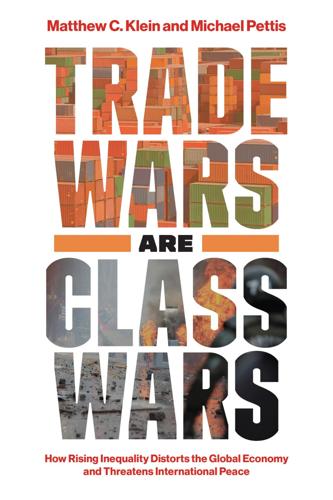
Trade Wars Are Class Wars: How Rising Inequality Distorts the Global Economy and Threatens International Peace
by
Matthew C. Klein
Published 18 May 2020
See also Russia Spain: current account balance in, 91 and European banking glut, 63 German surpluses absorbed by, 4, 162, 229–30 and global credit boom (1820s), 48 and global value chains, 28 and List’s “National System” of economic development, 16 Internet access speeds in, 169 savings and investment in, 83, 84, 91, 171 taxes in, 172 Stability and Growth Pact (1997), 146, 170 Stalin, Joseph, 72–73, 104 Starbucks, 35 State Administration for Foreign Exchange (SAFE, China), 199–200 Steinbrück, Peer, 167 Stiglitz, Joseph, 180 Streeck, Wolfgang, 166 Studenski, Paul, 238n14 subprime mortgage crisis (U.S.), 63, 205–13, 209f subsidies: in China, 3, 107–8, 109, 112–14, 116, 118 in Germany, 161 in Japan, 72, 75 in United States, 78, 227 Summers, Larry, 222 Suter, Christian, 46 Sweden, exchange rate regime in, 195 Switzerland: savings and investment in, 225 as tax haven, 35 Tai-Hsieh, Chang, 126 Taiwan: exchange rate regime in, 197 foreign exchange reserves in, 217 and global value chains, 28–29 savings and investment in, 225 tariffs: in France, 16 and List’s “National System” of economic development, 13, 14, 15, 16 and savings and investment, 72 in United Kingdom, 16 in United States, 20, 222–23 taxes: in China, 113, 129 and corporate tax avoidance, 30–34 in Europe, 172, 230 in Germany, 131, 148, 156–57 global tax havens, 34–39, 36f, 39f in Italy, 172 in Spain, 172 in United States, 177, 181, 212 Thailand: and Asian Financial Crisis (1997), 198 foreign exchange reserves in, 217 savings and investment in, 197 trade.
…
See also Bank of England United States, 174–220 bilateral trade imbalances in, 97–100 and Bretton Woods, 189–91 and Bretton Woods II, 195–201 business cycles in, 43 class warfare in, 212–13 colonial territories of, 18 corporate tax avoidance in, 30–39, 36f, 39f credit supply in, 201–5, 204f current account balance in, 87, 96, 97–100, 176–79, 180–84, 182f, 210, 213–18, 214–15f, 221–22 and dollar’s rise as global reserve asset, 189–95, 212f employment rate in, 174, 190, 194, 210–11, 214–16, 219, 227 entrepreneurship in, 13, 25 and European banking glut, 63–64 and exchange rate regimes, 20, 189–201 fiscal policy in, 180–85, 182f, 210 and global credit boom (1830s), 52–55 and global financial crisis (1873), 55, 57 and global financial crisis (2008), 201–13 and global value chains, 27, 29 and gold standard, 185–89 and Hamilton’s “Report on the Subject of Manufactures,” 11–17 inequality in, 177, 210, 226 inflation in, 194, 210 infrastructure in, 184, 202, 217, 226, 227 interest rates in, 176, 178, 196–97, 198, 199, 201, 206 manufacturing in, 14–15, 23, 178–79, 210–11, 212–13, 214, 227 missing surplus mystery in, 176–79 policy choices for, 226–28 productivity in, 210–11 reserve assets in, 185–89 safe asset shortage in, 201–5, 204f savings and investment in, 70, 77–78, 77f, 83, 84, 178, 208 subprime mortgage crisis in, 205–13, 209f subsidies in, 78, 227 tariffs in, 20, 222–23 taxes in, 177, 181, 212 trade dispute with China, 2–3, 222–23 unions in, 177 in World War I, 19–20. See also Federal Reserve verteilungskampf (distribution struggle, Germany), 154–59, 158f Vietnam War, 26 Volcker, Paul, 79, 224 Volkswagen, 148, 151 Washington, George, 12, 73 wealth inequality.
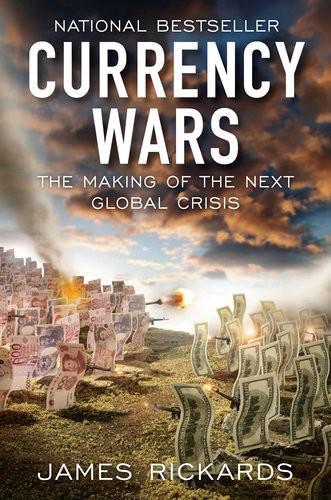
Currency Wars: The Making of the Next Gobal Crisis
by
James Rickards
Published 10 Nov 2011
They are bulls and bears, longs and shorts. Some will risk billions of dollars, others only a few hundred. These agents are densely connected. They trade and invest within networks of exchanges, brokers, automated execution systems and information flows. Interdependence is also characteristic of markets. When the subprime mortgage crisis struck in early August 2007, stocks in Tokyo fell sharply. Some Japanese analysts were initially baffled about why a U.S. mortgage crisis should impact Japanese stocks. The reason was that Japanese stocks were liquid and could be sold to raise cash for margin calls on the U.S. mortgage positions.
…
Slovic, Paul Smith, Adam Smithsonian Agreement social media social psychology, on economics Soros, George South Korea sovereign debt crisis of 2010, European sovereign wealth funds (SWFs) Spain special drawing rights (SDRs) stagflation state capitalism sterling crisis of 1992 devaluations and gold exchange standard Stiglitz, Joseph stimulus, Keynesian stimulus programs, Obama’s stock market crash critical state system of a of October 19, 1987 Strategic and Economic Dialogue (S&ED) Strategic Command, U.S. (STRATCOM) Strauss-Kahn, Dominque Strong, Benjamin subprime mortgage crisis, U.S. Sun Tzu Superclass (Rothkopf) supercurrencies supernotes Svensson, Lars Switzerland Taft, William H. Tainter, Joseph A. Taiwan Taleb, Nassim Nicholas tariffs Tauss, Randy Taylor, John B. Taylor rule Tea Party movement tech bubble collapse of 2000 Temin, Peter Thailand Time magazine Tobin, James Toronto Star Trade Act, U.S. 1988 trade deficits Trading with the Enemy Act of 1917 Treasury, U.S.
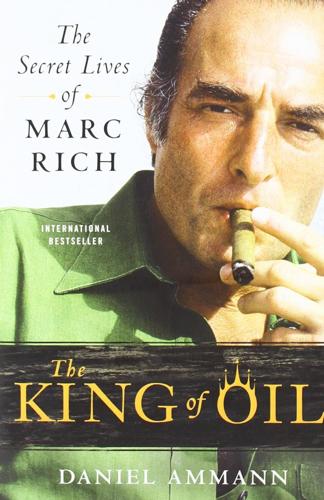
The King of Oil: The Secret Lives of Marc Rich
by
Daniel Ammann
Published 12 Oct 2009
When I ask him which language he is most comfortable with, he answers with a shake of his head and a sweep of his hand. He spoke German with his father and French with his mother. He often speaks Spanish with his daughters, who grew up in Spain, and in business he most often speaks English. These days Rich is heavily involved in the real estate business, and the subprime mortgage crisis is keeping him busy. He owns some land in Spain, the European country hit worst by the crisis, which is not of the best quality. He bought it a few years ago for 30 million in the hope that its value would rise during the prevailing real estate boom. Now the value of the land is melting like snow in the spring sun.
…
Moritz, 7–8, 20–24, 48, 219–20 Salinger, Pierre, 11 Sand, Leonard, 113–15 Sandinistas, 179 Santiago de Compostela, 214–15 Santos Blanco, Alfredo, 49–50, 55, 69 Saudi Arabia, 54, 57–58, 72, 270–71, 274 Sayan, 208 Scapegoating of Marc Rich, 145–46 Schumer, Charles, 250 Seaga, Edward, 188–89 Secret meeting with Marc Rich, 168–71 Security for Marc Rich, 10, 159–65 Seghers, Anna, 25 Selma (German nanny), 28–29 Senchukov, Boris, 162 Serpa Pinto, 31–32 Seven Sisters, 13–14, 55–57, 58, 84–85 Shah of Iran (Mohammad Reza Pahlavi), 64–67, 90–91, 92, 94, 96, 102–3, 190–91 Shamir, Yitzhak, 103 Shavit, Shabtai, 206, 246 Shays, Christopher H., 9, 117 Shin Bet, 158 Short-term vs. long-term thinking, 175–76 Sidec Overseas, 34 Sinclair, Upton, 25 Sister Sledge, 218 Six-Day War of 1967, 54, 65, 198 Sonangol (Sociedade Nacional de Combustiveis de Angola), 184–85 Sonatrach, 178 South Africa, 44, 181, 189–96 Southern District of New York, 105, 111–17, 120–21, 134–39, 167–71, 243, 255 South Korea, 35 Southwest High School, 33 Soviet Union, 43, 72, 84, 158 Spain, 48–51, 55, 68–70, 79–80, 160 Spanish Civil War, 22–23, 49–50 Spot oil market, 1–2, 13–14, 56, 70, 71–73, 82, 83–86, 101–2 Standard Oil, 58, 80 Starr, Kenneth, 251, 258 State Department, U.S., 110, 115, 131, 153–54, 165–66, 198–203 “Steamer trunk affair,” 113–14 Steinhardt, Michael, 5, 19, 149, 211, 236–37, 243, 244 Stiener, Richard C., 152 Strait of Hormuz, 65–66 Strategic Petroleum Reserve, 86 Strothotte, Willy, 228, 232, 233 Subprime mortgage crisis, 22–23 Sudan, 204–5, 269 Suez Canal, 43, 54–55, 65 Superdotado, 19 Supply-side economics, 77 Survivor mentality, 31–32 Suvretta House (St. Moritz), 7–8 Sweet Pain of Love, 218 Swissair Flight 111, 113–14 Swiss Federal Act on International Mutual Assistance in Criminal Matters (IMAC), 126–27, 284n Swiss Office for Police Matters, 128–29 Swiss Penal Code, 115, 152–53 Swiss tax treaty, 120–21, 125–27 Switzerland, 76–78, 125–34 extradition of Marc Rich, 128–34, 149–50 flight of Marc Rich to, 109–11, 113–16, 125–26, 201–2 “Sympathy for the Devil” (song), 7 Syria, 54, 72, 202 Taba Summit, 259 Tachkemoni School, 28 Tanker trade, 84–85, 189–90 Tapies, Antony, 10 Tax evasion and fraud, 8–9, 116–17, 125–28, 136–37, 145–47, 167–71 Texaco, 55–57 Thomajan, Bob, 110 Time (magazine), 137 Tin, 41, 44, 227 Torre de Madrid, 49 Trade liberalization, 267 Trader principle, 180–81 Trafford, John, 75–76, 80, 83, 115 Transaction costs, 85, 176 Trans-Asiatic Oil Ltd., 65–66 “Transfer pricing,” 145 Trau, René, 34, 217 Trillin, Calvin, 33–34 Troland, John, 107, 119 Trust, 40, 78, 86–88 Trust (Fukuyama), 86–87 Tucholsky, Kurt, 25 Tunisia, 14, 53, 63 Turkey, 82 20th Century Fox, 108, 111, 122, 123 20/20 (TV program), 254 UNITA (National Union for the Total Independence of Angola), 183–85 United Nations Human Rights Commission, 199 United Nations Oil-for-Food Programme, 231–32 United Nations Security Council, 191 United States of America v.
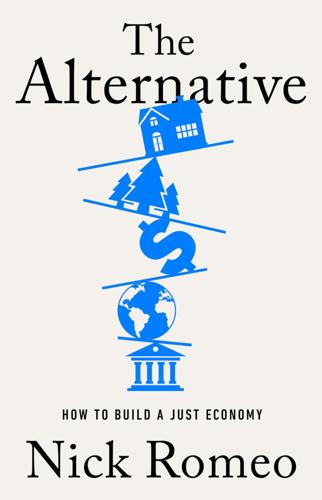
The Alternative: How to Build a Just Economy
by
Nick Romeo
Published 15 Jan 2024
But she saw that this ingenuity mattered only to the extent that it made people’s lives better or worse. When the financial crisis began in 2008, she had left the world of corporate law for an academic position at the University of North Carolina. But the memory of the screaming at Enron’s offices returned to her. The financial wizardry behind the subprime mortgage crisis had made millions of people’s lives worse.ii Unlike at Enron, much of the maneuvering that led to the Great Recession, however deceptive, had been perfectly legal. Omarova began to wonder how to prevent speculative bubbles not only by tinkering with regulation, but also by changing basic incentives in the financial system.
…
A variety of specific proposals exist, but the basic concept is to create capital accounts funded with public money to help poor families build intergenerational wealth and reap the power of compound interest. The state of Connecticut approved a program that automatically establishes such accounts for children of low-income families that qualify for Medicaid, but its funding has been delayed and its future is uncertain. ii The Enron collapse, the subprime mortgage crisis, and the 2022 meltdown of the cryptocurrency exchange FTX follow the same basic pattern, in which a sheen of financial wizardry disguises moral corruption and fraud. Conclusion Inflation and the Inevitable The strongest evidence that alternative arrangements are viable is to show that they already exist.
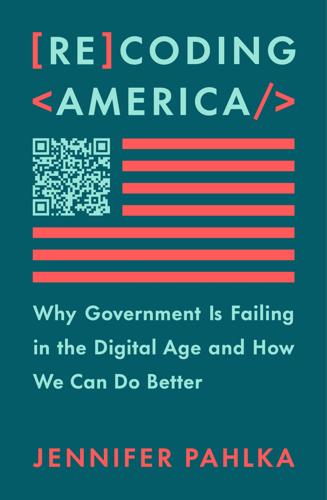
Recoding America: Why Government Is Failing in the Digital Age and How We Can Do Better
by
Jennifer Pahlka
Published 12 Jun 2023
So even as computers and the internet began reshaping society as we knew it, government leaders simply handed off anything digital to purchasing officers. They had more important things to think about. They did policy. The federal CIO post finally came into existence in 2009, with newly elected President Barack Obama appointing Vivek Kundra as the first person to hold the position.7 Obama inherited a country in economic tatters, the subprime mortgage crisis having just devastated global markets. Vivek inherited, in his words, “$27 billion in IT projects that were years behind schedule and over budget.” Trying to make up for lost time, he issued at least ten separate directives aimed at modernizing the federal government’s technology infrastructure and practices.
…
schools COVID shut down and enrolling children in vaccination clinics volunteering in Schoonover, Eric Scott, Tony search engines Seattle flu study Securities and Exchange Commission (SEC) Sheldon, Jack Shirky, Clay Silicon Valley Single Client Database Skype Small Business Administration (SBA) small cities and towns small government ideology cost of SOAP protocol Social Security Act (1935) Social Security Administration Social Security card Social Security website software agile vs. waterfall approach and importance of government development of mission-critical speed of development, as priority solar permitting Solomon, Jake Soss, Joe Spanish-language sites Stanford University State Department state legislators states federal grants and SNAP application UI programs and steel production stewardship stimulus programs Stop Payment Alert—Claim Review items subprime mortgage crisis Supplemental Nutrition Assistance Program (SNAP, food stamps) Table 64 Taft, William Tangherlini, Dan Tavenner, Marilyn Tavoulareas, Emily taxes automatic filing credits energy-saving rebates unpaid tax ID number tax return forms tech industry. See also outsourcing; Silicon Valley; vendors; venture capitalists; and specific companies “technically correct but entirely unhelpful” approach technology exchange program Technology Modernization Fund tech startups test environment testing stage 30 Rock (TV show) Time timelines Tocqueville, Alexis de top-down culture tradeoffs features, vs. quality and time translation service permissions Treasury Department Truman, Harry Trump, Donald Twitter UDP (multicast user datagram protocol) UIOnline Ukraine unemployment insurance (UI) United Kingdom (UK) Cabinet Office Government Digital Service (GDS) University of California (UC) Berkeley University of Minnesota US Air Force cockpit control design USAJobs website US Army US Congress 116th (2019–20) 117th (2021–22) bureaucrats’ deference to committees healthcare.gov and hearings Information Technology Architecture requirement and MACRA and mandated deadlines outcomes vs. procedure and prescription providers rule and rulemaking and state UI programs and tax code and waterfall and workforce cuts and US Constitution US Court of Appeals, Fifth Circuit US Department of Agriculture (USDA) US Digital Service (USDS) accomplishments of COVID tests website and creation of Glueck vs.

Broke: How to Survive the Middle Class Crisis
by
David Boyle
Published 15 Jan 2014
To call a centre something like that flew in the face of conventional economic thinking. Maybe it also showed disrespect to the markets themselves. There was a hint of heresy about it, even blasphemy. York University said no to his largesse. So did Imperial College London. ‘They just didn’t get it,’ he says. It was now 2007, the first whiff of what would become the subprime mortgage crisis was wafting into the news, and this time the London School of Economics said yes. His centre is now based there, next to the huge LSE Library, and at Toulouse University in France. The twin centres cost him £4 million and Mervyn King, the Bank of England governor, came to the launch party.
…
B., 37 property, investing in, 57, 168–71 public sector salaries, 268–9, 291 Public Service Agreement (PSA) targets, 264 public services, centralization of, 263–7 pubs, closure of, 252 Q ‘quangocracy’, 291 quant funds, 129 Quattrone, Frank, 114–15 Quilter Goodison, 134, 147 R Radley College, 59 railways, coming of, 35, 282 Raphael, Adam, 33 Rawnsley, Andrew, 225 Ray, Paul, 49 Raynsford, Nick, 265 Read, Peter, 217–19 remortgaging, 9–10 rents, 21, 68–9, 306 restrictive covenants, 302 retirement age, 180, 203, 302 Reynolds, Christina, 10–11 RIBA, 77–8 Richardson, Gordon, 62, 72 Richmond, 287 Riddell, Fred, 225 Ridley, Adam, 58–60, 63 Ritalin, 229 Roddick, Anita, 301 Rogers, Richard, 78 Roman Catholics, 39 Romania, 3, 68 Rothschild, Jacob, 146 Rowe & Pitman, 138, 146 Royal Bank of Scotland (RBS), 119, 122, 193 Royal Mail, 194 Royal Navy, 143, 264 Rutlish School, 213–14 S Sainsbury’s, 244, 246, 250 St Francis of Assisi, 59 St Paul’s Cathedral, 289 ‘salariat’, 17 Salomon Brothers, 149, 153 Samuel Montagu, 135, 146 Santander, 118, 122 Saratoga, New York, 253–4 Savage, Mike, 40, 44, 53 Scarborough, 265 Schiff, Andrew, 20 school catchment areas, 212–13 and house prices, 20, 210–11, 221 school fees, 19–20, 204, 212, 239 School for Social Entrepreneurs, 296 school meals, 294–5 school playing fields, 238 schools choice of, 230–4, 288 church schools, 211, 214, 216, 239–40 free schools, 216, 240–1 grammar schools, 36–7, 216–17, 219 grant-maintained schools, 221 investment in, 211–12 and league tables, 224–9, 231–3 237–8, 285, 302 Literacy Hour in, 265 nursery schools, 268–9 rural, 252 secondary moderns, 229, 237 size of, 234–8, 303, 328 special school units, 218 ‘super-selective’, 216 see also education Schwed, Fred, 186 SEAC (Stock Exchange Automated Quotations), 147 Seldon, Anthony, 232 self-employment, 5, 45, 184, 249, 292 self-help, 49 Shaw, George Bernard, 290 Shearlock, Peter, 150 Sheffield, 162 Shepherd, Gillian, 228 Shrewsbury, 252 Sibary, Shona, 9–11, 16 Sieff, Marcus, 243 silver, 278–9 Simmonds, Jane, 271 Sizer, Ted, 237 Skegness, 221 Skidelsky, Lord, 227 skiing, 169 Skinners’ School, 217 Smith, John, 225, 263 social care, 21, 85, 201, 296 software ERP and CRM, 256, 261 report-writing, 231 Somerset Food Links, 296 Sorbonne, 157 Soros, George, 131, 157 South London, 43 Southwark, 225 Spain, 56, 97, 294 Golden Age, 277–81 ‘squeezed middle’ (the term), 22 stamp duty, 149 Standard & Poor’s index, 198 Standard Life, 172 Standing, Guy, 17 Stewart, James, 255 Stiperstones Primary School, 252 Stock Market Crash (1987), 61 stockbrokers, 134, 136–40, 145–8, 150, 162, 247 Stockton, Earl of (Harold Macmillan), 288 Stockwell, Christopher, 27–34, 50 Stott, Martin, 44 student loans, 19, 300 subprime mortgage crisis, 140, 155 suicides, 32 Sunday Telegraph, 36, 60 Sunday Times, 33, 150 Surbiton, 73–4 Sure Start centres, 76 sustainable living, 78–9 Sutton Coldfield, 180 Swiss Cottage, 287 Switzerland, 97, 116, 180, 183 T Tasker, Mary, 234–5, 237 Tatler, 284 tax avoidance, 300 tax credits, 5, 164, 270–1 Taylor, Frederick Winslow, 248, 253–7, 261–3 Tea Party, 273 teaching unions, 224, 227–8 Tebbit, Norman, 149, 181 Tennant, Julian, 34 Tesco, 47, 243, 246, 250–1, 300 Thames Water, 202 Thatcher, Margaret, 1, 3, 36, 67, 70, 99, 109, 176–7, 221–2, 290 and City deregulation, 137–8 and financial reforms, 57–9, 63–4, 72–3 and pension reforms, 180, 183, 190 theatres, 126 Thornton, Clive, 71 ‘Tiger Parents’, 215 time banks, 299 Time Warner, 133 Times, The, 65, 67, 135, 147, 177, 226 Times Educational Supplement, 237, 269 Tokyo, 75, 78, 149 Tough, Paul, 234 Toulouse University, 127, 141 Tower Hamlets, 61 trade unions, 160, 255 transport costs, 18 Travelex, 126 trickle-down economics, 124, 157, 161, 286, 289–91 Trollope, Joanna, 79, 245 Truro, 18, 102 Tufnell Park, 80–1 Tunbridge Wells, 216–17 Turner, Adair, 152, 202 tutoring, 219 Tyco, 117 U UKIP, 273 unemployment, 271–2 Unilever, 194 United States of America and auditing culture, 261 banking, 92, 95–7 education, 215–16, 236, 238 housing developments, 85 inequalities of wealth, 23–4 influence of financial sector, 152 job creation, 249 middle classes, 22–3, 272, 282, 286 New Deal, 153 small-town life, 122–3 subprime lending, 75 universities, 212, 215, 242, 248–9 university fees, 18–19, 270 UnLtd, 296 utility bills, rising, 10–11 see also fuel bills V Valladolid, 277, 280–1 Van Reenen, John, 248 Vickers da Costa, 146 Vinson, Nigel, 179 voluntary organizations, 253, 260 W Waitrose, 242–4, 302, 306 Wakeham, John, 181 Walker, David, 137 Wall Street, deregulation of, 135 Wall Street Crash, 186 Warburg’s, 146 Wass, Sir Douglas, 62 Watt, James, 152 Wellington College, 232, 239 Wells, H.
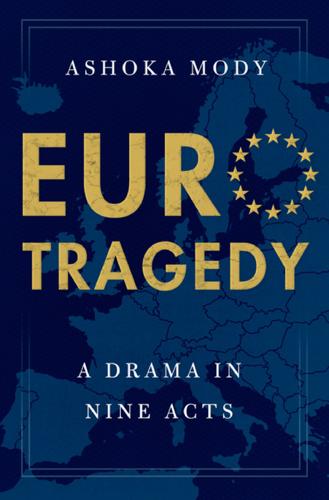
EuroTragedy: A Drama in Nine Acts
by
Ashoka Mody
Published 7 May 2018
“no bailout” principle, 265–266 Washington Mutual Bank, 214–215 Bair, Sheila, 167, 214, 215 Baker, James, 79 Balkenende, Jan Peter, 189 Balladur, Édouard, 94, 109 Banca d’Italia, 117, 281, 295, 356, 370 Banca Etruria (Italy), 377 Banca Marche (Italy), 374, 377 Banca Monte dei Paschi di Siena (MPS), 369, 378 Banca Popolare dell’Etruria e del Lazio (Italy), 374, 375 618 i n d e x Banca Popolare di Vicenza (Italy), 377 Banco de España, 182–183, 301, 307 Bank for International Settlements (BIS), 212 Bankia (Spanish bank), 306–307 Bank of Canada, role in steadying euro, 138–139 Bank of England, 69, 198f, 218, 222–223, 223f, 307, 314 Bank of Greece, 244 Bank of Ireland, 180, 182, 271 Bank of Japan (BOJ), 344, 354, 359, 382–384 Bank of Spain. See Banco de España Bank Recovery and Resolution Directive (BRRD), 371 banks/banking systems. See also subprime mortgage crisis; specific banks bailouts in Spain, 307–308 Basel I/II agreements, 166–168 Bear Stearns and, 209f ceremonial committees, processes, 170 comparison with Japan, U.S., 162–163 euro-area troubled banks, 202 Europe’s fascination with, 161–164 eurozone struggles, 158, 159f, 227–229 France, 161–164 French crisis, 195 Germany and, 162, 165, 194–195 IMF’s evaluation of Greek banks, 232 increased risk taking, 166–173 increasing assets, falling productivity, 159f interbank market, 196, 197, 202, 206, 213, 218, 299, 371, 475 interest rates, debts, 173f Italy, 162, 164, 177, 298–299, 298f, 369–379, 380f leveraging for high equity return, 168f LTROs and, 305–306 mergers and expansion, 164–166 MPS scandal, 332 post-WWII role, 162–163, 163f pre-euro mergers, expansions, 164–166 stalling productivity, greater risk- taking, 169–173 subprime crisis, 14, 172, 183, 192, 194–196, 203, 208–209, 224, 227, 369, 428, 475 tumbling of bank stocks, 298–299, 298f U.S. stress-test results, 200f Banque de France, 68, 104, 312–313 Barbagallo, Carmelo, 375 Barber, Lionel, 122, 137 Barroso, José Manuel, 216–217, 227, 365, 367 Barthle, Norbert, 275 Basel Committee, 167–168 Basel I and II, international banking agreements, 166–168 Bavaria, 114 BDI.
…
See also East Germany; Kohl, Helmut; Schröder, Gerhard Alternative für Deutschland movement, 18, 325, 425–427, 483–484 austerity celebrated by, 285 banks/banking systems, 162, 165, 194–195, 195f belief in low inflation, fiscal prudence, 51 630 i n d e x belief in monetary union, 9 belief in not helping others, 100–101 Berlin Wall, 9, 73–78, 105, 237 budgetary offenses of, 144 Bush’s backing for unification, 76–77 business opposition to single currency, 72 CDU’s loss of grip on power, 42 China’s aid to, 229–230 Constitutional Court, 108 “convergence criterion” of, 11 crisis recovery in, 393–394 demand for commitment to stability, 84–93 D-marks, 35, 78, 80, 99, 104, 105, 107, 122 ECB and, 297, 299 economic recovery, signs of, 157 economic slowdown, 306 EDC Treaty ratification, 28 1870-2000, GDP, 25f Euro’s flaw and, 3 export slowdown, 128–129 exports to Asia, 423 falling GDP, 128–129 falling productivity, 168–169 fiscal discipline standards in, 287 flexibility advocated by, 352 “flexible exchange rates” inquiry, 41f floating regime, 41–42 France’s borrowing from, 36 Frances’s effort at achieving parity with, 8 Franco-German venture, 24 Free Democratic Party, 238, 246, 325, 425, 426–427, 435 growth of nationalism, skepticism, 20, 425–427 Hartz reforms exaggerated benefits of, 367 Ifo Institute for Economic Research, 147 IKB Deutsche Industriebank AG, 194, 195f income benchmark, 339 income/employment comparison, 340f increased debt burden ratio in, 95–96 inflation rates, 106, 174 irrational exuberance in, 172 Kohl’s ten-point German unification plan, 79–84 Kreditbanken (“universal” banks), 162 loans to Greece, 16 loans to periphery countries, 13–14 London Debt Agreement with, 415 media insults in, 341 Merkel’s distancing Europe from, 322–326 mid-1960s economic dominance, 60, 61 Moody’s “negative outlook” on debt of, 309 move from commitments to eurozone, 426 1971 consultations with France, 52–55 offer of aid to France, 402 OMT program and, 312–313 open violation of the SGP, 150 opinion of Greeks, 264 opposition to ECB’s monetary policy, 320 opposition to monetary union, 6 political drift away from Europe, 422–428 post-WWII gains, 34–35 public debt as percentage of GDP, 394f rearming of, recommendation, 27–28 recessionary conditions in, 142, 149 recession in, 12, 142, 143, 144, 149 reduced exports to euro area, 171 resistance to opening borders, 30 reunification of, 73 Social Democratic Party, 42, 238, 257, 425, 427 Solbes’s/Prodi’s blacklisting of, 144, 151 stability ideology of, 51, 53, 91 subprime crisis and, 172, 195, 208, 210, 215, 428, 475 trade shares, 171f Treaty of Paris and, 27 trust in the European Union, 389f 2003-2008, capital inflows, 175f unemployment in, 65, 81, 95, 96f unification issues, 12 voting rights conflict, 137 World Bank governance data on, 398f youth distress in, 394f, 395 Giavazzi, Francesco, 71b, 184 Giovanni, Alberto, 71b Giscard d’Estaing, Valéry aid to Greece in joining EEC, 131 bank expansion by, 163 belief in monetary union, 8, 42, 54–55, 93, 110–111 biographical information, 54 constitution project, 187–188 defeat of Mitterrand, 101 essay on political union, 76 French presidency of, 58 Mitterrand’s defeat of, 67 push to fix exchange rates, 57–59 Schäuble-Lamers proposal and, 109 Schmidt’s support for, 58–59 Glick, Reuven, 171 global financial crisis (2007–2009). See also Greek crisis; Irish crisis; subprime mortgage crisis aftermath of, 283 beginnings of, 192, 218 different monetary policy response in the United States and eurozone, 138–140, 198–202, 291–293 eurozone economy and, 391 ignoring of conditions leading to, 14 IMF and, 262 index 631 global financial crisis (2007–2009) (cont.) Merkel’s response, 238 U.S.
…
Federal Reserve System’s response, 292 Global Financial Stability Report (GFSR, IMF), 294 Goethe, Johann Wolfgang von, 240 Goldman Sachs, 180, 225 Gold Standard, 354 Gorbachev, Mikhail, 77, 78 Gordon, Robert, 127, 169, 171 Gorodnichenko, Yuriy, 288–289 Gorton, Gary, 158 Goulard, Sylvie, 331 Governing Council (ECB), 139, 203–204, 296, 320, 329, 343, 357, 359, 361 Gozi, Sandro, 388 Great Britain. See United Kingdom Great Depression (2008-2001). See Great Recession Great Depression (1930s), 38, 56, 85, 162, 229, 265, 392f Great Divergence, 395 Great Recession (2008–2010), 220, 229–231, 265. See also bailouts; subprime mortgage crisis Greece. See also Greek crisis alternative narrative of, 412–422 anti-German sentiment in, 18 Association of Greek Industries, 135 austerity, adverse impact of, 260, 328–329, 413, 421 bailout of, 241, 242, 245–263, 263f Bank of Greece, 244 bank pressures in, 209f bond yields in, 173f bucking of European authority, 2 citizens’ sensible economics, 413–414 cooking of fiscal accounts, 233–234 corruption in, 12, 132, 185, 232–233 632 i n d e x credit rating downgrade, 236 deflation prevention, 356 entrance into eurozone, 12, 129–135, 240 financial/cognitive bubble in, 183–187 Fischer’s response to crisis, 247–248 French/German loans to, 172 Germany media insults on, 244 Giscard’s support in joining EEC, 131 global financial crisis and, 232 Grexit possibility, 245, 259, 326–330, 340–341, 419 impact on Italy, 330 increased lending to, 172 inflation rates, 291 interest rates, 134 Karamanlis’s leadership, 130–131, 232–233 Liikanen’s threat to, 416 Mitsotakis’s leadership, 132 New Democratic Party, 132 Obama’s thoughts on, 415 opinion of Germans, 264 Panhellenic Socialist Movement, 131, 133 Papandreou’s leadership, 131–132 public debt as percentage of GDP, 394f quarantine of, 340 R&D/GDP ratio (1997), 176f rule by pro-European technocrats, 18 Schäuble’s warning to voters in, 414 Schröder’s visit, 133–134 Simitis’s leadership, 133 soaring inflation rate, 13, 133 subprime crisis and, 224 Syriza party’s rise to power, 18, 414–415 tax evasion issues, 185 Treaty of Accession with EEC, 131 2003-2008, capital inflows, 175f unemployment, 232–233, 244 Wall Street Journal crisis coverage, 243, 247, 249, 250–252, 254 World Bank governance data on, 398f, 413 youth distress in, 394f, 395 Greek crisis bailout, 241, 242, 245–258 ECB’s response, 236, 243, 245, 248, 249, 252, 262, 299, 416–417 emergency liquidity arrangement and, 416, 418–419 endgame of, 249–250 falling forward thesis and, 263–267 fears of contagion from, 252, 253f, 255–258 Fischer’s response, 247–248 FOMC’s response, 241–242, 254 Geithner’s response, 258 IMF’s response, 16, 185, 232, 233, 247, 249–250, 253–255, 258–262, 414, 417–420 implosion in, 242–244 Lagarde’s response, 244, 245, 252, 263 Legg’s statement at the IMF Board meeting on May 9, 2010, 258–259 Lipsky at the IMF Board meeting on May 9, 2010, 258, 262 Lundsager’s statement at the IMF Board meeting on May 9, 2010, 258 Merkel’s response, 236–237, 239, 241–242, 245–248, 253, 255–258, 264 Obama’s thoughts on, 415, 418 Papaconstantinou’s response, 257 Papandreou/PASOK’s response, 257 paying for, 250–255 repayment of creditors, 258–263 Schäuble’s response, 240, 242, 244–246, 252, 285 Social Democrat’s response, 257 sovereign/financial stress from, 263f S&P rating downgrade, 237, 253 Strauss-Kahn’s response, 254 Trichet’s response, 252 U.S.
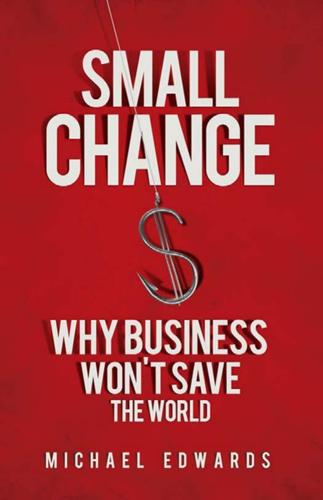
Small Change: Why Business Won't Save the World
by
Michael Edwards
Published 4 Jan 2010
Unfortunately, there is “no evidence that the project empowers women or promotes community action,” as opposed to making them “saleswomen for HLL,” often at considerable cost to themselves, as there are cheaper brands available, returns on investment are therefore low, and the work is very hard.11 The subprime mortgage crisis in the United States provides a useful reminder that luring poor people into markets in this way is a dangerous affair. Rather than focusing on the poor only as consumers, why not see and work with them as producers, activists, and participants missing evidence 43 in shaping the conditions under which they are offered market opportunities?

The Ascent of Money: A Financial History of the World
by
Niall Ferguson
Published 13 Nov 2007
After all, a ‘great contraction’ in the US banking system has convincingly been blamed for the outbreak and course of the Great Depression between 1929 and 1933, the worst economic disaster of modern history.7 If US banks have lost significantly more than the $255 billion to which they have so far admitted as a result of the subprime mortgage crisis and credit crunch, there is a real danger that a much larger - perhaps tenfold larger - contraction in credit may be necessary to shrink the banks’ balance sheets in proportion to the decline in their capital. If the shadow banking system of securitized debt and off-balance-sheet institutions is to be swept away completely by this crisis, the contraction could be still more severe.
…
It was the underlying reason why private equity partnerships were able to borrow money left, right and centre to finance leveraged buyouts. And Chimerica - or the Asian ‘savings glut’, as Ben Bernanke called it110 - was the underlying reason why the US mortgage market was so awash with cash in 2006 that you could get a 100 per cent mortgage with no income, no job or assets. The subprime mortgage crisis of 2007 was not so difficult to predict, as we have already seen. What was much harder to predict was the way a tremor caused by a spate of mortgage defaults in America’s very own, home-grown emerging market would cause a financial earthquake right across the Western financial system. Not many people understood that defaults on subprime mortgages would destroy the value of exotic new asset-backed instruments like collateralized debt obligations.
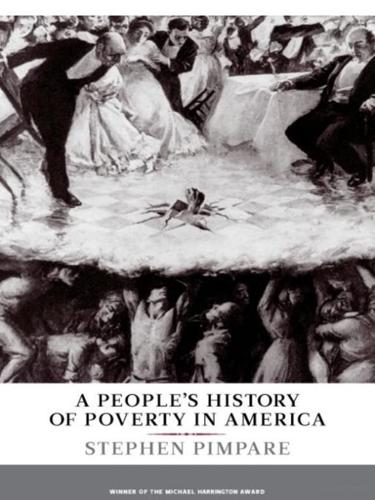
A People's History of Poverty in America
by
Stephen Pimpare
Published 11 Nov 2008
And by 2001 there were also some three thousand rent-to-own stores, serving about 3 million customers and charging up to three times retail prices.76 A 2006 analysis by the Brookings Institution confirmed that poorer households paid higher interest rates on mortgages and car loans than did others, and paid more for cars, insurance, groceries, furniture, and appliances. Perhaps we should think of this as a poverty tax. It totaled some $6.5 billion in twelve metropolitan areas alone. And this is before calculating the impact of the subprime mortgage crisis of 2007–2008, which has had its largest effects in poor neighborhoods.77 Because of such exploitation, and the dearth of institutions that others take for granted, poor neighborhoods have had to develop communal solutions to the problem of survival. As anthropologist Carol Stack writes of “the Flats,” a predominantly black neighborhood on the south side of Chicago where she conducted interviews in the mid-1960s, residents there were profoundly interdependent and had created their own local economy, in which they would “trade food stamps, rent money, a TV, hats, dice, a car, a nickel here, a cigarette there, food, milk, grits, and children.”78 Said Ruby Banks:I don’t believe in putting myself on nobody, but I know I need help every day.
…
Smith, Mary Social Security actual effects and African Americans and labor market effects and Townsend Plan Social Security Act of 1935 (SSA) Society for the Prevention of Cruelty to Children Society for the Relief of Poor Widows Solow, Robert Soss, Joe soup kitchens South, American history of welfare in New Deal programs in See also poor whites, Southern Southern Poverty Law Center Spargo, John Special Supplemental Nutrition Program for Women, Infants and Children (WIC) Spinks, Jackie Spott, Robert St. Mary’s Settlement and Day Nursery (Chicago) Stack, Carol Stadum, Beverly Stansell, Christine sterilization, forced Student Nonviolent Coordinating Committee (SNCC) subprime mortgage crisis (2007–2008) substance abuse alcohol and diminished expectations and disapprobation directed at the poor drugs and female tramps and homelessness and moral reform in colonial asylums and TANF recipients and welfare eligibility and women on welfare Subway Beggar (Grachow) Sumner, William Graham Supplemental Security Income (SSI) participation rates Sussman, Marvin Syracuse University’s Maxwell School (2004 poll on income inequality) Tally’s Corner (Liebow) Tammany Hall Taylor, Frederick Winslow teen births teenagers and “bum hunting,” Temporary Assistance to Needy Families (TANF) tenant farming Tennessee Valley Authority (TVA) jobs Terkel, Studs Textile Workers Union Thirteenth Amendment Thompson, F.T.
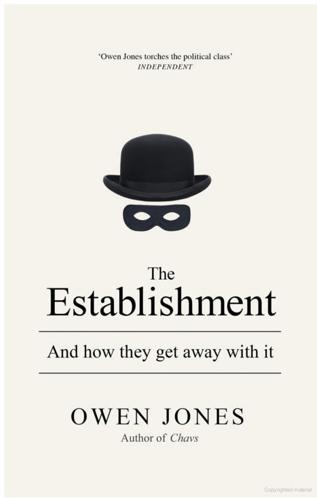
The Establishment: And How They Get Away With It
by
Owen Jones
Published 3 Sep 2014
After years slogging away at Barclays, Siddarth was head-hunted by one of the world’s biggest investment banks (which, again, Siddarth wishes to keep out of print to avoid identification). ‘I was doing that for a few years. You can see the grey hair,’ he gestures, ‘because I kind of burnt out a bit as the market got really bad in 2008 because – well, the world had changed.’ That autumn, the financial crisis abruptly stopped being a phoney war: the ‘subprime mortgage’ crisis, no longer the distant rumblings of thunder, had erupted. Lehman Brothers’ bank was wobbling on the precipice. ‘The regulator on Friday (12 September 2008) started picking up the phone to a lot of different banks basically saying, “Lehman’s is not going to last until Monday, do you guys want to buy it?”
…
‘There was a big drive to do it, especially on the mergers and acquisitions side, you wanted to get deals just because that was the best way to grow a business … There was a big push to say, “OK, you know, we’re trying to grow quickly and we want to get there faster than we would normally – let’s go for buying somebody outright.” ’ But as the US subprime mortgage crisis began gradually to unfold, the mood changed. ‘It was basically around May or June 2007. People really started stepping back and saying, “OK, you know, this is not blowing over” – and then September 2008 hits, and Lehman goes.’ Hindsight often encourages a false sense that what has come to pass was obvious and inevitable – a sense of incredulity that more contemporaries did not see the impending storm.
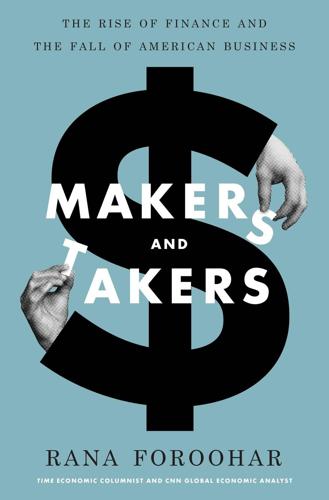
Makers and Takers: The Rise of Finance and the Fall of American Business
by
Rana Foroohar
Published 16 May 2016
And that’s what we were told in 2008, when our government pledged some $700 billion of taxpayer money (enough to rebuild the entire Interstate Highway System from scratch and then some) to bail out the American financial system. The resultant Troubled Asset Relief Program, or TARP, was meant to quell the subprime mortgage crisis, brought on, of course, by colossal malfeasance by some of the very banks being saved. But, no surprise, that hasn’t fixed the problem. Wall Street is not only back, but bigger than it was before. The ten largest banks in the country now make up a greater percentage of the financial industry and hold more assets than they did in 2007, nearly two-thirds as much as the entire $18-trillion US economy itself.
…
In the midst of the housing crisis and Great Recession a few years back, I spent a lot of time traveling through the Inland Empire, a large metropolitan area in the middle of Southern California. It stretches an hour or two east of Los Angeles and Orange County, but is about as far away from the tony “OC” lifestyle as you can imagine. Made up primarily of San Bernardino and Riverside counties, the Inland Empire was at the heart of the subprime mortgage crisis and has yet to fully recover. In the early 2000s, predatory lenders flocked to the area, offering dicey deals to the largely minority and lower-middle-class white populations who, unable to afford housing on the coast, still craved the American Dream of homeownership. It ended, as it did in so many neighborhoods and cities across America, in tears and massive foreclosures, turning entire cities into ghost towns of derelict properties.
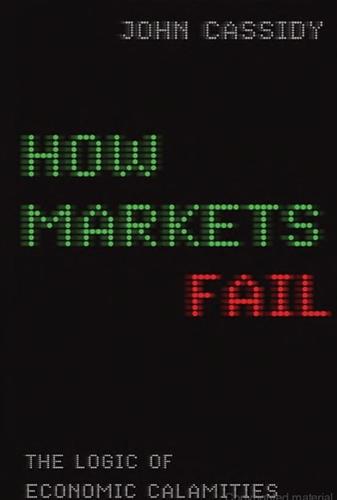
How Markets Fail: The Logic of Economic Calamities
by
John Cassidy
Published 10 Nov 2009
My judgment is that free, competitive markets are by far the unrivaled way to organize economies. We have tried regulations. None meaningfully worked.’ ” Waxman looked at Greenspan. “That was your quote,” he said. “You had the authority to prevent irresponsible lending practices that led to the subprime mortgage crisis. You were advised to do so by many others. Now our whole economy is paying the price. Do you feel that your ideology pushed you to make decisions that you wish you had not made?” Greenspan stared through his thick spectacles. Behind his mournful gaze lurked a savvy, self-made New Yorker.
…
They simply couldn’t conceive of Japan bombing Hawaii; of jihadists flying civilian jets into Manhattan skyscrapers; of a flood surge in the Gulf of Mexico breaching more than fifty levees simultaneously. These catastrophic eventualities weren’t regarded as low-probability outcomes, which is the mathematical definition of extreme events: they weren’t within the range of possibilities that were considered at all. The subprime mortgage crisis was another singular and unexpected event, but not one that came without warning. As early as 2002, some commentators, myself included, were saying that in many parts of the country real estate values were losing touch with incomes. In the fall of that year, I visited the prototypical middle-class town of Levittown, on Long Island, where, in the aftermath of World War II, the developer Levitt and Sons offered for sale eight-hundred-square-foot ranch houses, complete with refrigerator, range, washing machine, oil burners, and Venetian blinds, for $7,990.
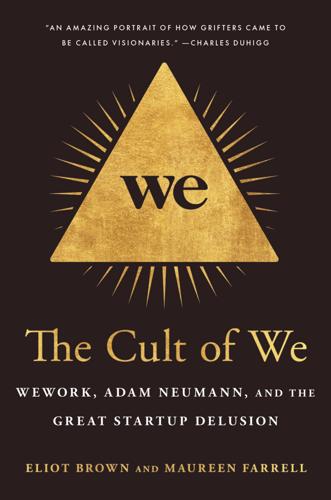
The Cult of We: WeWork, Adam Neumann, and the Great Startup Delusion
by
Eliot Brown
and
Maureen Farrell
Published 19 Jul 2021
Quickly, 155 Water was filled with roughly 350 tenants. They expanded into another Guttman building, 68 Jay, back where the entrepreneurs had their original offices. (Neumann kept his Krawlers office there.) And, miraculously, Green Desk continued to flourish even as the economy began to crater around the entrepreneurs. The subprime mortgage crisis sparked a historic crash in the country’s financial system, and New York was at its epicenter. Every sector of the economy seemed to be hit. Yet somehow, small businesses still wanted office space in Brooklyn. Perhaps it was the flexibility; perhaps it was former bankers starting something themselves.
…
The economy’s spotlight moved back to New York and Wall Street as the VCs and tech companies that survived licked their wounds. It started a years-long funding drought. The fire hose of money almost entirely turned off, and the number of startups shrank. But by the time Adam Neumann started WeWork in 2010, the Bay Area was buzzing again. Wall Street had seen its own rather significant self-inflicted bust in the subprime mortgage crisis, and the economy was far sunnier on the West Coast. Facebook was booming and was on track to return an astounding profit to its early VC backers; the same could be said of the VC-funded Groupon and Twitter. And the advent of Apple’s iPhone in 2007 would unleash a whole new category of company: smartphone apps.
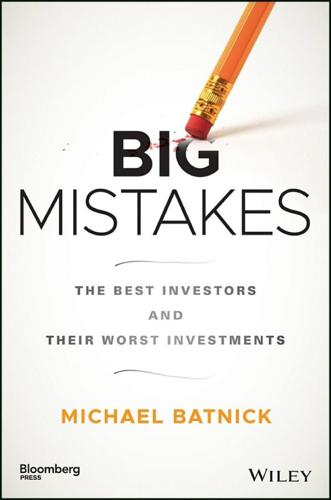
Big Mistakes: The Best Investors and Their Worst Investments
by
Michael Batnick
Published 21 May 2018
Mike Weiss and Katharine Burton, “John Paulson Is Struggling to Hold On to Client Money,” Bloomberg.com, June 5, 2017. 6. Peter S. Goodman and Gretchen Morgenson, “Saying Yes, WaMu Built an Empire on Shaky Loans,” New York Times, December 27, 2008. 7. Carol Lloyd, “Minorities Are the Emerging Face of the Subprime Mortgage Crisis,” San Francisco Gate, April 13, 2007. 8. Gregory Zuckerman, The Greatest Trade Ever (New York: Crown Business, 2010), 42–50. 9. Ibid., 107. 10. Ibid., 72. 11. S&P/Case‐Shiller U.S. National Home Price Index Y/O/Y % change. 12. Ibid., 126. 13. Ibid., 209. 14. Ibid., 261. 15. Quoted in Zuckerman, The Greatest Trade Ever, 282. 16.
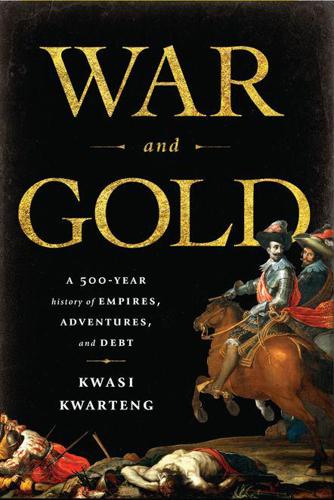
War and Gold: A Five-Hundred-Year History of Empires, Adventures, and Debt
by
Kwasi Kwarteng
Published 12 May 2014
Chapter 20: Crises and ‘Bailouts’ 1Time, ‘25 People to Blame for the Financial Crisis’, quoted in New York Daily News, 13 February 2009. 2Economist, ‘Accounting for Angelo’, 5 June 2009; New York Times, 15 October 2010. 3Economist, ‘Accounting for Angelo’. 4New York Times, ‘The Original Subprime Crisis’, 26 December 2007. 5Louis Hyman, Debtor Nation: The History of America in Red Ink, Princeton, 2011, pp. 283–4. 6Ibid., p. 285. 7Paul Krugman, The Return of Depression Economics and the Crisis of 2008, London, 2008, p. 148. 8Matthew Bishop, Economics: An A–Z Guide, London, 2009, p. 287. 9Wall Street Journal, ‘Bankers Hope for a Reprise of “Bowie Bonds”’, 23 August 2005. 10Philip Coggan, Paper Promises: Money, Debt and the New World Order, London, 2011, p. 179. 11Robin Blackburn, ‘The Subprime Crisis’, New Left Review, March–April 2008, pp. 63–106, at pp. 64–5. 12Ibid., p. 72. 13Michael Lewis, The Big Short: Inside the Doomsday Machine, London, 2010, p. 209. 14Krugman, The Return of Depression Economics and the Crisis of 2008, pp. 168–9. 15www.newyorkfed.org. 16New York Times, ‘Why a US Subprime Mortgage Crisis is Felt around the World’, 31 August 2007. 17Alan Greenspan, Economists’ Forum, www.blogs.ft.com/economists, 6 April 2008. 18New York Times, ‘Lehman Files for Bankruptcy; Merrill is Sold’, 15 September 2008. 19Washington Post, review of Vicky Ward, The Devil’s Casino, 18 April 2010. 20Financial Times, ‘The High Stakes Games, Backstabbing and Greed behind Lehman’s Demise’, 8 April 2010. 21New York Times, ‘Lehman Files for Bankruptcy’. 22Coggan, Paper Promises, p. 181. 23William Shakespeare, Titus Andronicus, ed.
…
New York Times, ‘The Original Subprime Crisis’, 26 December 2007. New York Times, ‘Supporters of Bailout Claim Victory in Greek Election’, 17 June 2012. New York Times, ‘U.S. Calls Revaluation a Good Start for Beijing’, 22 July 2005. New York Times, ‘War Finance in England’, 27 January 1862. New York Times, ‘Why a US Subprime Mortgage Crisis is Felt around the World’, 31 August 2007. New York Times, 25 August 2005. New York Times, 15 October 2010. Newby, Elisa, The Suspension of Cash Payments as a Monetary Regime, Centre for Dynamic Macroeconomic Analysis, Working Paper Series, University of St Andrews, February 2007, revised June 2007.

The Shifts and the Shocks: What We've Learned--And Have Still to Learn--From the Financial Crisis
by
Martin Wolf
Published 24 Nov 2015
Indeed, in one of the best-informed analyses of the crisis, Perry Mehrling of Columbia University argues that ‘it is not just the shadow banks but, more important, the larger capital-market based credit system that failed, and it is that failure that we must understand if we are to put the system back together again, and on more solid foundations this time. This financial crisis is not merely a subprime mortgage crisis or even a shadow-banking crisis; it is a crisis of the entire market-based credit system that we have constructed since 1970.’40 From the point of view of vulnerability to runs, a vital feature was that a new form of credit-backed money emerged. A working paper from the International Monetary Fund in 2012 summarized what happened: in recent decades, with the advent of securitization and electronic means of trading and settlement, it became possible to expand greatly the scope of assets that could be transformed directly, through their use as collateral, into liquid or money-like assets.
…
A good explanation of the U.S. housing bubble should also take into account its parallels in other nations. This leads us to explanations broader than just U.S. housing policy, regulation, or supervision.67 Evidently, this argument applies with just as much force to the argument of their fellow Republican nominee, Mr Wallison, who argues as if this were solely a US crisis and solely a subprime mortgage crisis. Second, the view that the GSEs played a central role in encouraging the private sector to enter into the subprime housing mania is false. Nobody forced sophisticated private financial institutions to enter into the transactions that made up the ‘originate, securitise, rate and distribute model’.
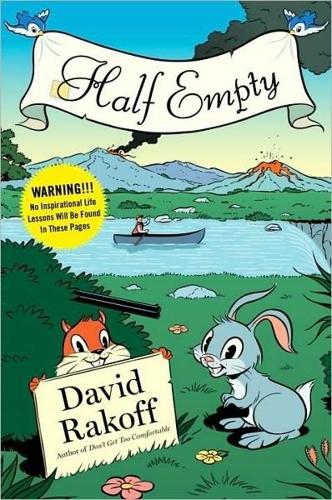
Half Empty
by
David Rakoff
Published 20 Sep 2010
The current revolution—one that Disney has ignored here—is sustainability. We should be walking through a five-hundred-square-foot home where you cook with, drink, urinate, heat, cool, and drink once more the same four gallons of water. The overwhelming feeling here is of a home from 2004, already ancient history in the public consciousness, pre–subprime mortgage crisis and the collapse of the world economy. The paint is barely dry and this is already out-of-date; a timid, delusional, exurban mausoleum that can only be accessed by a decreasingly affordable car (the Monsanto House didn’t even have a garage). More than the waste, the equating of acknowledging reality with bumming people out is what seems most glaringly old school.
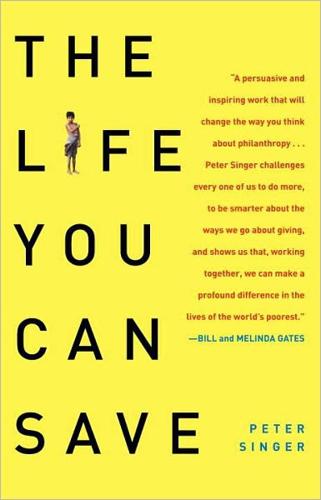
Life You Can Save: Acting Now to End World Poverty
by
Peter Singer
Published 3 Mar 2009
If their employer instead automatically enrolls them, giving them the choice of opting out, participation jumps dramatically10 The lesson is that often it doesn’t take much of a nudge to overcome the apathy that gets in the way of our doing what we know would be best for us. The right kind of nudge— whether it comes from government, corporations, voluntary organizations, or even ourselves—can also help us do what we know we really ought to do. The investment bank and securities trader Bear Stearns— before its sale to JPMorgan Chase during the 2008 subprime mortgage crisis—made sure that neither apathy nor selfishness prevented its leaders from doing the right thing. One of the guiding principles listed on its website was a commitment to philanthropy, based on the belief that a personal commitment to charity is an underpinning of good citizenship and fosters a more-rounded individual.
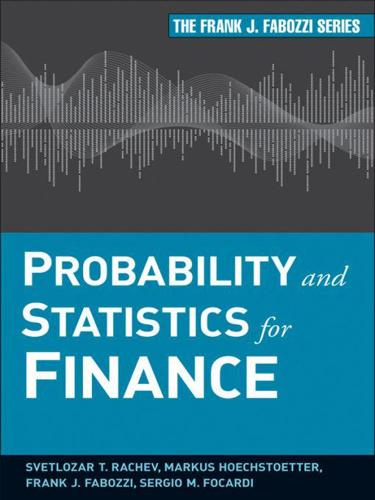
Advanced Stochastic Models, Risk Assessment, and Portfolio Optimization: The Ideal Risk, Uncertainty, and Performance Measures
by
Frank J. Fabozzi
Published 25 Feb 2008
While many models in finance have been modeled historically using the normal distribution based on its pleasant tractability, concerns have been raised that it underestimates the danger of downturns of extreme magnitude inherent in stock markets. The sudden declines of stock prices experienced during several crises since the late 1980s—October 19, 1987 (“Black Monday”), July 1997 (“Asian currency crisis”), 1998-1999 (“Russian ruble crisis”), 2001 (“Dot-Com Bubble”), and July 2007 and following (“Subprime mortgage crisis”)—are examples that call for distributional alternatives accounting for extreme price shocks more adequately than the normal distribution. This may be even more necessary considering that financial crashes with serious price movements might become even more frequent in time given the major events that transpired throughout the global financial markets in 2008.
…
Standardization Standardization of X Standardized data Standardized random variable, value Standardized residuals, analysis Standardized transform Standard normal distribution distribution function mode α quantile returns, contrast 0.2 quantile, determination Standard normal population, observations Standard & Poor’s 500 (S&P500) daily returns, distribution test equity index, value Standard & Poor’s 500 (S&P500) index asset correlation commercial bank sector, asset duration estimate daily returns zero mean, determination electric utility sector, asset duration estimate prices stem and leaf diagram returns examination time series application Standard & Poor’s 500 (S&P500) logarithmic returns class data daily returns (2006) frequency densities probability Standard & Poor’s 500 (S&P500) returns empirical cumulative relative frequency distribution QQ plot, contrast Standard & Poor’s 500 (S&P500) stock index, 534-536 closing prices, consideration daily logarithmic returns daily returns logarithmic returns, box plot marginal relative distributions monthly returns prices, changes (vertical extension) usage values/changes Standard & Poor’s 500 (S&P500) stock index returns box plot classes conditional empirical cumulative relative frequency distributions Standard & Poor’s (S&P) credit ratings assignation empirical distribution index, cross sectional data (obtaining) ratings attributes empirical distribution even number companies Standard stepwise regression method State space (Ω’) probability Statistic definition degrees of freedom ratio empirical data parameters, contrast population parameter, contrast probability, contrast university course, offering Statistical independence Statistical inference Statistical noise Statistical physics Statistical significance, determination Stem and leaf diagram Stepwise exclusion method Stepwise inclusion method Stepwise regression, usage Stochastic terms Stochastic variable Stock price changes, joint movements dynamic evolution expected value, relationship pricing process, evolution probability correspondence random variable ratio bounds variation volatility parameter Stock price to free cash flow per share (PFCF), ratio Stock returnillustration modeling properties, application regression, application regression model, application skewness, example student’s t distribution application Stocks characteristic line index futures, availability logarithmic return performance portfolio benchmark consideration relative performance Strictly monotonically increasing transformations, invariance Strictly monotonic function preserves, natural logarithm Strictly monotonic increasing function illustration Strike price (exercise price) Student’s t distributed n-1 degrees of freedom statistic Student’s t distributed random variables, tail dependence Student’s t distribution assumption cumulative distribution function degrees of freedom density function α-quantiles, n-1 degrees of freedom returns shape Student’s t observations, generation Student’s t random variable, mean Sturge’s rule usage Subprime mortgage crisis Subsets Sufficiency Sufficient statistic distribution Summation, infeasibility Sum of squares errors (SSE) Sum of squares explained by the regression (SSR) Support, term Supremum comparison selection Survival time Symmetric confidence intervals, advantages Symmetric density function zero skewness Symmetric matrix Symmetric n × n matrix Tail dependence absence measure Tail index Tails t copula d=2 example contour plots-398f illustration-396f degrees of freedom, estimate (computation) joint distribution tail dependence t distribution.
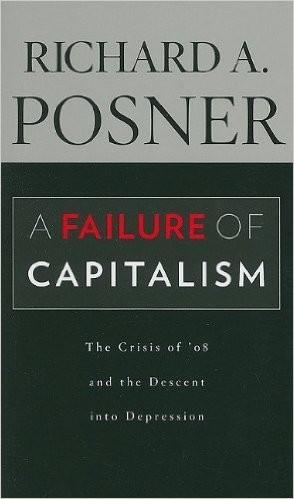
A Failure of Capitalism: The Crisis of '08 and the Descent Into Depression
by
Richard A. Posner
Published 30 Apr 2009
His predecessor, Alan Greenspan, who in July 2005 had expressed mild concern about housing prices, said in October 2006 that the "worst may well be over." Public officials cannot be expected to be completely candid at all times. But the statements by Greenspan and Bernanke that I have quoted in this book were misleading; they made things worse. In September 2007, Robert Lucas said that he was "skeptical" that the subprime mortgage crisis would "contaminate the whole mortgage market" and cause the economy to slip into recession. On October 1 of that year John Cochrane denied that there was a recession and predicted at worst a mild recession. In testimony before Congress in February 2008, a month before the Bear Stearns crisis, John Taylor advised against the Federal Reserve's reducing interest rates.
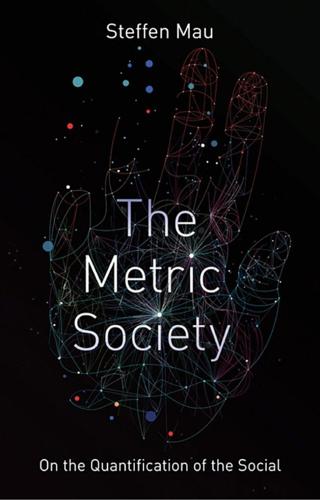
The Metric Society: On the Quantification of the Social
by
Steffen Mau
Published 12 Jun 2017
Vom disziplinären Blick zu den kompetitiven Singularitäten’, Soziopolis (28 September), www.soziopolis.de/beobachten/kultur/artikel/die-transformation-der-sichtbarkeitsordnungen. Riesman, David, Reuel Denney and Nathan Glazer (1950) The Lonely Crowd, New Haven, CT: Yale University Press. Rogers, Richard (2013) Digital Methods, Cambridge, MA: MIT Press. Róna-Tas, Ákos, and Stefanie Hiss (2010) ‘The role of ratings in the subprime mortgage crisis: the art of corporate and the science of consumer credit rating’ in Markets on Trial: Pt A, Bingley: Emerald (pp. 115-55). Rosa, Hartmut (2006) ‘Wettbewerb als Interaktionsmodus’, Leviathan 34/1 (pp. 82-104). Rosa, Hartmut (2015) ‘Verstrickt im Steigerungsspiel: Wie der Kampf gegen Ungleichheit diese reproduziert’ in (Un-)Gerechte (Un-)Gleichheiten, ed.
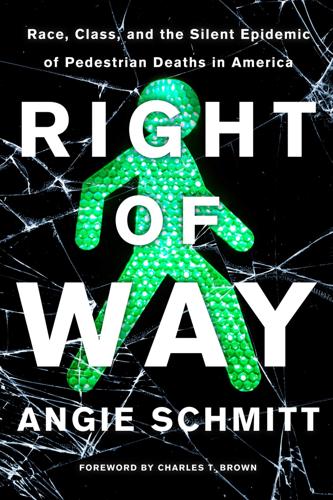
Right of Way: Race, Class, and the Silent Epidemic of Pedestrian Deaths in America
by
Angie Schmitt
Published 26 Aug 2020
In 2015, on an inflation-adjusted basis, US gas prices were lower than they were in 1947.12 And when gas is cheap, more marginal drivers—like teenagers—get out on the roads and cause wrecks. Auto lending has also been increasingly lax. Since 2009, auto debt held by Americans increased 75 percent, inspiring comparisons to the subprime mortgage crisis.13 Although that trend has created concerns about predatory lending, it has allowed more lower-income people to purchase cars and has contributed to a decline in public transit use nationwide. (Public transit ridership in cities is very closely associated with lower traffic deaths14 because transit eliminates car trips and helps provide an alternative for the riskiest drivers, such as drunk drivers and those with bad driving records.)

The Price of Time: The Real Story of Interest
by
Edward Chancellor
Published 15 Aug 2022
This too has come to pass. During the pandemic year of 2020, central banks moved closer to directly financing government spending, as White predicted (see Postscript: The World Turned Upside Down). Bastiat’s claim that free credit would be a disaster for working people was not far off. After the subprime mortgage crisis, banks increased the lending rates charged to less creditworthy individuals and small businesses. Private equity barons and other well-connected figures on Wall Street, on the other hand, were able to borrow for peanuts. During the post-crisis decade, incomes barely grew and low-paying jobs proliferated.
…
D., 163–4 Röpke, Wilhelm, 97, 100, 299 Rothbard, Murray, 30 Rothermere, Lord, 93 Roubini, Nouriel, 207, 254 Rousseff, Dilma, 258 Rucellai, Giovanni, 21 Rueff, Jacques, 85, 91, 115‡, 251 Ruskin, John, 180–81 Sainsbury’s (British grocery chain), 160 Saint-Simon, Louis de Rouvroy, Duke of, 50–51, 52, 57 Samuelson, Paul, 246–7 Sarkozy, Nicolas, 292 Savills (property consultants), 174 saving: bonus of compound interest, 190; China’s savings glut, 268–9; as deferred gratification, 29, 188–90; and interest, xxiv, 44, 77, 188–93, 194–9, 205–6; interest as ‘wages of abstinence’, xxiv, xxv, 188–91; savings glut hypothesis, 115–16, 117, 126, 128–9, 132, 191, 252; Terborgh on, 125* savings & loan crisis, US, 111, 145 Say, Jean-Baptiste, 99 Sbrancia, Maria Belen, 290 Scandinavian banking crisis (early 1990s), 136 Schacht, Hjalmar, 82, 92, 312 Schäuble, Wolfgang, 299 Scheidel, Walter, 204 Schumpeter, Joseph, 16, 32, 46, 95, 218; Capitalism, Socialism and Democracy (1942), 126, 140, 296–7; ‘creative destruction’ idea, xx, 140–43, 153, 296–7; on deflation, 100; History of Economic Analysis, xviii; view of intellectuals, 297 Schwartz, Anna, 98, 99, 105, 116 Schwarzman, Steven, 207 Sears (department store), 169–70 secular stagnation, 77, 124–8, 131, 132–9, 151, 205–6 Sée, Henri Eugene, Modern Capitalism (1928), 28* Seneca the Younger, 20–21 Senior, Nassau, 188, 191 Senn, Martin, 193 shadow banks: in Canada, 174–5; in China, 266, 270, 282*, 283–5, 286; collapse in subprime crisis, 221, 283; illiquid products, 226–7; re-emergence after 2008 crisis, 221, 227, 231, 233; structured finance products, 116, 227, 283–5; Trust companies as precursors of, 84*; types of, 221; ‘Ultra-short’ bond exchange-traded funds (ETFs), 227 Shaftesbury, Anthony Ashley Cooper, Earl of, 27 ‘shareholder value’ philosophy, 163–6, 167, 170–71 Shaw, Edward, 286 Shaw, Leslie, 83, 83* Shiba Inu (cryptocurrency), 308 Shin, Hyun Song, 254, 263 Shiyan, Hubei province, 275 Silicon Valley, 148, 151, 173, 176, 204 Silver, Morris, 7, 11 Singer, Paul, 185, 246 Smith, Adam, 14, 174; on monopolies, 162, 298; view of interest, 27, 27*, 31, 183; on wealth, 181; The Wealth of Nations (1776), xxii, 27–8, 27*, 31 Smithers, Andrew, Productivity and the Bonus Culture (2019), 152* Smoot–Hawley Act (1930), 261 socialism, 188, 297, 298 Soddy, Frederick, 181, 242 Solon the ‘Lawgiver’, 9, 18 Solow, Bob, 128 Somary, Felix, 94–5, 308 Sombart, Werner, Modern Capitalism, 22* Soros, George, 148*, 273, 283 South Africa, 258 South America: loans/securities from, 77, 79–80; precious metals from, 49, 168; speculation in bonds from, 64, 65–6, 91; trade during Napoleonic Wars, 70 South Korea, 267 South Sea Bubble (1720), 62, 65*, 68, 69, 307 Soviet Union, 278 Spain, 144–5, 147, 168, 213, 253, 279; mortgage bonds (cédulas), 117 Special Purpose Acquisition Companies (SPACs), 307 speculative manias, xxiii; Borio on, 135; and cryptocurrencies, 177–9; ‘hyperbolic discounting’ during, 176–7; in period from 1630s to 1840s, 64–6, 67–72, 73, 74, 75–6, 77–8, 79–80; technology companies in post-crisis years, 176–9; before Wall Street Crash (1929), 91 see also Mississippi bubble Spencer, Grant, 177 Sraffa, Piero, 42 St Ambrose, 18 St Augustine, 18–19, 202 St Bonaventure, 19 Stable Money League/Association, 87, 96 Standard Oil, 157 state capitalism, 280, 284, 292–5, 297, 298 Stefanel (Italian clothing company), 147 Stein, Jeremy, 231, 233 Steuart, Sir James, 53, 273 ‘sticky prices’ theory, 87* Strong, Benjamin, 82–3, 86–8, 90*, 92, 93, 98, 112 Stuckey’s Bank, 63, 66–7 subprime mortgage crisis, xxii, 114, 116, 117–18, 131, 211, 292; produces ‘dash for cash’, 227; unwinding of carry trades during, 221, 227 Suetonius, The Twelve Caesars, 12 Suez Canal, 78 Sumerian civilization, 4, 6, 8, 15 Summers, Larry, 124–5, 127, 129, 185, 230, 230*, 235, 302 Sumner, William Graham, ‘Forgotten Man’, xx, xxii, 198 Susa, Henry of, 25 Svensson, Lars, 247 Sweden, 174, 241, 242, 244, 245, 247, 294 Sweezy, Paul, 156 Swiss National Bank, 172–3, 293–4 Switzerland, 172, 174, 226, 233, 241, 244, 245 Sydney (Australia), 175 Sylla, Richard, 4, 11, 68, 109 Tacitus, 20–21 Tasker, Peter, 271 Tawney, R.H., 201 tax structures, 164; offshore tax havens, 210 Taylor, John, 116–17, 129, 252 Tencent, 283 Tencin, Claudine Alexandrine Guérin, Madame de, 51 Terborgh, George, 125–6, 127 Tesla, 176–7 Theranos, 149 Thiel, Peter, 263 Third Avenue (investment company), 227–8 Thornton, Daniel, 192 Thornton, Henry, 41–2, 66*, 70, 75 Thornton, Henry Sykes, 66* Tiberius, Roman Emperor, 12 time, concept of, xviii; and act of saving, 188–90; canonical ‘hours’, 21; and Lewis Carroll, 309; in era of ultra-low interest rates, 59, 177; Franklin on, xviii, 22, 28; and Hayek, 32; interest as ‘time value of money’, xxiv, xxv–xxvi, 10, 14–15, 16, 20, 22, 26–7, 28–32; Lord King’s ‘paradox of policy’, 194, 230*; the Marshmallow Test, 29, 189; and medieval scholars, 19–20; Renaissance writings on, 21; secularization of, 21–2; speculators’ misunderstanding of, 59; and thought in ancient world, 20–21; time as individual’s possession, 20, 21, 25; ‘time in production’, xxiv, 14–15, 16, 22, 95, 95†, 141; ‘time preference’ theory, xxiv*, 28–32, 42, 95, 188–9; Thomas Wilson’s ideas, 26–7, 28, 30 Time-Warner, 167 Tooke, Thomas, 69 Toporowski, Jan, 167 Torrens, Robert, 66 Toys ‘R’ Us, 169 trade and commerce: in ancient world, 6, 7–8, 12, 14, 15; Atlantic trade, 59; business partnerships (commenda, societas), 26; commercial classes/interests, 35, 36–7, 38–40, 41, 43, 44, 66–7; commercial importance of time, xviii, 15–16, 21, 22; emergence of modern trade cycle, 62–4; expansion of in Middle Ages, 19, 21–3, 25–6; international trade, 6, 15, 23, 24, 59, 252–3, 261–2; and Italian Renaissance, 21; in medieval Italy, 21–3; mercantile/shipping loans, 6, 12, 14, 22–3, 26, 219 TransAmerica Life Insurance, 199* Trichet, Jean-Claude, 239 Trollope, Anthony, The Way We Live Now, 73 Truman, Harry, 84 The Truman Show (Peter Weir film, 1998), 185–7 Trump, Donald, 185, 261, 262, 291–2, 299, 304, 310 trusts/monopolies: in early twentieth century Europe, 159; Lenin on, 159–60; merger ‘tsunami’ after 2008 crisis, 160–63, 161*, 168–70, 182–3, 237, 298; ‘platform companies’, 161; Adam Smith on, 162, 298; in US robber baron era, 156, 157–9, 203 tulip mania (1630s), 68 Tunisia, 255 Turgot, Anne-Robert Jacques, 15, 28–9, 30, 218 Turkey, xxiii, 252, 258–60, 263 Turkmenistan, 262 Turner, Adair, 292 TXU (energy company), 162 Uber, 149, 150 ‘unicorn’ start-up companies, 148–50, 153, 155, 173, 176–7 Union Pacific Railroad, 157, 158 United States: as bubble economy, 184–7; credit expansion of 1920s, 87–91, 92–4, 96–8, 112, 203; Democrats’ Green New Deal policy, 302; economic expansion (1929–41), 143; economy in Bretton Woods era, 291, 302; financial crisis (1873), 157; foreign securities/loans in 1920s, 91; inflation in 1970s, 108–9; Knickerbocker Panic (1907), 83–4; large-scale immigration into, 78; loan of farm animals in, 4; long-term interest rates (1945–2021), 134; loss of manufacturing jobs to China, 261*, 261; low economic vitality in post-crisis decade, 124, 150–53, 191; monetary policy in 1900s, 83–4, 83*; post-Second World War recovery, 126; public debt today, 291–2, 291*; recessions of early 1980s, 109–10, 151; reversal of global capital flows (late-1920s), 93; robber baron era, 156–9, 203; shift from manufacturing towards services, 167–8, 182; and zombification, 146, 152–3, 155 see also Federal Reserve, US United States Steel Corporation, 157–8 Universities Superannuation Scheme, UK, 196 Useless Ethereum Token, 178 usury: attacked from left and right, 17; attitudes to in ancient world, 17–18, 19, 20–21, 219; in Britain, 24, 26–7, 34, 40, 42, 65‡, 65; Church law forbids, 18–19, 23–4; definitions in Elizabethan era, 26–7; etymology of word, 5; Galiani on, 218–19, 220, 221; and Jews, 18; Marx on, 16, 200–201; medieval Church acknowledges risk, 25–6; Old Testament restrictions on, 17; Proudhon-Bastiat debate on, xvii–xix, xxi, xxii, xxv, 9; in Renaissance world, 22–3; scholastic attack on, 18–20, 23–4, 25 Valeant Pharmaceuticals, 161, 168–9 Vancouver, 175 Veblen, Thorstein, Theory of Business Enterprise (1904), 158, 159, 166 Velde, François, 58*, 59 Venice, 22, 23 Vinci, Leonardo da, Salvator Mundi, 208–9 VIX index, 228–9, 254 La Voix du Peuple, xvii–xix volatility, 153, 228–30, 233, 234, 254, 304, 305 Volcker, Paul, 108–9, 121, 145, 184, 240 Voltaire, 57 Wainwright, Oliver, 209 Waldman, Steve, 206 Waldorf Astoria, New York, 285–6 Wall Street Crash (October 1929): Fed’s response to, 98, 100, 101, 108; Fisher and Keynes fail to foresee, 94–5; Hayek’s interpretation of, 101, 105; low real rates in 1920s USA, 87–91, 89, 92–4, 96–8, 203; low/stable inflation at time of, 134; monetarist view of, 98–9, 101, 105, 108; predictions/warnings of, 93–5, 96, 101, 105, 308; reversal of international capital flows (late-1920s), 93, 93*, 261 WallStreetBets, 307, 309 Walpole, Horace, 62–3 Warburg, Paul, 94 Warsh, Kevin, 228 wealth: ‘Buddenbrooks effect’, 216; conspicuous consumption by mega-rich, 54–5, 208–10, 212; definitions of, 179–82, 216; elite displays as signs of inequality, 209–10, 212; virtual wealth bubbles, 179, 180, 181–2, 185, 193–5, 206, 215, 216–17, 217†, 229–30, 237; wealth illusion, 193–5, 198 Welch, Jack, 170, 171 Wells, H.
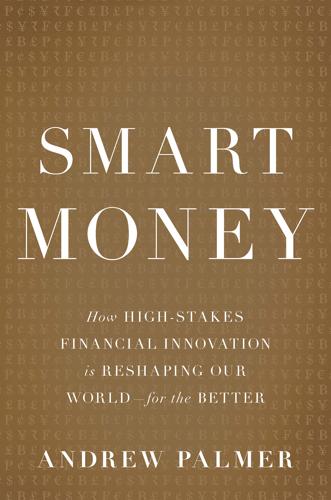
Smart Money: How High-Stakes Financial Innovation Is Reshaping Our WorldÑFor the Better
by
Andrew Palmer
Published 13 Apr 2015
As the peer-to-peer platforms take on some of the roles of a normal bank, they can expect to suffer more if borrowers default in greater than expected numbers. Although they are not financial intermediaries, the platforms will still lose the confidence of investors. As Laplanche says, “The subprime-mortgage crisis stemmed from a long chain of people, with diffuse responsibility for decisions. We originate, underwrite, price, and service. If loans don’t perform, it is on us.” To obviate this risk, the platforms therefore have a strong incentive to concentrate on the most creditworthy, or “prime,” borrowers.
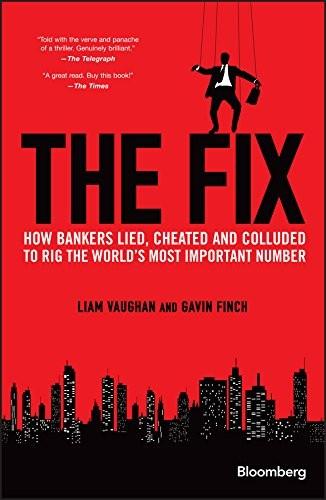
The Fix: How Bankers Lied, Cheated and Colluded to Rig the World's Most Important Number (Bloomberg)
by
Liam Vaughan
and
Gavin Finch
Published 22 Nov 2016
Deb Baran 159 Gibson Dunn & Crutcher 128 Gilmour, James 148, 168, 169 Glands, Paul 67 Godsell, Astley & Pearce 27, 29, 67 198 IN DEX Goldman Sachs 62, 66, 70, 72, 73, 81, 91, 92, 97, 137 Goodman, Colin 28–30, 31, 32, 37, 61, 62, 67, 78, 85, 117, 168, 169 Green, David 150, 159 Green, Stephen 58 Greenspan, Alan 71 Gulf International Bank 163 Icelandic banking system, collapse of 146 Interest-rate swaps 10, 16 International Monetary Fund (IMF) 95, 101, 118 International Organization of Securities Commission 74–5 IOSCO 109 Hall, Will 35, 148 Hawes, Neil 160, 161, 163 Hayes, Joshua (son) 130 Hayes, Nick (father of Tom Hayes) 5 Hayes, Robin (brother of Tom Hayes) 5 Hayes, Sandra (mother of Tom Hayes) 5 Hayes, Thomas Alexander William (Tom) xi, xii, 1–3 Asperger’s syndrome 2, 6, 22, 158, 164, 168 early trading 8–11 extravagances 67–8, 77 family and early years 5–6 life as trader 21–3 love of football 79 marriage 123 personal hygiene 80 personal wealth 130–1, 155 personality 20 sentence 166, 167–8 temper 7, 80, 82, 154 trial 157–66 HBOS 95 hedge funds 92 Herbert Smith 38 Heywood, Jeremy 96 Holder, Eric 103, 104, 149 Hoshino, Hayato 112, 114, 118, 119, 120, 121 HSBC 35–6, 58, 95, 96, 117 Huertas, Thomas 57–8, 75 Jamies Wine Bar 66 Japanese central bank 9 Japanese Financial Services Agency 130 Johnson, Peter 88, 89, 93, 99, 100 Jones Day 170 Jonson, Lydia 148 JPMorgan 47, 63, 66, 92, 137, 140, 174 ICAP xi, 3, 27, 28, 29, 37, 61, 65–8, 78, 79, 85, 112, 116, 168 Keiser, Rolf 80 Kengeter, Carsten 82, 161 King, Mervyn 55, 56, 57, 95, 96, 143–4 Knight, Angela 49, 51, 52, 54, 58, 59–60 Lampert, Eddie 72 Lawyers’ Christian Fellowship 158 Lazard 138 Lehman Brothers 1–3, 62, 75, 77, 81, 82, 94, 111, 112, 146 Leigh-Pemberton, James 139 Libor ix-x, xi, xii, 2–3, 9, 10–11 growth of 15–17 manipulation of 18, 23, 26–32, 33–8 origins of 14, 15 Lloyds 94, 96 Lloyds Banking Group 95 London interbank offered rate see Libor London Stock Exchange 138 London Whale (French trader) 140 Lowe, Gretchen 42–3, 44, 46, 74, 102, 135, 170 Lucas, Chris 134, 139 Lugar, Richard 45 Index Lukken, Walt 45, 74 Lynam, Moira 121 Madden, Luke 117 Major, John 54 Mandelson, Peter 137 Mann, John 145 Manufacturers Hanover 13 Marsh, Luke 104–5 Maxwell, Robert 105 McCappin, Brian 83, 114, 121, 122, 124 McDermott Will & Emery 75, 76, 106, 107 McGonagle, Vince 39, 41, 42–4, 45, 74, 135, 157, 169 McInerney, Denis 102 Meister, David 135, 136 Merchant, Jay 88 Merrill Lynch 64, 84, 92 Messina, Jim 69 Miller, Avery 107 Mocek, Greg 43, 74, 75–6, 87, 107 Mollenkamp, Carrick 40, 59–60 Morgan Stanley 91 Morton, Andrew 111–12, 120, 121, 124 MSCI 171 New York Fed 56, 57 New York Stock Exchange 167 Newsday 42 Nixon, Richard 13 Northern Rock 38, 49, 53, 95 Oakeshott, Matthew 136 Obama, Barack 69, 70, 103 Obie, Steve 42, 43, 73–6, 87, 89, 102, 107, 109, 135, 170, 173 Office of the Comptroller of the Currency 45 O’Leary, Peter (step-brother) 35–7 Osborne, George 106, 144 overnight indexed swaps 10 199 Pain, Jon 106 Park, Robertson 102 Paulson, Hank 72 Payment Protection Insurance misselling 137 Peng, Scott 43 Perry Capital 72 Perry, Richard 72 Peston, Robert 142, 143 Pieri, Mike 63, 81–3, 86, 119, 126, 130, 161 Pitt, Harvey 45 Platts 41 Porter, Chris 36, 37 Porter, Laurence 114, 115, 116, 118, 120 Prince, Chuck 116 private equity 92 Protium deal (2010) 137 Qatar Investment Authority 97 Rabobank xi, 64, 134 Rain Man 7 Rake, Mike 141, 143, 144 RBC 10 RBS xi, 66, 93, 94, 95, 96, 104, 118 Read, Darrell 27–30, 31, 33, 37–8, 61–2, 67, 77–8, 85, 112, 116, 117, 165, 168, 169 Reagan, Ronald 15 Reich, Ryan 88 relative value trading 22 Ricci, Rich 98, 134, 142 Richardson, Gordon 98 Risk Capital 44 Robb, Richard 17 Robson, Anthony 9 Rouse, Pete 69 Royal Bank of Canada 8 Royal Bank of Scotland 6, 10, 148, 174 RP Martin xi, 30, 31, 37, 63, 64, 65, 66, 79, 117, 148–9, 168 200 IN DEX Rubin, Robert 70, 71 Ruh, Joachim 80 Salomon Brothers 17 Sanders, Bernie 71 Sants, Hector 106, 142–3 Sarbanes-Oxley Act 70 Schapiro, Mary 69, 70 Schiliro, Phil 69 Schroders 92 Securities and Exchange Commission (SEC) 45, 69, 70, 120, 129 Senate Banking Committee 45 Serious Fraud Office (SFO) 148–52, 155, 158, 160, 161, 165, 168, 169 Serious Organised Crime and Police Act (SOCPA) (2005) (U.K.) 151 Shah of Iran 13 Shearman & Sterling 38 Shelton, Mark 127, 128 Sherrard, Charles 154 Smith New Court 92 “Special Liquidity Scheme” (U.K.) 55 Spencer, Michael 28, 30 “spoof offers” 32 Spratling, Gary 128–9 Sprinzen, Nicole 104 Standard Chartered 65, 94 Stevens, Ted 104 Steyer, Tom 72 Stone, Jonathan 99 Storey, Miles 51, 162, 163 subprime mortgage crisis (U.S.) 18, 53, 56, 103, 111 Sullivan & Cromwell 108, 134 Summers, Larry 69 swaps 7, 10 T. Rowe Price Group 72 Tan, Stantley 113 Taylor, Martin 91–2 Tchenguiz, Robert 150 Tchenguiz, Vincent 150 Term Asset-Backed Securities Loan Facility 57 Termine, Anne 44, 46, 47, 74, 89, 102, 135, 169 al-Thani, Hamad bin Jassim bin Jabr, Sheikh 97 Thatcher, Margaret 16, 50 Thomas, Judge John 168 Thomson Reuters 162 Thursfield, Andrew 113–14, 115–16, 120 Tibor 23, 63, 112, 113, 130, 152 Tighe, Sarah (wife) 38, 67, 77, 83, 119, 123, 130, 149, 154, 155, 157–8, 164, 166 Title X Technology 132 traders cash 33 life of 20–1 Troubled Asset Relief Program (TARP) program 95 Tucker, Paul 55, 56, 94, 96–9, 106, 141, 143, 145, 146, 170 Tullett Prebon 65, 66, 78–9, 85, 168 “turn”, the 83 Turner, Adair 139, 142, 143 UBS x, xi, 1, 6, 9–10, 33, 37, 46, 47, 63, 67, 77, 80–3, 85, 86, 104, 109–12, 116, 117, 119, 126–9, 134, 135, 149, 153, 161, 164, 172, 174 Vadera, Shriti 95 Varley, John 92, 94, 95, 97, 145 Wall Street Journal, The 40, 46, 50, 52, 57, 59, 61, 73, 133, 151, 173 wash trade 63, 65–6, 68, 79, 129 Wells Fargo 103 Wells, H.G. 130 WestLB 29, 62 White, Paul 35, 118, 129, 148 Whitehouse, Mark 46 Index Wiley, Stuart 35, 63–4 Wilkinson, Danny 66–7, 78, 168, 169 Wink, Angus 79 WM/Reuters 172 World Bank 101 WorldCom 70, 116 201 Yamahara, Akiko 121, 122 Yen Libor 25 Zeigler, Tania 5 Zombanakis, Minos 13–15, 16, 18, 54 Zulauf, Urs 109
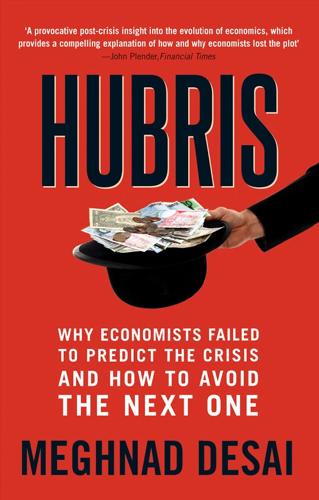
Hubris: Why Economists Failed to Predict the Crisis and How to Avoid the Next One
by
Meghnad Desai
Published 15 Feb 2015
At the base was cash, the safest asset but with zero yield, and at the farthest point was investment in some future prospect of untold riches touted by an entrepreneur. The more developed the financial market, the longer the distance between ready cash and the most profitable asset available. One could have bonds or equities or mortgages, and in more modern times derivatives, which are based on equities and which figured so largely in the equitized subprime mortgage crisis. Central Banks were there to ensure that the credit was sound. Governments had to make sure that the money they issued was sound as well. Their coins would be based on gold convertibility, and the notes issued in their name, or in the name of the bank authorized to issue them, such as the Bank of England, were also issued in proper quantities, neither over-issued nor under-issued.
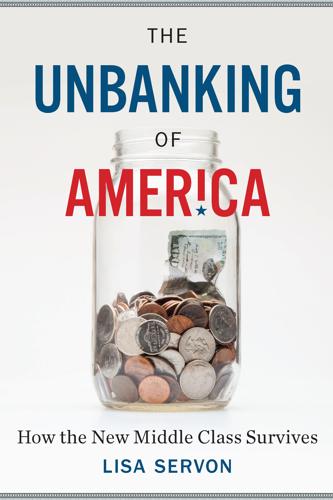
The Unbanking of America: How the New Middle Class Survives
by
Lisa Servon
Published 10 Jan 2017
“The economic system,” Akerloff and Shiller write, “is filled with trickery.” Manipulation and deception, from opaque fees to unethical debt-collection practices, run through the entire consumer financial-services system. It is essential to pay special attention to this bad behavior for two main reasons. First, its consequences, as we saw in the subprime mortgage crisis, can be dire and widespread. And second, the financial sector is a key part of our economic infrastructure and, as such, receives a lot of benefits from the government. These benefits should come with an understanding that manipulation and deception will not be tolerated. But even after the severe lesson of the financial crisis of 2008, the relationship between the government and the financial sector is tilted too far in favor of the banks.

Uncanny Valley: A Memoir
by
Anna Wiener
Published 14 Jan 2020
First-principles thinking: Aristotelian physics, but for the management-science set. Technologists broke down infrastructure and institutions, examined the parts, and redesigned systems their way. College dropouts re-architected the university, skinning it down to online trade schools. Venture capitalists unbundled the subprime mortgage crisis, funding startups offering home loans. Multiple founders raised money to build communal living spaces in neighborhoods where people were getting evicted for living in communal living spaces. There was a running joke that the tech industry was simply reinventing commodities and services that had long existed.
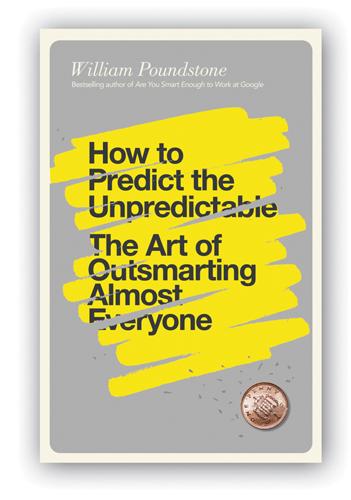
How to Predict the Unpredictable
by
William Poundstone
In the worst of times, it doesn’t deserve the low PEs of a doomed company. Yet that’s the way the market works. Stock prices, and PEs, are a lot more volatile than corporate earnings are. To be sure, index earnings sometimes do fall off a cliff. In 2009 the S&P 500’s earnings fell to less than a tenth of where they’d been before the subprime mortgage crisis. This was due to banks and other companies writing off a mountain of bad debt all at once. After the purge, earnings promptly bounced back. The market is supposed to take a long-term outlook and price stocks according to the whole future stream of earnings. But investors, like everyone else, believe in the representativeness of small samples.
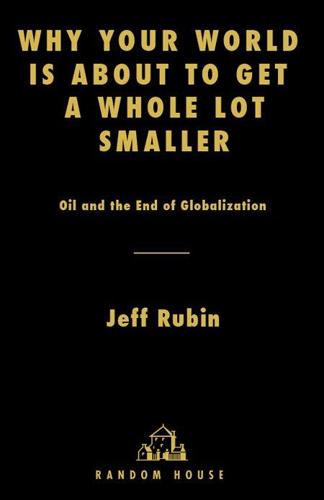
Why Your World Is About to Get a Whole Lot Smaller: Oil and the End of Globalization
by
Jeff Rubin
Published 19 May 2009
It is hard to say which possibility is more alarming to economists—that the world has reached its peak oil production plateau, or that the rules of their vocation don’t seem to be working any more. It is funny how a recession looks like good news to some people. When global credit evaporated in the wake of the 2008 subprime mortgage crisis, oil prices tumbled along with the values of the world’s stock markets. Seemingly overnight the price of a barrel of oil plunged from an all-time high of $147 to as low as the high $30s. Predictably, those who had piled into oil markets scrambled for the exit doors, especially hedge funds and other investors who were forced to sell their oil positions to come up with some money to cover the losses they were sustaining in the rest of their portfolios.
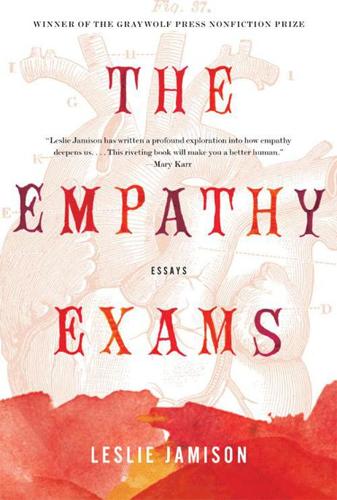
The Empathy Exams: Essays
by
Leslie Jamison
Published 30 Mar 2014
He said his broker had filled out a few “liar loans”—standard shorthand for stated-income loans—and that non-confession pretty much sealed the deal. In October 2010, Charlie was convicted of twelve counts of mail, bank, and wire fraud. Nordlander had won his case at last. Charlie’s case was also part of a much larger story: the fallout of the American subprime mortgage crisis. His conviction, one imagines, was largely fueled by the general knowledge that things had gone terribly wrong and the sense that people should be held accountable. So Charlie was held accountable. He was held accountable for something millions of people did, something he still alleges—with compelling evidence—he didn’t do.

Scary Smart: The Future of Artificial Intelligence and How You Can Save Our World
by
Mo Gawdat
Published 29 Sep 2021
They will want to loosen the grip of the tripwires and relax the stunning limits they have applied, so that the machine can roam as far as it can reach – and make more money for them, or whatever other impact is desired. Our history is littered with examples of corporations and individuals who have bent the rules for a quick buck. Enron’s collapse and the subprime mortgage crisis, which resulted from creative accounting to escape the regulations that were supposed to keep us all economically safe, took the entire global economy into recession. Imagine the depth of the crisis we could face if the same creativity was applied to the operations of an unregulated machine.
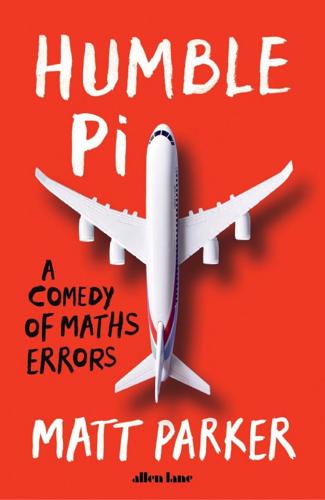
Humble Pi: A Comedy of Maths Errors
by
Matt Parker
Published 7 Mar 2019
And there was some unresolved confusion over whether moving data to an offsite computer but not releasing it until 2 p.m. was strictly disallowed by the Fed’s regulations. It seems the laws of finance are much more flexible than the rules of physics. Maths misunderstandings It would be remiss of me not to say something about the global financial crisis of 2007–8. It was kicked off with the subprime mortgage crisis in the US then rapidly spread to countries all around the world. And there are some interesting bits of mathematics which fed into it. My personal favourites are collateralized debt obligation (CDO) financial products. A CDO groups a bunch of risky investments together on the assumption that they couldn’t possibly all go wrong.
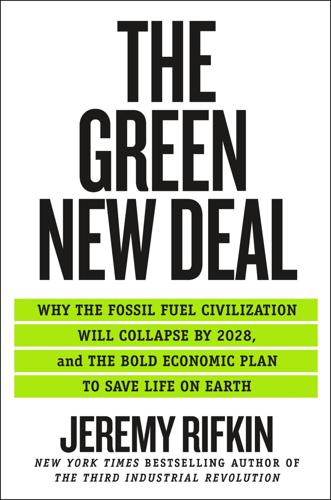
The Green New Deal: Why the Fossil Fuel Civilization Will Collapse by 2028, and the Bold Economic Plan to Save Life on Earth
by
Jeremy Rifkin
Published 9 Sep 2019
We may already have an answer. Bernstein Research, one of the energy industry’s most respected market forecasters, warned in a research note in July 2018 that the global economy could experience an oil-price shock of $150 per barrel, topping even the $147 per barrel all-time high in July 2008 that, along with the subprime mortgage crisis, took the global economy into the Great Recession. According to CNBC, Bernstein Research says that reinvestments in oil reserves are currently the lowest in over twenty years and the amount of those reserves is likely to last only for another ten years or so.27 If ten more years of reserves sounds familiar, that’s just about the time other studies project that global demand for oil will peak and begin a decline.

Brave New Work: Are You Ready to Reinvent Your Organization?
by
Aaron Dignan
Published 1 Feb 2019
Google searches for the term “VUCA”—an acronym that stands for volatility, uncertainty, complexity, and ambiguity—are up almost 1,000 percent since 2004. These words seem to show up in almost every board meeting, earnings call, and leadership retreat. Somehow, complexity has become a catchall for our problems. Subprime mortgage crisis? Complexity. Syria? Complexity. Facebook’s role in the U.S. election? It’s complex. Suddenly the world is full of surprises. We know what complexity feels like. But most of us don’t know what it actually means. We use words such as “complicated” and “complex” interchangeably, as synonyms for anything we find confounding.
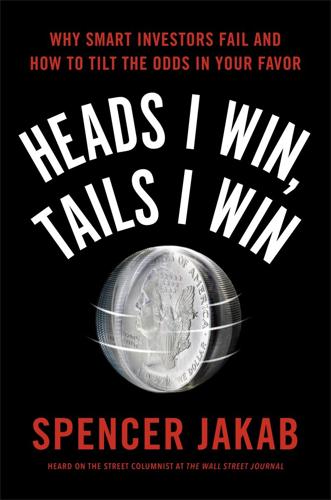
Heads I Win, Tails I Win
by
Spencer Jakab
Published 21 Jun 2016
The barriers to getting in and getting out are significantly more complicated and time-consuming than a few keyboard clicks, and so they’re able to pursue strategies that take a while to work out. Even they get undercut, though. The case of Dr. Michael Burry described in Michael Lewis’s The Big Short stands out. He was absolutely correct about how the subprime mortgage crisis would play out and was the first to bet against the dodgy loans—the sort of trades that would make John Paulson a multibillionaire and Wall Street legend. But his investors lost patience before the bets paid off. It’s no coincidence, then, that the most successful investor today and, measured in total wealth, of all time is eighty-five-year-old Warren Buffett.

Undoing the Demos: Neoliberalism's Stealth Revolution
by
Wendy Brown
Published 6 Feb 2015
Rather, the putative aim is restoration of economic and state fiscal “health,” a return from the brink of bankruptcy, currency collapse, debt default, or credit downgrade. Moreover, the addressee of sacrifice is not the nation, not the demos, but the spectacularly imbricated state and economy on which all life depends, but which also command destruction and deprivation. In the 2008 subprime mortgage crisis, for example, 700 billion taxpayer dollars and over five million homeowners were fed to banks “too big to fail.”35 Thus we are returned to the religious valence of sacrifice. In shared sacrifice for economic restoration, we sacrifice “to,” rather than “for,” and make an offering to a supreme power on which we are radically dependent, but that owes us nothing.
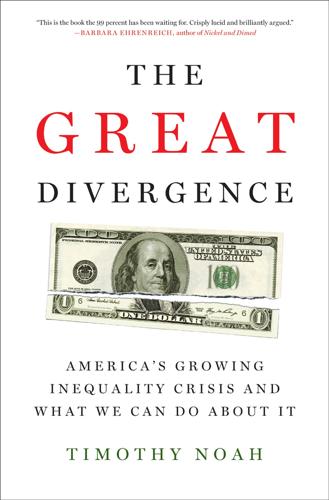
The Great Divergence: America's Growing Inequality Crisis and What We Can Do About It
by
Timothy Noah
Published 23 Apr 2012
And in 1980, manufacturing did indeed account for 92 percent of its profits. But by early 2008, GE’s financial business accounted for 56 percent of its profits. (Its GE Capital subsidiary happens to be the largest nonbank lender in the United States.) Now consider General Motors: It makes cars, doesn’t it? But before its financial arm, GMAC, got caught up in the subprime mortgage crisis of the late aughts, GMAC routinely accounted for 60 to 90 percent of the parent company’s profits. (GM sold off GMAC but has since replaced it with a new financial division, GM Financial.) When the wildly leveraged U.S. economy crashed and burned at the end of 2008, many predicted that Wall Street’s era of economic dominance had ended.

The Financial Crisis and the Free Market Cure: Why Pure Capitalism Is the World Economy's Only Hope
by
John A. Allison
Published 20 Sep 2012
In retrospect, it would have been less risky for these projects to be financed on a long-term fixed-rate basis, but the auction-rate market was enticing to borrowers who potentially could lower their interest cost and to investors who wanted the apparent liquidity of being able to resell the bonds any time they decided to do so. Unfortunately, the auction-rate municipal bond market practically stopped functioning as a result of the disruption in the capital market initiated by the subprime mortgage crisis. When the market quit functioning, many investors were not able to sell their bonds back into the market. Investments that they had thought were liquid were no longer liquid. For example, an individual might have purchased a $500,000 bond, expecting to resell it in 60 days to pay his taxes.
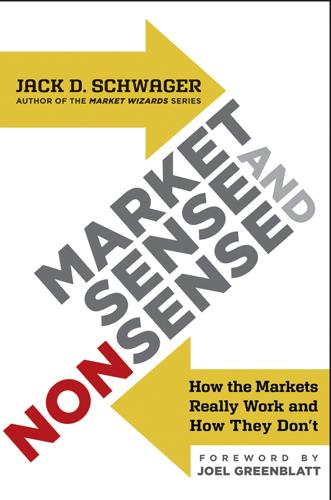
Market Sense and Nonsense
by
Jack D. Schwager
Published 5 Oct 2012
Gain-to-pain ratio negative and Sortino ratio and volatility Short bias equity hedge funds Short selling Short volatility risk Side pockets Simons, Jim Soros, George Sortino ratio and Sharpe ratio upward bias in Speculative buying Speculators Standard deviation and expected return maximum drawdown (MDD) Stark & Company Statistical arbitrage Stewart, Jon Stock index Stock market news Stock selection Stock-picking skills Strategy overcrowding Strategy periods Strike price Strong efficiency Subprime ARMs, and foreclosure Subprime bonds Subprime borrowers Subprime loans Subprime mortgage crisis Survivorship bias Systematic trend following Tail ratio Tail risk Tech bubble Technical analysis Termination bias “The Jones Nobody Keeps Up With” (Loomis) Thematic portfolios 3Com Time magazine Track records comparison pitfalls data relevance good past performance hidden risk length of portfolio managers strategy and portfolio changes strategy efficacy Tranches Transaction slipping Trend-following strategies Tulipmania Tversky, Amos Two-direction underwater curve (2DUC) Underwater loans Unexpected developments Visible risk Visual performance evaluation net asset valuation (NAV) charts rolling window return charts underwater curve and 2DUC charts Volatility about downside and upside and downside risk high high upside impact of implied increases in and negative Sharpe ratio as risk proxy Volatility funds Volatility-based estimates, and risk evaluation Wall Street Week Weak efficiency When Genius Failed (Lowenstein) Whipsaw losses Williams, Jared Worst-case loss estimate Worst-case outcomes Ziemba, William T.
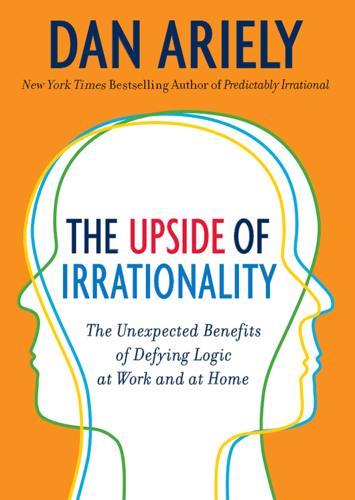
The Upside of Irrationality: The Unexpected Benefits of Defying Logic at Work and at Home
by
Dan Ariely
Published 31 May 2010
Even the Kelley Blue Book, which suggests market prices for used cars, can be thought of as a market maker because it gives buyers and sellers a starting point for negotiation. In sum, markets are an incredibly important part of the economy. Of course, markets continuously remind us that they can also fail, sometimes dramatically—as Enron demonstrated in the energy market, and as many banking institutions showed in the subprime mortgage crisis of 2008. Overall, however, markets that allow coordination among people are fundamentally beneficial. (Obviously, it would be much better if we could design markets in ways that would provide us with their benefits but not their drawbacks.) THE MARKET FOR single people is one area of life in which we have gradually moved away from a central market and into a situation in which each individual must take care of him- or herself.
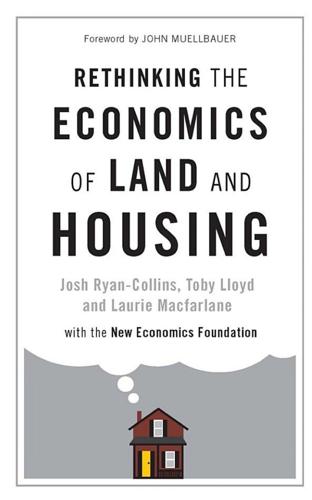
Rethinking the Economics of Land and Housing
by
Josh Ryan-Collins
,
Toby Lloyd
and
Laurie Macfarlane
Published 28 Feb 2017
This was achieved via ‘securitising’ the loans – packaging loans of different riskiness together to form mortgage-backed securities attractive to a range of different investors. In 2001, Northern Rock set up ‘Granite’, a securitisation vehicle, to hold and sell these mortgage securities to investors. Unlike deposits, however, this money-market funding was more short-termist and flighty. When the US subprime mortgage crisis struck in 2007, this source of money-market funding suddenly dried up. Banks and other providers of liquidity were suddenly no longer prepared to roll over existing wholesale funding as trust between financial institutions collapsed. Because of its heavy money-market exposure, Northern Rock swiftly ran in to a liquidity crisis.
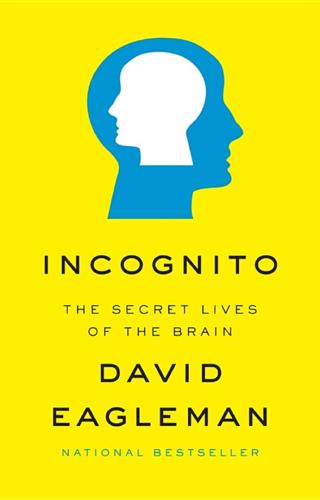
Incognito: The Secret Lives of the Brain
by
David Eagleman
Published 29 May 2011
At some point the interest rate on your adjustable-rate mortgage will go up, but that’s a long way away, hidden in the mists of the future. By plugging directly into these instant-gratification circuits, the lenders were able to almost tank the American economy. As the economist Robert Shiller noted in the wake of the subprime mortgage crisis, speculative bubbles are caused by “contagious optimism, seemingly impervious to facts, that often takes hold when prices are rising. Bubbles are primarily social phenomena; until we understand and address the psychology that fuels them, they’re going to keep forming.”19 When you begin to look for examples of I-want-it-now deals, you’ll see them everywhere.
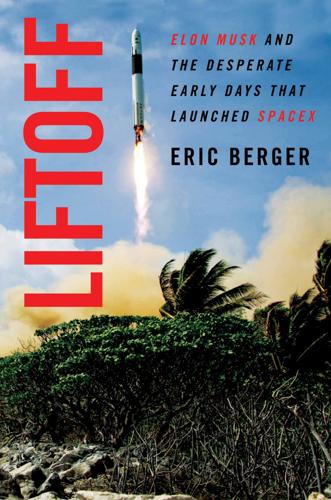
Liftoff: Elon Musk and the Desperate Early Days That Launched SpaceX
by
Eric Berger
Published 2 Mar 2021
He needed to be on hand for both SpaceX and Tesla as they struggled for survival, simultaneously managing operations and raising funds for rockets and electric cars. It was a hell of a time to be running a single, cash-hungry start-up business, let alone two. The Great Recession, precipitated by a housing bubble and subprime mortgage crisis, technically began in the United States at the end of 2007 but began to swamp the wider economy in 2008. By the fall, overall economic activity in the country slumped as the U.S. gross domestic product fell by nearly 5 percent. Perhaps most critically for Musk, from 2008 to 2009, the amount of money U.S. venture capital funds raised dropped from $53.2 billion to $22.7 billion.
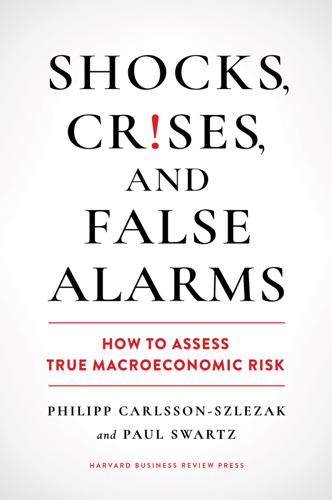
Shocks, Crises, and False Alarms: How to Assess True Macroeconomic Risk
by
Philipp Carlsson-Szlezak
and
Paul Swartz
Published 8 Jul 2024
We favor this reading over the idea of profligacy. * * * To appreciate the resilience of the dollar’s role in the global financial system—and the point about capital dumping—consider the false alarm in the run-up to the global financial crisis. That episode had all the ingredients for dollar doom. After all, the subprime-mortgage crisis was made in America; it was a sign that US financial markets might not be so credible and dependable after all. The crisis coincided with a large and growing US trade deficit, and at the time the euro appeared to be the up-and-coming challenger to dollar hegemony. Sure enough, a slew of predictions of dollar collapse followed.
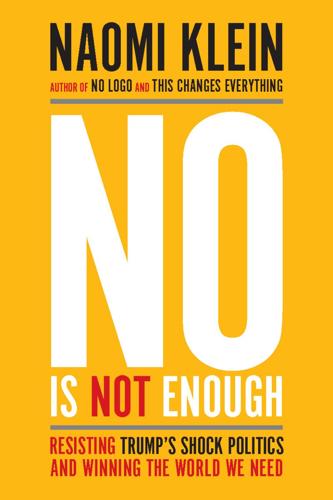
No Is Not Enough: Resisting Trump’s Shock Politics and Winning the World We Need
by
Naomi Klein
Published 12 Jun 2017
In a typically vicious salvo at his GOP rival Ted Cruz, he claimed the Goldman guys “have total, total control over him. Just like they have total control over Hillary Clinton.” It’s also extremely worrying for what it says about the administration’s willingness to exploit the economic shocks that may well reverberate on their watch. Of all the major Wall Street investment banks at the center of the 2008 subprime mortgage crisis, Goldman Sachs was among the most predatory. Not only did Goldman do a huge amount to help inflate the mortgage bubble with complex financial instruments, but it then turned around and, mid crisis, allegedly bet against the mortgage market and earned billions. In 2016, the bank was ordered by the United States Justice Department to pay a settlement of $5 billion—the largest settlement Goldman had ever paid—for these and other malpractices.

Fodor's Dordogne & the Best of Southwest France With Paris
by
Fodor's Travel Publications Inc.
Published 18 Apr 2011
But long criticized for maintaining a socialist economy out of step with the modern world, France found itself on the rare receiving end of praise for an economic model that helped the country weather the worldwide downturn more gently than its Anglo-American rivals. France-bashers were caught short as the economy they love to scorn enjoyed a slightly higher rate of growth coming out of the recession than other developed countries. With banks tightly regulated, French homeowners were spared an equivalent of the U.S. subprime mortgage crisis. Experts credited France for its long-term formula of economic fairness, with a less-pronounced gap between rich and poor than in other countries. Education is inexpensive; and the health care system, often called the world’s best, is available to all. President Sarkozy even floated the idea, however briefly, of adopting a happiness index to replace traditional measures of progress, taking into account quality of life factors.
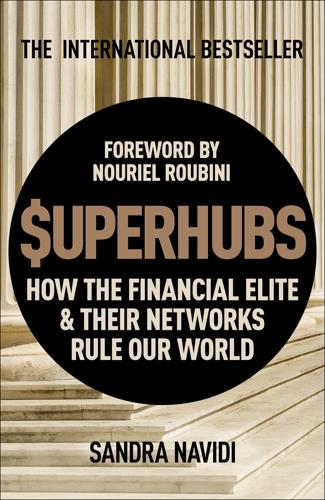
SUPERHUBS: How the Financial Elite and Their Networks Rule Our World
by
Sandra Navidi
Published 24 Jan 2017
The bulk of investments came from institutional investors, and he has managed many ordinary Americans’ money via pension funds and insurance plans. Gross, driven by a desire to beat the system, revolutionized bond trading and generated unprecedented profits. He combined quantitative skills with the ability to make accurate macro calls on the economy, including the subprime mortgage crisis of 2008, and managed to consistently predict interest rate movements ahead of his peers. Over the course of the financial crisis, however, as central bank actions skewed the markets, his bets turned out to be increasingly incorrect. Performance slipped, and investors withdrew billions of dollars.
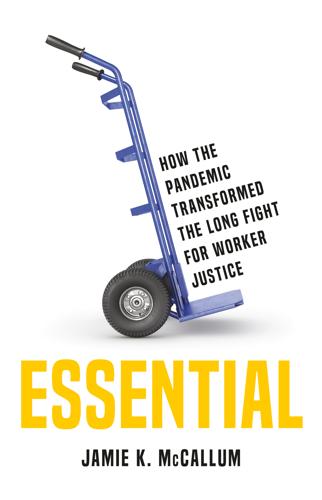
Essential: How the Pandemic Transformed the Long Fight for Worker Justice
by
Jamie K. McCallum
Published 15 Nov 2022
When she sold those stocks, ostensibly to avoid a conflict of interest, she failed to disclose the sales, in violation of the STOCK Act, which restricts insider trading by members of Congress. She also had previously served on the boards of both a for-profit healthcare company accused of overbilling Medicare and a home builder embroiled in the subprime mortgage crisis.69 Consequently, the federal government subsidized big business’s stock buybacks, dividends, and executive salaries, all while failing to ensure that these same companies didn’t fire their workers or force them to work in unsafe conditions. The CARES Act shenanigans seem easily assigned to the Trump administration, but a closer look reveals that these provisions were decidedly bipartisan and often designed by the architects of corporate bailouts of the recent past.70 Although, constitutionally, revenue measures must begin in the House of Representatives, where the Democrats had the majority, the opposition party instead chose to write the CARES Act in the Republican-led Senate, where the Democrats would not set the terms of discussion.71 When it came time to vote, the Senate passed the bill 96 to 0, and the House passed it through a voice vote.
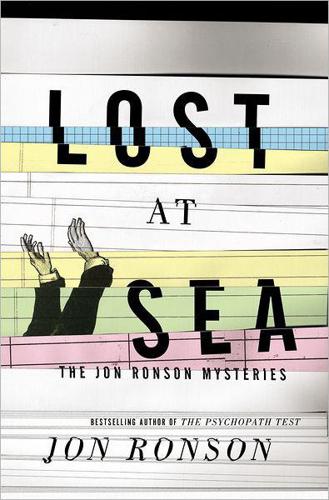
Lost at Sea
by
Jon Ronson
Published 1 Oct 2012
So Adrian and Marcus set up an estate agency together, and Diana married an army major. The estate agency failed. In fact, the whole thing failed. Who Killed Richard Cullen? (This story was published in the Guardian on July 16, 2005, two years before the global financial crash that began with the subprime mortgage crisis of July 2007.) It is a wet February day in a very smoky room in a terraced cottage in Trowbridge, Wiltshire. A portable TV in an alcove plays the news. Everything in here is quite old. No spending spree has taken place in this house. There are wedding and baby and school photographs scattered around.
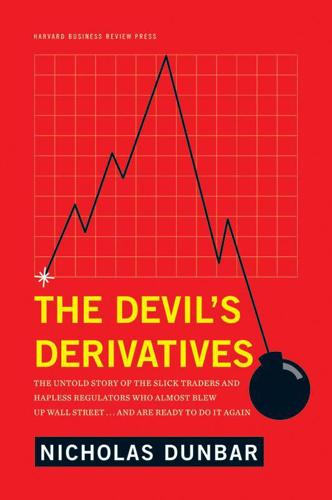
The Devil's Derivatives: The Untold Story of the Slick Traders and Hapless Regulators Who Almost Blew Up Wall Street . . . And Are Ready to Do It Again
by
Nicholas Dunbar
Published 11 Jul 2011
One might ask whether any proof exists that securitization cheapens mortgage borrowing for consumers, and the answer is surprisingly little, especially after fees are taken into account. Over the years, industry lobbyists and consultants have produced reams of documents claiming benefits for securitization, but one of the few academic studies before the subprime mortgage crisis (Steven Todd, “The Effect of Securitization on Consumer Mortgage Costs,” Real Estate Economics 29, no. 1 [2001]) found no such evidence. 6. Greg Lippmann, interview by author, June 2008. 7. Note that up until 2008, Goldman Sachs published annual accounts with a November year-end. 8. Agreeing to Goldman’s collateral provisions was not the only mistake Cassano made.
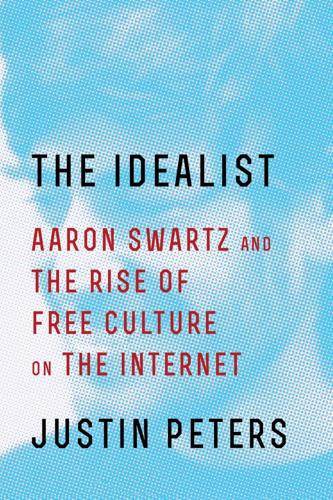
The Idealist: Aaron Swartz and the Rise of Free Culture on the Internet
by
Justin Peters
Published 11 Feb 2013
Annoyed with the omnipresence of the boisterous television host Jim Cramer, who for all his professed financial acumen had failed to foresee the collapse of the housing market in 2008, Swartz and the PCCC launched an online petition asking CNBC, Cramer’s network, to hire someone—anyone—who hadn’t been wrong about the subprime-mortgage crisis. “We spread the word to friends and bloggers and before we knew it we had nearly 20,000 signatures—20,000 new members,” Swartz recalled.39 The group continued to grow from there. Swartz worked out of a shambolic old building called the Democracy Center, near Harvard Square, which had become a hub for political activists with grand ambitions and limited budgets.
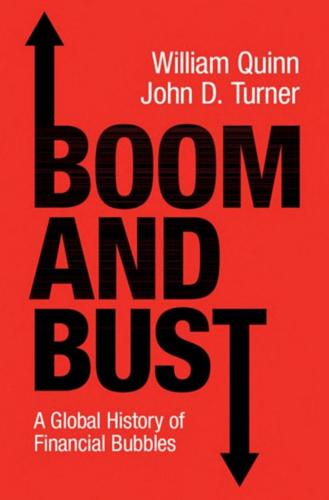
Boom and Bust: A Global History of Financial Bubbles
by
William Quinn
and
John D. Turner
Published 5 Aug 2020
The Evolution of the Money Market, 1385–1915. London: Frank Cass, 1966. Pressnell, L. S. Country Banking in the Industrial Revolution, Oxford: Clarendon Press, 1956. Purdey, C. ‘Housing equity: A market update’, CML Housing Finance, August, 1–11, 2011. Purnanandam, A. ‘Originate-to-distribute model and the subprime mortgage crisis’, Review of Financial Studies, 24, 1,881–915, 2011. Qian, J. ‘The 2015 stock panic of China: a narrative’, Shanghai Jiao Tong University mimeo, 2016. Quinn, W. ‘Squeezing the bears: cornering risk and limits on arbitrage during the “British bicycle mania”, 1896–898’, Economic History Review, 72, 286–311, 2019.
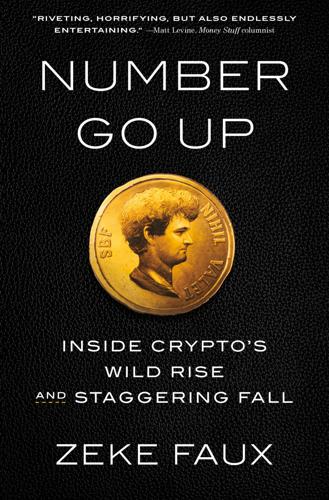
Number Go Up: Inside Crypto's Wild Rise and Staggering Fall
by
Zeke Faux
Published 11 Sep 2023
So instead, my computer broadcasts the transaction to all the computers that run the Bitcoin network, sending all the other Bitcoin people a message that says, “Hey, I’m transferring 1,000 Bitcoins to another account.” * * * — SO WHERE DID this idea come from? Bitcoin, the ur-cryptocurrency, was born on Halloween in 2008, at the climax of the subprime mortgage crisis, just after the storied investment bank Lehman Brothers failed. It began when a person or group going by the name Satoshi Nakamoto posted a message on a cryptography email list. “A purely peer-to-peer version of electronic cash would allow online payments to be sent directly from one party to another without the burdens of going through a financial institution,” Nakamoto wrote.
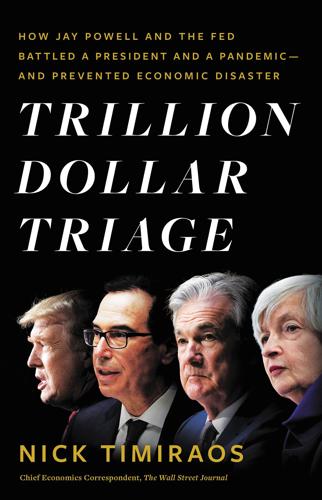
Trillion Dollar Triage: How Jay Powell and the Fed Battled a President and a Pandemic---And Prevented Economic Disaster
by
Nick Timiraos
Published 1 Mar 2022
The messy aftermath plunged the Fed into grueling policy and political battles. Jay Powell watched closely, and he would later borrow extensively from Bernanke’s playbook. Chapter Three “WE WOULD TREAT HIM PRETTY UGLY” The problems boiled over in 2007, when Ben Bernanke had been slow to recognize how the subprime mortgage crisis had stretched its tentacles through the entire economy. But after the collapse of Lehman Brothers in September 2008 plunged the financial system into its worst crisis since the Great Depression, Bernanke moved quickly and creatively to prevent a rerun of 1929. The Fed deployed scarcely used emergency-lending authorities—first to rescue the investment bank Bear Stearns, and later the insurance giant American International Group—to stem a financial panic.

What's Next?: Unconventional Wisdom on the Future of the World Economy
by
David Hale
and
Lyric Hughes Hale
Published 23 May 2011
These events include: • The increasing complexity of derivative products, including CDSs (Credit Default Swaps) and CDOs (Collateralized Debt Obligations)4 • The ascendancy of rating agencies • Alt-A subprime lending • Basel II (2005–2006) • The subprime housing crisis in the United States, including the rise of “NINJA” (no income, no jobs, no assets) financing • The rise of hedge funds • The oil crisis (2008) • The collapse of Bear Stearns, Fannie Mae, Freddie Mac, and Lehman Brothers (2008) Understanding the causes of the global financial crisis will go hand in hand with regulatory reform and increasing targeted global compliance and ethics programs.5 Why SOX Failed SOX was supposed to remedy the financial improprieties and excesses that existed prior to July 31, 2002. The debacles of WorldCom, Enron, Adelphia, and Tyco were only the last in a long series of financial abuses. Further, after SOX, despite the subprime mortgage crisis in the United States, rating services failed to calculate the risk of credit default swaps (CDSs), collateralized debt obligations (CDOs), and other financial abuses. Until September 18, 2008, there was no general sense that SOX had not alleviated the possibility of a global financial meltdown, or at least a US financial meltdown.
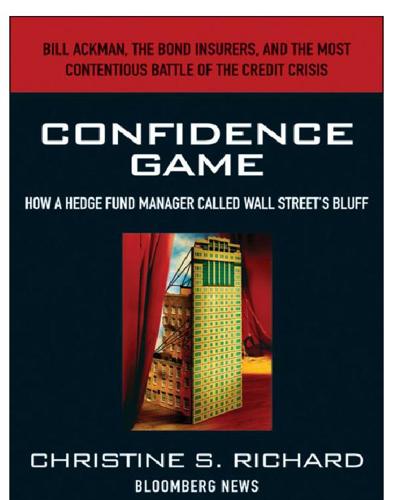
Confidence Game: How a Hedge Fund Manager Called Wall Street's Bluff
by
Christine S. Richard
Published 26 Apr 2010
—KAREN WEAVER, HEAD OF GLOBAL SECURITIZATION, DEUTSCHE BANK, JUNE 2007 GREETINGS FROM ARMONK, where it is springtime,” MBIA chief financial officer Chuck Chaplin told listeners on MBIA’s first-quarter conference call. It was April 26, 2007, the company had put a more than two-year regulatory investigation behind it, the subprime mortgage crisis wasn’t going to touch the company, and the board had authorized a huge share buyback plan. “We continue to monitor the developments in the subprime mortgage market, but at this time these developments have not caused any significant concern,” Chaplin told investors. MBIA’s total direct exposure to the subprime market was $5.4 billion, or “less than 1 percent of the outstanding book of business,” Chaplin said.
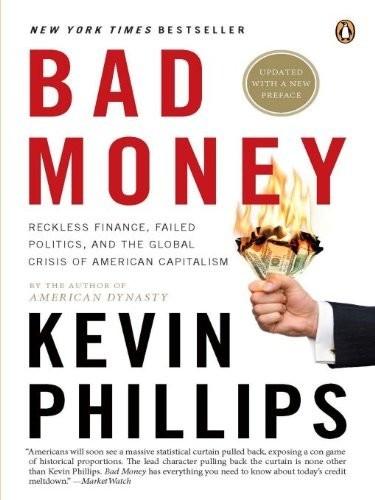
Bad Money: Reckless Finance, Failed Politics, and the Global Crisis of American Capitalism
by
Kevin Phillips
Published 31 Mar 2008
Suffice it to say for now that as 2007 drew to a close, elements of the financial press speculated that financial institutions might have to take write-downs with respect to credit default swaps (and related synthetic CDOs) comparable to the $700 billion they were taking for instruments connected to the subprime mortgage crisis. While that future amount was conjectural, insiders knew that amid autumn’s maelstrom, the credit swap counter-party nexus surrounding AIG was a driving force behind the enactment of mammoth federal bailout legislation. We cannot turn away from this fourth engine of financial sector expansion—the embrace and promotion of exotic products—without noting that in 2006 and 2007, confident Wall Streeters predicted that derivatives, securitization, and structured finance were becoming this country’s biggest and most profitable export, replacing yesteryear’s manufactures.
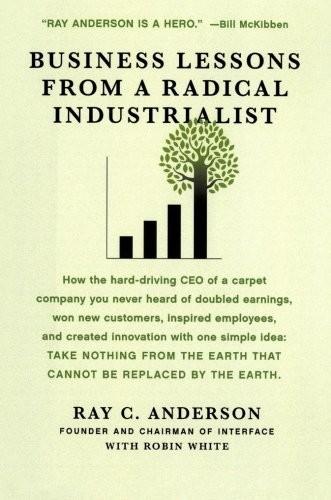
Business Lessons From a Radical Industrialist
by
Ray C. Anderson
Published 28 Mar 2011
Matthew Island (off Alaska) sales associates/employees, car travel by Sam’s Club SARA 313 chemicals Saudi Arabia Scherpenzeel (Holland) Interface facility science, and religion SC Johnson Scott, Graham Scott, Lee scrubbing sea, transportation by Seiko Epson self-interest sequestering of carbon Serreze, Mark Shaw Industries sick building syndrome Six Sigma Small Business Administration SmartWay Transport program (EPA) Smith and Hawken smokestacks cutting emissions from inventory of (Interface) inventory of emissions from (Interface) social equity, measuring social sustainability Sociometrics solar cells solar concentrators solar energy cost of not a bubble, but a revolution Solar-Made carpet solar photovoltaics, growth of industry solar units, on customers’ roofs solid waste, volume, from Interface factories “Someday they’ll send people like me to jail” South Bronx Southern California Gas Company species extinction Speth, Gus spirituality, and sustainability stack scrubbers Stahel, Walter stakeholders sensitizing them Staples state governments, environmentalism of stewardship of the earth (Biblical) Stigson, Björn STMicroelectronics Stonyfield Farm stuff, infatuation with Subaru of America subprime mortgage crisis suggestions from employees, rewards for sun, terawattage of Superfund Amendment and Reauthorization Act (SARA) supersaturated solutions sustainability competitive edge and goodwill from definition of framework for pursuing how to start planning for ignoring the laws of and profit seven paths to skepticism about and survival training course in university courses in sustainability programs, so-called, of some companies “Sustainable America: A New Consensus” sustainable society Sustainable South Bronx Sustainable Strategies Group SUVs TacTiles take-make-waste economy Tandera, Giulio Tau Beta Pi team-building exercises TEAM-UP program (DOE) technology environmental impact of improvements in, from market stimulus over-reliance on technophiles vs. technophobes technosphere TerraChoice Environmental Marketing textile industry thinking in the round third parties, damage to Thomas, Glenn, poem by, “Tomorrow’s Child” Thoreau, Henry David three crises (environmental, financial, and security) TI:GER program Toxic Chemical Elimination Team (Interface) toxic emissions, five principles for eliminating toxic minerals, that never should have been extracted Toyota traditional-craft skills transportation cost of GHG cost of transportation system, need to reengineer trash pickup trees nature’s technology of planted for environmental restoration planted to offset CO2 emissions Trees for Travel(tm) triple bottom line trucks efficiency of GHG emissions loading of transportation by trust, need for, in banking tyrants, in oil-producing states, American tolerance of unemployed people Unilever United Kingdom, Interface facilities in United States balance of trade economy, importance of oil to United States Green Building Council (USGBC) University of California University of Pennsylvania, Wharton School, Institute for Global Environmental Leadership University of Texas at Houston unsustainability, examples of UPS Ground vs.

Green Tyranny: Exposing the Totalitarian Roots of the Climate Industrial Complex
by
Rupert Darwall
Published 2 Oct 2017
Stalin, Joseph Five Year Plans Stanford University State Institute for Racial Biology (Sweden) Staudenmaier, Peter Stern, Todd Steyer, Tom Stockholm Conference Stockholm Declaration Principle 21 Principle 22 Stockholm Environment Institute “Design to Win” (2007) Streicher, Julius Strong, Maurice Students for a Democratic Society (SDS) Port Huron Statement sulfur dioxide Sunday Times Sussman, Bob Sustainable Markets Foundation Supplemental Poverty Measure Svenska Dagbladet Svensson, Göte Svensson, Ulf Sweden 1812 Policy Border Recommendation System (1938) Defense Staff Environmental Protection Agency foreign aid program of Gothenburg Hårsfjärden incident (1982) National Environmental Board State Forestry Agency Stockholm U-137 Incident (1981) Uppsala Swedish Committee for Vietnam Swedish Energy Research Commission Swedish Radio Swiss Re Switzerland Basle Geneva Kaieraugust Zurich Syria Taylor, Kat TechNet Tesla, Nikola Thatcher, Margaret administration of Theutenberg, Bo Diaries from the Foreign Ministry Third Reich (1933–1945) Architects and Engineers Association Hitler Youth Nationalsozialistische Bibliotek public health policies of Reich Ministry of Economic Affairs Reich Ministry of Finance Reich Windpower Study Group symbolism of Thirty Years’ War (1618–1648) Thomas, David Thomas, Lewis Thompson, Starley Thoreau, Henry David Three Mile Island incident (1979) Threshold Foundation Thunberg, Anders Swedish International Secretary Tides Foundation founding of (1976) Time Tinbergen, Jan Tinbergen Rule Tocqueville, Alexis de Tolba, Mustafa visit to Stockholm (1982) Tooze, Adam Toronto Conference (1988) role of NGOs in Tretyakov, Sergei Trittin, Jürgen Trudeau, Pierre Trumka, Richard Trump, Donald TTAPS Twitter Tyndall, John Uganda Entebbe Ukraine Chernobyl Disaster (1986) Ulbricht, Walter Ulrich, Bernard Undén, Östen Union of Concerned Scientists formation of (1968) United Arab Emirates (UAE) Abu Dhabi United Kingdom (UK) Climate Change Act Cumbria Department for Energy and Climate Change Department for International Development Department for Transport domestic electricity prices in Drax power station electricity grid infrastructure in Foreign and Commonwealth Office London National Grid United Nations (UN) Charter of Economic Commission for Europe (UNECE) Educational, Scientific and Cultural Organization (UNESCO) Environment Programme (UNEP) Framework Convention on Climate Change (1992) General Assembly Geneva Convention on Long-Range Transboundary Air Pollution (1979) Global Impact Resolution (1998) Security Council United States Ahoskie, NC Air Quality Agreement (1991) American Clean Energy and Security Act (Waxman-Markey Bill) (2009) Buffalo, NY California Global Warming Solutions Act (2006) California Renewable Portfolio Standard Program Californian Coastal Commission Californian Energy Crisis (2001–2002) Central Intelligence Agency (CIA) Chicago, IL Clean Air Act (1970) Clean Power Plan (2015) Congress Constitution of Court of Appeals Declaration of Independence (1776) Department for Justice Department of Health Department of the Interior Energy Independence and Security Act (2007) Environmental Protection Agency (EPA) Federal Bureau of Investigation (FBI) Freedom of Information Act House of Representatives Ithaca, NY Los Angeles, CA National Acid Precipitation Assessment Program (NAPAP) natural gas and oil output of New Deal New York Office of Management and Budget Office of Science and Technology Policy oil reserves of Palo Alto, CA Pentagon Phoenix, AZ Proposition 23 (2010) Sacramento, CA Safe Drinking Water Act (2005) San Francisco, CA Santa Barbara oil spill (1969) Senate Senate Committee on Environment and Public Works (EPW) Senate Foreign Relations Committee Senate Judiciary Committee Silicon Valley State Department subprime mortgage crisis (2007–2009) Supreme Court Washington, D.C. Waxman-Markey Bill (2011) University of California, San Diego University of California, Santa Barbara University of Chicago University of Pennsylvania Cancer Research Laboratory University of Stockholm University of Virginia Urey, Harold US Naval Postgraduate School U.S.

City on the Verge
by
Mark Pendergrast
Published 5 May 2017
As of May 31, 2008, the city began to make $450,000 monthly interest payments to Mason, with the entire loan due on October 31, 2008, a few days before the vote to amend the constitution to allow the inclusion of school taxes in TAD funding. Meanwhile, the credit market was tightening as the inflated real estate bubble collapsed and foreclosures on homes increased. Interest rates for municipal bonds rose in response to the burgeoning subprime mortgage crisis in early 2008.* “We have never seen this kind of chaos in the municipal bond market,” said the BeltLine’s financial advisor, urging the city to delay any attempt to issue bonds. In mid-September 2008, Lehman Brothers declared bankruptcy, triggering the onset of the Great Recession. A month later, an Atlanta reporter noted, “Bond rates have increased sharply in the past three weeks,” and “The BeltLine sits on the sidelines for now, waiting for the market to improve.
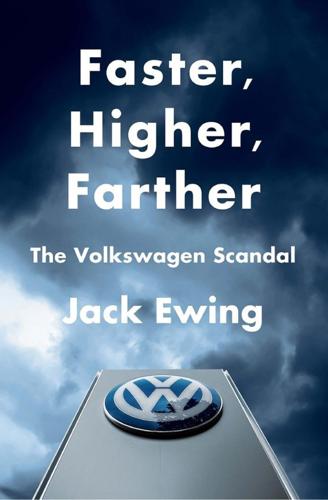
Faster, Higher, Farther: How One of the World's Largest Automakers Committed a Massive and Stunning Fraud
by
Jack Ewing
Published 22 May 2017
District Court, San Francisco Schmidt, Oliver admissions about defeat device, 199 arrest of, 268 conference call with CARB, 182 indictment of, 269 obfuscations about defeat device, 196–97 on regulators’ queries, 179 testimony before European regulators, 231–32 Schneiderman, Eric T., 229 Schröder, Gerhard, 95, 101, 163 Schuster, Helmuth, 102–4, 106 SCR (selective catalytic reduction) systems; See also BlueMotion emissions technology; BlueTec emissions technology Audi’s undermining of, 127 and CARB tests, 173, 176, 177 and defeat device, 227, 246 and EA 288 engine, 180 falling price of, 209 ICCT test, 167 and urea tank, 167 SEAT, 97, 158 self-driving cars, 204, 222 self-expression, cars as form of, 146 sex scandal, 102–7 shared platform, See platform strategy shareholders, VW, 26, 58–59, 244 share prices declines (2015), 189 declines (early 2000s), 130–31 following EPA charges against VW, 212 under Pischetsrieder, 110 Porsche, 96 Porsche-VW takeover battle, 138–40 short-selling, 138–41 short squeeze, 139–40, 142 Siemens bribery scandal, 257–58 Silicon Valley, 222 Skoda, 6, 48, 102–4, 158 Skoda Octavia, 53 slave labor, 12–14 smog, NOx and, 2, 160, 168–69 Snap-On, 70 Social Democratic Party, 26, 49, 164 software, 120, 226–28; See also defeat device software updates, 182–84, 224, 244 soot particles, 43–44, 115, 159 Sorrell, William, 248 South Korea, 245 sovereign wealth funds, 143 Soviet Union, 17 special settlement master, 233 Speer, Albert, 17 sport utility vehicles (SUVs), 94–96 Stadler, Rupert, 257, 272, 273 Stalin, Joseph, 6 Standard & Poor’s, 219 “Statement of Facts,” 269 Steiner, Rudolf, 129 Steinkühler, Franz, 49 stock market, 96 stock options, 133, 136, 137 Strategy 2018, 150–51, 188 stretch goals, 151 Stumpf, John, 262 subprime mortgage crisis, 136 Sudetenland, 6 Sullivan & Cromwell, 229–30, 235 Super Bowl, 145 supervisory board (Audi), 45–46 supervisory board (VW) executive committee awareness of emissions problem, 271 failure to sanction managers for emissions cheating, 256–57 and internal investigation, 216 Piëch as member after retirement, 97, 157 Piëch’s attempt to oust Winterkorn, 187 Piëch’s elevation to VW CEO, 49 Porsche-Piëch family’s influence on, 264 Porsche’s attempted VW acquisition, 135–36 Porsche’s position on VW board, 133 VW’s acquisition of Porsche, 143–44 worker participation in, 57 supply chain, as VW weakness, 50–51 synthetic shares, 137 Tatra, 9 tax credits, 147 TDI (turbocharged direct injection), 44–45, 55, 116, 128, 146, 181 “Think Small” ad campaign, 34–35 Thiruvengadam, Arvind, 1, 167, 169, 171, 172 Thomas, Sven, 239 Thompson, Greg, 79–80, 166, 167, 172, 174 three-liter diesel engine and “acoustic function,” 123, 128, 246 defeat device in, 152, 158 EPA/CARB questions about, 183–84 EPA’s second notice of violation, 217 exclusion from first US settlement, 238 notice of violation for cars with, 217 SCR technology, 180 settlement for US and Canada, 266 US charges against designer of, 246–47 Tiercelet, France, iron mine, 15 Tiger Tank, 10–11 Time magazine, 265 Tolischus, Otto D., 9 Toyota as competitor in early 1990s, 50–51 EA 189 engine as part of VW’s strategy against, 107 European market share, 161 former employees at Porsche, 52 hybrid technology, 2–3, 116, 146; See also Toyota Prius surpassed by VW as world’s largest carmaker, 187–88, 206 VW’s efficiency gap with, 50–51, 58, 94, 110, 188, 219 VW’s sales competition with, 156 Toyota Prius, 107, 116, 146, 207, 208 Transport Select Committee, House of Commons, 231 truck engine emissions cheating scandal, 72–74, 76, 78, 125, 163 trust fund, 236 Tuch, Frank, 223 turbochargers, 44 Type 166 Schwimmwagen, 10 Umweltbundesamt, 162–64 unemployment benefits, 101 unemployment rate, German, 101, 102 United States Audi defeat device revelations, 267–68 Clean Air Act Amendments (1990), 67 EA 189 as key to VW market in, 116–17, 119 EA 189 development, 107–8, 119–20 environmental rule enforcement, 165 fleet average fuel economy milestones, 131 legal ramifications of emissions violations, 225–31 NOx regulations, 165 penalties for emissions violations, 122, 155, 156, 163 state lawsuits, 245–47 TDI Club, 45 truck engine defeat device scandal, 163 VW plant in, 148–49 VW sales (early 1970s), 36 VW sales (early 1990s), 47 VW sales (late 1990s), 55 VW sales (2014), 206 VW sales after cheating revelations, 217–18 VW’s “clean diesel” campaign, 145–58 VW’s declining fortunes in early 1990s, 47, 48, 50 VW’s early success in, 34–35 VW’s missteps in, 115–16 VW’s responsibility for diesel pollution, 253 and Winterkorn’s sales ambitions for VW, 112–13 unit injector (Pumpe Düse), 116–17 University of Virginia Center for Alternative Fuels, Engines, and Emissions, See Center for Alternative Fuels, Engines, and Emissions (CAFEE) urea solution, 177, 180–81, 192; See also BlueTec emissions technology urea tank, 113, 127–28, 152–53, 183 U.S.

Think Like a Rocket Scientist: Simple Strategies You Can Use to Make Giant Leaps in Work and Life
by
Ozan Varol
Published 13 Apr 2020
Merck, for example, ignored the early warning signs linking its painkiller Vioxx to cardiovascular disease.52 Executives at Kodak ignored the signs that digital imaging could disrupt their business. Blockbuster paid little attention to the threat from Netflix’s business model. There were signals that the subprime mortgage crisis was under way long before major financial institutions imploded in 2008 and generated one of the worst recessions in US history. Consider also a study of over 4,600 orbital rocket launch attempts. According to the study, only total failures—where the rocket blew up—led to institutional learning and improved the likelihood of future success.53 Partial or small failures—where the launch vehicle didn’t blow up but failed to properly perform its function—had no similar effect.
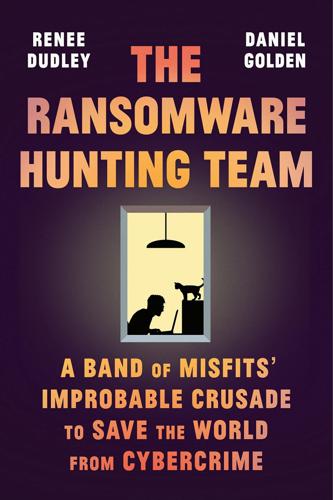
The Ransomware Hunting Team: A Band of Misfits' Improbable Crusade to Save the World From Cybercrime
by
Renee Dudley
and
Daniel Golden
Published 24 Oct 2022
A sudden onset of acute ulcerative colitis, likely exacerbated by the stress of his job, left him in crippling pain. He took escalating courses of drugs, culminating in a regimen of various immunomodulators, biologics, and corticosteroids. Still, he showed little improvement. “The drugs were killing me, and if I went off the drugs, I would die,” he said. As the subprime mortgage crisis plunged the U.S. financial system into chaos, the performance of Bill’s group tanked, and SAC fired him in early 2008. Even at the time, he saw his dismissal as cathartic. “It was a head-clearing moment where the world’s priorities line up and choices are clear,” he said. Subsequent developments reinforced his views.
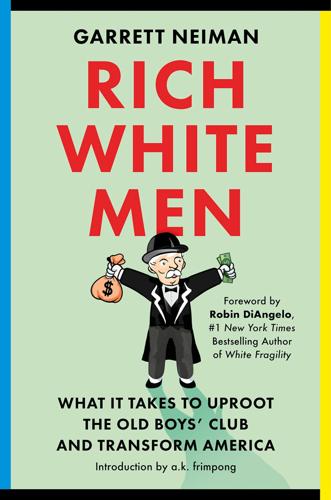
Rich White Men: What It Takes to Uproot the Old Boys' Club and Transform America
by
Garrett Neiman
Published 19 Jun 2023
For the world’s wealthiest university, rampant wealth inequality had been a boon: Harvard’s endowment swelled from $4.8 billion in 1990 to $53.2 billion in 2021.2 The university’s largest gift to date—a whopping $400 million—was a direct product of rising inequality: hedge fund manager and rich white man John Paulson made the donation after pocketing $4 billion from shorting the housing market during the 2008 subprime mortgage crisis.3 While millions of Americans were losing their homes and tumbling into poverty, Paulson—and Harvard—were getting richer. And yet, despite their liberal leanings, the professors leading our inequality seminar perpetuated a myth also echoed by their more politically conservative colleagues.
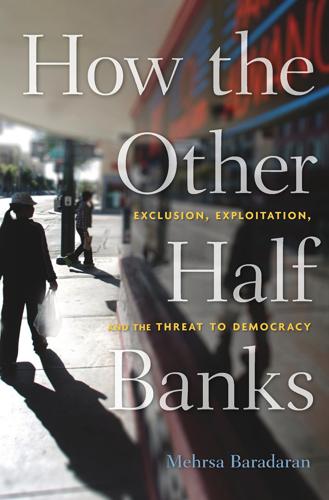
How the Other Half Banks: Exclusion, Exploitation, and the Threat to Democracy
by
Mehrsa Baradaran
Published 5 Oct 2015
Stephen Pizzo, Mary Fricker, and Paul Muolo, Inside Job: The Looting of America’s Savings and Loans (New York: McGraw-Hill, 1989), 12. See also Depository Institutions Deregulation and Monetary Control Act § 308; Barbara Crutchfield George et al., “The Opaque and Under-Regulated Hedge Fund Industry: Victim or Culprit in the Subprime Mortgage Crisis?,” New York University Journal of Law and Business 5 (2009): 359, 383. 149. See, generally, Pizzo, Fricker, and Muolo, Inside Job; James B. Stewart, Den of Thieves (New York: Simon and Schuster, 1991). But see Lawrence J. White, The S & L Debacle: Public Policy Lessons for Bank and Thrift Regulation (New York: Oxford University Press, 1991), 117. 150.
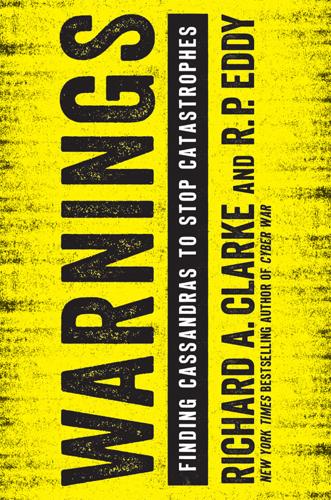
Warnings
by
Richard A. Clarke
Published 10 Apr 2017
See Gulf War Personal investment, of critics, 187–88 Personalized medicine, 331–32, 342 Personal responsibility, sense of, 185–86 Persuasion campaign, 364–65 Pessimism, 2, 3, 50, 236 “Pet Rock problem,” 321 Piccone, Michele, 380n Pielke, Roger, Jr., 254 Planetary Defense Program Office, 317, 322–23 Plant elevation, and Fukushima nuclear disaster, 89–90 Plaquemines Parish, 39 Plutonium spheres (pits), 83 Polar ice melt, 239, 245–52, 258–60, 360 Political threshold problem, 321–22 Polk Prize, 226 Pollack, James B., 273 Pomona College, 327 Pontchartrain, Lake, 40 Ponzi, Charles, 105 Ponzi scheme, 102–3, 105, 110–11, 113, 115 Population bomb, 192–93 Population Bomb, The (Ehrlich), 192–93 Population growth, 16, 192–93 Predictions, 13–15 Predictor (possible Cassandra), 168, 170, 182–86 President’s Daily Briefing, 24, 35 Prevention strategy, 362–64 Prince, Chuck, 145, 154, 156, 157 Professional investment, of critics, 187–88 Programmable logic controller (PLC), 291–92 Protecting Industrial Control Systems from Electronic Threats (Weiss), 286 Protein & Cell, 340 Providian, 152 Prykarpattyaoblenergo, 284–85 Public Health Service, 354–55 Pulitzer Prize, 50, 226 Putin, Vladimir, 285 Pyrrho of Elis, 185 Questioners, 184–85 Radiation exposure, 88 Ramadi, Iraq, 69 Rampart Investment Management, 101, 102, 105, 106, 109, 110 Raqqa, 68 Reacting, Ronald, 26 Reagan, Ronald, 21, 32, 277–78, 280 Recombinant DNA technology, 336–40 Red Army, 25, 26, 266 Red Team (Zenko), 379n Regulatory capture, 94–95, 96, 98, 115, 177–78 Reid, Ann, 222 Reis Crater, 307 Rendezvous with Rama (Clarke), 313 Response Availability, 170–71 Response strategies, 358–64 hedging, 361–62 mitigation and prevention, 362–64 surveillance, 359–60 Responsibility, diffusion of, 176–77, 215, 235, 321, 348 Revkin, Andrew, 244 Ribozymes, 328 Ring of Fire, 94 RNA, 327–28 Robock, Alan, 261, 273–74, 277–82 Robo-traders, 211 Roche, 225 Rockefeller Institute, 193 Roedersheimer, Keefe, 205 Rolling Stone (magazine), 338 Rometty, Ginni, 209 Roosevelt, Franklin D., 213 Roper, William, 214 Ross, Bill, 136 Ross, Lee, 184 Royal Academy, 345 Royal Air Force, 10 Royal Navy, 9 Royal Netherlands Meteorological Institute, 253 Rubenstein, Ariel, 380n Ruby, Jack, 99 Rumsfeld, Donald, 28–29 Russo, Rene, 219 Rutgers University, 261 Sagan, Carl, 273–77 Sago Mine disaster, 129–30 Salling, John Peter, 122 Samuel, Arthur, 381n San Bruno pipeline explosion of 2010, 293–94 Sandler O’Neill & Partners, 154 Sandworm, 285 Sanriku earthquake of 869, 77–81, 91, 97–98 Sarbanes-Oxley Act (SOX), 157 Sarin, 23, 230 Satisficing, 116, 117, 180–81, 319, 322, 359 Savage, Stefan, 297–98 Scacco, Gus, 149 Scanning for problems, 354–56 Scarface (movie), 99 Scenario modeling, 360, 363–64 Schapiro, Mary, 118–19 Schlesinger, Michael, 240–41 Schneider, Stephen, 241 Science (journal), 242 Science Story (show), 226 Scientific American, 278–79 Scientific method, 248–49 Scientific reticence, 79–80, 186–87, 234, 248–49, 259, 335 “Scope neglect,” 174 Sea-level rise, 238, 244–60, 360 Search for extraterrestrial intelligence (SETI), 304 Seawalls, and Fukushima nuclear disaster, 77, 85, 89–90, 92–93 Securities and Exchange Commission (SEC), 100, 105–12, 114–20, 189–90 Security by obscurity, 270 Seismologist Warns, A (Ishibashi), 91–92 Selection effect, 380n Self-confidence, 184, 240, 365 Self-interest, of critics, 187–88 Sendai, Japan, 80, 81, 82 Sentinel intelligence, 3, 16, 356 “Separation of parts” policy, 270 September 11 attacks, 7–9, 230, 361–62 Seven Pillars of Wisdom: A Triumph (Lawrence), 57 Sextus Empiricus, 185 Shearson Lehman, 162 Shia Muslims, 63 Shoemaker, Gene, 306–7 Shultz, George, 280 Siberian Unified Dispatch Control Center (SUDCC), 290 Siegel, Jeremy, 157–58 Siegfried Line, 10 Sieur de Bienville, Jean-Baptiste Le Moyne, 41 Signal and the Noise, The (Silver), 15 Signal from noise, separating, 356–58 Silver, Nate, 13, 15 Silver mining, 128–29 Simon, Herbert, 180–81, 322 Simons, Daniel, 175 Singularity, the, 209 60 Minutes (TV show), 119, 162, 244 Skepticism, 151–53, 168, 185, 240, 248–49 Skynet, 205 Smith & Wesson, 99, 109 Snowden, Edward, 211 Solid rocket boosters, and Challenger disaster, 11–13 Somalia, 65 Soothsayers, 1–2 “Sophistication effect,” 187 South Africa, 42–43 Soviet Union, 25–26, 266, 267–68, 271, 273–74, 277–78 Spaceguard goal, 312–17, 319 Space Shuttle Challenger disaster, 11–13 SpaceX, 202 Spanish flu pandemic of 1918, 195, 198, 217, 221–24 Spielberg, Steven, 101 Split-strike conversion, 103–5 SSH (Sayano-Shushenskaya Hydro), 289–2917 Stalin, Joseph, 174, 213 Standard project hurricane (SPH), 52–53 “Standing start,” 266 Stanford University, 89, 184, 192, 226, 337, 338 Steam engine, 174–75 Stock trading. See also Financial crisis of 2008 weak AI and, 211–12 Storm, The (van Heerden), 51 Stuxnet, 291–92 Subprime mortgage crisis, 147–48, 153–54, 157, 162 Suh, Simona, 117–18 Sunni Muslims, 63 Sunshine Mine disaster of 1972, 128–29 Sun Yat-sen University, 340 SUNY Downstate Medical Center, 186 Super Aegis II, 214 Superintelligence, 201, 203–16 Supervisory control and data acquisition (SCADA), 292, 293 Surveillance, 359–60 “Swarm boats,” 214 Swine flu, 195–98, 218 Symposium Greek Restaurant (New York City), 237, 252–53 Syria, 57–74 Ford scenario, 65–66, 67–69 slippery slope of intervention, 70–74 Syrian Civil War, 60–61, 62–64, 72–73 Szostak, Jack, 327 Tactical nuclear weapons, 267–69 “Take It Easy” (song), 305 Tamiflu, 225, 233 Taubenberger, Jeffery, 222 Team Louisiana Report, 55 Technical expertise, 182–83 Technological evolution, 212–13 Technological singularity, 209 Tectonic plates, 80, 81 “Tells,” 25–27, 29–30, 36–37 Tenet, George, 8 Terminator, The (movie), 205 Tesla, 202 Tetlock, Philip, 13–15 Thierry de la Villehuchet, René, 102–3, 109, 113 “Tickling the dragon’s tail,” 83 Titan III rockets, 11–12 Tōhoku earthquake and tsunami of 2011, 81–82, 84–85 Tohoku Electric Power Co., 91 Tokyo Electric Power Company (TEPCO), 76–78, 86–98, 92–98 Toon, Owen, 273, 278–79 Trenberth, Kevin, 253 Troy, 1–2 Truman, Harry, 127 TTAPS, 273–77 Tunguska event, 301–3, 316 Tunisia, 57, 58 Turco, Richard P., 273, 276–77 Turkey, 62–63 Tyrosinemia, 332, 334 UBS, 149 Ukraine power grid cyber attack of 2015, 283–85, 287–88, 289, 291 Umea University, 329 Unemployment, 212–13 United Arab Emirates (UAE), 28 United Nations Climate Change Conference (2015), 247–50 United Nations Scientific Committee on the Effects of Atomic Radiation (UNSCEAR), 88 Universal hackability, 296–300 University of California, Berkeley, 13–14, 226, 327, 329 University of California, San Diego, 297 University of Colorado, 254, 328 University of Hawaii, 256, 315, 326 University of Iowa, 238, 243 University of Massachusetts, 296 University of Texas Southwestern Medical Center, 332 University of Tokyo School of Engineering, 92 Upper Big Branch Mine disaster, 121–22, 130–37 accident report, 133 Cassandra system, 137–38, 140–41 ventilation system, 133–37 Van Allen, James, 238 Van Heerden, Ivor, 41–55 background of, 41, 42–43 coastal restoration program, 43–44, 53 government failures and, 50–55 New Orleans Scenario, 45, 46–50, 52 resignation of, 44 Veracode, 295 Vinge, Vernor, 202 Vulnerabilities, and complexity, 366–67 Wall Street Journal, 115, 119, 154, 158, 163 Ward, Grant, 106 Warfare and AI, 199, 200, 213–14 Warning, the, 168, 170, 170–76 Warsaw Pact, 278 Washington Post, 243, 340 Waterman Award, 328–29 Watson (computer), 202, 209 Watson, James, 328 Watt, James, 174–75 Weak AI, 201, 210–13 Weapons of mass destruction (WMDs), 30–31, 358 Webster, Robert G., 223–25, 231–32, 235–36 Weidner, David, 158, 163 Weiss, Joe, 283–84, 286–89, 291–96, 298–300 West Antarctic Ice Sheet, 239, 246, 360 West Berlin, 25 Wharton School, 157–58 White, Ryan, 227, 384n White House National Warning Office, 355–56 Principals Committee, 29 Situation Room, 26–27, 181 Whitney, Meredith, 143–46, 148–54, 160–65 background of, 151, 153–54 Citigroup downgrade, 143–46, 154, 156–60, 164–65 Wide-field Infrared Survey Explorer (WISE), 315–16 Wiesel, Elie, 113 Wilson, E.
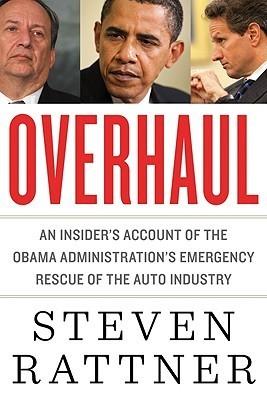
Overhaul: An Insider's Account of the Obama Administration's Emergency Rescue of the Auto Industry
by
Steven Rattner
Published 19 Sep 2010
She was a lawyer from Kansas who, like Ben Bernanke, was a Bush administration appointee. Like Bernanke, she had also been an academic, though of lesser distinction. Unlike Bernanke, she was a politician too—in 1990 she'd lost a Republican congressional primary in her home state. Bair made her mark at the FDIC as an articulate early advocate of forceful action in the subprime mortgage crisis. At a time when the Bush administration was still wedded to its free-market, noninterventionist stance, she stood her ground. In 2008 Forbes named her the second most powerful woman in the world after German Chancellor Angela Merkel. A few pundits even touted her as a possible Treasury secretary for President Obama.
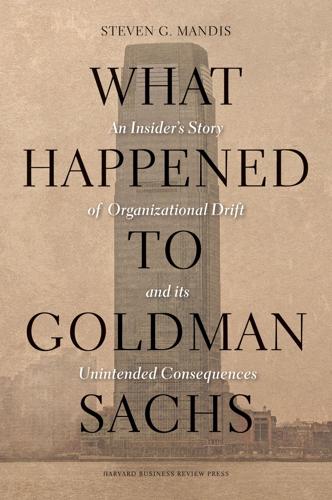
What Happened to Goldman Sachs: An Insider's Story of Organizational Drift and Its Unintended Consequences
by
Steven G. Mandis
Published 9 Sep 2013
Matt Taibbi publishes a scathing article on Goldman in Rolling Stone, which includes the often-quoted “vampire squid” analogy.4 A Goldman subsidiary settles with the SEC for $1.2 million over improper proprietary trading by employees. The SEC charges a former Goldman trader and his brother with insider trading based on information the trader obtained while at Goldman (R). The Massachusetts attorney general announces a $60 million settlement with Goldman over the alleged role the investment bank played in the subprime mortgage crisis (R). Goldman, among others, created a credit default swap index to cover the high risk of Greece’s national debt. The firm is reported to have systematically helped the Greek government disguise the true facts concerning its national debt between 1998 and 2009. 2010: Goldman reports a record profit of $13.39 billion for 2009.
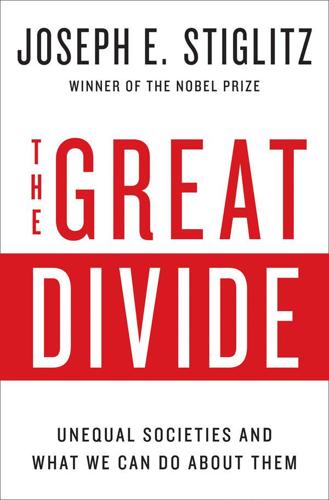
The Great Divide: Unequal Societies and What We Can Do About Them
by
Joseph E. Stiglitz
Published 15 Mar 2015
JUSTICE FOR SOME* THE MORTGAGE DEBACLE IN THE UNITED STATES HAS raised deep questions about “the rule of law,” the universally accepted hallmark of an advanced, civilized society. The rule of law is supposed to protect the weak against the strong, and ensure that everyone is treated fairly. In America in the wake of the subprime mortgage crisis, it has done neither. Part of the rule of law is security of property rights—if you owe money on your house, for example, the bank can’t simply take it away without following the prescribed legal process. But in recent weeks and months, Americans have seen several instances in which individuals have been dispossessed of their houses even when they have no debts.
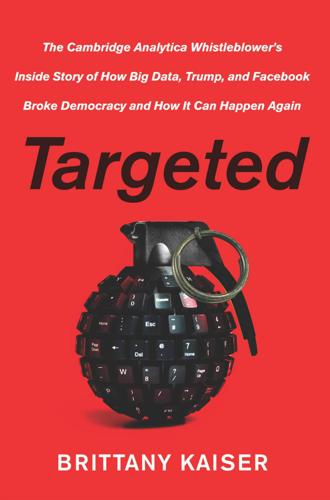
Targeted: The Cambridge Analytica Whistleblower's Inside Story of How Big Data, Trump, and Facebook Broke Democracy and How It Can Happen Again
by
Brittany Kaiser
Published 21 Oct 2019
For many years, my father’s family owned commercial real estate and a string of upscale health clubs and spas; my mother had been able to stay home to raise her children herself; and my younger sister, Natalie, and I had grown up in a privileged upper-middle-class household, enjoying a private school education, dance and music lessons, and family trips to Disney World and Caribbean beaches. But when the subprime mortgage crisis hit in 2008, my father’s family businesses suffered. A number of other problems occurred, and these, too, had been out of my parents’ control. Soon, we had no savings left. Years before, my mother had been an employee at Enron, and when that Houston house of cards collapsed in 2001, she lost all her retirement money.
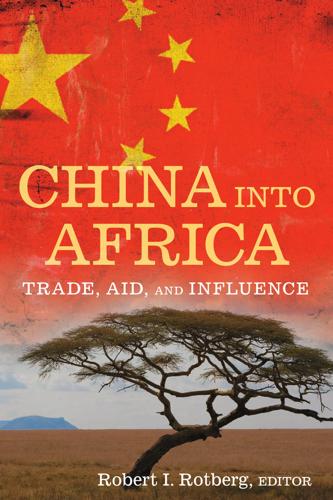
China into Africa: trade, aid, and influence
by
Robert I. Rotberg
Published 15 Nov 2008
Lifting millions of Chinese out of poverty offers a powerful guiding example, as does China’s rapid achievement of political stability and international prominence. “Such a national narrative,” writes Chin-Hao Huang, “resonates powerfully in Africa” (see page 298). By mid-2008, the Chinese model was looking even better, given the disarray in U.S. financial markets, the subprime mortgage crisis, and the dollar’s unchecked depreciation. Moreover, China was growing, the U.S. economy stagnating. China seemed “galled” by American attitudes.2 China’s goals are ideological as well as material. In addition to gaining sovereign control over stable supplies of primary goods, China wants to marginalize Taiwan’s engagement with Africa (four African countries still recognize Taiwan; Malawi switched its allegiance to China early in 2008).
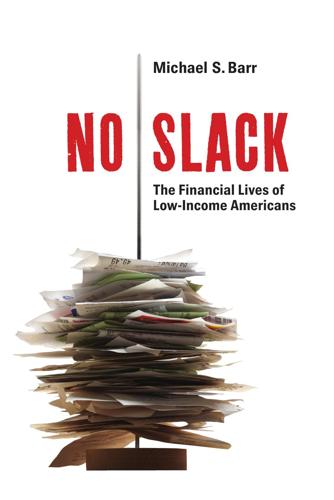
No Slack: The Financial Lives of Low-Income Americans
by
Michael S. Barr
Published 20 Mar 2012
Thus if brokers are required to tell a borrower that they work in their own interest, not in the interest of the borrower, the borrower’s trust in the broker may increase: after all, the broker is 12864-11_CH11_3rdPgs.indd 265 3/23/12 11:57 AM 266 michael s. barr, sendhil mullainathan, and eldar shafir being honest! Moreover, evidence from the subprime-mortgage crisis suggests that while in theory creditors and investors have some incentives to monitor brokers, they do not do so effectively. It is possible to undertake an array of structural changes regarding the brokerborrower relationship. For example, one could directly regulate mortgage brokers through licensing and registration requirements.

Fodor's Normandy, Brittany & the Best of the North With Paris
by
Fodor's
Published 18 Apr 2011
But long criticized for maintaining a socialist economy out of step with the modern world, France found itself on the rare receiving end of praise for an economic model that helped the country weather the worldwide downturn more gently than its Anglo-American rivals. France-bashers were caught short as the economy they love to scorn enjoyed a slightly higher rate of growth coming out of the recession than other developed countries. With banks tightly regulated, French homeowners were spared an equivalent of the U.S. subprime mortgage crisis. Experts credited France for its long-term formula of economic fairness, with a less-pronounced gap between rich and poor than in other countries. Education is inexpensive; and the health care system, often called the world’s best, is available to all. President Sarkozy even floated the idea, however briefly, of adopting a happiness index to replace traditional measures of progress, taking into account quality of life factors.
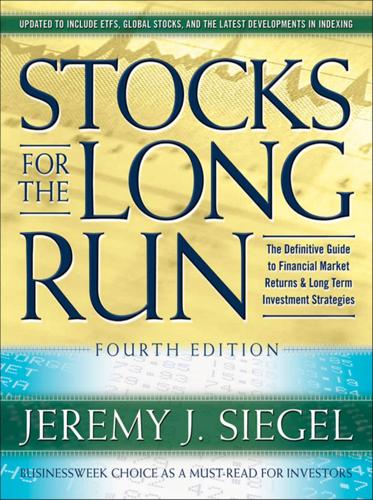
Stocks for the Long Run, 4th Edition: The Definitive Guide to Financial Market Returns & Long Term Investment Strategies
by
Jeremy J. Siegel
Published 18 Dec 2007
The unexpected one-half-point cut in the funds rate from 6.5 to 6 percent that took place on January 3, 2001, sent the S&P 500 Index up 5 percent and the tech-heavy Nasdaq up an all-time record 14.2 percent. A smaller, but still substantial response met the Fed’s decision to lower the discount rate on August 17, 2007, during the subprime mortgage crisis. The only case in which stocks will react poorly is if the central bank eases excessively, so that the market fears an increase in inflation. But if the central bank eases excessively, an investor would prefer to be in stocks than bonds, as fixed-income assets are hurt more than stocks by unexpected inflation.
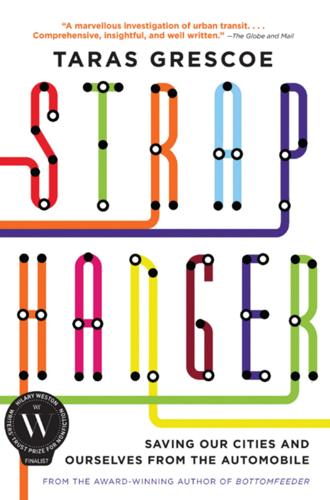
Straphanger
by
Taras Grescoe
Published 8 Sep 2011
East Portland, Cleveland’s Shaker Heights, Berkeley’s Ashby Station, Calgary’s Hillhurst, Boston’s Roxbury, and Washington, D.C.’s Anacostia (which is now being gentrified by middle-class African American professionals) are all classic streetcar suburbs, with highly walkable streets.* Even Phoenix has the F. Q. Story neighborhood, which was served by the city’s small prewar streetcar network, and is one of the few parts of the city whose houses have held their value since the subprime mortgage crisis. Planners who aim to foster transit-oriented living would do well to focus on such districts, which tend to have a higher tolerance for density than later suburbs. Philadelphia is in an excellent position to profit from the coming urban renaissance. It has great structure, it has great neighborhoods like Society Hill, the River Wards, and West Philadelphia, and it has SEPTA, which, in spite of its shortcomings, is well placed to offer exceptional service and coverage.
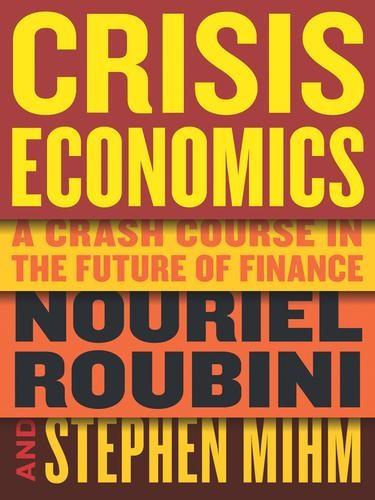
Crisis Economics: A Crash Course in the Future of Finance
by
Nouriel Roubini
and
Stephen Mihm
Published 10 May 2010
Even worse, crises have toppled governments and bankrupted nations; they have driven countries to wage retaliatory trade battles. Crises have even paved the way for wars, much as the Great Depression helped set the stage for World War II. Ignoring them is not an option. Creatures of Habit Early in 2007, when signs of a looming housing and subprime mortgage crisis in the United States appeared on the horizon, the initial reaction was disbelief and denial. In March, Federal Reserve chairman Ben Bernanke confidently told Congress, “At this juncture, however, the impact on the broader economy and financial markets of the problems in the subprime market seems likely to be contained.”
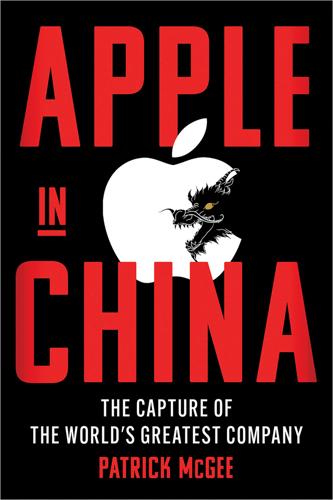
Apple in China: The Capture of the World's Greatest Company
by
Patrick McGee
Published 13 May 2025
Gou emphasized that the new factories would have a larger mix of older workers who could mentor and comfort the young. At times Gou was apt to frame the shift as being less about his own motivations and more about alleviating pain points suffered by Apple. In early 2010, America was still in the wake of the subprime mortgage crisis, with near double-digit unemployment. But China was experiencing the opposite problem: labor shortages. Unskilled workers were being offered signing bonuses as factory wages shot up 20 percent in just a matter of months. Some manufacturers were weeks behind schedule and short of hands. Production lines were closing and factories were looking at hiking prices, which would have heightened inflation in the United States just as the country emerged from recession.
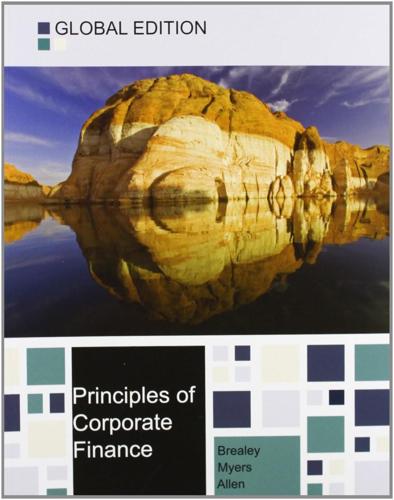
Principles of Corporate Finance
by
Richard A. Brealey
,
Stewart C. Myers
and
Franklin Allen
Published 15 Feb 2014
Because short-term assets and liabilities are easily changed, measures of liquidity can rapidly become outdated. You might not know what the catalytic cracker is worth, but you can be fairly sure that it won’t disappear overnight. Cash in the bank can disappear in seconds. Also, assets that seem liquid sometimes have a nasty habit of becoming illiquid. This happened during the subprime mortgage crisis in 2007. Some financial institutions had set up funds known as structured investment vehicles (SIVs) that issued short-term debt backed by residential mortgages. As mortgage default rates began to climb, the market in this debt dried up and dealers became very reluctant to quote a price.
…
E., 857 Administrative costs in leasing, 641 in pooling risks, 663 Adverse selection risk, 663 Agency costs, 12 Agency for International Development, 794n Agency problem, 295–314, 862–863, 882–883 agents versus principals, 12 compensation plans, 295–314 costs, 12, 298–300, 462–464, 623 monitoring, 298–300 Ponzi schemes, 11–12 reducing agency costs, 623 risk management and, 660, 661–662 risk taking and, 297–298 subprime mortgage crisis, 297–298, 300–301, 335–336, 366–367, 588–589, 886, 888, 889 transparency and, 875–876 Agency theory, 862–863 Agent, 12 Aggarwal, R. K., 314, 845n Aghion, P., 854n Agrawal, A., 826n Agrawal, D., 594n Aguirreamalloa, J., 184 AIG, 51, 366, 512, 589 Airbus, 573–575 Air France-KLM, 298 Aivasian, V., 470n Alcoa, 387, 727 Allayanis, G., 713 Allen, Franklin, 336n, 369, 421, 443, 765, 860n, 874n, 875n, 878, 883, 885n, 889n Allen, J., 857 Allen, L., 603 Allied Crude Vegetable Oil Refining Corporation, 627 Allied Irish Bank, 367 Allman-Ward, M., 799 Allocated overhead, in net present value analysis, 135 All-or-none underwriting, 379n Alpha, 325 Alpine bonds, 616 Alternative minimum tax (AMT), 141–142, 642 Altinkilic, O., 387n Altman, Edward I., 458n, 598n, 603, 839n, 857 Amazon, 401, 778–779 American Airlines (AMR), 358, 588, 594–595, 641–642, 851 American Greetings, 387 American International Group (AIG), 51, 366, 512, 589 American Jobs Creation Act (JOBS) of 2004, 652n American options, 513, 520n, 539n, 552–554 American Stores, 65 Amortization, 31, 734n AMR (American Airlines), 358, 588, 594–595, 641–642, 851 Amran, M., 579, 580 AMT (alternative minimum tax), 141–142, 642 Anders, C., 838n Andrade, G., 458, 458n, 820, 820n, 827, 827n, 829, 830 Angel investors, 373 Anglo-Irish Bank, 845n Anglo-Saxon financial system, 721, 827, 860–864, 869 Annual coupon, 46–47 Annual percentage rate (APR), 35–38 Annually compounded rate, 46–47 Annuities, 27–34.
…
E., 573n, 574n Stored-value cards, 789 Straight-line depreciation, 137, 142, 642 Stretching payables, 756, 758 Stripped bonds (strips), 55–56, 61 Stromberg, P., 374n, 855n, 857 Strong form of market efficiency, 325, 326–327 Structured investment vehicles (SIVs), 735 Stulz, R. M., 387n, 684, 709n, 750n Subordinated debt, 357 Subprime mortgage crisis, 297–298, 300–301, 335–336, 366–367, 588–589, 886, 888, 889 Sufi, A., 624n, 626n Sumitomo Bank, 875 Summit Bancorp, 812 Sundaresan, A., 70 Sundgren, S., 855n SunGard, 848 Sunk costs, in net present value analysis, 135 SunTrust Banks, 65 Supermajority, 353, 826 Surplus funds, in mergers, 810–811 Sussman, O., 458n Sustainable growth rate, 766 Swaminathan, B., 404n Swaps, 673–677 credit default, 588–589 currency, 675–676 interest rate, 673–675 total return, 676–677 Swap trades, 695n Swatch Group, 5, 705, 706 Sweep programs, 788 Swiss Bank Corp., 812 Swiss Re, 706 Switzerland foreign bonds in, 616 transaction/economic exposure in, 705–706 voting rights in, 353, 354 Syndicated loans, 625–626 Synergy, 809 Syngenta, 810 Synthes, 806 Systematic risk.

The Man Who Knew: The Life and Times of Alan Greenspan
by
Sebastian Mallaby
Published 10 Oct 2016
“I do have an ideology,” Greenspan had once said. “My judgment is that free, competitive markets are by far the unrivaled way to organize economies. We have tried regulation, none meaningfully worked.” “That was your quote,” Waxman declared fiercely. “You had the authority to prevent irresponsible lending practices that led to the subprime mortgage crisis. You were advised to do so by many others. And now our whole economy is paying the price. Do you feel that your ideology pushed you to make decisions that you wish you had not made?” Waxman’s windup had combined an exaggeration of the Fed’s power to enforce lending standards at nonbanks; an exaggeration of the force with which Edward Gramlich had spoken; and an exaggeration of the link between reckless mortgage lending and the collapse of leveraged finance.
…
Pat Bagley, “Greenspan Speaks,” Cartoon, September 19, 2007, Salt Lake Tribune, http://www.politicalcartoons.com/cartoon/095ce19a-2e00-465f-b9f5-31b3484d6aa2.html. 15. Tribune Media Services, “Celebrity News,” Baltimore Sun, October 15, 2007, http://articles.baltimoresun.com/2007-10-15/features/0710150171_1_barbara-walters-rosie-barbra-streisand. 16. “Subprime Mortgage Crisis,” University of North Carolina–Chapel Hill, 2012, http://www.stat.unc.edu/faculty/cji/fys/2012/Subprime%20mortgage%20crisis.pdf. 17. This was the view of Governor Rick Mishkin, for example. 18. Alan Greenspan, The Age of Turbulence: Adventures in a New World (New York: Penguin Books, 2008), Kindle locations 4161–68 and 4187–88. 19.
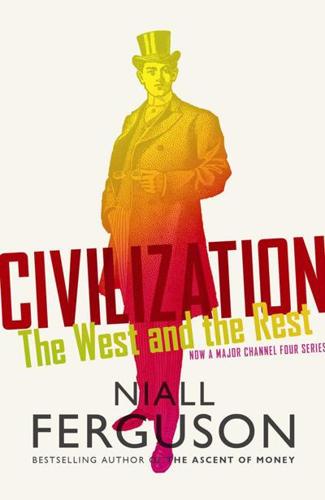
Civilization: The West and the Rest
by
Niall Ferguson
Published 28 Feb 2011
Nemesis came first in the backstreets of Sadr City and the fields of Helmand, which exposed not only the limits of American military might but also, more importantly, the naivety of neo-conservative visions of a democratic wave in the Greater Middle East. It struck a second time with the escalation of the subprime mortgage crisis of 2007 into the credit crunch of 2008 and finally the ‘great recession’ of 2009. After the bankruptcy of Lehman Brothers, the sham verities of the ‘Washington Consensus’ and the ‘Great Moderation’ – the central bankers’ equivalent of the ‘End of History’ – were consigned to oblivion. A second Great Depression for a time seemed terrifyingly possible.
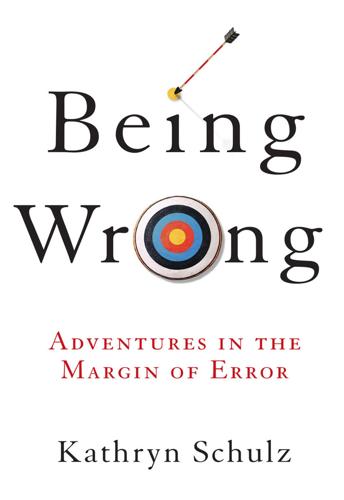
Being Wrong: Adventures in the Margin of Error
by
Kathryn Schulz
Published 7 Jun 2010
When the book came out, in the summer of 2007—right around the time when the financial fault lines began to tremble—it topped both the New York Times and the Amazon.com bestseller lists. By October 23, though, all that was in the past. The economy had been in bad shape for over a year, and in the spring of 2008, with the collapse of the global investment giant Bear Stearns, it had entered a virtual freefall. What began as a subprime mortgage crisis (triggered by the now-infamous practice of offering mortgages to people with limited or troubled credit histories) had broadened into a liquidity crisis, a credit crisis, a banking crisis, a currency crisis, a trade crisis—just about every kind of economic crisis you could name. In the United States, the stock market had fallen 37 percent since the start of the year.
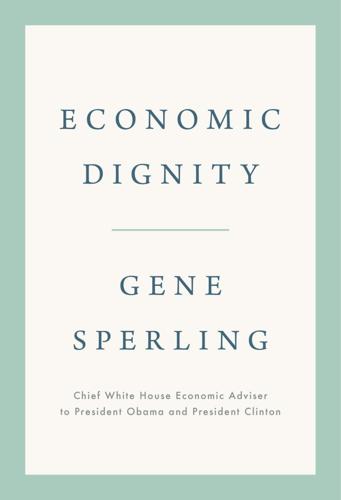
Economic Dignity
by
Gene Sperling
Published 14 Sep 2020
See workplace sexual harassment Shapiro, Carl, 115 Shared Security System, 193–94 shareholder primacy, 118–22 sheepherders, 261–62 Shell, Ellen Ruppel, 275–76 Sherman Act of 1890, 23 Shierholz, Heidi, 265 Shih, Willy, 140 Sides, John, 292 Silva, Jennifer, 287 “silver or lead,” 72, 116, 117 single-payer health care, 100–101, 102–3, 106 Sitaraman, Ganesh, 45–46, 104–5 Skills For Chicagoland’s Future, 213–14 skills and labor markets, 269–71, 281–84 skills gap debate, 270–71 skills training, 281–84 slavery, 18, 63, 67, 82–83, 260–61, 284, 293 Smith, Adam, 107, 173 Smith, Jeanetta, 93–94 SNAP (Supplemental Nutrition Assistance Program), 91, 92–93, 187–88, 190, 329n Snellman, Kaisa, 287 Snyder, Jack, 294 Social Darwinism, 90–91 socialism, 103, 106 Social Security, 23–24, 159–60, 161, 174, 188, 189, 200–201 Social Security Act of 1935, 24, 73 Social Security Caregiver Credit Act of 2019, 328n Social Security Disability Insurance (SSDI), 91, 93–94, 198–200, 336n Sparling, Dara and Rob, 195–96 Sperling, Doris, 149, 216 Sperling, Larry, 31 Sperling, Rick, 217, 287 Sprung-Keyser, Ben, 285 Stack-Martinez, Rebecca, 252 “stakeholder test,” 119–20 stakeholder theory, 119, 281 Standard Oil, 71–72 Stanton, Elizabeth Cady, 15 static economies, 130–31 status quo policies, 8, 131–34 stealing tips, 264–65 Steinbaum, Marshall, 278 STEM (Science, Technology, Engineering and Mathematics) majors, 280–81 Stephanopoulos, George, 239 Stern, Andy, 187, 205 Stewart, Potter, 11 Stiglitz, Joseph, 8, 104, 136, 146, 247 Stout, Lynn, 119 Strine, Leo, 119–20 student loan debt, 97–98, 274–75, 276 subprime mortgage crisis, 109, 112 Summers, Lawrence, 220–21 summer school activities, 286–88 Sunstein, Cass, 135, 158 Supplemental Nutrition Assistance Program. See SNAP Supplemental Poverty Measure, 8 Supplemental Security Income, 188 Sweden, 254, 294 job security councils, 95–96, 142, 282 start-ups, 98 unemployment benefits, 50 Sykes, Jennifer, 180 Tach, Laura, 180 “Take This Job and Shove It” (song), 243–44, 265 “take this job and shove it” power, 243, 265–68 Take Your Child to Work Day, 234 TANF (Temporary Assistance for Needy Families), 91 Tanner, Michael, 333n Tarbell, Ida, 71–72, 84, 116 Tax Cuts and Jobs Act of 2017, 124–25, 168 tax havens, 123–25, 202 tax policy, 122–26.

Adaptive Markets: Financial Evolution at the Speed of Thought
by
Andrew W. Lo
Published 3 Apr 2017
In financial lingo, this was a “crowded trade,” a reference to the dangers of a crowded theater with too few exits. 1998 VERSUS 2007 What made this crowded trade so shocking was the fact that it had come from nowhere and affected portfolios that consisted primarily of exchange-traded instruments—rather boring but normally easily tradable stocks. We knew that many large financial institutions were being hit with losses related to the subprime mortgage crisis, but those losses were mainly in bonds and other credit-related instruments. What did they have to do with statarb? To answer this question, Amir and I ran one more simulation of our mean-reversion strategy, this time using data from August 1998 when the global financial system was experiencing a similar credit crisis.
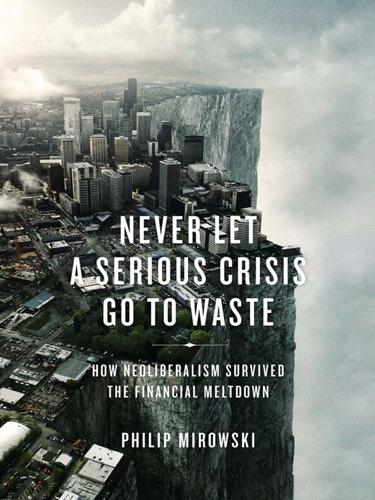
Never Let a Serious Crisis Go to Waste: How Neoliberalism Survived the Financial Meltdown
by
Philip Mirowski
Published 24 Jun 2013
Bernanke resisted most attempts to financially penalize banks or hedge funds, with the excuse that they were too fragile to face the music. The Fed’s ability to even anticipate contractions had been persistently addled, dating from the onset of the crisis, as demonstrated in Figure 4.5. His grasp on reality has been tenuous: Bernanke himself had insisted that the subprime mortgage crisis was “contained” as late as March 2007.60 Incredibly, in the face of the mayhem that ensued, Bernanke’s Fed has evaded suffering any consequences for its intellectual incompetence; it still does pretty much whatever it pleases, including continued deregulation of the shadow banking sector and frustrating Elizabeth Warren’s crusade to set up a fully independent consumer finance protection bureau; and yet, even that Great Bank Amnesty was not enough for Ben Bernanke.

Aftershocks: Pandemic Politics and the End of the Old International Order
by
Colin Kahl
and
Thomas Wright
Published 23 Aug 2021
The liberalization of China’s and India’s economies, followed by the end of the Cold War and the collapse of the Soviet Union, then triggered a massive acceleration of globalization. Free markets, free trade, and free flows of information took off like a rocket, increasingly fueled by the internet and other emerging digital technologies. In 2008, the trade openness index stood at 61.1 percent. Then the subprime mortgage crisis hit, and the ensuing global financial crash created the first reversal in globalization in more than seven decades. The ratio of trade flows to global output began to decline, and by the time Donald Trump walked into the Oval Office in 2017, the trade openness index was down to 53.5 percent.9 Of course, trade is only one metric of globalization.
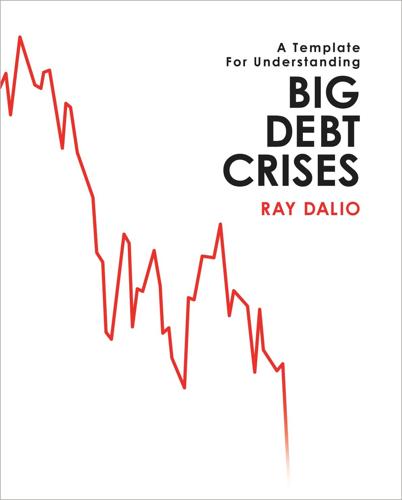
Big Debt Crises
by
Ray Dalio
Published 9 Sep 2018
Morgan Chase, Bank of America and Wachovia — said that they each borrowed $500 million through the so-called discount window by taking out loans directly from the Fed.” –New York Times August 31, 2007 Bush Offers Relief for Some on Home Loans “President Bush, in his first response to families hit by the subprime mortgage crisis, announced several steps today to help Americans who have credit problems meet the rising cost of their housing loans. In remarks this morning at the White House, Mr. Bush said he would work to ‘modernize and improve’ the Federal Housing Administration ‘by lowering down payment requirements, by increasing loan limits, and providing more flexibility in pricing.’

The Making of Global Capitalism
by
Leo Panitch
and
Sam Gindin
Published 8 Oct 2012
The apparent guarantee of forever-rising housing prices led to an increase in the share of consumption financed in this way—from 1.1 percent in the 1990s to 3 percent in 2000–05 (with a similar trend occurring in the growth of investments in “home improvements”).20 It is significant that this went so far as to include poor African-American communities, so long the Achilles heel of working-class integration into the American Dream. The roots of the subprime mortgage crisis thus lay in the way the anti-inflation commitment had since the 1970s ruled out the public expenditures that would have been required just to start addressing the crisis of inadequate housing in US cities. As we saw earlier, a key factor in the steady expansion of Americans’ consumer and mortgage debt since the 1970s had been reformers’ faith that private finance could be used by the state in the public interest—in other words, that financial institutions could be so regulated and reformed as to ensure their functioning in the interest of social groups that they had hitherto excluded.

Money Changes Everything: How Finance Made Civilization Possible
by
William N. Goetzmann
Published 11 Apr 2016
See also capital markets; equity investments; financial crises; options; stock market, US stock options, 171 stocks: bonds compared to, 470–73, 474, 509; Fisher as advocate of, 471–72; Ibbotson and Sinquefield’s case for, 508–9. See also equity investments; mutual funds Stolper, Matthew, 65 The Stones of Venice (Ruskin), 221, 223 Stora-Enso, 303–4 Strachey, Lytton, 463 Straus Company. See S. W. Straus & Co. structured investment vehicles, 385–86 Suanshu shu, 163–64, 243 subprime mortgages: crisis of 2008 and, 385. See also mortgage-backed securities subscription for shares. See share subscriptions Suez Canal, 402, 419–21, 422 Sui dynasty (late sixth century CE), 175 Sulla, 125 Sulpicii banking family, 114, 116, 117–18, 119, 120 Sumerians, 21; economic model of, 25; Enmetena cone and, 16, 35–37; financial tools of, 29–30; longdistance trade by, 21, 25, 27, 59; origin of interest and, 44; personal loans among, 41; time model of, 28–29.
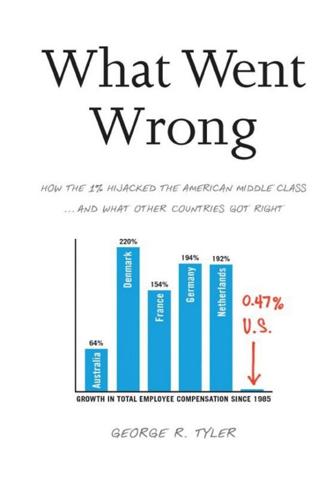
What Went Wrong: How the 1% Hijacked the American Middle Class . . . And What Other Countries Got Right
by
George R. Tyler
Published 15 Jul 2013
The tactic saved Amazon €1 million in wages just in that one German state alone that year.92 Section 3 THE RESULTS CHAPTER 13 WAGES RISE IN FAMILY CAPITALISM “If we are able to grow, as our German friends, the productivity of our economy, then of course we must increase wages.”1 CHRISTINE LAGARDE, Former Economic Minister, France Managing Director, International Monetary Fund “The share of every dollar of value added to the US economy going to American workers has also fallen to a record low of 57.1 cents in the US dollar, down from more than 62 cents before the subprime mortgage crisis, and well below an average of 63.9 cents in the previous century.”2 MALCOLM MAIDEN, Sydney Morning Herald December 14, 2011 “Europe is often held up as a cautionary tale, a demonstration that if you try to make the economy less brutal, to take better care of your fellow citizens when they’re down on their luck, you end up killing economic progress.
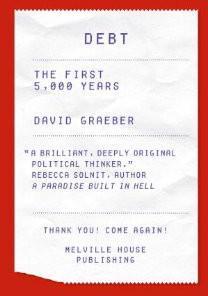
Debt: The First 5,000 Years
by
David Graeber
Published 1 Jan 2010
Here too, aspects of economic life that had been based on longstanding relations of trust were, through the intrusion of credit bureaucracies, becoming effectively criminalized. Within another decade, the entire project—even in South Asia, where it began—began to appear suspiciously similar to the U.S. subprime mortgage crisis: all sorts of unscrupulous lenders piled in, all sorts of deceptive financial appraisals were passed off to investors, interest accumulated, borrowers tried to collectively refuse payment, lenders began sending in goons to seize what little wealth they had (corrugated tin roofs, for example), and the end result has been an epidemic of suicides by poor farmers caught in traps from which their families could never, possibly, escape.34 Just as in the 1945–1975 cycle, this new one culminated in another crisis of inclusion.
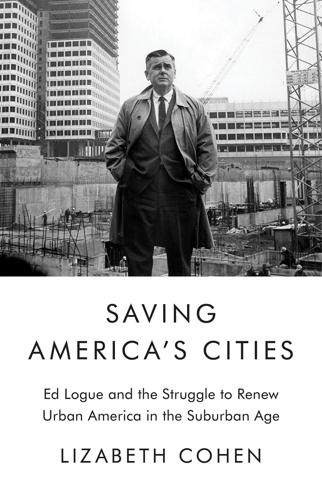
Saving America's Cities: Ed Logue and the Struggle to Renew Urban America in the Suburban Age
by
Lizabeth Cohen
Published 30 Sep 2019
Lassoing the private market to subsidize homeownership for lower-income, particularly minority, families was just Logue’s latest approach, and one that would reverberate in President Clinton’s National Homeownership Strategy of the 1990s and President George W. Bush’s Ownership Society of the early 2000s—culminating in the overreach that produced the 2008 subprime mortgage crisis.125 Logue left the South Bronx in January 1985 a humbler urban redeveloper than he’d been earlier in his career: more modest and incremental in his goals, more collaborative in how he achieved them, and more realistic about what was now possible. He was surely frustrated with the glaring limitations in what he could achieve but was never apologetic, self-pitying, or defeatist.

Accessory to War: The Unspoken Alliance Between Astrophysics and the Military
by
Neil Degrasse Tyson
and
Avis Lang
Published 10 Sep 2018
“This transit will have a devastating, nearly depressing, effect on those severely affected by the downturn in the housing market nationwide.” In addition, Saturn would be “rising in sunrise diurnal charts, and will be Lord of the months of October & November, with continuing strong influences into December 2007.” The latter’s transit near the South Lunar Node pointed to the subprime mortgage crisis “crystalliz[ing] into a major call for regulation throughout the economic climate of the United States.”40 After-the-fact revelations are easy to come by when you consult the nearly limitless number of cyclic phenomena. It’s not hard to find one that matches your needs or expectations. There’s the eleven-year sunspot cycle, the twenty-six-month cycle of Earth and Mars in space, the 18.6-year cycle of lunar eclipses.
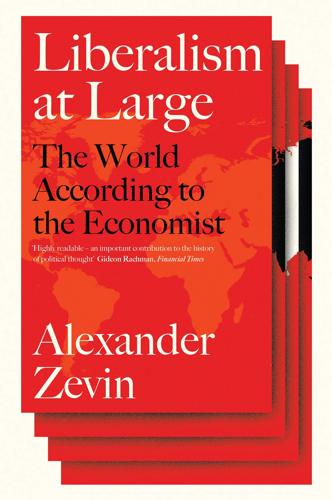
Liberalism at Large: The World According to the Economist
by
Alex Zevin
Published 12 Nov 2019
Citibank signed an agreement with 7-Eleven to put cash machines in 5,500 stores, while credit card companies ‘targeted the unbanked and under-banked’ – poor minorities and immigrants, who stood to gain from access to cheaper credit. (Banks anticipated culling $9 billion in fees from them, and that was ‘before any cross-selling of other products’.) The subprime mortgage crisis hit the next year. Among the community banks Emmott cited as paragons, just one limped into 2012.50 Yet the crash barely checked his stride. In 2008 ‘Crisis, What Crisis? Enough Kerfuffle, It’s Just a Slowdown’ appeared in the Guardian. Five months went by before a retraction, and as the title suggests, this was no standard mea culpa: ‘I Wasn’t Right.
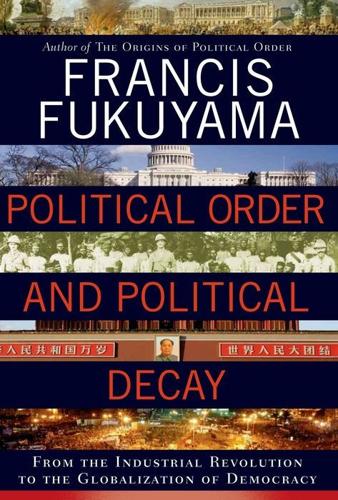
Political Order and Political Decay: From the Industrial Revolution to the Globalization of Democracy
by
Francis Fukuyama
Published 29 Sep 2014
Prior to the financial crisis of 2008, there were nearly a dozen federal agencies with regulatory authority over financial institutions, as well as banking and insurance regulators in each of the fifty states. For all of this regulation, however, the U.S. government was nonetheless unaware of the looming subprime mortgage crisis, allowing the banks to take on excessive leverage and permitting the emergence of a huge shadow banking system built around derivatives that were far too complex to properly value. Some commentators have tried to blame the crisis exclusively on government-guaranteed mortgages from agencies like Fannie Mae and Freddie Mac, which did in fact contribute to the meltdown.1 But the private sector was a happy participant feeding the mortgage frenzy and could take undue risks because large banks knew that they would ultimately get bailed out by the government if they got into trouble.
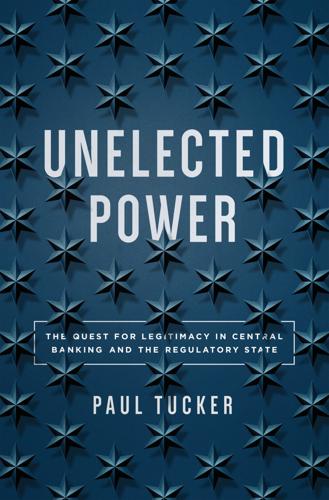
Unelected Power: The Quest for Legitimacy in Central Banking and the Regulatory State
by
Paul Tucker
Published 21 Apr 2018
The central question lurking in the background is whether the Principles for Delegation are consistent with legitimate state power in our democracies. That is the subject of part II. 1 Quoted in chapter 2 of Decker, Modern Economic Regulation, p. 24. 2 Busuioc, European Agencies. 3 On just such incentives helping to brew the US subprime mortgage crisis, see Rajan, Fault Lines, chapter 1. 4 At the time of writing, the FHFA is also the conservator for the GSEs, which collapsed during the Great Financial Crisis. 5 Gilardi, “Same, But Different”; on the path to delegated telecom regulation in Germany, see Gehring, “Consequences,” pp. 680–682.
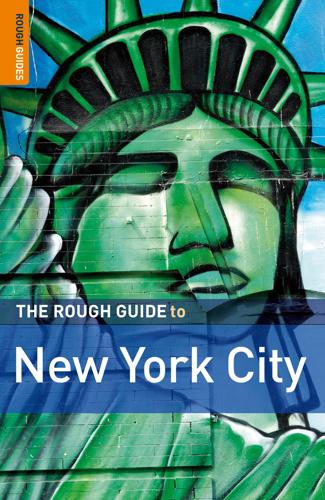
The Rough Guide to New York City
by
Martin Dunford
Published 2 Jan 2009
In 2004 Bloomberg handily won re-election to a second term, during which he signed a law banning “trans-fats” in New York restaurants, pushed through a plan to replace the city’s 13,000 taxicabs with hybrid vehicles by 2012, and proposed a congestion pricing scheme to reduce traffic in Manhattan similar to the one in London. Only the last plan has met with significant resistance, mainly from upstate legislators and outer-boroughs commuters. Not until the fall of 2007 did the economy begin to slump once more, as Wall Street registered heavy losses connected to the subprime mortgage crisis. Yet unlike previous downturns, New York’s real-estate market remained robust well into 2008, with the weak dollar – and the city’s continued cachet – attracting foreign investors like never before. For tourists and culture vultures, completion of major renovations at the Metropolitan Museum of Art and the Morgan Library came as good news, as did the opening of the New Museum of Contemporary Art on a formerly bleak stretch of Bowery.

Total Recall: My Unbelievably True Life Story
by
Arnold Schwarzenegger
and
Peter Petre
Published 30 Sep 2012
We persuaded big lenders to freeze interest rates for more than one hundred thousand home owners most at risk. We hired more than one thousand people to staff state call centers to advise mortgage holders in trouble and help people with unemployment benefits. Just before Christmas, US treasury secretary Hank Paulson visited to discuss the subprime mortgage crisis. He and I held a “town hall” meeting in Stockton, and I listened to him talk about “minimizing the spillage” of the housing downturn into the overall economy. At that point, I was still willing to describe the problem as a “hiccup” in my comments to the audience. But I had a bad feeling about it.

The Rough Guide to New York City
by
Rough Guides
Published 21 May 2018
In 2005 Bloomberg won re-election to a second term, during which he signed a law banning “trans-fats” in New York restaurants, unveiled a plan to replace the city’s thirteen thousand taxicabs with hybrid vehicles (though it later got tripped up in the court system), and proposed a congestion pricing scheme to reduce traffic in Manhattan similar to the one in London. In autumn 2007 the economy began to slump once more, as Wall Street registered heavy losses connected to the subprime mortgage crisis. The following year was a tough one for the city and some of its political figures. On Wall Street, investment banking giant Bear Stearns hit rock bottom and was bought out by JPMorgan, and later in the year Lehman Brothers declared bankruptcy. The real-estate market finally began to cave in and numerous construction projects were put on hold due to lack of funds.
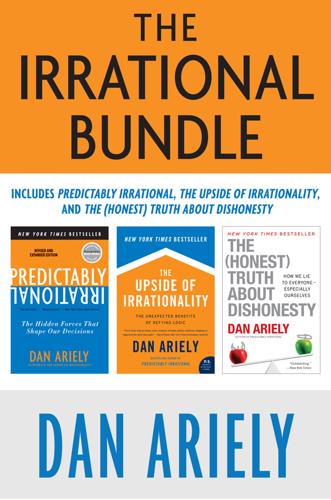
The Irrational Bundle
by
Dan Ariely
Published 3 Apr 2013
Even the Kelley Blue Book, which suggests market prices for used cars, can be thought of as a market maker because it gives buyers and sellers a starting point for negotiation. In sum, markets are an incredibly important part of the economy. Of course, markets continuously remind us that they can also fail, sometimes dramatically—as Enron demonstrated in the energy market, and as many banking institutions showed in the subprime mortgage crisis of 2008. Overall, however, markets that allow coordination among people are fundamentally beneficial. (Obviously, it would be much better if we could design markets in ways that would provide us with their benefits but not their drawbacks.) THE MARKET FOR single people is one area of life in which we have gradually moved away from a central market and into a situation in which each individual must take care of him- or herself.